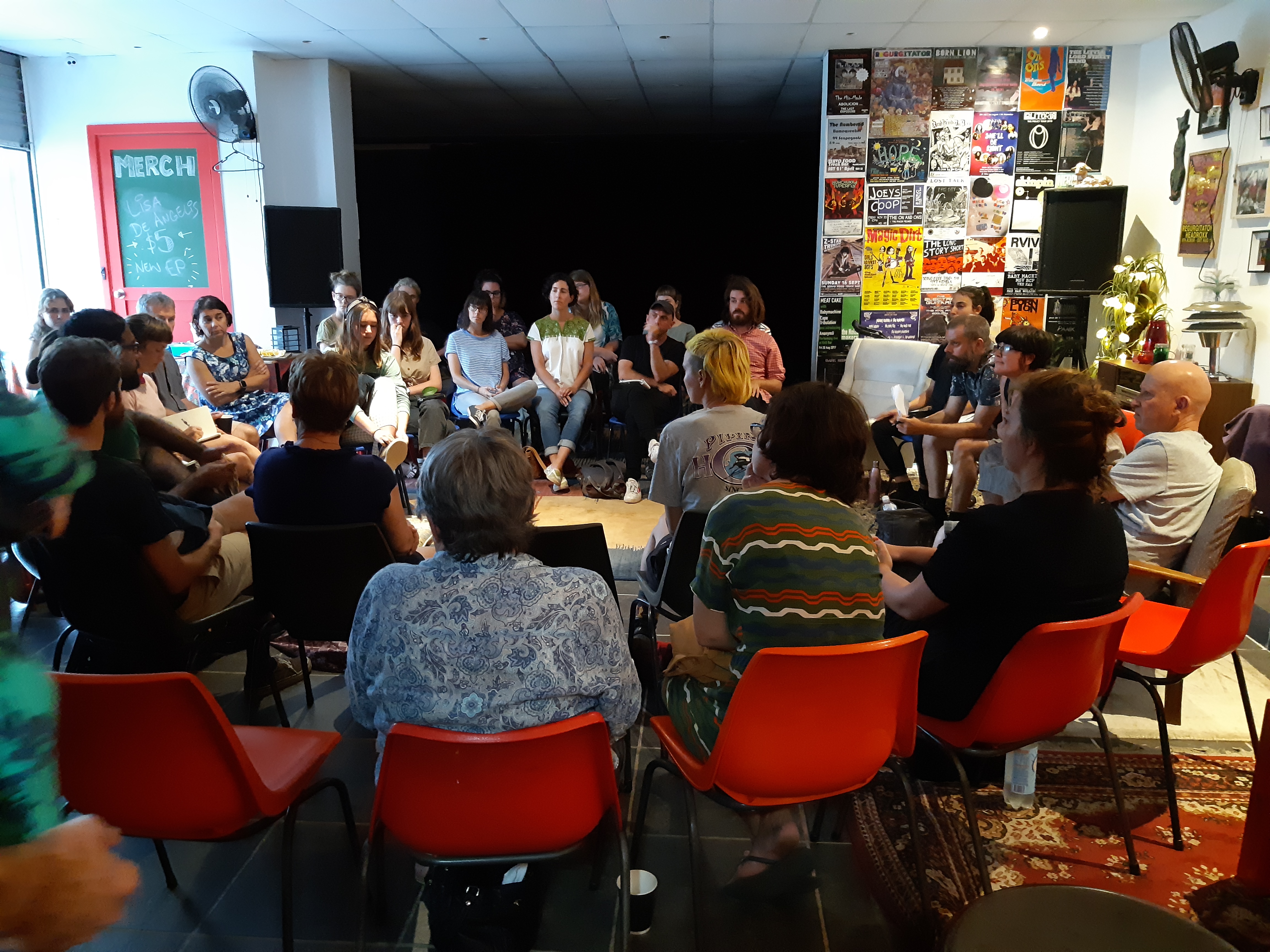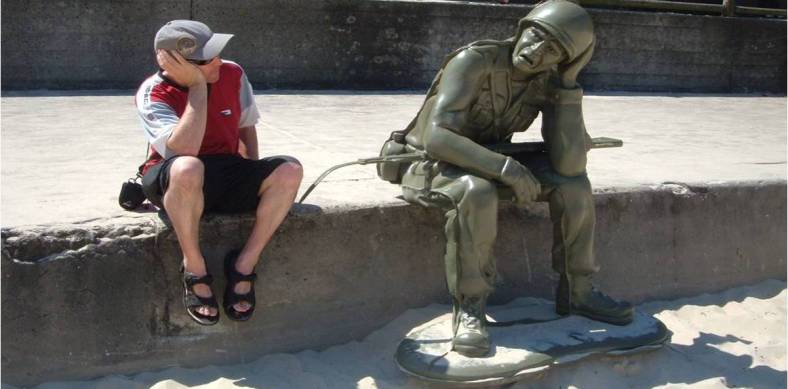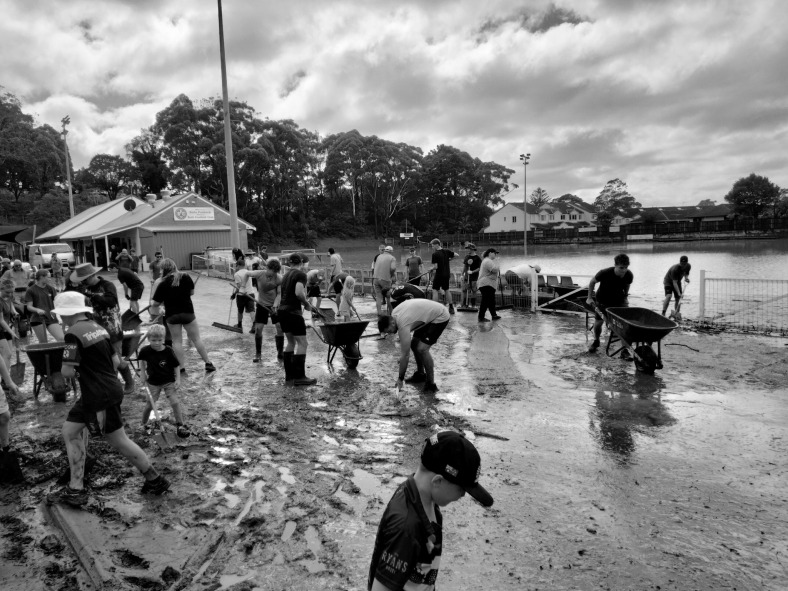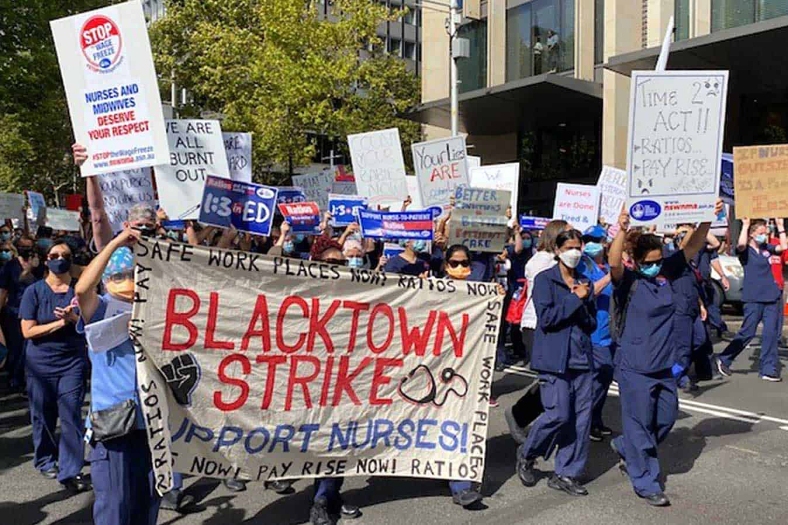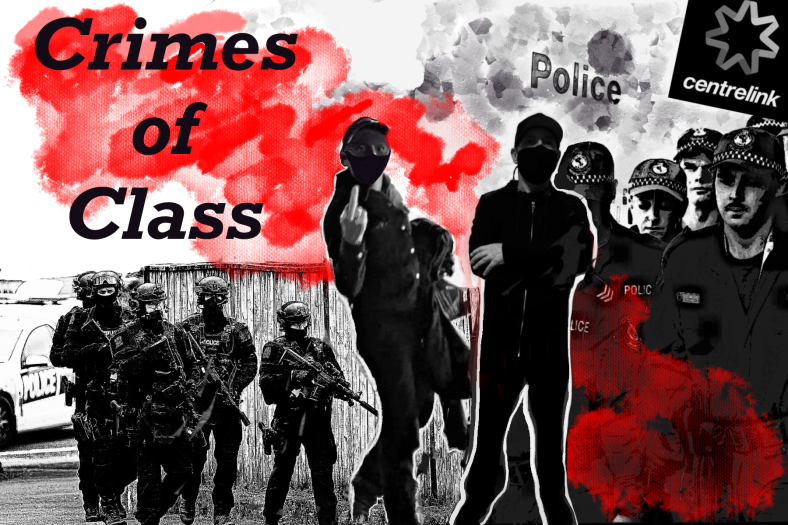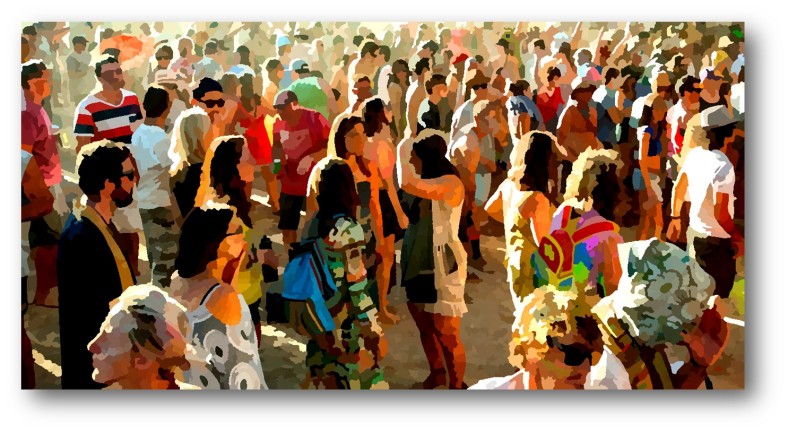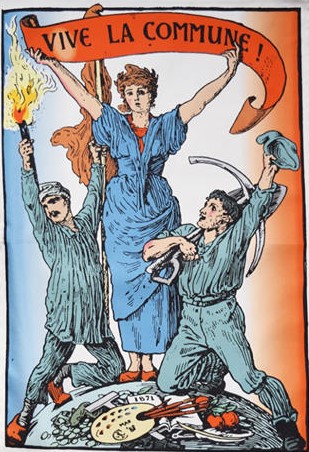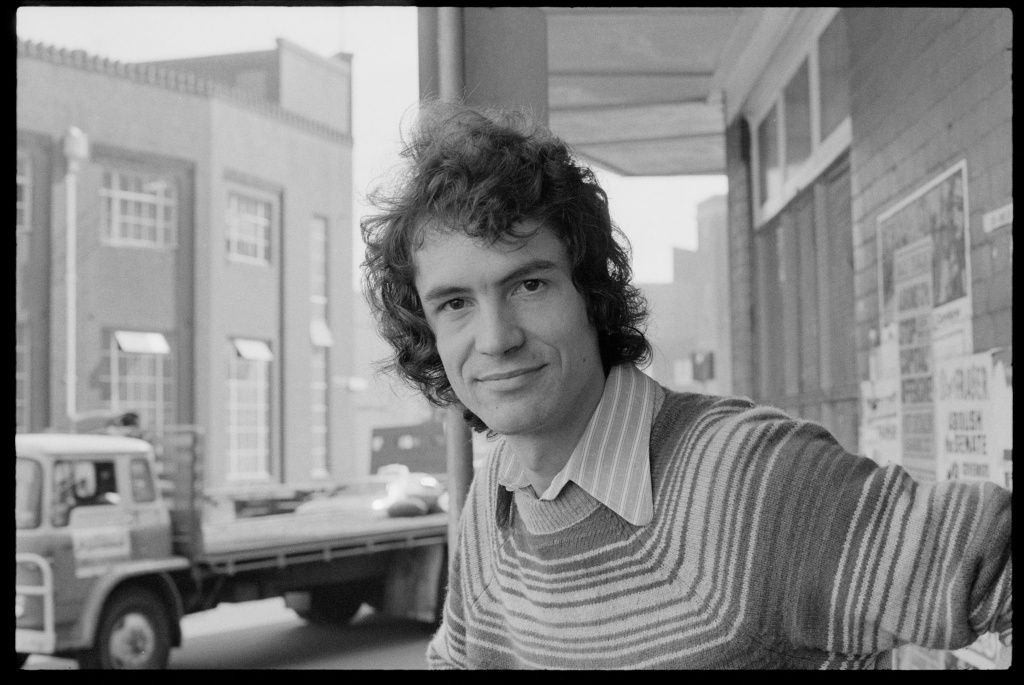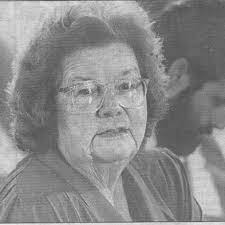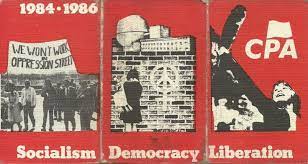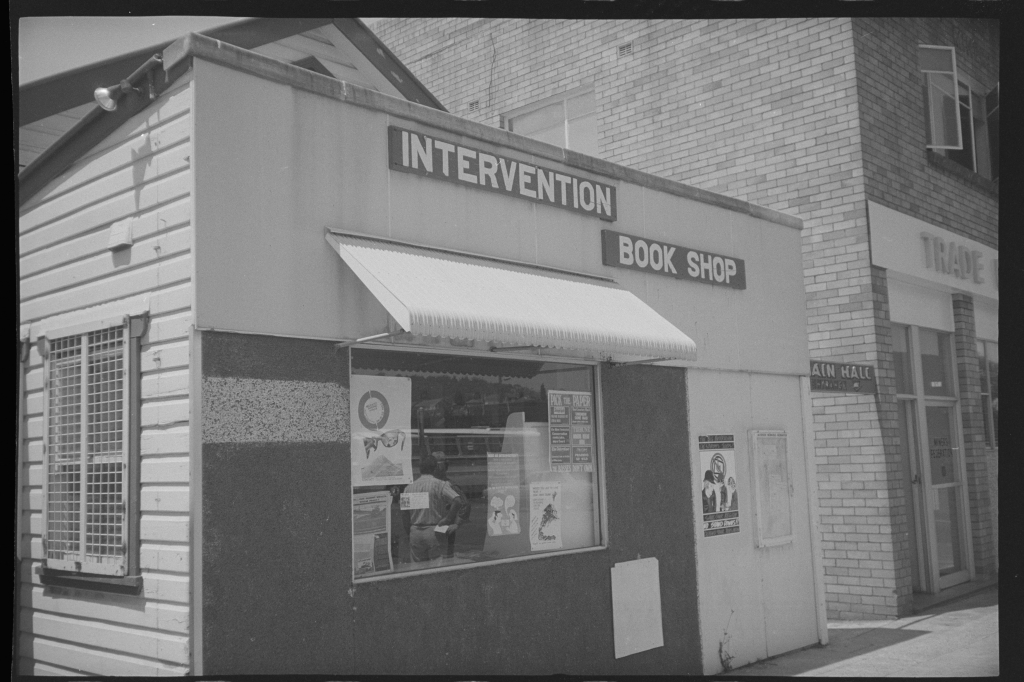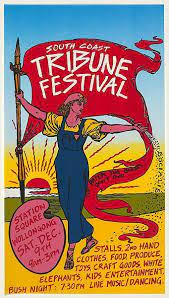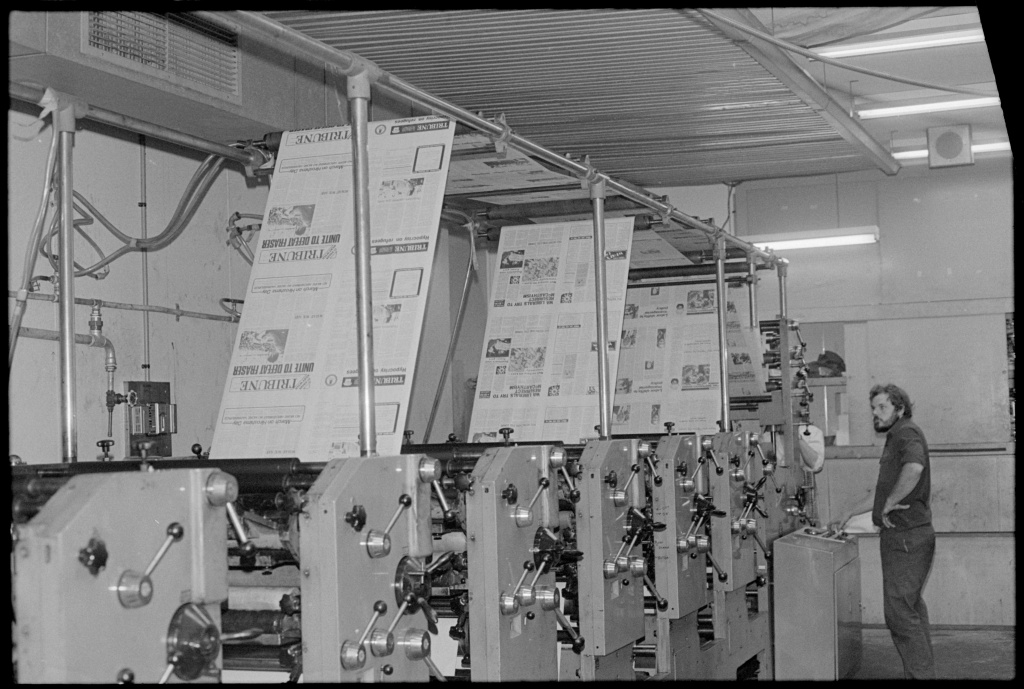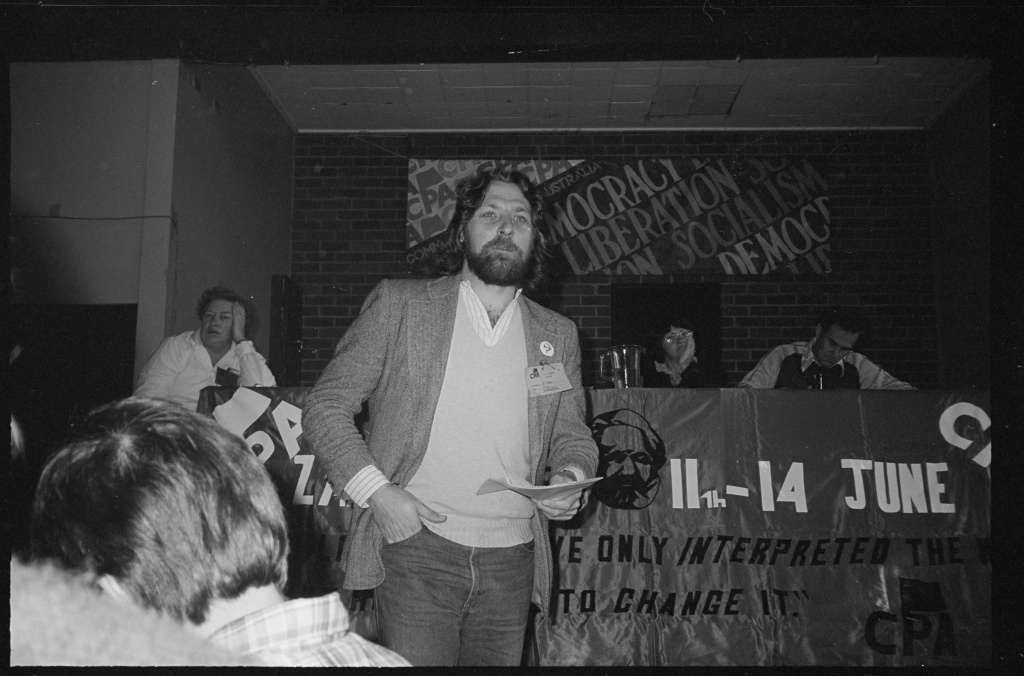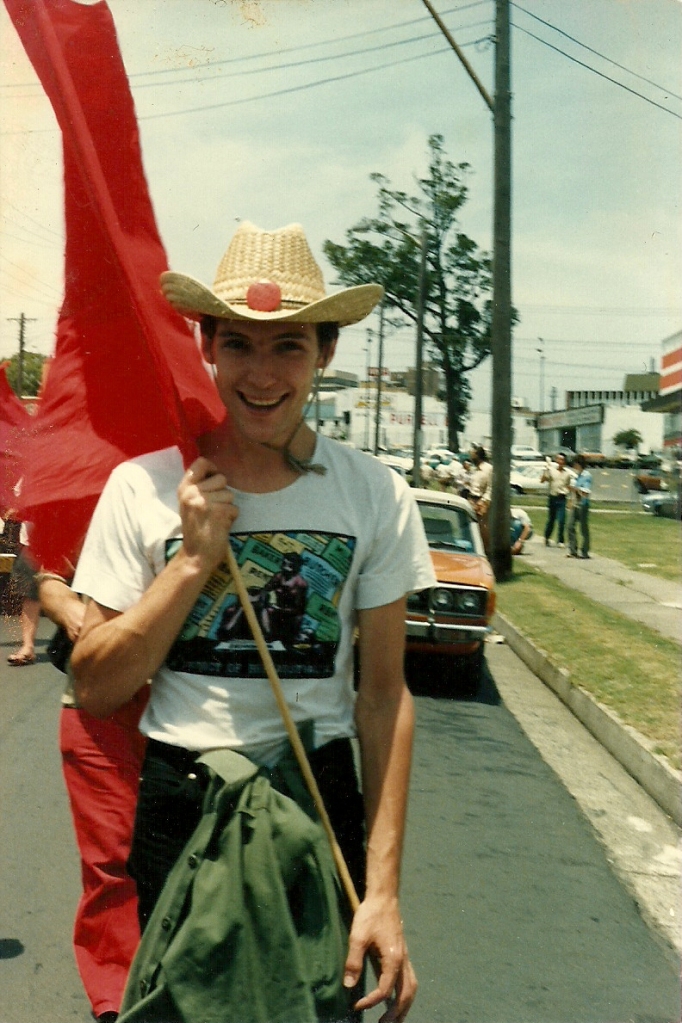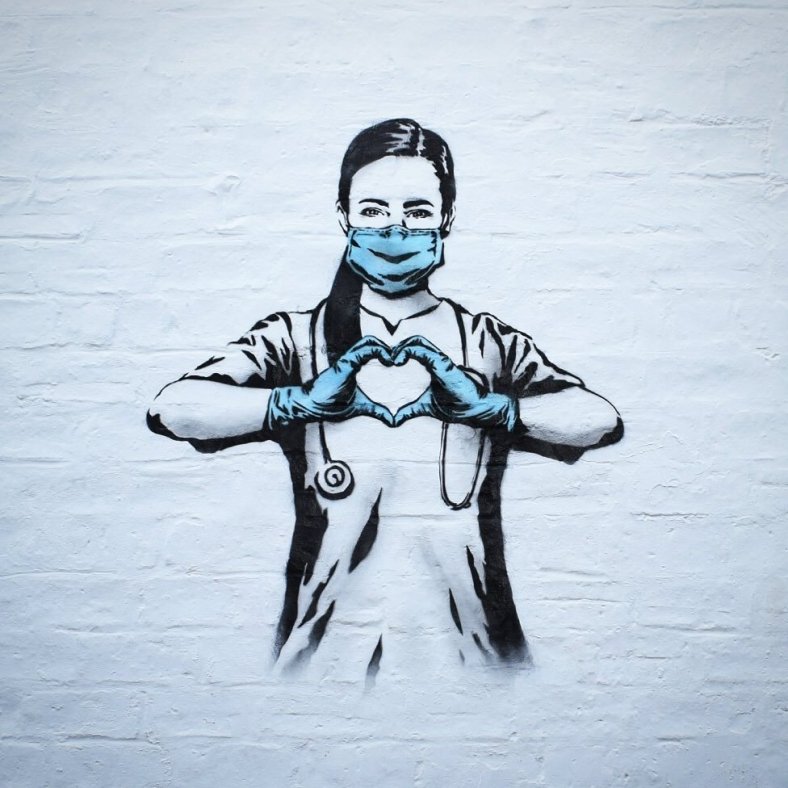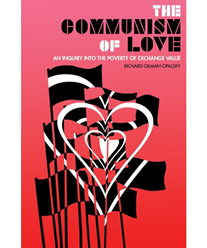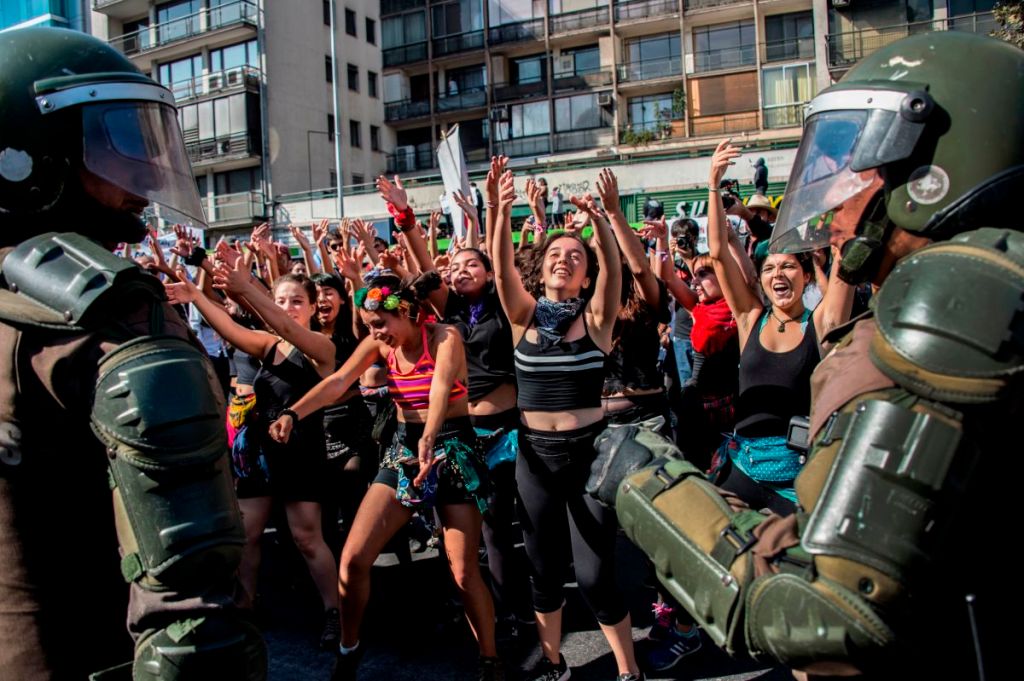This blog was created as an outlet for some of my written work. I have also used it to record a few of my other activities. Hopefully people will find it interesting or useful. I was going to call it – democracy, peace and love – because that’s what I’m most interested in. However, I decided on revolts now in memory of my first zine, revolt now, produced during my high school years. At that time I thought of revolution as an event, but now I think of it as a historical process, a long series of varied events in the past, present and future. The name revolt now had already been taken but revolts now was available. So here it is.
Wollongong Flooded: With Kindness
For many years, I’ve been writing about how people and communities respond to disasters. Hopefully I’ll have a book about this published later in the year. In this post, I have put together a few reports about the recent disastrous flooding in various suburbs of my hometown of Wollongong to highlight the widespread kindness, care and solidarity at the heart of individual and communal responses to this and other disasters. On Saturday April 6, I was woken at 5am by the sound of heavy rain and torrents of water pouring down the roof of our house. Forecasters had warned that a storm was coming and here it was. Peering through the window using a torch, I could see our street had become a river and water was rapidly rising in the front yard. Soon it began seeping in through the back door. By the time I got some sandbags from the garden shed, the water was almost up to my knees. To my relief the sandbags did their job and wading back to the front door in the dark my main concern was lightning striking close by. Back inside, I dried myself off and stood in the loungeroom staring at the wall, worrying, once again, about what to do in the face of intensifying disasters. Elsewhere in the city many people were facing much worse, while also discovering they didn’t have to do so alone.
That day, parts of the Illawarra region received more than twice the average April rainfall in less than 24 hours, with all of the local weather monitoring stations topping 200mm. More than 100mm fell between five and six am. As the Illawarra Mercury reported; “That hour became a terrifying nightmare for Gary and Bronwyn Hart, in Lachlan Street at Thirroul, who were woken by their neighbours warning them to ‘get out!’ “It was just after five o’clock and everybody was in bed when we got a knock on the door from our next-door neighbour saying that the creek had burst its banks and flooded,” Mr Hart said. “But then, I don’t know whether it was rocks or the pressure of the water, but the whole front of the house, the wall was just gone, and everything came through the house. We’ve got glass sliding doors at the back of the house and all the furniture got pushed by the water and the mud against that door. It built up and built up and then the door shattered. The whole inside of the house is just gone. We couldn’t get out back or front, the water was all around us.” As the water raged through their home, Bronwyn got caught in the force of it and was knocked over. As she fell, Gary desperately hung on to her. She was almost washed away, possibly forever.
Elsewhere in Thirroul, Jemima Macdonald and her family had only moved into their new home a fortnight before disaster struck. Jolted awake by the sound of neighbours banging on their door, they found floodwater pouring into their home. “We knew we had to get out immediately. We didn’t grab anything, just our son.” Returning later to a scene of utter destruction, their home and yard completely submerged – “It was just devastating to see all of our stuff ruined.” Especially since the family don’t have flood insurance and Jemima’s partner has recently been made redundant. Shocked by the impact of the flood, it was the response of others that lifted their sprits, as neighbours and the wider community rallied around them. “We had neighbours, people from the other side of Thirroul coming over and bringing their shovels and mops and saying what can we do, where do we start?” she said. “Or not even asking us, just going in and doing it because we didn’t know where to start. We didn’t know a single person when we moved in, and we moved here to be part of the community and that is what we got.”
On the other side of town, Mount Keira residents were confronted by a huge torrent that broke the banks of Byarong Creek and lifted a backyard cabin off its foundations, then swept it through the neighbour’s backyards. According to local resident, Paul Harrison; ‘It then careened down to a nearby bridge at horrendous speed, slammed into the bridge and broke apart. Two people were still inside when it slammed into the bridge.” Neighbours from across the road saw it, were able to get over there and help them get out. The rescued pair were eventually taken to hospital but had luckily escaped with minor injuries. When the sky cleared, neighbours from around the creek brought their gumboots and a helping hand, dragging the debris from affected people’s backyards into the street and began to tidy-up what they could.
Nearby, as Kealsie Beavis left her home in Figtree that morning it was pitch black and the chest-high floodwaters were making dangerous rapids outside, as a car floated by before slamming into a house. Standing at her front door clutching her baby in one arm, she used the other arm to pass over her three-year-old son to her neighbour, Nick, as he fought to stay upright in the raging water churning around him. Her son looked back at her as he was taken into the darkness, his rescuer holding tight to a rope tied to a telegraph pole across the road as the floodwaters threatened to take both of them down.
Another rescuer soon appeared and took her dog to safety. Then, Nick came back to rescue her daughter. It was still dark outside, and cars were now rushing by in the floodwaters, threatening to knock them both over in the debris filled mess. “I was terrified … letting both your children go is really hard and really scary,” she said amid a flood of tears. “Then it was just me, I didn’t want anyone else to be in danger. I said ‘don’t put yourself in danger to try and get to me’. I couldn’t live with someone else being hurt.”
The water and mud wrecked most of the family’s possessions, the oven, dishwasher, fridge, washing machine, TV and most of their other stuff. But as Kealsie saw it; “Lots of things have been damaged, but that can all be replaced, I’m not worried about that. Everything’s replaceable but we are not, we’re safe and that’s the main thing.” What was also important she explained to a reporter, is “I love where I live. It’s a very lovely community and it’s got a very good community feel about it and we’ve got really lovely people surrounding us.”
Elsewhere in Figtree, Ric Stalenberg woke up and walked onto his front verandah to see a neighbour’s car floating down the street. After the flood, he described the street as looking like a war zone. “You can barely drive down the middle of the road and you can barely walk down on either footpath because it’s piled up with furniture and white goods and carpets clothes and mud.” A young couple in the flats next door got out with only the clothes on their backs. They lost everything else, all their electrical goods, all their furniture and carpet, clothing – everything. Ric was shocked by the flood, but he was also struck by the “community spirit”, when people rallied around to help those in need. This included a communal clean-up effort and one of those involved asking the local pizza shop “the whole of Arrow Avenue is shovelling their lives away – is there any chance you could help us out with 10 pizzas?’ To which the response was ‘is ten enough, how about twenty? You can have as many as you need and if you need more come back and get them.’
In North Wollongong, soon after the flood, almost everything Claire Dewhirst, her young son and their housemate, Jodie Pearce, owned sat stacked in waterlogged piles outside the house they once called home. They were left with nothing except the clothes on their backs, a couple of handbags, their pet rabbits and dog. They have had to vacate their rented home and Jodie, a family daycare educator, is now without work and income as she ran her daycare from the house. Nor did they have renters’ contents insurance because, being in a flood zone, it was much too expensive. In response to their situation, Suzy O’Keefe, the mother of a child who attended Jodie’s daycare, immediately established a GoFundMe to help them get back on their feet. In the week after the flood, the fund had already raised thousands of dollars.
On Bellambi’s Pioneer Road, Brett Marriage woke up to water around his ankles. “I didn’t hear anything until a neighbour knocked on the door saying: ‘are you OK?'” He is OK, but his carpet and doors are damaged beyond repair, the recently installed kitchen will probably need replacing and his car is likely to get written off “because it looks like a Christmas tree when you turn it on.” However, the most devastating loss for Mr Marriage, was more personal, reflecting the fact that when disasters strike people often don’t worry as much about many of their possessions as they do about their relationships with loved ones. “My dad passed away last year and there was some sentimental stuff that was under my bed. There’s nothing we can do about it, but that’s what I was spewing about mainly,” he said.
Nearby, as Luke Murray got up, he saw water coming through his front door. It was “like a waterfall down the driveway coming into my house.” Realising the water needed somewhere to escape to he broke down his backyard fence so the water could flow out. Afterwards, to help dry his home, he was given industrial fans by some friends of friends and also received support from the gym he goes to. “Everyone’s helping each other,” he told the media, while their reports on the flood’s impacts in Bellambi also highlighted how a “silver lining of the situation has been the efforts of the local community banding together to help each other out.”
In Woonona, Susan Jarnason also woke up early to the sound of heavy rain. So, she “went downstairs to see there was a metre and a half to two meters of water coming into the bottom level of the house covering everything”. Susan’s neighbours barely knew who she was, yet it didn’t stop them from helping her clean-up afterwards. She had only moved into her home less than a month ago, but as she reported; “The neighbours in this block have been absolutely phenomenal. They were here all day yesterday comforting, cleaning, moving dirt, feeding us, watering us – everything that could possibly be done.” While another Woonona flood casualty, Penny Wilson, also voiced her appreciation for the community’s caring response; “People were walking past saying ‘can I help’, ‘can I bring something down, ‘can I bring a mop’,” she said. “Everyone was pitching in to help,” including a coffee truck offering people free coffee and the local kebab van giving away food to those helping out.
Importantly, this sort of widespread compassion, care and kindness is the most common response to such disasters. Even though many people are cynical about humanity, believing that people tend to be selfish and greedy, disaster responses provide plenty of evidence to the contrary (Here and here are some more examples from the recent floods in Queensland). When we take a cynical view of people, it’s easy to miss the widespread kindness that exists around us. Of course, selfishness is socially powerful and a key feature of capitalist society. We are often taught to be self-centred and selfishness is fostered by those seeking to disempower and exploit people, to divide us and to pit us against each other. But kindness, love, and care are more powerful. And in the face of intensifying disasters, we need to grasp the importance of cooperation to human development and that most people tend towards solidarity, crave togetherness, and yearn for connection. As a local journalist reporting on one of the streets featured above explained; “The flood has changed this little street, the neighbours are checking in on each other and by late Sunday afternoon they shared cans of beer amid more tears and hugs as they wonder what to do next.”
With climate change transforming the world and more storms, more floods, more fires, more disasters on the way, what did this one suggest about what we should do next? Well, we should focus less on possessions and more on people’s safety, lives and relationships. And to help deal with disasters we should reach out to, assist, support, comfort, and share with each other. Sure, some people respond to disasters in horrible ways, and we can’t always rely on those around us at the time, neighbours, family, friends, or caring strangers. But when disasters strike, we may need to rely on them, and they are the most likely to be ‘first responders’. Crucially, people and communities that foster kindness and value social solidarity are likely to be the most helpful and resilient in the long run.
So, now I’m staring at my screen, wondering what more can be done in the face of intensifying disasters and what’s standing in the way of us doing what needs to be done. So, my next post – Flooding the Zone with Shit will also be about the flood, but here I will focus on some of the crap that inundated Wollongong along with the water, as well as the responses to the flood from those in positions of power.
Nick Southall
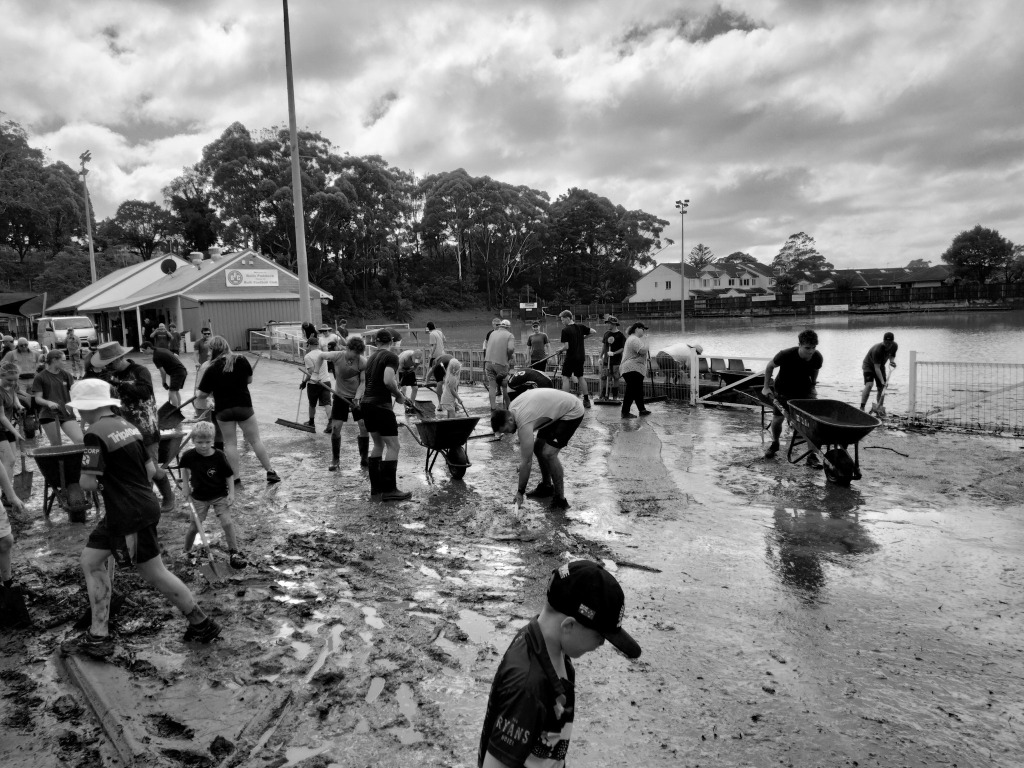
Radio A & A – Crimes of Class
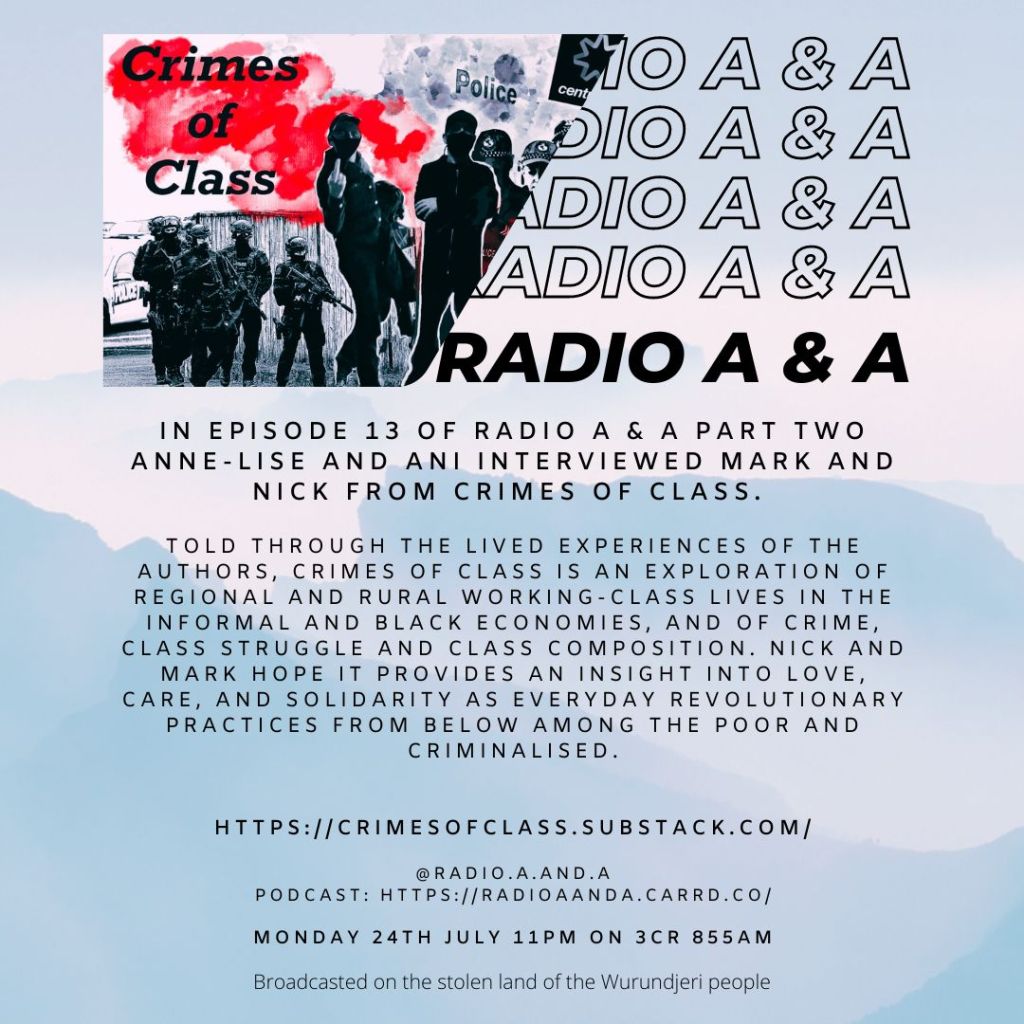
Recently, Mark Gawne and I were interviewed by Radio A and A on 3CR Community Radio, about our Crimes of Class blog, which I have previously posted about. The hosts, Anne-lise and Ani, talked to us about community and individual responses to harm, transformative justice, accountability, safety, support and healing, within and challenging dominator culture. The interview engaged with themes raised in Crimes of Class, but also delved into new questions that we hadn’t explored or covered explicitly.
A big thank you to Anne-lise and Ani for taking the time to talk with us and have us on their show. It was a really interesting discussion, challenging us in thoughtful and beneficial ways.
You can listen to Part 1 & Part 2 of the interview, which aired in June/July 2023, here
https://www.3cr.org.au/satelliteskies/episode/radio-and-episode-12
https://www.3cr.org.au/satelliteskies/episode/radio-and-episode-13
If you haven’t seen our Crimes of Class blog – it’s an exploration of regional and rural working-class lives in the informal and black economies, and of crime, class struggle and class composition. Here Mark and I interview each other and consider love, care, and solidarity as everyday revolutionary practices from below among the poor and criminalised – https://crimesofclass.substack.com/p/welcome-to-crimes-of-class?utm_source=profile&utm_medium=reader2
The ‘Cost of Living’ & Work Refusal: Gong Commune ‘Firestarter’
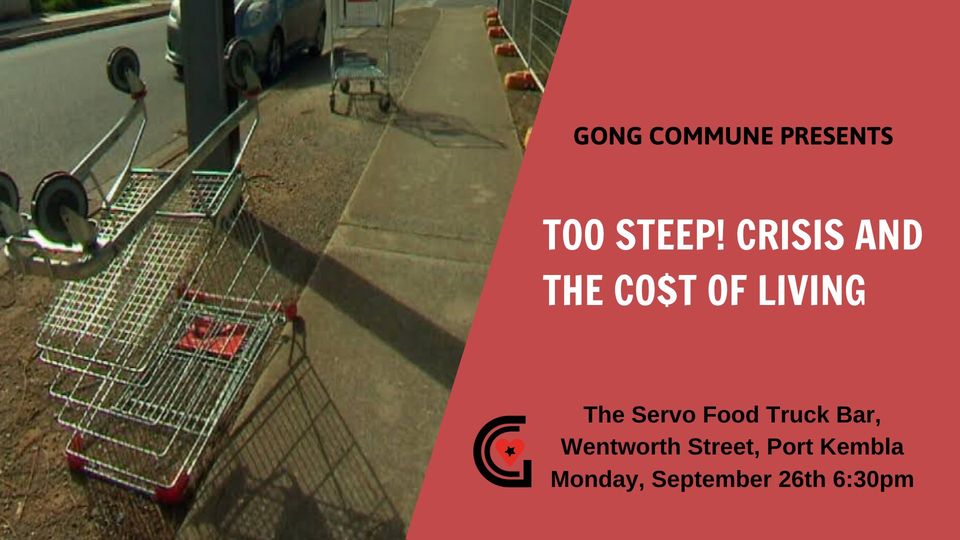
On Monday, September 26, 2022, Gong Commune held an open public discussion about contemporary crisis and the cost of living. The event was organised into four sections based on the questions –
1. What do the ‘Great Refusal’ and other struggles around work tell us about capitalism today?
2. What is inflation, what is driving it, and why is it happening like this now?
3. What is going on in the public sector struggles and why are they important?
4. What can we do to improve our lives together in the near and far term?
Each question was briefly addressed by a ‘fire starter’ speaker to help launch the discussions. I was asked to give a brief response to the question – What do the ‘Great Refusal’ and other struggles around work tell us about capitalism today?
Here’s my response.
Discussions about economic crises usually focus on the power of capital, the growing miseries of poverty while profits soar, or austerity budgets like the one Labor is preparing us for while they cut rich people’s taxes. But I prefer to explore the struggles against capitalism and to think about how the ruling class reacts to our power. Importantly today this power is evident in the struggles against capitalist work, such as the global ‘great refusal’, ‘great resignation’, ‘great retirement’ and the decentring of economic values due to increased concerns for health, safety, and care.
Given the recent past, we need to consider how powerful and profound the impacts of the pandemic have been and continue to be. So, perhaps we can start thinking about these concerns in relation to the term – ‘the cost of living’. ‘The cost of living’ tends to suggest that we measure life in economic ways, focusing on money, finance, debt, prices, rent and wages. Of course these are all important. However, the class struggles of the past decade have increasingly focused on health, safety, care, our relationships with each other, with the world around us, on human life and the existences of other living things. These struggles suggest other ways of thinking about ‘the cost of living’ and pose profound questions about capitalism as a system in crisis – questions like – Is the ‘cost of living’ that millions of people, especially the most vulnerable, must needlessly die? Or – is it a ‘cost of living’ that we destroy the environmental basis of life? As it becomes clear that for much of the ruling class and for capitalism in general the answer to these questions is apparently ‘yes’, why should we, why would we, want to work to reproduce this system?
The basis of capitalist society is the enforcement of work for capital – ensuring that most people, most of the time, are engaged in the daily reproduction of exploitation; in production, distribution and consumption for profit, for the benefit of the ruling class. It often appears that we have little power and it can be hard to appreciate the power we do have. While the power of workers is indicated by strikes, pickets and other industrial action, much of our resistance to capitalist work and shit working and living conditions tends to be invisible, neglected, or ignored. In recent years though, especially during the pandemic, the power of work refusal in various forms has been more widely recognised. For example, at the start of the pandemic, many workers stayed at home or refused to go to work before state movement restrictions were announced, forcing governments and businesses to implement health and safety measures – including increased welfare payments and subsidised wages.
Across the world billions of people have continued to refuse to work in the way they used to, have changed the way they work, and have questioned and challenged what they work for. Work refusal is in the air, anti-work forums are increasingly popular, social media is widely used to encourage various forms of work refusal and the pandemic has changed the way many people think about the time and value of their lives. Yet, although the ‘great refusal’, ‘great resignation’, and ‘great retirement’ have received a lot of attention, most work refusal doesn’t involve leaving your job. Instead, it includes refusing both paid and unpaid work in a more general and often in more micro senses – slowing down, avoiding certain tasks, doing a half-arsed job, staying away from work, taking sick days when you’re sick rather than ‘soldiering on’, or spending work time doing things you want to do. While what today is called ‘quiet quitting’ might appear to involve relatively insignificant individual acts, these acts are being taken by billions of people to exert power over what they do, how they do it, why they do it, and whether they do it.
Most work refusal is relatively ‘quiet’, yet when it’s widespread and commonly practiced it contributes to louder forms, which receive more attention. Today, many workers are refusing work by striking – especially in industries where large numbers have refused work by resigning – such as nursing, aged care and teaching. These strikes have highlighted the financial ‘costs of living’ and low pay because economic crisis forces more and more people to push back, positioning workers as struggling for increased wages. Yet strikers have also focused on health issues, staffing ratios, workplace and public safety, decent working conditions, exhaustion, burnout, and the psychological costs of working.
Meanwhile, bosses and governments are powerfully reacting to the popularity of work refusal. Inflation, high interest rates, low wages, poverty welfare benefits, rent hikes, and price rises are attacks on our standard of living which bosses use to discipline workers, to discourage work refusal, and to encourage people to work more and harder, forcing those who are insecure into greater insecurity and those who have built-up some savings as a protective buffer from insecurity to spend their savings and end-up insecure. The increased focus on paying debts, on inflation, on price rises, on rent, frames the ‘cost of living’ as about economic concerns, centred on ‘the market’, money, economic growth, productivity, efficiency, and profitability. This decentres the ‘costs of living’ in relation to the future of life on earth, the health and safety of people, our quality of life, our social connections, or the care crisis; in aged care, physical and mental health care, child care, social care and environmental care. Still, importantly, the pandemic has given many people more time and more reasons to think deeply about the state of the world and many are refusing to return to ‘business as usual’. Instead, they are seeking to live as if their lives matter and their actions count.
So, to conclude, some questions I’m wondering about are – given the intensifying costs of capitalism, how can we take back more of our time so we can focus on what’s most important? As capitalism descends into a deepening series of crises, how can we permanently transform our lives? How can we more effectively refuse capitalist work and organise our own collective power – so that living isn’t costly?
You can find notes from the other ‘fire starter’ responses and a recording of the event on the Gong Commune website here.
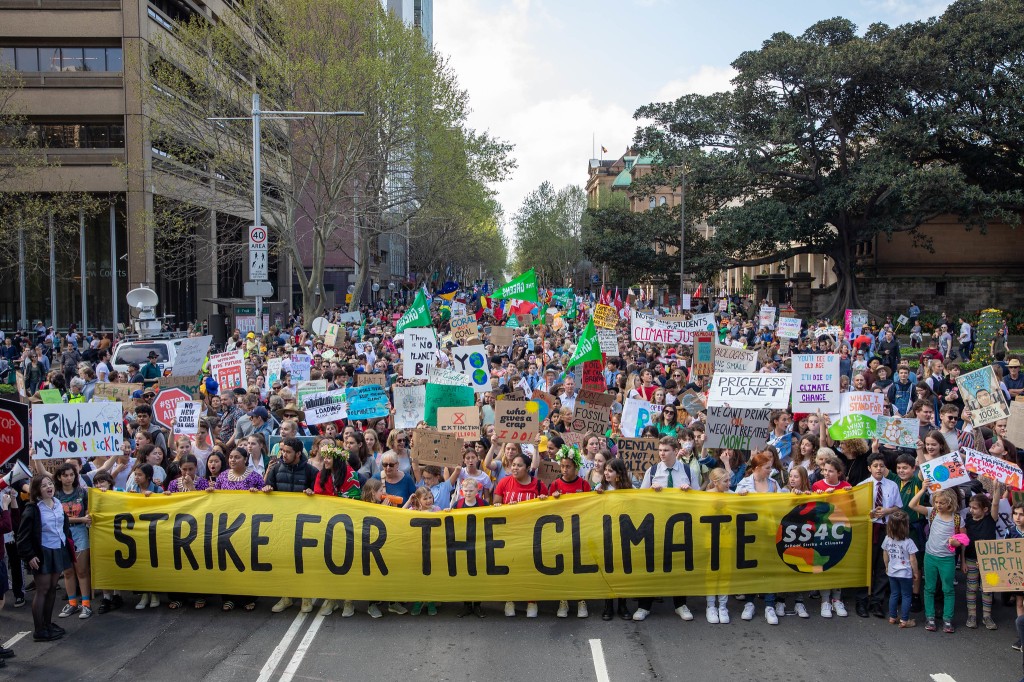
ABC Radio interview: From Sheffield to The Gong
On August 23 2022, it was announced that a major long-term expansion of the local Dendrobium coal mine wouldn’t be going ahead. This was a significant victory for the local, regional and global environmental movements, including Protect Our Water Alliance (POWA), the main group coordinating opposition to the project. Earlier this year, I wrote about this campaign in Coal Struggles: ‘The past we inherit, the future we build’. During that morning, as I was celebrating our win over global mining corporation South32, I was asked to have a chat on ABC Radio Illawarra with Lindsay McDougall (of punk band Frenzel Rhomb fame). The interview wasn’t about the environmental campaigning victory, although we did discuss it and that day’s announcement influenced what I focused on during our conversation, but was instead part of a series of interviews Lindsay has been doing with people who migrated to Wollongong from other parts of the world. For those who may be interested, here’s the edited version which went to air that afternoon –
Crimes of Class
Earlier this year (2022), Mark Gawne and I began publishing our Crimes of Class project in instalments on Substack. Told through our lived experiences, Crimes of Class is an exploration of regional and rural working-class lives in the informal and black economies, and of crime, class struggle and class composition.
The two of us started talking about this project because of a brief discussion we had on social media about stories from back in the day, the oral history of political movements and everyday life, and the moral instructions of social movements alongside our experiences in the informal and criminal economies. We discussed writing about our experiences before deciding to begin by interviewing each other. We came up with some fairly open questions, with the idea that we would respond to each other’s questions and then follow-up, hone them, and come back and ask more questions. The two interviews with each other are based on this process.
So far, Crimes of Class includes two long-form interviews, which were published in short sections at semi-regular intervals. We hope the interviews provide some useful insights into love, care, and solidarity as everyday revolutionary practices from below among the poor and criminalised. After receiving positive feedback and encouragement, we are currently considering what we will do next with this project.
You can find Crimes of Class here – https://crimesofclass.substack.com/p/welcome-to-crimes-of-class?utm_source=profile&utm_medium=reader2
Communes
This work was originally published in November 2021 as an article in Gong Commune’s zine Communes: Past, Present, Future, where you can find the full contents.
In this post I consider communes as a range of social relationships; communes as ways to oppose and demolish capitalism, to live differently within it, and to escape it. The word commune has been used to describe a variety of radical communities. Historically, we can point to examples like the Paris Commune, to ‘hippy’ and alternative lifestyle communes, or the contemporary proliferation of revolutionary communes in South America. This year (2021) marks the 150th anniversary of the Paris Commune and the celebrations in the ‘city of love’ are called ‘We the Commune’ to commemorate the “glorious harbinger of a new society” and those who “came together to take their destiny into their own hands”. Meanwhile, here in Wollongong, we seek to listen and learn from hundreds of years of Dharawal and Yuin struggles for self-determination, community, and Country and millennia of communal knowledges and practices embedded within the Aboriginal custodianship of Country.
Communes are created by people’s ongoing acts of invention, innovation, meeting, working, and organising together. They involve a multitude of places and interactions that are continually being formed and transformed, creating space for efforts and associations in which more democratic politics can be experimented with. Communes can include social solidarity during crises and disasters, strikes, picket lines, radical and progressive organisational spaces, meetings, protests, occupations, public assemblies, celebrations, homes, squats, community gardens, autonomous collectives, and more, where people working together to refuse and dismantle the exploitation and oppressions of capitalism, colonialism, and patriarchy, seek to support the broadest possible freedom for all.
Communes tend to operate beyond or on the fringes of money, markets, and commodities, where the re/production of life’s necessities is generally approached as a common struggle to redistribute social wealth, to provide people with what they need based on the collective ability to support each other. These reciprocal relations are not measured in work hours or wages, but in valuable relationships that motivate each person to do what they can do and need to do to re/produce and extend both small and large scale communes. Yet, while communes are not centred on cash, debts, or private property, neither are they pure. Communes often require money to cover costs, to purchase resources, and to share with those in need. So, communes remain intertwined with the social relations of capitalist society and are riddled with contradictions and ambiguities.
Large and small, short-term and long-lasting, local communes draw strength from the vibrant history of radical social movements, social solidarity, and diverse communities working together to address common concerns within this region and beyond. Today, Wollongong is full of people caring for friends, family members, neighbours, vulnerable people and environments, for little, if any, financial reward. They are involved in cultural activities, social movements, justice campaigns, community groups, civic and leisure activities, in building different worlds with alternative forms of production, distribution, and consumption.
Communes produce different ways of living based on pluralist networks and involve a range of decentralised experiments in collective self-government and complex decision-making procedures. By creating more democratic connections between individuals, organisations, campaigns and movements, people can work together in a manner where no person or specific struggle is seen as necessarily more important than any other, where all can be valued.
Communes create emotional resources, psychological spaces, and social environments that pay attention to other people, to living things, to what is important in life. They arise from social cooperation, where action is grounded not in possessions but in interactions with and openness to others. Where activity is not centred on having but being-with, acting with, creating-with. Where work, skills, resources, assets, knowledges, experiences, histories, cultures, goods, what we produce together, is shared.
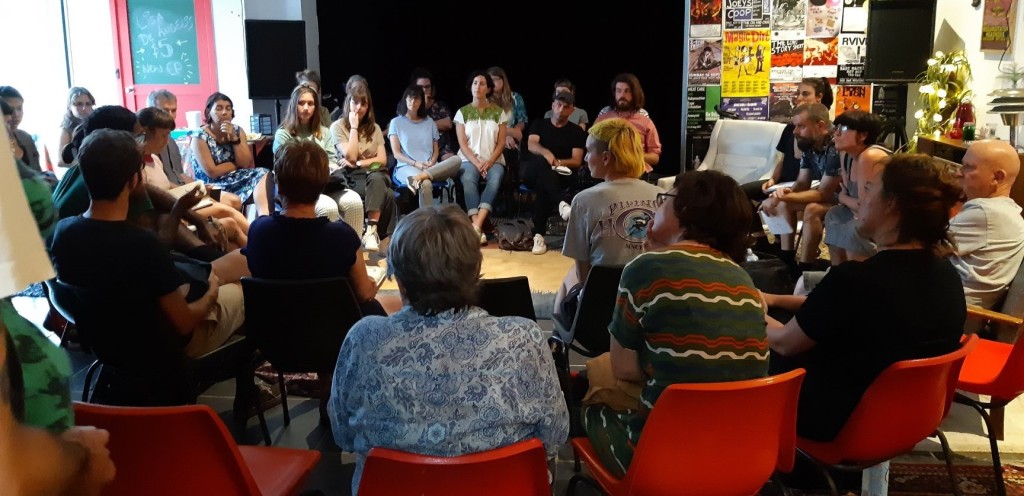
Communes promote new ways of thinking – journeys of self and social discovery. The needs and desires for radical change spark a growth of consciousness raising, radical education, independent research, media, and cultural production – including alternative news and analysis, arts events, gigs, performances, rebel music, bands, choirs, blogs, reading groups, films, videos, writing, poetry, comedy, storytelling, theatre, online debates, and discussions. These practices are part of widespread cultures of caring, resistance and revolt which include indigenous cultural practices, care for Country, a range of protest cultures, the cultural practices of community organisations, political groups, unions, and social movements, mutual aid, gift cultures, and repair cultures.
In Wollongong, a number of contemporary social movements involve a deep questioning of the purpose of work and production. Forging slower-paced and more leisured communities, many people are today rediscovering the importance of fun and joy, while questioning the purpose of their work and the sacrificing of their health and lifetime for careers, possessions, and a heartless system. They are developing ways to survive that minimise capitalist labour, to thrive in opposition to capitalist institutions, to help unleash people’s power and potential.
The community solidarity cultivated by collectively organising our own activities, our own production, our own services, our own events, generates more meaningful bonds and makes life more rewarding. The development of many and varied ties of affection and comradeship among people, where an individual’s endeavours and achievements rely on the web of friendships and caring relationships which sustains them, encourages long term involvement in projects that are making a real difference, in creative, mutually beneficial activities, in tasks that make people’s lives better, that benefit the community, and the environment.
In the past couple of years, we have seen the construction of powerful local communes to organise climate strikes, actions to shut down the Coal2020 & Coal2021 conferences, community mobilisations to halt the expansion of mining under the local water catchment, Black Lives Matter protests, and ongoing intricate webs of mutual aid, illustrating the power and potential of overt and unseen communal organising. Significantly, communes focused on the environmental, climate, and extinction crises have increasingly become a spanner in the workings of local fossil fuel infrastructure, countering ecological destruction, and corporate dominance, while continuing to develop a growing network of alternative production, distribution, and exchange experiments. Many thousands of people doing thousands of activities have been making these things happen, as part of an upsurge of local, national, and global activism.
The hugely successful 2019 Climate Strike in Wollongong, with more than 5000 people participating, relied on an organising process that actively involved a wide cross section of individuals and groups with an array of political perspectives. Those taking part mainly put aside areas of disagreement and instead concentrated on their commonalities and the tasks required to organise the Strike. Having a variety of activities and actions helped to encourage a diversity of tactics and strategies, the development of autonomous organising, and a focus on the interconnections between local and global concerns. Rather than creating conflict and competition between those wishing to do different things, there was a flourishing of experimentation and a breadth of activity, fostering empowerment, encouraging solidarity, and accommodating differences. In this way local activity generated space for broader political debates concerning the movement’s composition, the effectiveness of different actions, strategies, and tactics, while encouraging inventive approaches.
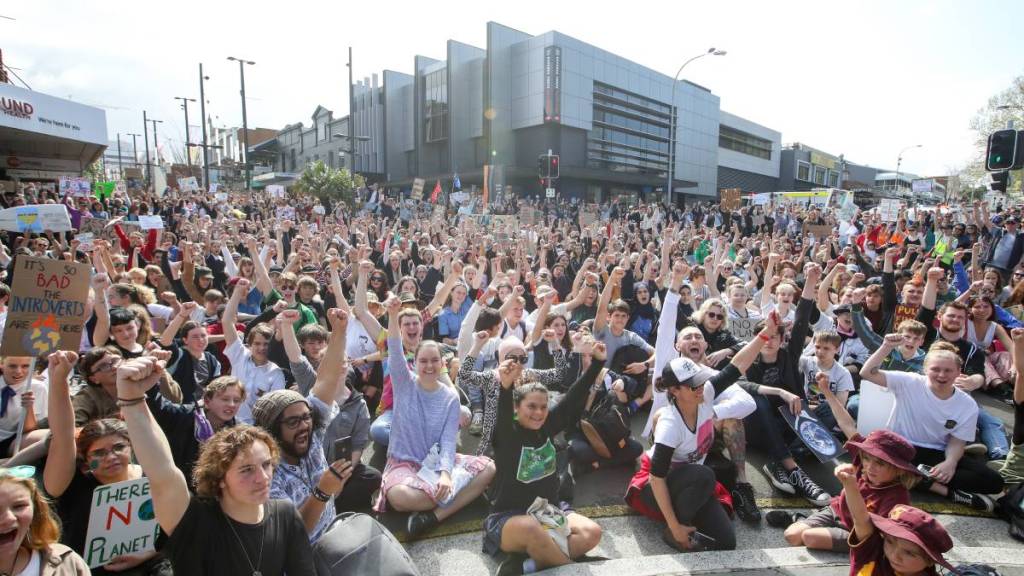
Following the Climate Strike, the Illawarra Climate Justice Alliance (ICJA) began circulating a call-out for people to travel to Wollongong to help ‘shut-down’ the Coal2020 Conference at the University of Wollongong (UOW) through protests and pickets. The Conference had been held at UOW as an annual event bringing together mining companies, industry experts and scientists for the previous 19 years, to discuss the best ways to find, dig, package, sell, ship, burn, and profit from coal. Due to the planned protest actions the Conference was called-off only weeks before it was scheduled to happen. This was the first time the University was forced to cancel a major coal mining conference, a significant victory and a shot-in-the-arm for the climate justice movement.
Activists from across the Illawarra, Sydney, the A.C.T., and beyond worked together to stop the Conference from happening. In preparation for shutting-it-down, ICJA began to organise billeting and places to camp for those traveling from elsewhere. Posters and flyers were produced and distributed both locally and further afield. Speakers from ICJA attended meetings, the Students of Sustainability Conference and a range of community gatherings, to help publicise the up-coming action. Community information sessions, direct action skill shares, and a ‘Shut Down Coal2020’ discussion for high schoolers, facilitated by high school student members of the ICJA, were planned. A Facebook event was created where information was provided on general plans, the protest events, and advice/assistance for those taking part. Other social media platforms were also used to publicise actions and gain support. Local, state, and national groups helped with publicity and support in the lead-up to the event, mainly through their own networks and via social media. On the UOW campus, members of the National Tertiary Education Union (NTEU), other workers, and the Wollongong Undergraduate Student Association (WUSA) supported the protests.
It was anticipated that hundreds of people would take part in the ‘Shut-Down’ actions. This would include people providing logistical support, facilitating a variety of activities, taking part in well-organised or more spontaneous actions, and those blockading in ways that carried relatively more risk of arrest (e.g. near the doors or inside). Different groups would arrange assorted actions, taking responsibility for blockading certain entrances, creating colour, movement, and disruption. Drum groups, musical performances, speeches, and direct actions both outside and inside the venue would deploy various creative tactics. Some of the activities were being coordinated by ICJA, while space was made available for more decentralised and autonomous action – helping to create an unpredictable convergence of diverse yet complimentary participation. The large number of potential participants, their defiance and determination, and the complexity of the planned activities convinced the University to pull the plug, as UOW management voiced concerns about damage to the University’s reputation which would follow heavy handed policing of the community’s attempt to stop the Conference.
Following the cancellation of Coal2020, UOW and the mining interests that sponsor these conferences were forced to flee the region as they began planning to hold Coal2021 at the University of Southern Queensland (USQ). However, our commitment to oppose the conferences where-ever they are held remained. So, we contacted concerned people and groups in Queensland encouraging them to help shut-down Coal2021. In January this year (2021), the Conference website went from public to private and the organisers removed public registration to avoid scrutiny and to stifle community opposition. This was followed soon after by confirmation from USQ and the Ipswich police that the Conference would no longer be taking place at the University. Covid restrictions may have played a part in their decision to cancel, but they were also increasingly aware of the planned protests. Fleeing the Illawarra region, to evade community opposition and the climate justice movement, had failed.
Soon after, the NSW Independent Planning Commission’s rejection of South32’s twenty-five-year plan to expand coal mining at their Dendrobium pit was also a major win for the local, regional and global environmental movements. Once again, thousands of people had taken part in widespread, powerful, and diverse campaigning to halt this development and protect our water catchment. Open, democratic, and rebellious community organising has also been at the heart of this continuing mobilisation.
That local communal practices of defiance and militancy have continued despite the impacts of the pandemic was also demonstrated last June when hundreds of people took part in an illegal Black Lives Matter protest in central Wollongong. Despite a Supreme Court decision banning the protest and a large police show of force, including mounted police, members of the Riot Squad, Dog Squad, and PolAir, to intimidate those participating, hundreds of people assembled, held our ground, spoke out, and marched.
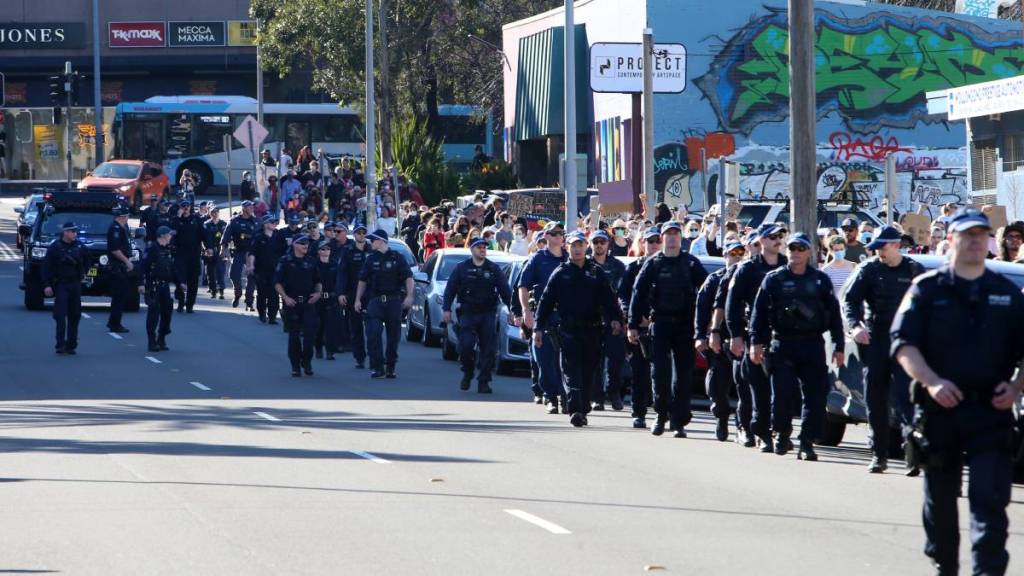
The Covid-19 crisis has also spurred-on a range of local mutual aid practices, with many initiatives conducted by ‘formal’ mutual aid groups, many more undertaken by ‘informal’ groups, and most remaining publicly invisible. This disaster aid has involved people mutually supporting each other, not just some people ‘doing good works’ for others. Mutual aid practices are always widespread, but during and after crises they tend to expand and flourish, as more people rely on decommodified reciprocal caring relationships. In Wollongong during the pandemic, mutual aid practices have especially supported those hit hardest, including the aged, unwell, poor, international students, and famously the crew of the Ruby Princess. Around the world we have seen a multitude of similar responses.
Communes can help us to survive and thrive despite the disasters of capitalism and the more numerous and widespread communes become the greater their transformative power. They offer the opportunity to experiment with new forms of politics which enables people to experience their own personal agency and collective capacities, to construct and experience different social relationships, to build community, friendships, and solidarity networks. Those involved in communes learn how to work with one another, to collectively produce and make things happen, building confidence by relying on each other and fostering their own initiatives. People’s sense of what is possible, what they can do to change their living conditions, is nourished by an eco-system of collective activities and experiences of halting or reducing damage and creating positive social change.
Importantly, trying to enjoy your life doesn’t have to be a way of hiding from reality. It can be a way of changing reality. It can include running away from what we wish to escape, as well as confronting and undoing it. The achievements of our large and small communes are often denied or neglected, but they continue to radiate through our lives, our relationships, and our communities. What communes are and what they do depends on the wishes of those involved and what they are able to collectively accomplish. Making decisions about what we think is important, what we want to do, how to do it, and organising to achieve our aims, creates alternative communities, circulates communal struggles, preserves non-capitalist and anti-capitalist practices, and builds confidence, by making the constructive power of communes more visible.
Nick Southall
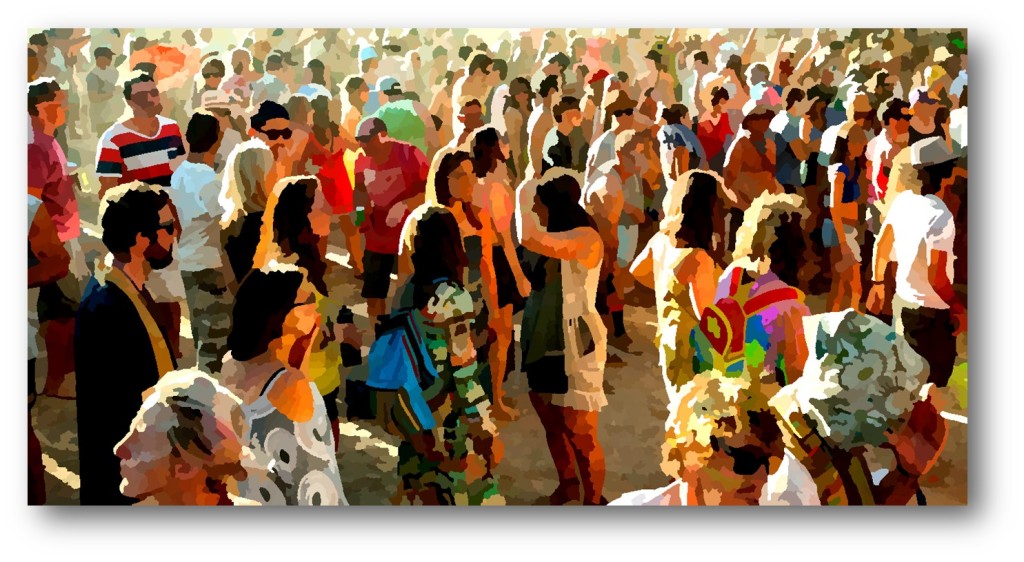
Coal Struggles: ‘The past we inherit, the future we build’
During the 1970s and 1980s, I was involved in many struggles to defend the jobs and working conditions of local mineworkers and those elsewhere. I never considered this a defence of the coal industry, or the wage slavery and dangerous working conditions of miners. Instead, as I said in a recent interview – “We used to struggle to defend the jobs and conditions of miners against attacks from the bosses. Now we strive to protect the environment from fossil fuel corporations, while continuing to advocate for decent jobs and working conditions in the developing ‘green economy’. Campaigning for the closure of local pits and a just transition is still about class power, the fight for justice, the creation of a better world and a brighter future.”
In December 2020, the New South Wales Independent Planning Commission (IPC) held a three day online public hearing into multinational mining company South32’s twenty-five-year plan to expand coal mining at their Dendrobium pit, located in Wollongong. Leading-up to the hearing, thousands of people and a wide range of organisations took part in widespread, powerful, and diverse campaigning to halt this development and to protect the environment and local water catchment. Many of those opposing the extension of Dendrobium made written or oral submissions to the IPC, including myself. In February 2021, in a shock decision, the IPC rejected South32’s expansion application due to what it described as unacceptable impacts on water security as well as biodiversity, threats to ecological communities, and because it would cause serious degradation to watercourses and swamps, release significant amounts of greenhouse gases and cause irreversible damage to Aboriginal cultural artefacts and values. This was a major win for the local, regional and global environmental movements, including Protect Our Water Alliance (POWA), the main group coordinating opposition to the project.
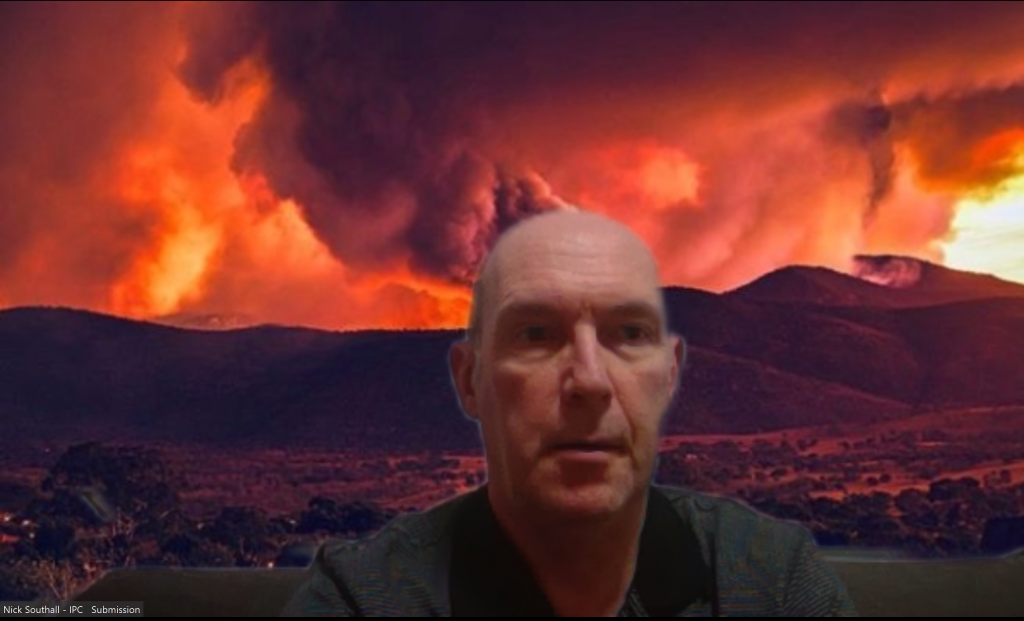
This was the oral submission I made, via Zoom, to the IPC hearings on December 3rd 2020. Most of those making submissions, like myself, were only given a few minutes to speak.
Hello, I’m Dr Nick Southall. I live in Wollongong, I work at the University of Wollongong, and I’m a lecturer in International Development Studies. I acknowledge the indigenous custodians of this land and the millennia of Aboriginal care for Country. I also acknowledge the Illawarra Aboriginal Land Council is strongly opposed to this development proposal. I join their opposition.
South32 admit this proposal will result in a range of irreversible impacts to the water catchment Special Areas, massive loss of drinking water, dangerous effects on water quality, and damage to countless Aboriginal cultural heritage sites. It also threatens ongoing impacts to the climate, the environment, eco-systems and people, including increased likelihood of bush fires on the Illawarra Escarpment.
Large numbers of Australian water experts and the NSW Local Government Association are opposed to mining in the water catchment. Wollongong City Council’s response to the expansion warns of the cumulative loss of water from the extension of this and other coal mines and that those losses will be far greater than predicted. This proposal would significantly reduce local water quality and supplies at the same time as demand increases. WaterNSW say this expansion must not go ahead.
The proposed damage cannot be accurately calculated and may involve the loss of water forever. The damage cannot be repaired and South32’s offer of compensation for the loss of water cannot address the value of a priceless resource. Water is essential for sustainable development, critical for healthy ecosystems, and healthy communities.
Water is the primary medium through which we feel the effects of climate change. A recent Bureau of Meteorology report explains how the dehydration of the escarpment will create conditions for a major inferno which could devastate local bush, eco-systems, wildlife, and risk human life. The burning of fossil fuels and the undermining of our water catchment is turning our region into a tinderbox. This expansion would help to guarantee that in the years ahead the Illawarra burns.
Financial accounting cannot measure priceless resources, eco-systems, and heritage sites. But since the focus of those who seek to profit is on money, let’s be clear – the economic gains will go mostly to South32 – while many of the suggested financial and employment impacts claimed by the company, and those doing economic modelling for them, are based on assumptions that do not hold-up to scrutiny.
This proposal is unlikely to provide even medium-term job creation or financial benefits to our community. Consider the example of the local Metropolitan mine – since their recent expansion process began, Peabody’s share price has collapsed, the company is facing bankruptcy, a large number of jobs at the mine have been eliminated and the pit is now being shut down. Meanwhile, this year, South32 has axed around 100 jobs at Appin. While, 250 of South32’s labour hire workers had their contracts terminated. Some of those jobs were readvertised, but with a possible 40% wage cut, and poorer more dangerous working conditions.
Coalmining is increasingly reliant on labour hire and casual workforces. It is delusional to suggest that there’s a stable future in coal jobs and incomes. Our region’s future prosperity lies elsewhere.
Regarding Bluescope’s reliance on South32, I urge the Commissioners to carefully check the accuracy of company claims about the use of Dendrobium coal and alternative supplies. Bluescope’s blast furnace will soon be retired and a decision will likely be made in 2025 about the future of steelmaking at Port Kembla. Bluescope, along with the Federal and NSW governments, and the CSIRO, are now supporting the development of Port Kembla as a green hydrogen hub, including a production facility worth more than $500 million. Meanwhile, Liberty Steel in Whyalla (another customer of Dendrobium) is investing over $1 billion to rapidly produce decarbonised green steel – because this is what global markets will demand.
In conclusion, South32’s proposal is a two-fold attack on our water supplies – undermining them from below and evaporating them from above. No money can compensate for something that is priceless and for destruction which will be perpetual. You cannot offset eco-system and species loss. Coal mining in the water catchment does not offer a guarantee of secure jobs, decent wages, or economic growth. It will cause irreparable long-term damage to our future prospects. Our region must transition to a more sustainable future. This future needs your support, and that support must include protecting the water that nourishes our community, the economy, and our environment. I strongly urge you to refuse this application.
Over the past few years, Protect Our Water Alliance (POWA) has also been at the forefront of campaigning against Wollongong Coal and the expansion of mining at their Russell Vale Mine. In August 2020, POWA organised a protest outside the company’s Annual General Meeting, held in Towradgi. This was the speech I gave during that action.
We are protesting outside Wollongong Coal’s Annual General Meeting in order to highlight that this mining company’s plans are a risk to the environment and to the community. There must be no mining in our water catchment, the region’s water supply must be protected, and environmental destruction has to be stopped. Both the National Parks Association and WaterNSW say that coal mining expansion in the water catchment poses an unacceptable risk to our water resources and should not be allowed. As climate change accelerates, we need alternative forms of development that are not a risk to a sustainable future.
There will soon be a public hearing into the company’s plans to expand its Russell Vale colliery to mine under the local water catchment. Yet, Wollongong Coal has failed to meet its previous water management, workplace safety, and environmental protection obligations. Therefore, their mining expansion project should not be considered. There can be no guarantee that Wollongong Coal is able to fulfill its conditions under any future approval. They do not have the capability to mine responsibly or safely and the costs to the community will exceed the questionable benefits of the expansion proposal.
Wollongong Coal has debts of around a billion dollars, little revenue, a terrible record on ‘environmental compliance’, and its Wongawilli mine was closed last year after the NSW Resources Regulator found safety issues which were too serious for underground work to continue. The company has been suspended from the Australian Stock Exchange and an investigation by the NSW Government into Wollongong Coal’s fitness to operate a mine and work safely was shelved last year, as it was unable to find them ‘fit and proper’. They are increasingly desperate to exploit any opportunity to make some quick money, due to their disastrous situation and the coal industry’s decline.
After decades of wiping out tens of thousands of local jobs, cutting wages and working conditions, and thrashing our land, air and water, the coal bosses have no interest in the people of this city, its future prosperity, or our environment. They only care about their profits. It is becoming clearer that coal mining is a dying industry. Locally this death is indicated by coal companies in crisis, the increased use of contracting and hyper-exploitation of workers, attacks on our eco-systems, and our water supplies. In the past week we have seen a toxic sludge of coal and chemicals poisoning a major local creek. Australia already suffers the legacy of countless poisonous, unrehabilitated and abandoned mine sites, which when they closed down left a range of damages in their wake. We cannot let this happen here. Wollongong Coal’s dangerous plans should now be halted. The Russell Vale mine expansion should never have been considered, and certainly should not be approved. The NSW Government and the Independent Planning Commission must call an end to this fiasco and step-up to protect our water, our environment, and our community.
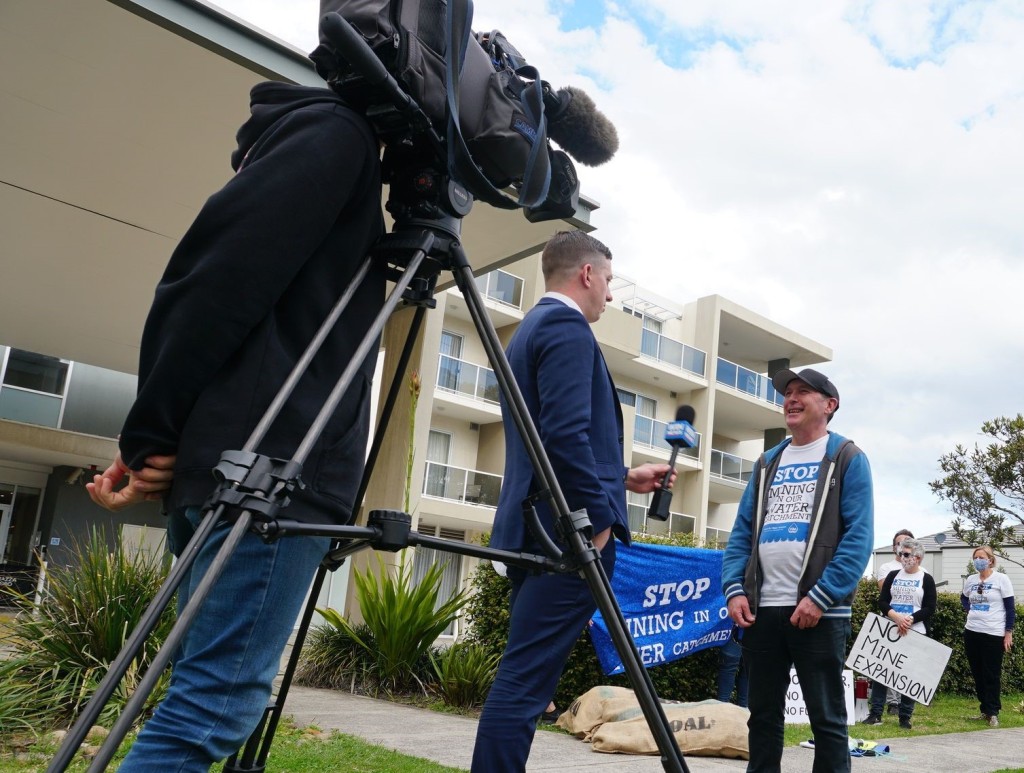
In late 2020, the IPC gave the go-ahead for Wollongong Coal’s expansion of the Russell Vale mine. However, opposition to this development has intensified and you can find out more here – https://www.facebook.com/StopRussellValeMine
or here – https://stoprussellvalemine.org/
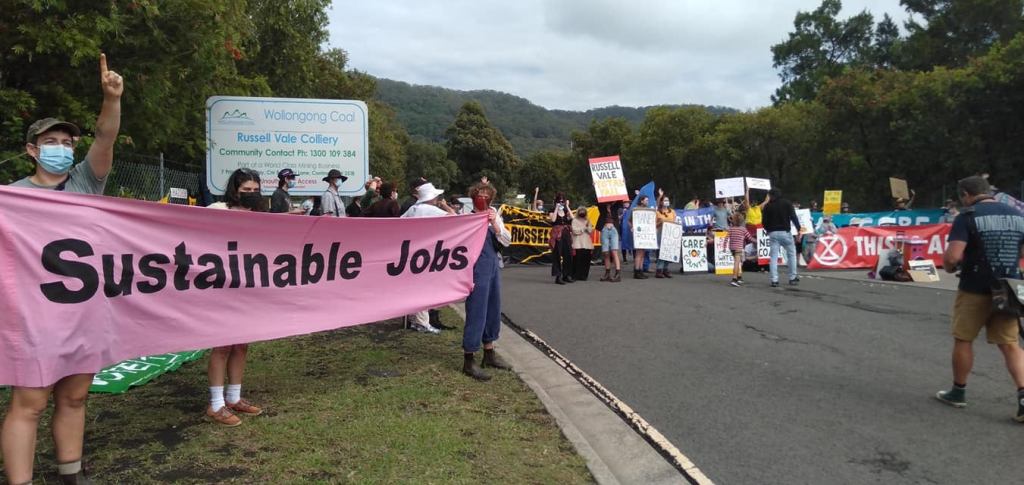
Meanwhile, the NSW Government with the support of One Nation, the Shooters, Fishers and Farmers Party, the Christian Democrats, and the Australian Labor Party have now by-passed the IPC decision on South32’s Dendrobium extension and initiated a new plan to expand that mine. Opposition to this new plan is also continuing – https://www.facebook.com/protectourwateralliance/
In January 2022, The New Bush Telegraph published an article I wrote on behalf of POWA about the on-going struggles around mining in the water catchments. You can find it here – https://newbushtelegraph.org.au/coal-mining-in-water-catchments-must-cease/?fbclid=IwAR1Bfc4wds7sF0QRdJTEIf88N33Dt73jPqTtCnBxoFyRAUFRjUy3tR792EY
Interview: Young Communist Party activist
In 2016, my friend and comrade Alexander Brown interviewed me about some of my experiences as a young activist in the Communist Party of Australia during the late 1970s and early 1980s. In the interview we touch on a number of themes including my early involvement in the Young Communist Movement, my years as a full-time party cadre, tensions within the party between the national leadership and the South Coast District and the party’s relationship with international communist and resistance movements and domestic social movements. As Alexander said in his introduction to the original publication of the interview – “Where many histories of the CPA focus on machinations at the national level, Nick’s story reveals a living organisation with deep roots in the Wollongong labour movement and community that functioned as a family, if at times a dysfunctional one.” Alexander edited the transcript for clarity and length. I have edited it slightly for accuracy. The interview was first published on Dave Eden’s blog The Word From Struggle Street in 2018, divided into three parts. The first part was titled ‘The Party Was Like Our Family’, the second was titled ‘I saw myself as an activist, an organiser and a political cadre’ and the third was titled ‘they all knew that they didn’t agree on lots of, quite often very important things, but they managed to find the common’. Here they are together.
‘The Party Was Like Our Family’
Alexander: When did you join the Communist Party of Australia?
Nick: I joined the Communist Party of Australia in 1978. My recollection is that certainly when I applied I was 15. There was some concern about whether I could actually join as a 15-year-old because I don’t think a 15-year-old had joined before; so I think they might have waited until I turned 16 to allow me to become a member. That was November 1978. That’s my recollection.
Alexander: Why did you want to join the party?
Nick: Well, I had been in the Young Communist Movement before that, so I considered myself a communist as a member of the Young Communist Movement. Both of my parents were in the Communist Party of Great Britain when we lived in England and had joined the Communist Party of Australia when we came to Australia in 1974. My grandmother, my favourite person in the family, was a communist in Britain so, really, even before becoming active in the Young Communist Movement, I started to consider myself a communist. Not quite born a communist but certainly nurtured as a communist and so to me it just seemed like the thing to do. At the age of 15 I was already done with school. I was still there, but I wasn’t really participating in it. I was over with school and school to me seemed like a part of a capitalist society that I didn’t really want to be part of. I didn’t want to be involved in school and I didn’t want to be involved in the sort of society school was preparing me to be part of. I was thinking about becoming a full-time communist cadre and hoped to do that by leaving school, joining the party and becoming an activist, an active member of the Communist Party and working for the party in whatever way the party thought I could be the most useful.
Alexander: Was it the Young Communist League?
Nick: Movement, by this time it was called Movement. Eureka Youth League, was what it used to be called, but now it was, or certainly down here [in Wollongong], it was the Young Communist Movement. I think it was a sort of a reinvigoration of what had been the Eureka Youth League and sort of fallen into inactivity, or for some reason they had decided to change its name. I don’t think we were the only Young Communist Movement branch around, although we didn’t call ourselves a branch really. I think there was a few others around, but we certainly weren’t in contact with them.
How many of us were there? There was I suppose about eight, ten, ten of us, something like that, who were active. People would come in and go out but there was probably about eight to ten of us who were in it for a year or two.
Alexander: And that was in Wollongong?
Nick: That was in Wollongong, absolutely, yeah, Greater Wollongong. My brother and I were in it from this part of Wollongong, Mt. Keira. Most of the other young people were from further down south. And they were kids of party members but also there was three, I think, three young people who were children of left Labor Party members, whose parents wanted them to get a communist education in the movement rather than become active in a Young Labor branch or anything like that.
It started with a reading group, reading the Communist Manifesto. What would happen was that a group of us, and it was probably only half a dozen of us at the time, I think there was me and [my brother] Richard and Marlene, who was the daughter of the secretary of the wharfies (Waterside Workers’ Federation). There was a couple of Labor Party people’s daughters and one son and there was the metalworkers union [organiser] Steve’s daughter, so maybe seven. Those are the ones I remember definitely turning up pretty much every week. And the party organiser, Pete, would read a part of the Manifesto and then he would explain what the hell he was talking about. This may mean going, ‘bourgeoisie, OK bourgeoisie, blah blah blah’, or he may read a paragraph and then explain the paragraph. Up until not that long ago I still had the cassette, because he recorded the discussion, so you could take the cassette home if you were interested, which I was, and re-listen to it. It was supposed to be a discussion but, you know, most of the time it was Pete talking. There was some discussion and there was some, ‘OK you’ve explained bourgeoise and proletariat, but what about this?’ So that was the first thing we did.
Then we would also have weekend camps at Minto where we would talk about all sorts of things and just have a good time. So, we would socialise and go swimming and play games, and get friendly with each other, as it turned out I ended up going-out with Fiona, the metalworkers’ organiser’s daughter, and those at the camp would occasionally have a drink or whatever. So, those were educational weekends, and there was education going on, as well as just socialising and becoming a group. And then, after a while, we started to decide on which issue we thought was the most important issue that we could organise around and we decided that was uranium mining. So we all agreed that that was the issue we thought was the most important at the time, that we actually were the most motivated to do something about and so we set up a Secondary Students Against Uranium Mining branch in Wollongong. We were the members initially, so it was a Communist Party front [laughter]—I think we might have talked about it in those terms at some stage—but that wasn’t our intent. We didn’t see it as a recruiting exercise, we saw it as an exercise in learning how to organise and getting other young people involved in politics around an issue that we knew young people were interested in and we were motivated to do stuff around. So that was our main activity, apart from educational stuff. Our main activity was organising Secondary Students Against Uranium Mining.
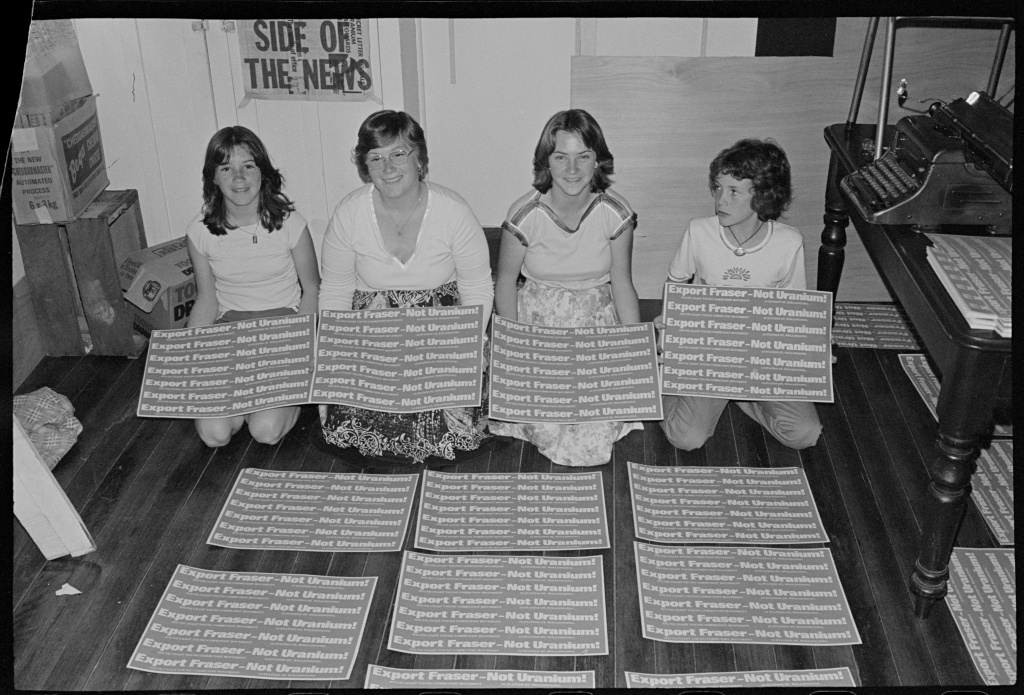
Alexander: So, what year is this roughly that you are talking about?
Nick: We are talking about ‘76/77 mainly.
Alexander: You said Secondary Students Against Uranium Mining ‘branch’, was that an existing organisation?
Nick: There was other Secondary Students Against Uranium Mining branches or groups–I’m not sure, I can’t remember exactly the term we used–around the country. Not a lot, but there was some. There was a Movement Against Uranium Mining, which was the sort of umbrella organisation for all of the groups taking action around uranium mining and many anti-nuclear groups. They’d encouraged the setting up of these groups of Secondary Students Against Uranium Mining and that had caught on elsewhere and so we could actually access badges and various merch and stuff, information materials and so forth from elsewhere. I think we got it straight from the Movement Against Uranium Mining. They sent it to us and we could then distribute it through schools and that’s what we did. You see, this way, we were school kids, yeah. I think even Richard, who was probably our youngest, were all in high school by then, or certainly he was just about to become a high school student. So, we’d take the stuff to school, badges and so forth, you’d sell the badges and give the information out. Have stickers, try and sneak them up in the toilets and whatever, that sort of thing. That’s where we spent most of our time, at school.
Alexander: So, at a broader level, was that movement associated with the Communist Party or was it just your local group that was particularly close to the Young Communist Movement or party organisations?
Nick: Look, I’m not aware. We weren’t really in contact with other Secondary Students Against Uranium Mining groups. We were sort of concentrating on doing grassroots stuff here in Wollongong. We didn’t get out and about that much as young people. Pete may have known more about it than we did, as the party organiser. But certainly it’s likely that there was some other branches or groups of Secondary Students Against Uranium Mining that were supported by the party. I don’t know that the Young Communist Movement was that involved elsewhere, but it’s quite possible they were. But there weren’t that many Young Communist Movement people anyway so, it’s likely that it also wasn’t the case or they were doing other things. You get a group of young people together and maybe there was something else going on in their region, or in their lives, that they thought was more important, that they were involved in.
Alexander: You just mentioned that Pete was the Young Communist Movement organiser, was he also the …?
Nick: He was the party organiser. So he wasn’t, you know officially, the Young Communist Movement organiser, there was no Young Communist Movement organiser, there was just the Young Communist Movement group and he was a part of that as the party organiser. If Pete hadn’t taken it upon himself to establish the group, there would be no group. So, it wasn’t like we were resentful that there was some old bloke there. We didn’t really consider him—he was in his twenties at the time so he wasn’t that old—and we liked him and we knew that without him there was nothing happening. It wasn’t like ‘oh they’ve imposed this on us’ or ‘he’s running the group or controlling us’ or whatever. We didn’t really know how to organise, we weren’t that motivated that we would have done it on our own and we were basically following what the party wanted because that was what we had grown up to expect to do. He was involved all the time, but he was pretty good with letting us do what we wanted to do, and encouraging us to do what we wanted to do. But obviously he was also supposed to be keeping an eye on us and making sure we were doing the right thing. Which sometimes he did, and sometimes he didn’t.
Alexander: Why did you want to go to the reading group in the first place? Why would you have decided to be involved? How did you find out about it?
Nick: Well, my parents were in the party, and I was already going to party events. The party would hold things, film nights those sorts of things. They were public events and anybody could go and I would go, and I’d talk to Pete, or I’d talk to other comrades, and they knew that I was interested. I think I wasn’t the only one and they realised, Pete being an organiser and a pretty good organiser, realised, we’ve got these young people who are interested, well let’s do something here and let’s start with the basics, which is sort of where I was at anyway. I had read the Communist Manifesto before we had that group but, it’s like I’d read it but what the hell!? You get the gist, but you want to know more than the gist. So that’s why I wanted to go because Pete could explain things that I didn’t understand and I could ask him questions about things I didn’t understand and I wanted to know.
Alexander: So those other people who were part of it. Would most of them have had a similar sort of trajectory do you think?
Nick: I think you sort of had fifty-fifty. I think fifty per cent was the same sort of thing and fifty per cent their parents had basically sent them. It was difficult for some of the Labor Party people because at the time, being close to the [Communist] party as a Labor Party member could lead to suspension or expulsion. It was a precarious situation for them. So how publicly they aligned themselves or involved themselves with party events and so forth could be difficult for them, especially since the two families I can think of the most had fairly senior positions within the local Labor Party. It wasn’t like they were just rank and file members. They had more to lose and the right-wing were more on their case and paying more attention to them. I think those young people hadn’t been in contact with the party. I hadn’t seen them around really as much, although you would see them at demonstrations and so forth and clearly there was friendship connections and social connections. I don’t know what was going on in their lives because I hadn’t come across them before but their families would have known comrades in the party and they would have socialised together and that sort of thing. I think basically their parents went, ‘we want you to go to this to learn’, so it was a form of schooling, rather than them being motivated to do it themselves.
Alexander: But in both cases they had a family connection to either the labour movement or the party in particular. They weren’t total rank outsiders to the culture of the Party and the movement.
Nick: Absolutely not. No, nobody was, no. And it never expanded beyond that. I don’t think there was ever any intention to. It was not a recruitment thing. We weren’t looking to recruit people to the Young Communist Movement. It was really seen as an educational thing for those who were already in the milieu and part of the culture and the party’s networks and so forth.
‘We are a communist family’
Alexander: That’s interesting because it implies that there was a real sort of family and cultural continuity or something like that with the way the party operated in Wollongong. Could you talk about that.
Nick: We often said, and often say, the party was like our family. It was very much, in Wollongong certainly, built around those sorts of familiar social connections and it was small enough to operate in that way. We are talking a hundred and something people, I think, as party members during these years we are talking about, the late 70s and early 80s. You can see that as a large but extended family. I remember Marlene, who was in the Young Communist Movement with me, she was at one stage wanting to write a book about being a communist child and how that works and we were talking about we could write it together because it is a very similar experience for children of communist party members. It was like, OK, we are a communist family. With active party members, that was your life. Being a communist was part of your life and so to be part of a communist family was to be a communist in many ways. Then the party, in a place like Wollongong, was an extension of that family so as you grew up you became more connected to that extended family. You can see that even with a fairly transient population, which Wollongong’s had over the last say hundred years or so, you can see the names, the family names, reappear, as you can in the party more generally, and party members’ children very often became party members and so forth. We thought of the party as a family. It wasn’t just that sort of hereditary handing down from generation to generation the communist legacy and the communist view of the world. It was also that for a family like ours and many families were the same, who’d come from elsewhere in the world, who had broken their ties with their extended families, this was a replacement. And so the party as a family very much operated as that sort of support network that your traditional family would offer you. So, Sally Bowen was like my grandmother. I’d left my grandmother behind in England. Sally Bowen, as the matriarch of the party, was our grandmother. Dave Bowen, her partner, was our grandfather. Pete wasn’t exactly a dad because he wasn’t quite old enough but there was those sorts of father figures and they would play that role. Not just was this about organising political struggle, but these were relationships of care. That was crucial to why I wanted to be more involved with the party, but also why the party worked so well in a place like Wollongong and why it was so powerful and influential. Because care was really crucial to the way we related to each other and the way we related to the class in general.
Alexander: Why do you think that worked so well in Wollongong?
Nick: Look, there’s all sorts of intangibles with Wollongong and the more I think about it the more I’m not sure. I think it does have something to do with the fact that a lot of people came here from elsewhere. That in many ways the city doesn’t have that long history and people came from all over the world and didn’t have those support networks and those caring relationships any more, that those had been broken and they tried to establish them in a different way. For me, communism is love and if you care about the class you care about other people and suffering and so forth, then when you are coming to a political realisation of the sort of society we live in and you are organising around communist ideas, however varied and diverse they are, somewhere there it has got to be about care and really it should be about love. Wollongong being a place where people came from all over the world, it is a hugely multicultural city, I can’t remember, I’ve seen different numbers at different times, but people have come from all over the place. The people who were attracted to the party, it wasn’t that they came here and they suddenly became communists. They were bringing communist traditions from all over the place. ‘The common’ of the communist traditions was caring and having those sorts of relationships.
But I think there is also the fact that Wollongong, if you look back at the history of the party in Wollongong, you are looking back to the 1920s, you are looking back to the Unemployed Workers Movement and the Unemployed Workers Movement for me is the key movement in the development of the Communist Party. In Wollongong, the Unemployed Workers Movement was incredibly important, much more important than in many parts of Australia. As somebody who has been active in unemployed people’s movements, I am aware of the crucial role of caring, supportive cooperative, collaborative relationships to survive day to day. Not just as some sort of political project but as a social project, about social relations of care and supporting each other, and that was crucial to the party’s formation in Wollongong and crucial to the history of the party’s culture. For me that was true, it’s true in other places, but in Wollongong compared with other places in Australia and elsewhere it was much more important. There was still people around when I was in the party who were involved in the Unemployed Workers Movement. They were still there and often they were the most respected matriarch or patriarch or whatever, if you are thinking of it as a family, the most respected long-term comrades. They had learned the basics of how to struggle and how to win, how to survive, their politics, via the Unemployed Workers Movement, and the impact of the Unemployed Workers Movement, and it was built around those sort of day-to-day caring relationships. Looking after each other. Having to rely on each other and the importance of how you treated other people. The Depression was the pivotal moment in that generation’s lives. It had a major impact on anybody who lived through that period and the Unemployed Workers Movement was the most important social movement at the time. Anybody really from that generation had internalised, if you like, that sort of survival strategy. A survival strategy which was about being really bloody nice and actually giving a shit about other people. For me they were the sort of people I wanted to become. I wanted to be like those people. As soon as you met them, you appreciated that they were different to most people that you met.
‘I saw myself as an activist, an organiser and a political cadre’
Alexander: So, around 15/16 you moved into full party membership or something along those lines. What changed. What did that involve?
Nick: Well for me it happened at the same time as I became a full-time party cadre. There was no being a party member and then just going along to branch meetings and being involved in the branch activities. As I recall it, I got my card pretty much at the same time as I left school and went to work for the party full time. I did become a member of the Wollongong branch, which was the major branch, but only one of a whole number of branches. I’m trying to remember how many branches. There was a university branch, the Wollongong branch, the industrial branch, the waterside branch, there was the mining branch, a Yugoslav branch. Was there another one? I think there was half a dozen branches. Anyway, I was in the Wollongong branch. So obviously I went along to branch meetings, but as a full-time cadre really I was involved in all of the activities of all of the branches in different ways and I was working under the direction of the organiser, who was Pete. We had a bookshop worker, Viv, who did the accounts and did all of the admin at the party rooms. So there was three of us there. The party had an office in town, next door to the Trade Union Centre. The front of the building was the bookshop, then the office, then there was the printery on the side and then there was a small meeting room and the large Len Sutty hall at the back, where the major party activities would happen. So, I would work in the office helping out Pete with whatever, sometimes Viv with whatever. Obviously if people came in I’d be selling books and so forth. We’d go out and sell Tribune. We would produce party propaganda. There was an industrial bulletin, a waterside bulletin that came out, well the waterside bulletin came out every week, the industrial bulletin came out more irregularly than that. We would also put out miners bulletins. There was a whole range of activities we ran: fundraising stuff every week at the waterside pay line and at all the mine pay lines as well, which brought in a lot of money and we’d organise stuff around that. We had a press and I learned to operate the press. As time wore on, I became basically the printer. So I would do all of the party printing, all those bulletins and leaflets and whatever, on the offset press there. Occasionally I’d write for Tribune or write for the bulletins, the industrial bulletin or the waterside bulletin. But that was only occasionally. A lot of the stuff was just general stuff and Pete would say can you go and do this. We had a party car, a beaten-up V-dub, which was terrible because the handbrake didn’t work. When you drove out of the party offices, you were immediately on a hill, you didn’t have a handbrake. It taught me to drive, a bit. I mean I already had a license but still.
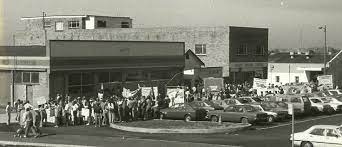
Alexander: So where was the bookshop? Are you talking about where the current trade union centre is?
Nick: It was in Lowden Square. So, the Trade Union Centre, I think it is still called Fred Moore House, where the [South Coast] Labour Council and so forth are now. That’s a new building, a relatively new building. In the ‘80s the old building was demolished. All the protests started there, out the front, same as they used to. They have for years. Lowden Square, that’s where the protest starts.
There was a building similar to that but smaller and next door was the party building, one storey. As I say, bookshop at the front and the Len Suttey hall was about half of it, which was out the back. There was an alleyway between the car repair joint next door and the party rooms so you didn’t have to go through the bookshop and the offices to get into the hall, you could just walk down the side and so when there was stuff on, usually at night, or meetings on, you could just walk down the side and use the hall. Other groups would use the hall, it wasn’t just Communist Party stuff. Some of the organisations that were close to the party would use it, some trade unions would use it, some social events, Australia-Vietnam Friendship Society film nights, that sort of thing.
Alexander: All those different branches you just mentioned, Wollongong branch, industrial branches, waterside branch etcetera, how were they connected to one another?
Nick: They were connected in that there was a South Coast District Committee. Each branch had representatives on the South Coast District Committee and they would meet once a month. I think branches met weekly, maybe some not quite weekly, but I think that was the basic structure. Branches meet weekly and the District Committee meets monthly. That’s my recollection. Maybe I’ve got the time wrong there. Maybe it wasn’t that often, but that was the basic structure. The reps would go to the South Coast District Committee. They would say, oh this is what the branch is doing etc. etc. They would discuss what the whole district was doing together. They would then obviously get information from the National Committee which would say this is what we want you to do. They’d discuss it. That would then be sent back to the branch. Then the reps would come and say OK, this is what the District Committee is doing, this is what the National Committee is doing. That’s how the communication and representation worked.
Alexander: As a full-timer, did you attend those meetings of the District Committee?
Nick: I was elected to the District Committee at some stage. So, initially no, I didn’t, I was just involved in my branch. But I was elected to the District Committee after a year of basically showing them that I was more than just a young idiot. Not that I wasn’t a young idiot, but that there was more to me than that. That I was a serious, full-time party cadre. We had a District Conference and then District Conference would elect people to the District Committee so I got elected to the District Committee. But I’d go to other branch meetings with Pete because as the organiser he would go to all meetings and sometimes I’d go with him, depending on what was happening. Since they were often held in the building I was working in, it wasn’t like going off anywhere, they were happening there. Maybe not the university branch. Maybe the university one met at the university. I don’t remember going to those, but all the rest. There was also a women’s caucus. It wasn’t a branch but it sort of had a similar relationship in that reps from the women’s caucus would speak about the women’s caucus activities. Obviously there were women on the District Committee and they would be involved in the women’s caucus, at least some of them, maybe not all of them. And they would do a similar thing, report back and have …
Alexander: So, members of that caucus were themselves members of another branch?
Nick: Yes, they were. So all the women in the other branches. and let’s face it, there weren’t a lot of women in the mining and industrial branches, but say the university branch and the Wollongong branch and so forth had a chance to meet together as women and then talk about things and communicate with the District Committee and the branches about these things.
Alexander: And they did meet as women exclusively.
Nick: Indeed they did. I didn’t go to the women’s caucus.
Alexander: Were you paid in some way as a full-time party worker?
Nick: I wasn’t, no. I was on the dole. Luckily for me the social worker at the Department of Social Security was a party member, so whenever they hassled me into looking for work more conscientiously, or doing things that were going to take me away from my party work, she would tell them that they shouldn’t hassle me. She’d basically make sure that they left me alone so that I could do my party work. So that was very handy, to have her there.
Alexander: What about Pete as the main party organiser, would he have been paid?
Nick: Pete got something and Viv got something. They were older than me. It was a lot more difficult for them but they would have got something. But we are talking very, very little. As my printing skills got better I went to work a couple of days a week up at Spot Press (the CPA’s press), where they produced Tribune and so forth because the party was keen to get me more involved in that. They were basically training me up as a printing apprentice. Then they covered some costs, I think transport, maybe they got me lunch or something like that. That was up in Glebe. I would go up there a couple of days a week. I did it for a while but I didn’t really want to be a printer. I didn’t like travelling up to Sydney and I didn’t want a trade. I wanted to be a party cadre. When the party said this is what they wanted me to do I gave it a go and realised that it was just basically doing a normal type of job that anybody could have done, communist or not. They could have got somebody else to do it, obviously not as cheap as me. But it wasn’t what I wanted to do.
When I first arrived there was a big poster on the wall when I walked through the door, ‘Trot Guide’, and I’m like, ‘bloody hell’, the party is really taking this sectarianism against the SWP [Sociaist Workers Party] fairly seriously! But it was literally just on the same road as the Wentworth Park greyhound race track. It was actually a guide for the trotters. They did a lot of commercial work. Again, I was working sometimes on commercial stuff and it’s like, I know its bringing in money for the party and that’s important and whatever but I wanted to be a bit more hardcore than that. I saw myself as an activist, an organiser and a political cadre rather than a tradesperson.
‘There was a growing tension between the South Coast district and the national.’
Alexander: I’m wondering what your relationship was with the party beyond Wollongong?
Nick: It’s funny because they seemed to me like different sorts of beasts in many ways. I was very happy to be a part of the party in Wollongong. After I had been in there a year or so, and became more conscious of what else was happening, became familiar with the local and really immersed myself in the local, I could broaden my horizons a bit more. I was brought more into the District Committee discussions and got onto a higher level of discussions about what was going on in the party and hear reports on the National Executive and the National Committee and start to think about those things. There was a division. This is the end of the 70s, beginning of the 80s. The general feeling in the District, and certainly amongst those I was working most closely with was that there was serious problems with the National Committee. That the divisions were growing again, as they had in the past. That there was some move to disband, disorganise, or transform the party away from being a communist party. Most people in the South Coast were very resistant to this. As I became more able to participate in the party on a national level, or at least being aware of what was going on and intervene in it in different ways, there was a growing tension between the South Coast district and the national. I tended to agree with the majority on the South Coast. I had joined the communist party and I wanted it to be a communist party and I had a certain vision of what a communist party was and this was now being challenged by important people on the national committee. I felt fairly alienated and estranged from that and as I learned more, increasingly bitter about what was going on at a national level. I wasn’t alone down here. In fact, most people felt similarly and so there was increasingly a tendency to do our own thing and a feeling of we are the red centre of the party and that we needed to demonstrate ideologically and practically the superiority of our position over what seemed to be the emerging national majority position.
Alexander: Do you think that relationship had changed a lot because of the dissolution process, with the local party and the national party? Or was there always that tension?
Nick: I think there had been a period where there had been less tension. What had happened and what I wasn’t really thinking a great deal about when I first joined and my first couple of years in the party was the previous splits. That wasn’t really something that I knew a lot about because I hadn’t been in the country let alone in the party when that happened. Because enough time had passed that the comrades who had remained in the party after the splits really didn’t want to concentrate on that anymore. They had spent years having to deal with that and now they didn’t want to talk about it and so I didn’t hear a lot of talk about it. You would hear occasional things and there would be occasional discussions on and talks about the splitters and whatever. But the party had come through a rocky period. The 60s and the early 70s had been a very rocky period. So following the calming down after the split of the SPA, I think people generally felt fairly united, and having a common cause, because they had survived and stood together during the split. But after a few years that was starting to unravel because the unity and the commonality in the face of the pro-Soviet people who had left to join the SPA was, when it actually came to the crunch, fairly tenuous. They had that in common and they were united around that but on pretty much everything else there were all these divisions that as time went on became more and more obvious.
Alexander: Did you participate in any national forums of the CPA?
Nick: At this time there was more and more open discussions. The party was starting to open itself up to having public forums with other groups of the left to try to, to … I think the national leadership wanted to move away from being a communist party and be a left, a broad left party. That was their strategy, so they were trying to broaden out the involvement of ‘the left’ in party discussions. I took part in the ‘prospects for socialism’ debate and various national discussions around those sorts of issues and I was elected as a delegate to one National Congress. I’m trying to remember when that was, it’s early eighties anyway, where I was elected to actually go and take part in that. This was when the clash between those who wanted to maintain a communist party and those who wanted to basically fold as a communist party were coming to a head.
‘…they all knew that they didn’t agree on lots of, quite often very important things, but they managed to find the common.’
Alexander: What about the communist movement beyond Australia. What was the relationship there through your experience? You were after the split [with the pro-Soviet Socialist Party of Australia] I guess.
Nick: Well, that’s right I am after the split but there were still fraternal relations and the fraternal relations were still important for the struggle. Of course, most comrades were concentrating on the local, the regional. But for those who were thinking more grandly, international relations with other parties were incredibly important. What you found was that, for instance, those who were being influenced by Eurocommunism were very keen on their relationship with the Italian Communist Party, the biggest communist party in Europe and very influential. Eurocommunism was very influential in the party.
Alexander: Including down here?
Nick: Not as influential down here as within the national committee but yeah it was. If you think about the history of Marxist-Leninist thought down here, then Eurocommunism had a major impact. Absolutely it did. You could see that when the Accord process happened because a lot of the Accord ideas were similar to Eurocommunist ideas. So, for somebody like me who considered Eurocommunism really as a form of reformism, we would draw parallels between the rhetoric, the left reformism of Eurocommunism, the Accord process and the rapprochement with the Labor Party and the left of the Labor Party and stuff like that. So it was influential.
We were very keen on relations with the Vietnamese party. One of the reasons for that is that you had a whole layer of party members who had come to the party via the anti-Vietnam War movement so they were very keen on good relations with Vietnam, good relations with the Vietnamese party. At the time, the mid to late 70s, the Vietnam refugee crisis, so-called, was happening. There was a whole movement of anti-communist Vietnamese into this part of the world and so that became an important relationship as well, the relationship with the Vietnamese party. I can remember a number of events down here, where we had Vietnamese party reps or government reps come, where there would have to be organised a defence group to defend against attacks from the anti-communist Vietnamese and so forth. At the same time you had the Nazis trying to come in, National Action starting to try and come into Wollongong to organise against Vietnamese refugees and the party having to organise defence of the Vietnamese refugees, often who were anti-communist, so that was an interesting time. The relationship with the Vietnamese party, especially for those who had come or been deeply involved in the anti-Vietnam War movement, this was very important.
The other international relationship that had the biggest impact down here was East Timor. There was an East Timor support committee down here. FRETILIN would send people regularly. There was a lot of fundraising for FRETILIN, different ways of supporting FRETILIN, that involved the wharves down here and the party and so forth, so that was very important. And then there was some relationships with other parties via people who had come from that part of the world, so the Chileans, the Chilean party. There was a number of Chileans who had escaped the dictatorship, so our relationship with Chile and the Chilean situation was important and there was solidarity for different Latin American and South American countries. They were important as well and the party was involved in those to a certain extent.
Britain was also important because obviously English-speaking. A number of the trade union officials down here were of British heritage and so—not so much with the party as with the trade union movement—the British experience had a major impact on the trade unions, the industrial branch, the miners branch. Later on with the British miners’ strike and earlier before that, with the Lucas Aerospace transformation and things like that, these had a major impact on the trade union centred parts of the party in Wollongong.
‘The progressive social movements were part of the class’
Alexander: What was the relationship between the party and social movements? The party and the trade unions?
Nick: The relationship was pretty good in the sense that there was a lot of solidarity. It wasn’t a coincidence that we had a branch for the wharves. And we had the industrial branch, and so forth. The point of these branches was to caucus outside of the union and then to go into the union with the party line and make sure that the party line got up. But, of course, the party line at the time was that the social movements, the progressive social movements were part of the class. It was a crucial difference between the party’s position and the right-wing Labor position and the conservative forces within the trade unions about supporting social movements. The party differentiated itself within these and took quite a strong stance in saying social struggles are union issues, we should support these groups, these movements need our support and so forth. And that had been a long hard fought struggle for many years. There was a lot of support for social movements within the party industrial branches and within the trade unions. Well, it varies, that’s a generalisation. But generally I think that was the case in all of the social movements, the main social movements that I was involved in, environmental, anti-nuclear, women’s movements.
Alexander: What was the party’s role in the movements?
Nick: What would happen is if you were involved in a social movement. Say, I’m a Wollongong branch member. The one I was most involved in, initially, was the anti-uranium movement and Hiroshima Day committee. The peace movement. I would go to the meetings of say the Hiroshima Day Committee. I would report back to the party branch. We would discuss as a branch what we thought the Hiroshima Day Committee should be doing. We would discuss who was going to the meeting, we’d agree on who from the party would go to the meeting. It didn’t mean that other people couldn’t go, but we would come to a united position on the main questions that we knew were going to be brought up or were already being discussed. We would go along to those meetings and we would put forward the agreed party line. We would try and get party people elected to positions, but we wouldn’t try and take it over. We’d discuss that. ‘OK, well maybe this person is good for this position, that person is good for this position. Oh, if somebody wants to do that oh yeah we’ll support them we’ll vote for them etc, etc.’ We’d discuss all of that. We’d go along to the meetings and we would follow-through as closely as possible, or as closely as people could remember to do or whatever, what we’d discussed. And then we’d come back to the next party meeting and go ‘OK, well this is what happened at the last Hiroshima Day meeting, how can we make things better or what went wrong or why did you do this or whatever’ and on we’d go. As I say, we weren’t looking to control, in general, but certainly to influence, and as strongly as we could influence whatever organisation we were a part of.
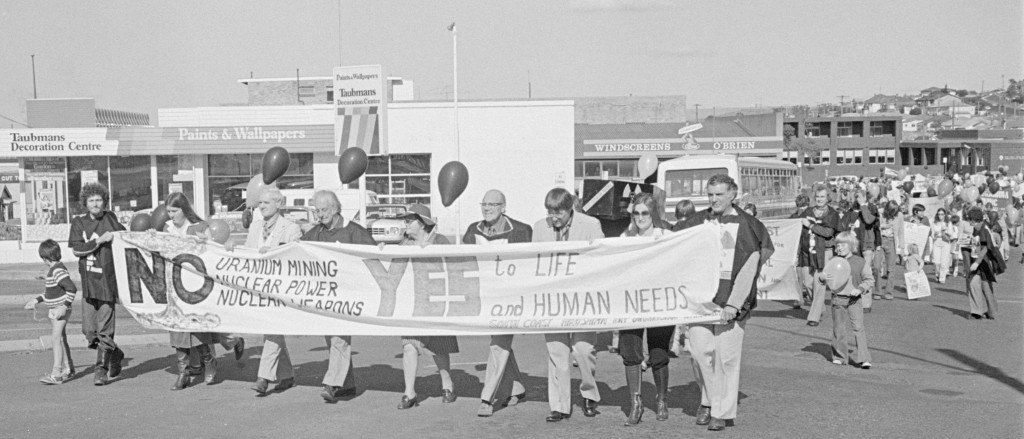
We were very keen on having good relations with other left forces, whether they were non-aligned or aligned with the Labor Party or whatever. So, we would try and create a cooperative and collaborative situation in these movements. But that didn’t mean we wouldn’t fight and argue and debate and try and hold the party line as much as possible and bring the influence of the Communist Party to bear as much as possible. We would often talk about things like, well in the Wollongong branch, say, there would be other people who weren’t involved who would say, ‘oh well why don’t you get the committee to do this. Contact my union or come to the university or do this and do that.’ And then we we’d go back and we’d go, ‘we’ve been talking to somebody who says we should do this and that.’ In general, that sort of discussion would facilitate and strengthen the movement because we had these contacts that we knew we could trust and who would deliver, usually. And that was well understood generally within the movements. It wasn’t like ‘oh you communists are doing all this.’ It’s like, the party is generally respected, it’s going to help. It will help. The secretary of the labour council is a communist. The secretary of this union is a communist. The person involved in this university thing is a communist. We know they can help and that can make everything easier.
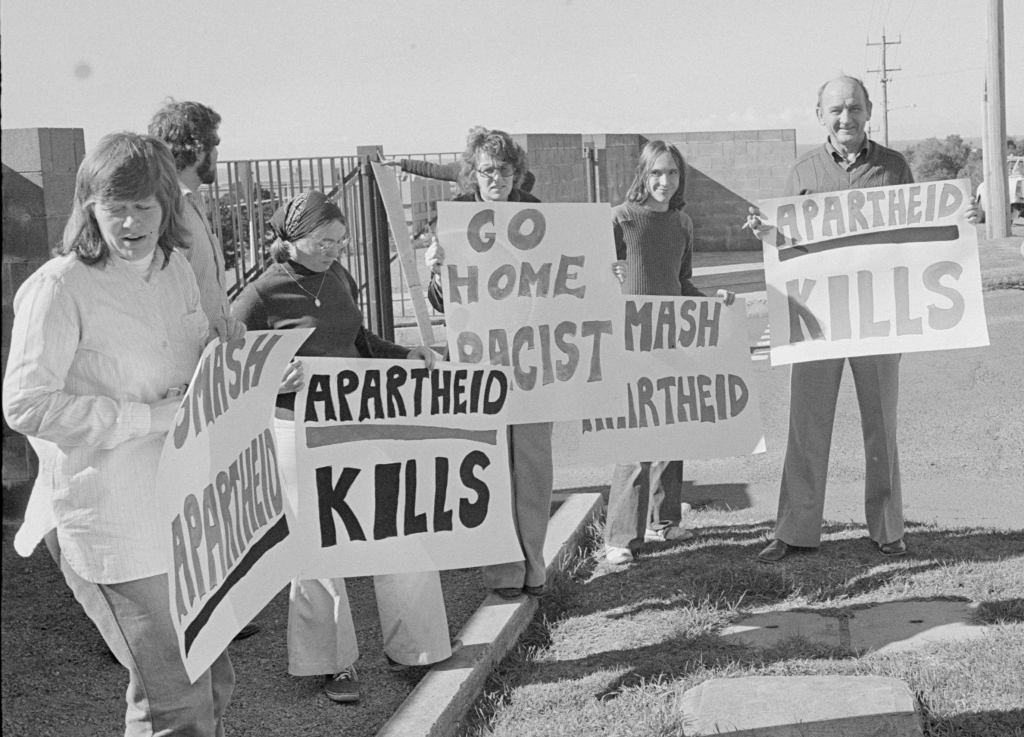
‘It was like a history of the communist movement all put together’
Alexander: Something occurred to me when you started talking about love and family and that sort of relationship. What, if any, were the contradictions between that loving family and the fact that it was still a hierarchical organisation and one with a somewhat dogmatic outlook on the world. How did that contradiction manifest itself?
Nick: Well, I suppose much like a family, and I did talk about Sally as a matriarch and other comrades as patriarchs, and they were. Yet, amongst what I experienced—and other people experienced it differently—I experienced the party as a supportive, nurturing, caring, group of people, that patriarchal and matriarchal role was much like in a good, loving, caring family. They were trying to look after you. Sure they’d keep things from you, but they thought they were doing it for your own good. Dogmatism was something they had generally railed against. The older comrades, the patriarchs the matriarchs, had railed against, had fought against that, against the more dogmatic SPA splitters. The new layer, the younger layer of cadre or more active comrades had come in from the Vietnam war movement. These were the 60s generation so they were not dogmatic in the old sense, they were still dogmatic, but not dogmatic in the old sense. We used to joke about letting a thousand flowers bloom and so forth. The variety of positions and perspectives on what communism was, on the world, and the nature of class struggle was vast. There was all sorts. Some comrades in the party were anarchists, they were. Some were Eurocommunists, Stalinists, bloody drugged-out hippies, you name it, Trotskyists. I mean they were from everywhere, all over the joint. Old comrades who had been formed in the cauldron of certain struggles. You had everything. It was like a history of the communist movement all put together and they all knew that they didn’t agree on lots of, quite often very important things, but they managed to find the common. Again, one of those common things was looking after each other, just being caring and trying to make the world a better place. And most of those people most of the time, that’s what they were doing. There were contradictions. There were some serious problems among the party members: alcoholism, the impact of the usual things that you find in any extended family. You had abusive relationships. You had domestic violence. You had a hierarchical party, so you had people who were power tripping and authoritarian. You had Stalinists who wanted to kill ‘the enemy’, you had all sorts of things going on. They, to me, were, well, certainly less important than in many other organisations or times I have been involved in things. But again, I think I was lucky compared to some people, my experiences were different to other people’s. Certainly there was a lot of sad and bad things that went on as well and some people came out of those experiences severely hurt and disturbed and so forth. Some of that was deliberate. We know, apparently, that there was bloody ASIO spies and who knows what involved in local party branches. Some of the comrades were authoritarian and abused their power and abused people and treated people like crap and often these were people who were very sensitive, caring people who trusted that a communist would act like a communist and didn’t realise that sometimes communists acted like shit.
There were plenty of contradictions but I look back at that period more fondly than many will, I think because for me what I got out of it was much more of the nurturing, supporting, educating. Just this living history of the communist movement and that any comrade I would talk to or be involved with or work with or encounter would just add this richness to my life, even if sometimes they were arseholes, that I just found so rewarding and helpful and made my life better.
Grief Stricken, Tired, & Hopeful

“I didn’t want to talk to my friends about how afraid and sad I was because none of them were doing well either and maybe if I told them what I was thinking then I would make them feel worse. That basically meant that I was never actually telling anyone what I was thinking; I just felt full of feelings that would be better not expressed . . . as if my relationships were becoming yet another casualty of [the crises].” (Sarah Miller, 2021)
It was quite difficult writing a post about grief while feeling overwhelmed by it. However, I usually find it helpful to blog about the things troubling me and hope that it may be useful to others. During the past year, I’ve been wondering about grief as a form of love, about relentless and anticipatory griefs, about how we can heal our hearts, and how we can support each other while we do so. At the same time, ten weeks into a Covid-19 lockdown, I remain nervous about focusing on and exploring my own grief and potentially adding to other people’s fears, anxieties, and distress. Even so, I continue to be hopeful.
In the first six months of this year, I helped to care for three people as they died. For months on end this involved dealing with my loved one’s and my own emotional roller coasters, illness, hospitals, doctors, nurses, aged care centres, lawyers, bureaucrats, funeral services, and cemeteries. Since all of this has occurred in the midst of mass death and sickness, extended lockdowns, and other restrictions, my micro griefs have been entangled with the macro griefs of this period. As a result, I’ve found myself exploring a wide range of griefs, the impacts of grief over time, reconsidering some of my assumptions about them, and how the grieving process is much more complex than generally anticipated or understood.
There’s a common expectation that when mourning occurs there’s a period of intense grief which will then lessen over time. However, as discussed in my previous post on Grief, Love and Rage, we are having to manage multiple forms of long-term grief including ecological grief, democracy grief, economic grief, employment grief, and the end of so-called ‘normality’. Because people are grieving all around us and suffering from collective pain, while having to be physically distant from each other, it makes our griefs feel more profound.
My own griefs have gone on for much longer and have been much deeper than I expected. While lots of people are experiencing the grief of losing their health, job, income, or losing contact with others, or with various activities and experiences, we also face a deluge of grief triggering news about climate change, environmental crisis, Afghanistan, refugees, the anniversary of 9/11, the ‘War on/of Terror’, and much more. These are triggering because the griefs associated with them are continuous and underlie our more immediate or overt griefs. As I have opened-up about my own grief, friends have shared their thoughts on how they mourn for friendships that have ended, when they’ve lost a community, or certainties they once had, when they feel lost, lose traditions they love, or when they grieve for all they didn’t receive, or for what didn’t happen, spurring me to think more about my own lost plans, hopes, and dreams.
The experience of caring for my aged mother-in-law, who suffered from dementia and lived with my partner and I, involved losing her and grieving that loss long before she died. This complicated the grieving process and highlighted, for me, the prevalence of anticipatory grief – the feelings we get about what the future holds when we’re uncertain, when we sense there’s an impending dangerous situation, that what is going to happen will involve significant loss. For example, I’ve been recalling the anticipatory grief I experienced while watching the second plane fly into the World Trade Centre live on TV, or when they announced the election of Donald Trump. Today, with the pandemic further undermining our sense of safety, we are collectively experiencing a variety of anticipatory griefs in unprecedented ways, some of which seem relentless.
Relentless Grief
Recently, when I visited the Lakeside Memorial Park to pick-up another family member’s ashes, I was given a pamphlet on ‘Coping with Grief’. It stated: “Grief is not well understood in our society and some people try to deny it, postpone it, or avoid it. There will be big and small adjustments which have to be made in your life. You will change. Your routine will change. Your moods will change. All of this is called ‘grief’. It is really about adapting to the changes in your life, your thoughts, your hopes, your beliefs, and your future.” This focus on how grief impacts the individual prompted me to consider both the contradictions and complexities of how grief is commonly understood and how grief is collective, social, and relational. The pamphlet went on to provide a list of things that may help someone deal with grief and face the changes it brings. For example; ‘It is best not to put a time frame on the whole experience’ but ‘Stay positive in your thoughts – You will get over this.’ I wondered if this was true, especially when elsewhere the pamphlet warned; ‘Be aware of advice givers – Don’t allow people to entice you into replacing or avoiding your grief . . . accept loss as a part of life.’
Over the past few years, it has become increasingly clear, to me, that grief is relentless, intricate, can be hard to recognise, and is an overarching and underlying condition of our lives. Even when we try to ignore grief, the weight of on-going griefs of the past, the immediate impacts of today’s griefs, and the threatening griefs of the future remain with us. When I was younger, I often felt that if I started crying I may never stop. Thankfully those who have helped me to navigate my grief have stressed the importance of acknowledging what we are going through, the importance of crying, of accepting that our grief is real and reasonable, that we can continue to grieve, while appreciating that the past and the present is not only grim, and the future remains open to much more than sadness and suffering.
None-the-less, feeling overwhelmed, vulnerable, and wanting to withdraw is increasingly common. Especially when it’s difficult to know what we can do in the current circumstances. When coming out of lockdown a little while ago, a friend of mine in Melbourne found that they were having trouble accessing happiness and just wanted to hibernate. They wondered whether this was because of ‘the accumulation of lockdown fatigue and post trauma of a kind, the sense of unease that this could occur again . . . the sense of collective trauma and grief around the country and abroad.’ Responding to their unease, I suggested this ‘sense of collective trauma and grief’ could also be due to having more time, slowing down, thinking about, and being more engaged with the general state of the world and the many sorrows of those who are suffering from a range of crises.
Collective Fatigue
Dealing with constant grief can be exhausting. Especially if we continue to pretend that everything is alright. Along with and as part of widespread grieving, we are also confronted by individual and collective fatigue. This is widely recognised among those on the caring front lines of the pandemic and those of us who have been in lockdown for weeks-on-end. Directly, Covid-19 produces extreme tiredness and fatigue in those who contract it and it appears around one in five of them suffer from long-Covid. Covid-19 also renders more visible the pathological symptoms that already existed before the pandemic. One of these symptoms is tiredness. Most of us feel very tired.
Before the pandemic, millions of people were already tired of capitalism, tired of alienation, tired of environmental destruction, tired of the contradiction, the clash, between what we desire or sense is possible, and the ‘normality’ of what we’re made to endure. Many people are living in poverty, are deeply in debt, working more hours and more jobs for less pay and less security, struggling with psychological and physical precariousness. While we’re expected to work harder, the more we do, the more efficient we become, the worse our jobs tend to be, with lower pay, worse benefits, less job security.
During the past two years, I’ve found working from home to be more wearing than going to work, especially when this increases my solitude. Zoom meetings and perpetually looking at yourself on the screen is tiring. We must focus on ourselves, consider ourselves, while interacting with others compelled to do the same. This is a poor substitute for the in-person social interactions we’re missing. Our social distance alienates us from each other and erodes our communal life. It makes us lonelier than we were. It drains us. And it’s even more tiring trying to act ‘normal’ if you’re unhappy and anxious.
In his book Pandemic! Covid-19 Shakes the World, Slavoj Žižek dedicates a whole chapter to the question “Why are we tired all the time?” Here he explores three modes of being tired and overworked. First, that of ‘self-employed and self-exploited’ workers engaged in intense creativity and those who undertake entrepreneurial functions on behalf of management or owners. Secondly, assembly line work which is “debilitating in its repetitiveness”. Lastly, human-care work where what makes you so weary is that it involves empathy, showing affection, and constantly “being nice”. Zizek also distinguishes between those whose exhaustive work is meaningful, such as the people dealing with the effects of the pandemic, and the “stupid effort of trying to succeed in the market.” As he argues; “When a medical worker gets deadly tired from working overtime, when a caregiver is exhausted by a demanding charge, they are tired in a way that is different from the exhaustion of those driven by obsessive career moves. Their tiredness is worthwhile.” None-the-less, those doing most of the caring work also run the risk of ‘compassion fatigue’. Interacting with traumatised people, especially if you’re also traumatised, can lead to you becoming less able to connect or empathise, it can burn you out.
The growing crises of capitalism and its state forms increases our care burden, the work of maintaining people’s health and of reproducing the positive social relations on which we all depend. This labour is not adequately recognised or valued, and the pandemic has both made this neglect clearer while adding to our caring responsibilities. Around the world people have been addressing this lack and burden by challenging the definition of ‘essential work’ and making their own decisions about what to do and whether to do it. At the same time, many of my friends are struggling with home-schooling or looking after small children, while the demands of their jobs never stop. ‘If anything, they seem to go up. Work wants us to be more productive it seems. Meanwhile, our children are somehow expected to continue at the same pace with their schoolwork as they did when they were in school. By the end of each day our sanity often feels like it’s in shreds but somehow, we get up and do it all over again.’
“It looks heroic. But that’s not what it is. It’s sweaty and hard and chaotic and bloody. And it’s hard to live in this every day and then go home and live a normal life. I think we already broke.” (Mississippi nurse, August 2021)
‘Parents aren’t even at a breaking point anymore. We’re broken. And yet we’ll go on because that’s what we do: We sweep up all our pieces and put them back together as best we can. We carry on chipped and leaking and broken because we have no other choice.’ (Dan Sinker, August 2021)
Recently, I’ve been wondering whether I’m exhausted, like the Amazon rainforest, no longer able to capture carbon but instead producing carbon? Or whether I’m burned out, like the Canadian town of Leeton, the U.S. town of Greenville, or the fire in the Gulf of Mexico? And I wonder are these questions just examples of exhaustion – since the answers should be obvious? Perhaps I’m more like the fires sweeping the northern hemisphere and California? Or the funeral pyres currently burning all over India? Exhausted, burned-out, but still going.
Burnout is different to exhaustion. Exhaustion means going to the point where you can’t go any further; burnout means reaching that point and pushing yourself to keep going, whether for days or weeks or years. According to Josh Cohen, a psychoanalyst specialising in burnout; “You feel burnout when you’ve exhausted all your internal resources yet cannot free yourself of the nervous compulsion to go on regardless.” But what if we need to go on regardless? When ‘the only way for us to survive, day to day, is to normalise the events, the threats, the barrage of information, the costs, the expectations of us.’ When burnout isn’t a place to visit and come back from; but our permanent residence, not an affliction experienced by relatively few but, increasingly, our contemporary condition?
Remembering It’s Time for a Change
At my mother-in-law Elsie’s funeral, one of the key things my partner Sharon highlighted in her speech was the amount of time her mother spent caring for her and how grateful she was to be able to reciprocate this towards the end of her mum’s life. When considering our current griefs, time is a crucial concern. The clashes between the time needed to maintain our caring connections and commitments, the time needed to grieve, and the temporal demands of the world we live in, can make us feel powerless, apathetic, or focused on forms of activity and wealth that are less valuable than the time we spend doing what we want to do, doing what we love.
Many of our griefs are experienced as a loss of time, our own time and the time lost with and by others. For some, these lost moments add to a more general sense that the time of our lives is being stolen. During the pandemic and lockdowns, changes to how we experience time and how our memories operate is further complicating such griefs. Seemingly having more time can remind us of the past, when we could savour the moments and be more present. At other times, it seems that the days, weeks, and months are melting away. As our sense of time dissolves, memories are scrambled, and the days blur, with each moment becoming more like the others. This ‘Groundhog Day’ experience of time, as explored in the film, can provoke a range of responses, both positive and negative. Still, because we measure the passing of time in relation to the transformations going on around us, we also understand that the world has changed a great deal and is continuing to change so rapidly we cannot keep-up.
Exploring the climate crisis, Rebecca Solnit explains; “Human beings crave clarity, immediacy, landmark events. We seek turning points, because our minds are good at recognising the specific – this time, this place, this sudden event, this tangible change.” Yet, the major crises we’re facing are relentless landscapes, constantly overturning stabilities, and changing everything.
As we grieve, we struggle with questions about what needs to be done, what we want to do, what we should be doing, what we can do, what is helpful work and what is ‘make work’. It is widely argued that the current pandemic and extinction crises are turning points, with many people seeking to fundamentally transform the way they live. Significant social changes being driven by the pandemic and climate change include what is called the ‘great refusal’, with millions of people in China and the United States, among other places, refusing work in a variety of ways. In part, this refusal reflects the widespread grieving of lost time, lost privileges, and lost relationships. It also includes those care workers who have resigned in their thousands, worn down by the stress, suffering, and preventable deaths that have overwhelmed them. For many, this refusal is an adaptation to and preparation for a more precarious life.
Precarious Life: Who, What and How Do We Mourn?
Every day, our so-called leaders and bosses are demanding we get used to living with illness, injury and death. However, recognising the importance of adjusting to and getting ready for more precarious lives doesn’t have to mean resigning ourselves to the impacts of crises, but instead understanding and addressing the long-running and widespread disasters of capitalist society. In their book Precarious Life, Judith Butler is concerned with ‘our vulnerability to loss and the task of mourning that follows, and with finding a basis for community in these conditions.’ They explain that ‘successful mourning’ involves accepting that via their losses people are changed, possibly forever, and entails submitting to a transformation the full result of which cannot be known in advance. When we fear grieving, our fears can give rise to the impulse to resolve grief quickly, “to banish it in the name of an action invested with the power to restore the loss or return the world to a former order, or to reinvigorate a fantasy that the world formerly was orderly.” Butler asks: “If we stay with the sense of loss, are we left with the sense of loss, are we left feeling only passive and powerless, as some may fear? Or are we, rather, returned to a sense of human vulnerability, to our collective responsibility for the physical lives of one another?”
Butler also highlights the power of social norms in relation to who we grieve and who we don’t, how we value the lives of others. We all have our own as well as more social or dominant hierarchies of injury and death, disproportionate amounts of attention paid to various harmful incidents around the world. So, on September 11 we are more likely to think about those who died in New York than Santiago and one local celebrity death receives more media attention than thousands of deaths in Africa. As Butler explains; ‘The prohibition of public grieving’ means that ‘certain images do not appear in the media’ certain names of the dead are not utterable, certain losses are not avowed as loses.’ Importantly, in recent years, we have seen this hierarchy of injury and death powerfully countered by the Black Lives Matter movement, with its focus on ‘saying their name’ and the highlighting of those whose normally nameless and faceless deaths tend to form the melancholic background of our lives. These movement practices are part of a more general questioning of ‘the conditions under which a grievable life is established and maintained’ and ‘the cultural barriers against which we struggle when we try to find out about the losses that we’re asked not to mourn.’ These questions are now at the heart of intensifying struggles to address the pandemic and the widespread refusals to sacrifice our health and our lives.
Hope is Other People – Becoming Different Together
As I said at the start of this post, I want to be able to talk about grief without creating or adding to people’s fears and anxieties. I’ve written elsewhere about the importance of hope and how when we gaze into the future our optimism can be based on the reality that what we want has already and does already exist. Every day, around the world, there are wonderful things happening and this should give us confidence that when we try to create a better world it is possible to succeed. I have also written about the common care responses to the current crises, the ability of people to continually produce and organise loving social relations. So, I find hope in the ways we take care of each other that challenge and counter loneliness, powerlessness, and despair. Our struggles are relentless, and hope remains because it arises from the initiative, courage, determination, and mutual solidarity we regenerate for each other.
“Radical hope is a psychological practice as well as a political position. It requires us to accept the past is gone, and that the political and cultural assumptions that once shaped our world no longer hold true. It demands we learn to live with uncertainty and grief, and to face up to the reality of loss.” (James Bradley, 2020)
Radical hope also requires the fostering of new possibilities, even in the face of catastrophe.
Grief is experienced as a loss of connection but is more accurately the continuation of loving connections with who/what is absent. Our experiences of losing relationships, encounters, abilities, places, and times, and how we and our activity change when the object of our love is taken away, with no hope of return, can be the most painful kind of love. Grief is also a confusing and frustrating form of love because it is unclear how to love what is gone. It can seem that our love has been destroyed, has ended, or has no place to go.
Judith Butler explains that; ‘Many people think that grief is privatising, that it returns us to a solitary position’. However, grief can furnish a complex sense of political community, and it does this by bringing to the fore our relational ties, dependencies, and ethical responsibilities, showing us that our links to other people ‘constitute what we are’ and are ‘bonds that compose us.’ So, ‘When we lose some of these ties by which we are constituted, we do not know who we are or what we do.’ When we lose others, we go missing as well.
This sense of ‘losing ourselves’ and the intensified vulnerabilities which accompany it are common experiences when we love powerfully. Deep affection involves moving beyond fixed identities, as we develop our social interconnections and the boundaries between ourselves and others becomes more diffused and indistinct. Grief often includes the mourning of an imagined self which we believe has been lost, but was and is more accurately a multitude of different subjectivities in continual transformation. My griefs are different today than they were yesterday and they will be different again tomorrow, because I’m a different person today than I was yesterday, and I’ll be different again tomorrow. There is no stable society or stable self, because our social connections produce continuous practices of becoming altered.
‘No answer is in itself an answer’
When I wrote, in Care is the Cure, about how the caring activities of most people have changed the world during the pandemic, I quoted Tim Costello who early on discussed the communal sharing of grief as an act of solidarity that ensures no one needs to grieve alone, despite our physical distance. In more recent discussions with friends, I’ve suggested that when we grieve together, our pain is validated by others and when we support each other as we grieve, we can both demonstrate our love and know that we are loved. Although I have found myself withdrawing from certain practices due to my grief, I have chosen to stay connected with the people I care for, who care for me, and who care for others. As our heads spin, as past ‘certainties’ crumble and as disorientation starts to feel normal, we continue to grapple with questions such as – How can we hold onto each other, remain deeply connected, and maintain our loving relationships when we are forced apart?
While struggling to write this post, I received plenty of encouragement to keep going from friends who shared their hopes, fears and pain, who made their struggles more visible, and let me know that we are not alone. They again reminded me that supporting each other is the most common reaction to life’s crises, and that we can only be as open and present with others as we are with ourselves. Learning to be vulnerable can be a real strength and love is the greatest social power we have to change our lives, the lives of others, and the world around us. Since I don’t expect to recover from my griefs, I will try not to hide or suppress them, or deny they exist. As I look forward to more hugs, smiles and laughs, I will share my griefs with others, and they will share theirs with me. Together we can face the risks of opening our hearts and embracing the best aspects and the greatest potentials of becoming different together. As we care for each other by staying apart, we can stand together. We are here for you. Thank you, for being there for us.
Nick Southall
The Communism of Love
Over summer, I read a recently published book The Communism of Love: An Inquiry into the Poverty of Exchange Value by Richard Gilman-Opalsky. Richard’s book is a philosophical work critiquing, exploring, and synthesising the work of other love theorists, following the struggles of love in different contexts, and showing how the aspiration for love is as close as we may get to a universal communist aspiration. My own inquiry into the relationship between love and communism was crystalised in A Multitude of Possibilities where I explore and critically engage with the strategic vision of political philosophers Michael Hardt and Antonio Negri. Similarly, Richard explains that The Communism of Love is “a dedicated effort to account for the weakness that Hardt and Negri identify but do not themselves address” in relation to the politics of love.
As a Professor at the University of Illinois, Richard says he was afraid to write a book about love because he is trained in political theory and philosophy and “within those milieus it is not something that is considered hard enough . . . it is considered soft.” Hardt and Negri also acknowledge that love is a subject largely regarded as too soft for politics. Yet they insist “love is an essential concept for philosophy and politics, and the failure to interrogate and develop it is one of the central causes of the weakness of contemporary thought.”
As indicated above, I have previously taken-up Hardt and Negri’s challenge to examine love, including a piece in the recently published Love: Art, Ideas, Music, Politics book looking at the question What is Love? Here I consider how love can be both positive and constructive or negative and destructive and how what people love and how they love has a multitude of potentials. In The Communism of Love Richard explains that love is not a hunger to be satisfied, it is a process of human transformation. Exploring how love, as a practice, participates in others becoming something that they are not, he uses the example of children and how their development is understood as a process where their care givers want to help young people become what they could be and desire to be.
Richard explains that – “Love only deserves its name as long as it exists outside of or against the logic of capitalist exchange” and love ceases to be love when it becomes a commodity. In a society dominated by property relations, where exchange values have so much power over our lives, many of our conflicts and divisions occur around forms of possessiveness. As Richard suggests, people generally doubt that love can be based on payment for affection and in healthy relationships love is not performed in exchange for something. When we measure our relationships by using the competitive accounting of who does what for what reward, this tends to reproduce the exchange values of capitalism. Better than a tally of exchanges are communist relationships that motivate each person to do what they can do and need to do in order to re/produce and extend small or large communes (communism).
For both Richard and I, communism is “no political state in history, no form of government; it refers instead to forms of life, forms of being-in-the-world with others”, where “love tends toward communist forms of life, and communist forms of life tend toward love.”
“The only way not to see the communism of love is not to think about love.”
“Long before the word communism existed, love was understood as an unruly practice, as a subversive power . . . as a thing that could organise or reorganise one’s entire life.”
“The destruction and replacement of our healthiest forms of relationality with a system of exchange relations has been fatally damaging to human life and to the planet’s ecology, and the system of exchange must be resisted and ultimately abolished, if not by some form of communism, then by love – or by the communism of love. What is love without communism?”
In The Communism of Love Richard challenges how the ideas and practices of communism are widely understood, making use of Mary Gabriel’s book Love and Capital to argue that the communist philosophy of Karl Marx was produced from a love relation, with the material and living love of Jenny and Karl Marx generating to a large extent ‘Marxist’ ideas about communism and revolution. Here he details Jenny Marx’s active involvement as a a ‘ghostwriter’ for Karl’s work, by creating the conditions for its existence and shaping its form and content as an intellectual equal, so that Karl’s work is Jenny’s work and vice versa. Interestingly, when Jenny and Karl became engaged their initial creative inclination was to produce books of poetry titled The Book of Love (in two volumes).
Richard doesn’t explore the Marx family to romanticise it (far from it) but “to recognise the role that the love relation plays in the development of both thinking and being-in-the-world, and in the becoming of individual persons.” The family is often seen as a bourgeois institution and a base for conservatism which limits our love to a small group, yet families (biological and socially constructed) can also be ‘solidarity teams’, or what Richard describes as ‘little communes’, where we can share the work of love and re/produce communism. While “we can often see in the family or the couple a love that can shrink our feeling for others” it can “instead grow our feeling for others.” Being part of a couple can serve as a “connective tissue that moves us to feelings of solidarity with others outside of the biological family unit”, with many couples providing evidence that we can feel a great or even greater connection to a former stranger, from another family, from another place in the world, etc. The couple, the family, and their love are widely celebrated and commended, but they are “only healthy within the context of the development of many and varied bonds of love and friendship among people”, where an individual’s caring endeavours and achievements rely on the web of loving relationships which sustains them.
When thinking about the relationships that matter most to people, Richard argues that love is a near universal aspiration and that if there is a necessary communism of love (as dignity and human freedom) this suggests there is a near universal ambition that is communist. However, people often think about love as the private property of a romantic and sexual relation. The communism of love is a creative power that changes us in deep and meaningful ways, a transformative development of collective revolution that powerfully affects our lived experiences. The complexity of this love reflects our own multiple subjectivities which interact with other people’s multiple subjectivities. Rather than basing communist politics on fixed identities and the property struggles they revolve around, Hardt and Negri recognise that subjectivities arise from social cooperation and that communal subjectivities “are grounded not in possessions but in their interactions with and openness to others. Where subjectivity is defined not by having but being-with, acting with, creating-with.”
Still, many of those interested in communist politics are motivated by the hatred of ‘class enemies’ and are wary or dismissive of love, which appears to connect people rather than separate them into clearly defined friends or foes. The promotion of love suggests bringing people together and can seemingly cover-up or neglect social differences, conflicts, and inequalities. However, love (as a struggle to create, maintain, and extend caring relationships) must address class distinctions, conflicts, and disparities, but in ways that undermine the hatred of other people, even ‘class enemies’. This doesn’t mean we shouldn’t hate what some people do. But, we should recognise that capitalism re/produces hateful, competitive, regimented, authoritarian and violent subjectivities within us all. Understanding that subjectivities can and do change can help people to reject a range of harmful activity including their own re/production of capitalism, oppression, alienation, etc., while avoiding a destructive self-loathing. In this way we are able to move beyond a hatred of people, instead hating capitalist ideas, values, and behaviours. This type of hatred can help us to identify the different ways people perpetuate systemic domination. A deeper appreciation of how hateful ideas and practices are socially constructed and learned, and how difficult they can be to challenge and change, requires less arrogance and more careful judgement of others and ourselves.
Still, as Richard explores in The Communism of Love, hatred is not absent from love. For example, those we love can be both the cause and respite from hatred and it is possible for someone to love you even when they declare that they hate you. So, Richard asks; “How can we know that a cruelty, disappointment, anger, or even hatred is part of a love that we want to keep and not an indication of an abuse we should abolish?” He acknowledges that this is a difficult question to answer and he isn’t confident in providing one. The experience of love can be awful, painful, and involve failure, and abuses that should be avoided and opposed are widespread. None-the-less; “People can and do feel despair and loneliness while in love, and we must understand that these feelings may not be absences of love but part of it.” So, “we should imbue all romantic conceptions of love with real insights about its difficulty, chaos, and pain.” Love changes the way we see other people, so that even in anger we can continue to perceive in those we love the reasons why we love them, our hopes, and a variety of optimistic possibilities.
While grappling with the many ways we are isolated and alienated from each other, another question raised in the book is – does human relationality need the proximity and presence of human bodies? As people’s physical separation has intensified over the past year, this question has become a key concern. During the pandemic, some commentators have described social isolation/physical distancing as an act of love – a demonstration of people’s care for others – a civic minded stance for the common good. At the same time, the COVID-19 crisis has highlighted a widespread desire to be social and the recognition that we need to be social if we are to survive. Many people have been experiencing the feeling of ‘alienation and solidarity at once’ and our interconnections with a ‘society of strangers’, all of whom depend on one another to live. While social media and zoom get-togethers may connect us, not being able to see friends or loved ones in-person, to touch and share space, is a pain we have become familiar with. In response to this pain, a deep-seated craving for love is nurturing intensifying struggles around the importance of caring – because love and care are the basis on which we struggle, on which we construct forms of life worth living, and without which we cannot build a better world.
“To be precarious is to have no confident future to count on, and human relationships that are intended to diminish precarity are themselves increasingly precarious.”
The Communism of Love examines how capitalism is increasingly uprooting us and normalising precarious relationships. Our loving relations do not always succeed but they do attempt to “counteract human estrangement and to move beyond the interests that capitalism both generates and feeds on.” When we are alienated, atomised, and isolated from each other we are usually more vulnerable. To counter these separations, we need to powerfully connect with others and remind ourselves that we are not alone. This is especially important when, along with the pandemic, we are confronted with the existential dilemmas associated with the climate, environmental, and extinction crises. Richard explores similar concerns in relation to patriarchy, white supremacy, and racist violence. Here he argues that; “Certain forms of insecurity are too severe to provide footing for a political orientation. If I am a communist who is hit by a car, my communism will not be called on while I lay in a hospital bed in critical condition . . . My being-communist will be restored only once I am well enough to turn my attention away from immediate concerns of life and death.” And “Impoverished humanity living on the edge of life may speak of love and may seek to realise its powers too, but perhaps not right now, not in the ambulance. Simply put, life itself is more pressing than forms of life.”
However, Richard also says – “love is most needed in precisely those places where people are most vulnerable, where people live the most insecure lives.” The relationship between love and vulnerability is something I have previously discussed and have been reflecting on again recently due to the death of a dear friend and comrade, John Rainford. A self-described “socialist revolutionary”, John’s last published words explained that – “it is the love of living humanity that will be decisive in the struggles ahead.” True to his word, John beautifully displayed this understanding during his final struggles with terminal illness, in the way he continued to respect, support, and inspire those around him. John’s communism of love was reciprocated by those who supported him (his family, friends, the palliative health care team, etc.) to help foster a dignified end to his life and to our existing relationships with him. Despite a great deal of pain and suffering, John’s final messages to me were not about himself or his condition, but about his care and concern for our mutual friends. During this difficult time, John demonstrated through his strength and kindness that a person’s communism can be called on while they lie in a hospital bed in critical condition and that forms of life remain important in our most pressing moments.
Being vulnerable doesn’t have to cancel communism or result in weakness. Powerful forms of love include vulnerability. Loving relationships where people open-up to others, to the world, where they take the risk of being in-touch with their own pain and the pain of others, tend to be stronger. Similarly, vulnerable communities often appreciate the power of love in the face of constant attacks. In the Communism of Love Richard describes last year’s Black Lives Matter revolt as “a love asserted against the racist violence of police, capital, and law.” Explaining that: “It is precisely because one both loves and wants to love one’s self and community that one may join the uprising.” Looking at the results of the revolt he says – “In the face of every uprising, liberals and conservatives only want to know how policies and political institutions have been changed. We have to resist such quantitative assessments and look instead for an insurgent love, not only for what it accomplishes in politics and policy but because it counteracts alienation and passivity.”
This is an understanding that is common within marginalised and vulnerable populations who have learned to love each other, evidenced, for example, in women’s movements, queer movements, refugee movements, and black power movements. These movements have demonstrated their strength in addressing suffering and oppression while taking risks and putting their bodies on the line. Poor communities and poor people’s movements also demonstrate that vulnerability and power are not necessarily counter-posed. Those in poverty tend to rely on each other’s reciprocal generosity to survive and get-by. When struggling with the daily personal and collective disasters of capitalism, there is a tendency for the economically vulnerable to organise forms of day-to-day communism, while displaying a deep understanding of the importance of love. Facing, as we do, a series of life-threatening catastrophes, it is important to recognise that despite growing vulnerabilities we can still care for each other and powerfully transform society in revolutionary ways.
As Richard states in The Communism of Love, today our attention “has become the pathological concern of highly competitive capitalist interests.” So, we need to be careful what we give our attention to, so that we avoid enlarging the power of things we despise, and to help give our energy to love. As Richard explains – “People with no space and time to think, reflect, wonder, and explore are incapacitated from loving.” If “we do not have the emotional resources, psychological space, and social environment conducive to learn such an attentive practice (as love)”, we need to imagine how we can love and recognise what is possible. We need to pay more attention to other people, to other living things, to what is important in life. We need to build our confidence in love, by practicing love, and by making its power more visible, as we struggle to radically transform our own lives and the lives of others.
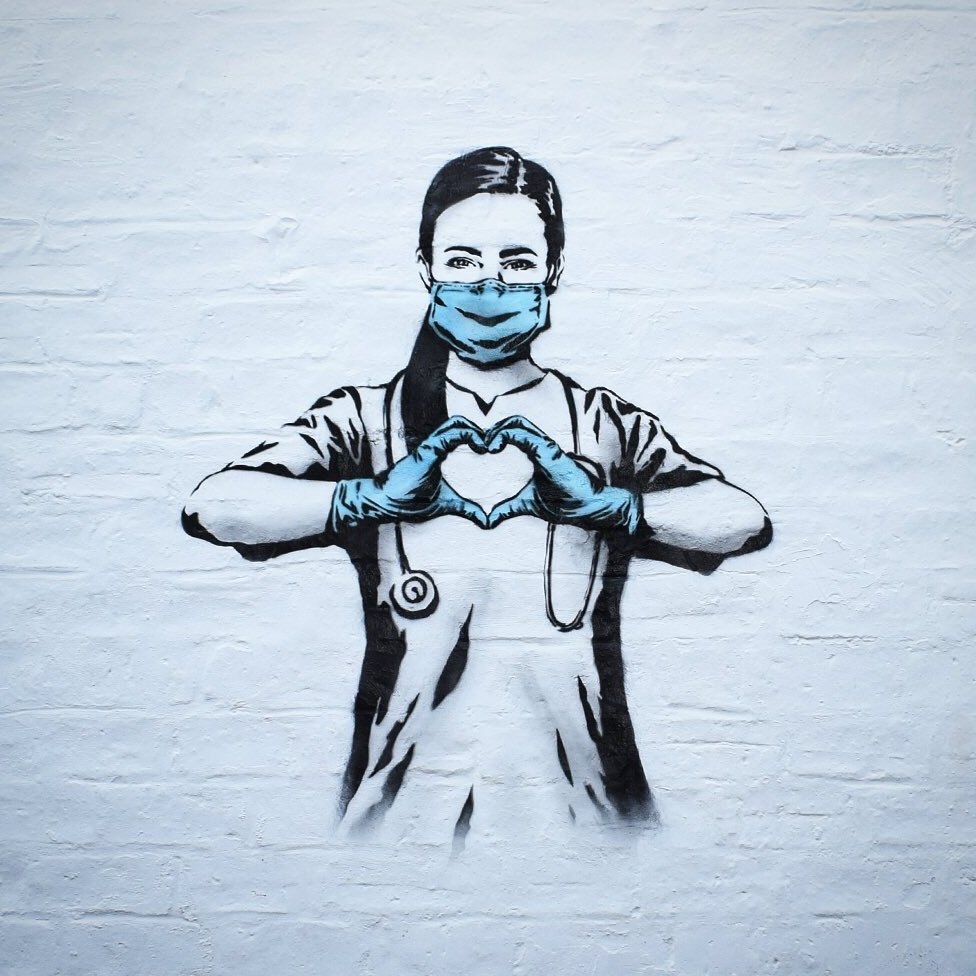
Defending disaster communism from War Communism
In many ways the pandemic has focused greater attention on how to deal with disasters, including the short and long-term catastrophes of capitalism. When considering current and future crises, two terms have become popular with a number of left-wing writers – disaster communism and War Communism. The different uses of these terms pose a range of concerns regarding what communism means and crucial questions about how we should confront disasters.
Over the past decade, I have been writing about disaster communism. While doing so, I have wondered how useful it is to use the term communism, since it is deployed to suggest many different things, with some people forgetting or ignoring the history and horrors that are often associated with it. Last year, I wrote about the bushfire crisis and how the concept of disaster communism has been taken-up by various people around the world, such as the authors who write under the collective name Out of the Woods. The Out of the Woods collective have produced a three-part series of articles on disaster communism and identified two different meanings of the term – “The first meaning is collective, self-organised responses to disaster situations. The second concerns the prospects for an ecological society based on human needs in the face of climate chaos.” They call the first sense ‘disaster communities’, and the second ‘disaster communisation’. For Out of the Woods, “disaster communities are self-organised, non-market, non-statist social reproduction under adverse conditions. However, they suffer some shortcomings. First and foremost, they are typically short-lived, even if the experience changes the participants for life.” Whereas, disaster communisation involves ‘a qualitative shift within the dynamic of class struggle’ . . . “when the self-organised social reproduction of disaster communities [comes] into conflict with existing property relations, the state, and so on, and overcomes these limits.”
I prefer not to divide disaster communism in this way, as it downplays the extent and continuity of capitalist disasters and the enduring existence of communist alternatives. Capitalism is a continuously disastrous system and ‘disaster communism’ can be both large and small scale, with communist practices organised to deal with individual, community, and more widespread disasters on a daily basis. Today, individual and collective catastrophes are proliferating, ‘disaster communities’ are widespread, and everyday communist practices are essential to many people’s survival.
Last year, Out of the Woods published their book Hope Against Hope with the final chapter titled ‘Disaster Communism’. Here they explain – “Disaster communism is not a brand-new type of politics divorced from existing struggles. Rather, it is a revolutionary process of developing our collective capacity to endure and flourish that emerges from these struggles. Disaster communism is a movement within, against, and beyond ongoing capitalist disaster.”
While Out of the Woods’ understanding of disaster communism and my own share much in common, other writers have changed the meaning of disaster communism from a libertarian communist one to a more authoritarian and statist one. For example, in his 2017 book Extreme Cities Ashley Dawson has a chapter on disaster communism and offers a similar critique of ‘disaster communities’ as Out of the Woods, arguing that “Disaster communism – on a purely local scale – does not actually constitute an inherent threat to the capitalist social order.” Alarmingly, Dawson then goes on to propose a form of “War Communism” with “warlike state management of all industries” and “centralised decisions on who can consume what goods in what amounts”. So, as we apparently head into a ‘new Cold War’ with communism remaining widely associated with authoritarian states, the differentiation of War Communism from disaster communism (as an expression of freedom, democracy, peace, and love) is important.
Channel Seven TV News declares New South Wales a – “Covid 19 – Police State”. (27 / 3 / 20)
Recently, a number of other authors have considered disaster communism and joined Dawson in advocating ‘War Communism’. Given the contemporary reinvigoration of Leninist & Stalinist ideas by such authors, it appears that if you wish to engage with mainstream ‘leftist’ theory, then the repetition of debates about the Russian Revolution cannot be avoided. So, here’s my brief outline of the history of War Communism. The term originates from the economic and political system enforced in Soviet Russia during the Russian Civil War from 1918 to 1921. Following the Russian Revolution in 1917, after promising peace and demobilising the Russian Army, the effects of invasion and civil war led the Bolshevik government to adopt what Lenin termed “state capitalism”. In 1918, Soviet Russia was invaded by seventeen armies from fourteen countries. Isolated and encircled, the Bolsheviks recognised the principle of “defence of the fatherland”, creating a new standing army, the Red Army, under the leadership of Leon Trotsky and dominated by the Bolsheviks and officers of the old Russian Army (1 & 2). Thus began the period known as War Communism and with it came a system of military despotism exercised by a small group within the Bolshevik Party who successfully defended ‘the fatherland’ while creating a ‘command economy’, smashing workers’ self-organisation, intensifying the exploitation of labour, and entrenching a new political and military elite. What followed was a tragedy played out in the lives of hundreds of millions of people around the world. None-the-less, tens of millions of Soviet people lived and died for ‘the Revolution’, trying to act according to the best of communist traditions, seeking to build a world without war, where no-one would be abused or exploited.
Today, those like Ashley Dawson, Slajov Zizek, Andreas Malm, Jodi Dean, and Kai Heron, frame their calls for War Communism as a response to the wars of disaster capitalism. But rather than challenging the rhetoric or violence of warfare, they instead seek to mobilise them for a ‘different’ purpose. Last summer, some on the ‘left’ similarly issued war cries in support of armed force responses to the bush fire crisis. These calls dovetail with authoritarian state plans to respond to the climate, environmental, and extinction crises militarily, with climate change management increasingly absorbed into defence budgets and national security considerations.
Local Labor Party MP, Ryan Park, supported the New South Wales government’s pandemic law changes by explaining – “The new rules are part of the new world order” which he described as “martial law”. (26 / 3 / 20)
In his recent book Pandemic, Slavoj Žižek explains that his notion of communism is centred on the state and is “simply a name for what is already going on . . . measures which are already being considered and even partially enforced” by governments to address the corona virus. For him, this means the state “should assume a much more active role”. “It’s not a vision of a bright future but more one of ‘disaster communism’ as an antidote to disaster capitalism.” When Žižek uses the term Communism he is talking about a “global organisation that can control and regulate the economy as well as limit the sovereignty of nation states when needed”, a coordinated shift away from the power of the “market” with state’s issuing “strict commands” to avoid close contact with others. While proposing “local mobilisation of people outside state control” he also advocates cooperation between states – “As in a military campaign, information should be shared and plans fully coordinated. This is all I mean by the ‘Communism’ needed today” . . . “a Communism imposed by the necessities of bare survival. It is unfortunately a version of what, in the Soviet Union in 1918, was called ‘War Communism’.”
Meanwhile, Andreas Malm, in his book Corona, Climate, Chronic Emergency: War Communism in the Twenty-First Century, explores the dangers of continuing to replicate the virus of capital and how Covid-19 is a product of the ecological and mass extinction crises. He correctly argues that addressing the climate crisis and preventing zoonotic spill-over requires emergency action that goes against the vested interests of powerful factions of the ruling class and facilitates the rapid transformation of economies. But, sadly, his bleak vision of the future envisages the collapse of capitalism brought about by environmental ruin, arguing that “organised anti-capitalism was mostly a spent historical force” when the chronic emergency of this millennium set in.
As explained on the book’s sleeve – “Malm demands that we adopt the state of emergency imposed to combat the virus and apply it on a permanent basis to the front lines of the climate crisis.” According to Malm, this is a moment where we can say to governments – “If you were able to intervene to protect us from the virus, you can intervene to protect us from the climate crisis as well.” Here Malm fantasises about northern states who have “committed themselves to reason”, while ridiculing the impact of grass roots mutual aid. He also compares and conflates anti-capitalist critics of state power with hyper-neoliberal fascists like Bolsanaro, to argue that “we need a state”.
Looking at the legacies of the Russian Revolution, Malm asserts that because today there are no “actual Leninist formations capable of seizing power”, no “revolutionary leadership”, the essential Leninist elements required are “a predisposition for emergency action and an openness to some degree of hard power from the state.” Despite acknowledging that an increase in state power brings with it the danger of authoritarianism, he calls for the “reprioritisation of repressive state apparatuses around the world.” His ‘ecological Leninism’ is a call to work with the capitalist state, which as he admits “would clearly be a departure from the classical programme of demolishing the state and building another”.
For Malm, “War Communism provides an example of a rapid, state-driven transformation of production and the organisation of the economy in the face of massive opposition from the dominant classes”, while acknowledging that Soviet War Communism involved a series of compromises “giving up on the ideals of communes and much else” and that “the journey from War Communism to tyranny was short to non-existent.” However, the threat of his call for ‘emergency action and hard power’ being taken-up by authoritarian and ‘proto-fascist’ states, we are told, will be addressed in his future work.

Last year, Jodi Dean and Kai Heron also wrote about ‘ecological Leninism’ in Revolution or Ruin to support the building of a Leninist party and seizing control of the state for a top-down centralised response to climate change. Not surprisingly, they are highly critical of disaster communism as it is understood by those like Out of the Woods and myself. They misrepresent our views on the realities and potentials of disaster communism, claiming that “confronted with the choice between ruin or revolution, disaster communism opts for ruin as the path to revolution”. Misleading their readers, they also assert that; “In lieu of the revolutionary subject emphasised in the Marxist tradition, disaster communism turns to climate breakdown as the agent of history.” Ignoring the arguments we make about the power of people’s self-organisation, they downplay the role of mutual aid and disfigure what they claim is a “so-far-nonexistent social movement that struggles to resolve the crisis in a way that is simultaneously anti-capitalist and anti-sovereign.” Instead, Dean and Heron point to the importance of “orders from the state” which were given to employers during the pandemic, championing the state as “a ready-made apparatus for responding to the climate crisis” which “is backed by a standing army.” It is here that they see the potential for positive action “when the state is seized by a revolutionary party”.
Meanwhile, in his article ‘Disaster Communism’ published last year in Thesis Eleven, Steve Matthewman celebrates “the warm embrace of the state intervening on our behalf”, while also quoting a prominent right-wing commentator who welcomed pandemic state intervention by exclaiming “if you’re wanting to win a war, the system you’re looking for is effectively communism.” This quote is similar to one from Macquarie Bank’s wealth analysts, who warned in March that “conventional capitalism is dying” and the world is headed for “something that will be closer to a version of communism”. This pro-capitalist support for ‘communism’ also reminds me of when Channel Seven’s TV News senior reporter, Chris Reason, explained to viewers in March that when dealing with the Covid-19 emergency – “China has the advantage of being a one-party dictatorship.”
Despite a range of ongoing criticisms, the Chinese state’s response to the coronavirus has been widely heralded as an effective model to address the Covid-19 disaster. State authoritarianism has become a common feature of current crises, along with ongoing protests against authoritarianism and repression (e.g. BLM actions – including the movement’s struggles to demilitarise the health emergency). In China, during the pandemic, there has been widespread resistance to the subordination of life to the rationale of state capitalism, with many of the positive achievements of the ‘Chinese model’ produced due to the self-organised initiatives and ongoing struggles of millions of people. These initiatives and struggles also manifested beyond national borders and have ‘come close to setting a benchmark in the management of the crisis’. Across the globe large numbers of people have instigated positive action, stopped working, refused to comply with unsafe policies and practices, and demanded more support and safety.
Chinese state forms, like other state forms, are arenas of struggle, where resistance continues within, against, and beyond capitalism. At the same time, with the growth of authoritarian parties, political leaders, and state formations, many people are warning that climate and pandemic ‘states of emergency’ are being used to extend repression and to prepare us for war. In this climate, the promotion of War Communism marks a shift to a dangerous and violent pessimism expressing illusions about the nature and history of state capitalism and who is likely to be targeted by repressive forces calling themselves Communist.
“It is easy to warn that state power is using the epidemic as an excuse to impose a permanent state of emergency, but what alternative arrangements do those that sound such warnings propose?” (Zizek, Pandemic, 2020)
Radical and progressive social movements have proposed and demonstrated a range of alternative arrangements, as covered in various Revolts Now posts. Many of these arrangements are forms of disaster communism. It is the multitudinous environmental movements, the widespread self-organised mobilisation of grassroots resistance, mutual aid, and struggles for peace, democracy, justice, love and freedom, that provide alternatives to disaster capitalism. These alternatives can also defend us from War Communism.
In his 2016 book Disaster Citizenship: Survivors, Solidarity, and Power in the Progressive Era, Jacob Remes investigates how disasters reshape politics and people’s relationships with state forms. During and after disasters, obligations and relationships among people and between them and institutions are actively renegotiated. These are times in which ideas about state’s roles in taking care of people changes. Remes explains that during disasters people demand aid from state forms but also want to protect their autonomy. Recipients of state support get material or financial resources in exchange for granting state forms power over their lives. This is not a free choice, given many people’s needs and vulnerabilities, and often involves taking relief in exchange for the loss of autonomy and privacy. In response many imagine rebuilding their lives and communities with new rules or perhaps without rules.
State relief is often organised to help limit government liability or responsibility. Yet people frequently demand more state assistance on their own terms, while at the same time seeking to maintain practices of informal solidarity. At the centre of the conflict between the two styles of aid – “professional and lay, hierarchical and reciprocal, formal and informal” – are questions of labour and who controls it, as battles over the organisation of re/productive labour are at the centre of contestations over governance.
Remes explores social networks and social participation and the protection they provide from the effects of disasters – what neoliberalism terms ‘social capital’ and others prefer to call everyday forms of horizontal reciprocal care, solidarity, love, etc. He looks at how ‘pre-disaster’ connections are used in disaster’s aftermath and how people deal with disasters by not only re-enacting everyday patterns of solidarity, but also by establishing new expectations. As Remes explains, families, neighbours, friends, and co-workers have patterns and traditions of self-help, informal organisation, and solidarity that they develop before disasters hit and these traditions are put to unusual purposes and extreme stress when they happen. During and after disasters, these organisational forms are also challenged by ‘agents of the state’ who are given extraordinary powers in disaster’s wake. Those who most directly experience disasters understand them and their situations differently than professional relief authorities. Survivors and ‘relievers’ also differ in their experience of order and disorder. Institutional relief managers tend to value the knowledge of ‘experts’, officials, and professionals. They fail to see or understand the self-organised ‘order’ that survivors and relief workers construct. This ‘organisation without organisations’ is based on connections, networks, and the practices of daily solidarities that existed before disasters strike.
Former Australian Science Minister, Barry Jones, declares: “The postponement of parliament puts more power – total power – in the hands of the executive – and nobody questions it, least of all the Opposition. It is in fact a coup.” (27 / 3 / 20)
Faced with continuing and escalating disasters, many people look to ‘the state’, while failing to appreciate the communism which already exists, neglecting the social movements that produce alternative ways of organising, or seeing these as too weak to effect powerful change. Instilled with fear and a lack of trust in people, they seek to mobilise the state’s power to organise and command. Those advocating War Communism emphasise aggression, coercion, imposed discipline, violence and force, the worse aspects of current emergencies. Yet, despite what capitalist propaganda and authoritarian ideologies would have us believe, it is care that has been at the heart of the most positive state and non-state responses to the enviro/climate/pandemic crises.
‘Who is the State?’
State forms are more complex and diffuse than generally understood. Capitalist states re/produce capitalist social relations and are also the product of widespread and continuous struggles against capital. These struggles can increase people’s power both within capitalist state forms and outside of them. The helpful features of state institutions are products of struggle, reflecting our power to transform states, because state forms include us, at times as collaborators and at our best as subversives. When capitalist norms are internalised, they become part of people’s ‘common sense’, with state mentalities becoming our mentalities, and when we act as the subjects of state power we help to perpetuate our own domination. Yet, while the ruling class aims to create the best organisational forms to further its collective interests, to subdue and incorporate us, our struggles for freedom provoke modifications to the techniques of state power, new conditions, new forms of resistance, new struggles.
Encouraging militarisation and armed combat is incredibly dangerous and given the history of Communism the motivations of those advocating War Communism should be, and will be, widely mistrusted. To support War Communism is to forget the disasters of ‘Communist states’ and ‘Communist Parties’. The errors and defeats of these experiments and the capitalist forms calling themselves Communist continue to weigh heavily on contemporary anti-capitalist movements, making it difficult to speak of communism without ‘corpses in our mouths’. Reclaiming and speaking of communism in a positive sense recognises the genuine communist heritage, which opposes authoritarianism, repression, war and terror, and illuminates praxes of freedom, democracy, peace and love. Communism has been the enemy common to many neoliberal, social democratic, fascist, and socialist regimes and those identified as communists have been targeted and murdered in their millions during the global class war to break proletarian power. Today these communist victims and the victims of ‘Communism’ ‘haunt the world’. But communism is not a ghost, it is a movement of movements, and is very much alive.
During the pandemic, there have been a wide-range of state reactions to the disaster, from increasing welfare and healthcare provision to extending the colonisation of our lives by security states and surveillance capitalism, all centred on the profitability of continuing, deepening, and expanding exploitation and extraction. At the same time, the grass roots organisation of disaster communism continues to be ignored, hidden, downplayed, and suppressed, in order to promote state-focused solutions, coercive authority, and elitist leadership roles. The promotion of war, force, and state discipline is a serious danger to the kindness, care, love, solidarity, and mutual aid of disaster communism. So, let’s think carefully about our relationships with states/capitalism and how we can best defend ourselves by continuing to organise our own living alternatives.
Nick Southall
(1) Lenin, V., 1936, ‘Left Wing Childishness and the Petty Bourgeois Mentality’, Lenin Selected Works,Volume 7, Lawrence and Wishart, London, pp. 351-378.
(2) Minz, I., 1942, The Army of the Soviet Union, Foreign Language Publishing House, Moscow.
We Can Dance If We Want To
‘Our bodies, our music, being together.’
On December 7, dancing in bars, clubs, and restaurants was allowed again in New South Wales after being banned for months. But, did we really want to dance, given the year we’ve had?
Twelve months before, in the lead-up to a local climate and bushfire crisis protest, the same question was being asked about the inclusion of music and dancing. Did we really want to celebrate when we should be mourning, be joyful in the face of widespread grief, have fun when we should be angry, and be positive when we should be more militant or serious?
In January of this year, in response to these concerns, I was asked to put together a short presentation on the protest music of 2019 for the Honk! Street Music Festival. Sadly, due to time constraints it didn’t end-up happening. In the presentation I discussed how some people say that including music at protests is for hippies, white people, the middle class, those who are privileged, etc. Among those critiquing protest music there’s a tendency to see it as something which undermines the power and impact of militant activity. Fortunately, a wide range of contemporary social movements have demonstrated that protest music is incredibly powerful and can have significant positive effects.
Throughout 2019, large-scale protests unleashed popular revolt on a global scale—from Paris and Prague to Port-au-Prince, Beirut to Bogota and Berlin, Catalonia to Cairo, and in Hong Kong, Harare, Santiago, Seoul, Quito, Jakarta, Tehran, Algiers, Baghdad, Budapest, New Delhi, and Manila. Taken together, these protest movements reflected unprecedented political mobilisation with tens of millions deploying their collective power in more countries than at any time in recorded history – a profound shift in the global landscape of dissent.
In many places the sparks that ignited revolts were different. But there was much these movements had in common. Virtually all protests quickly escalated and began issuing ultimatums for governments to embrace sweeping changes – or to move aside. The issue of power – who has it, how is it used, and how people can have a say in the decisions that affect their lives were central concerns. In my Honk! presentation I included just a few examples to illustrate protest music’s continuing importance and how widespread it was during the 2019 rise of global revolt.
In the first half of the year, the Sudanese Revolution brought down the country’s military dictatorship following a massive wave of courageous defiance by a broad-based peace, justice, and democracy movement. Here’s a few of the songs that fueled and accompanied the uprising.
In June, protests began in Hong Kong against the local and mainland governments. Millions of people took part in the demonstrations and widespread civil disobedience. In this video protesters are singing ‘Do You Hear the People Sing?’ from the musical Les Miserables.
Here in Wollongong, in a year that saw an upsurge of climate change activism, the major action occurred during the September 20 Climate Strike when we occupied the city streets with our bodies and the music of the Rising Tide Street Band, Les Femmes Fatales, and The Lurkers, among others, and the beats of the Radical Drum Corps, helping to make the event a resounding success.
Later in the year, as much of Australia burned, the Illawarra Climate Justice Alliance debated whether to organise a dance occupation of a key city intersection during the November Climate Strike and decided to include this ‘civil discobedience’ –
In October, a series of on-going mass protests erupted in Lebanon, initially triggered by the government’s negligent response to bush fires and planned tax rises on petrol and the use of WhatsApp. This expanded into a country-wide condemnation of corrupt sectarian rule, economic crisis, and unemployment. As part of the movement’s large and continuous mass actions people from all walks of life were soon ‘dancing for their freedom’.
In November and December, millions of people went on strike against austerity in Colombia, revolting against neoliberalism with dancing, singing and joy, despite having a corrupt government that uses violent repression, terrorises communities, and regularly murders activists.
2019 was a year of massive strikes in various parts of the world and again music played an important part in many of them. For example, here’s a video from November of a teacher’s strike in Indiana USA – over low pay.
Some of 2019’s most amazing protest music came from Chile – where a rebellion against public transport price rises, growing inequality and privatisation saw a violently imposed curfew enforced in 16 cities. After the Chilean President announced that the Government was “at war” with protesters, at least 30 people were killed, hundreds of people were wounded, including over 400 protesters shot in the face, resulting in large numbers of them losing an eye. The response of the Chilean people has been angry, defiant, joyful, and musical. In this video guitarists, singers, and thousands of protesters perform “El derecho de vivir en paz” (“The right to live in peace”) by Victor Jara.
The struggles in Chile continue and have lead to the creation of a new constitution. In this video from last year’s action, a full orchestra performs the well-known “El Pueblo Unido Jamás Será Vencido” (The people united will never be defeated).
Even at the height of police attacks, the music plays on –
A Chilean protest song and dance routine about rape culture and victim shaming, Un Violador en Tu Camino – ‘A Rapist in Your Path’, first performed during last year’s uprising, has also become an anthem for feminists around the world.
‘You’ll Never Walk Alone’
During the pandemic, widespread social care and mutual aid has also included the use of music by those in ‘iso’ to communicate, show solidarity, and keep-up morale. For example, this video of people dancing in Italy during their early ‘lockdown’ is reminiscent of the Wollongong November climate strike and some of the debates about music and dancing we had at the time.
The discussions about whether music/songs/dancing were appropriate during the local bush fire disaster and the calls to be more sombre are obviously relevant to the Covid-19 crisis. And, as the anger and grief around the pandemic grew overseas, there was less music and a move to more ‘pot banging’ sound protests. None-the-less, the video below of hospital workers singing ‘You’ll Never Walk Alone” to their colleagues working in intensive care, through the worst of the crisis, is one of the most moving I have seen during the pandemic.
In May, Kerman Calvo and Ester Bejarano wrote about the use of music in Spain during ‘lockdown’ – “to commemorate nurses or doctors dead in the fight against the virus, to live up to a challenge, to entertain kids living nearby” and “the powerful effect of music to create new bonds among strangers, and also to help circulate a sense of interconnectedness. Professional musicians saw this as their ‘duty’ as ‘artists’; in other cases, performers simply wanted to do something for other people. Community making is embedded in emphatic appeals to help. A running theme has been the presentation of music as a stress reliever, a way to cope with anxiety, loneliness of the pain associated with not being able to meet your loved ones. A good number of musicians started playing . . . as a way to express love and affection.”
‘Music Hittin’ the Heart’
Of course many of the powerful social movements that transformed the world last year have been disrupted (but not ended) by the Covid-19 crisis. However, despite the impacts of the pandemic, the murder of George Floyd by police saw militant protests erupt from Minneapolis to Wollongong in support of the Black Lives Matter movement. At least 200 cities in the U.S. imposed curfews, more than 30 states deployed over 62,000 National Guards. In the space of a few weeks, over 14,000 people had been arrested and more than 26 people were killed during the protests. Support for the uprising and how radicalised American society has become was indicated by mainstream polling which showed the level of support for the American Presidential candidates was lower than the number of Americans who thought burning down Minneapolis Police Precinct was justified after the killing of George Floyd.
Not surprisingly, rap music became the main soundtrack to the BLM protests. In the streets outside the White House the sound of Public Enemy’s 1989 song ‘Fight the Power’ blared as protesters broke into spontaneous renditions of the electric slide dance. A remake of the song, released to support the movement, was soon available with guest verses from contemporary artists.
Demonstrators in other parts of the U.S. similarly used hip-hop as a form of sonic protest. In New York, demonstrators chanted the hook to Ludacris’s 2001 song “Move Bitch” as they were penned in on the Manhattan Bridge by police. While ‘hip hop supergroup’ Run the Jewels released their long-awaited album, RTJ4, at the height of the protests, with it soon becoming another soundtrack to the movement. The album was released for ‘free for anyone who wants some music’, with the group calling on fans to donate to BLM protester’s legal support. Here’s my favourite song/clip from the album – JU$T
Throughout 2020, there have been many dance experiences, actions, and tributes to the BLM uprising, from mainstream TV shows to individual street level. But I have chosen to include this 2016 dance callout, featuring the names of prominent black people killed by police in the United States, to once again highlight the way music and dance play powerful ongoing roles in resistance.
At the start of the pandemic, I had a discussion with a friend of mine, a prominent socialist organiser, about the importance of love. They argued that love and care were not what was required during the Covid crisis. They were keen to stress the weakness of love and how hatred was the emotion that revolutionary movements required. According to them, and many others, love is “impotent” and pacificistic – a form of surrender in the face of a vicious class enemy. Among those critiquing protest music there’s a similar tendency to associate it with emotional weakness or passivity. So, I took some delight when a number of my friend’s socialist comrades began posting the video below from a BLM demonstration in Adelaide, posing the question ‘Where is the Love?’ (Click on ‘Watch on Facebook’ to view)
During 2020, countering hate also became a focus of K-Pop fans from across the globe. Supporters of South Korea’s pop music scene have been coordinating sophisticated worldwide social media interventions supporting BLM and targeting the far-right. This has included raising millions of dollars for BLM organisations and spamming a request from the Dallas Police Department for “video of illegal activity from (BLM) protests”, forcing the Dallas PD to shut down its ‘iWatch Dallas’ app soon after. The K-pop fans have also subverted ‘#WhiteLivesMatter’, ‘#BlueLivesMatter’, and various QAnon hashtags. In June, K-pop fans famously joined with young TikTok users to disrupt Donald Trump’s Tulsa re-election rally.
‘Music makes us want to live.’
‘It is a language we all understand.’
Music and dancing are crucial to a long history of social struggles and today’s movements for change are adding to this chorus. When people confront pain and suffering, and are drawn together to take collective action for progressive change, rebellious music and dancing can combine grief and hope, anger and joy. All great protest movements include music and dancing in their composition and if we wait for a time when no-one is being injured or killed, losing their life, their homes, or their livelihoods, then we will never celebrate our continuing power to make a better world. So, seriously, let’s make music, and if we’re able to dance, and we want to dance, let’s dance; while we mourn, when we are angry and militant; so we can create joy and have fun, so we can connect with each other, build our community, and defy those who want to sadden, silence and suppress us; so that together we can create good times, share pleasure, and feel alive.
Care is the Cure: love, solidarity & the virus crisis
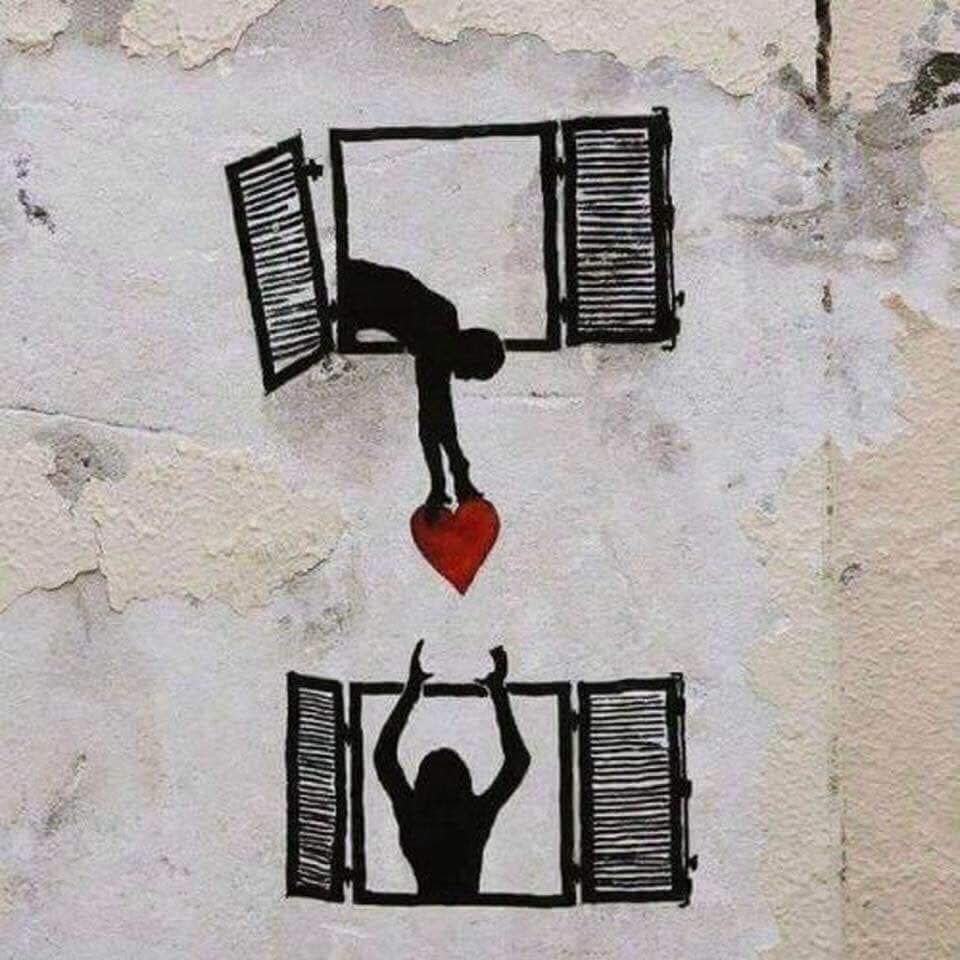
“You really shouldn’t say ‘I love you’ unless you mean it. But if you mean it, you should say it a lot. People forget.” – Jessica, aged 8
“To all the carers: I see you. Your struggle is our struggle. Your love is the cure.” – Nick, aged 57
The coronavirus crisis has presented many of us with both more time and more responsibility to care for each other. It has become obvious that our actions matter; that our lives are powerfully interconnected with others all over the world; that the question – ‘do we care?’ is a life or death one.
The crisis has also put a spotlight on community engagement and, in particular, on the personal risks workers, most obviously nurses and doctors, have taken to care for their communities. The pandemic illustrates that we are dependent on a web of care work that spans the globe. So, it has been wonderful to see widespread appreciation of the many different forms of this work – healing, cleaning, tending, serving, creating, teaching, nurturing, learning, organising, and counseling, particularly care work concerned with the most vulnerable – the aged, those suffering from illnesses, the homeless, imprisoned, the unwaged/poor, and indigenous communities, along with increased recognition of the important skills of caring – trust, vulnerability, generosity, humour, flexibility, openness, understanding, and selective resignation. The people doing so-called ‘hidden work’ and ‘emotion work’, and what they do, has become more visible. We have seen how the often unnoticed work of carers – food producers, preparers, and distributors, teachers, parents, and others – is essential. Low paid workers, such as cleaners, rubbish collectors, supermarket staff, and delivery drivers, have been celebrated as heroes for the contributions they make. The need to value care work (both paid and unpaid) in new or different ways is now getting more attention..
Waged caring work tends to be poorly paid and we have recently seen nurses, aged care and childcare workers demanding action on staffing ratios and for decent wages. Care workers are under pressure due to constant cuts, erosion of working conditions, casualisation and the continual re-organisation of their work, which erodes the social relations between those who care/are cared for. Just this week, the NSW government rewarded the contribution of health care workers during the pandemic by freezing their wages. This spit in the face reflects a more general pattern where caring relationships and our ability to care are under attack.
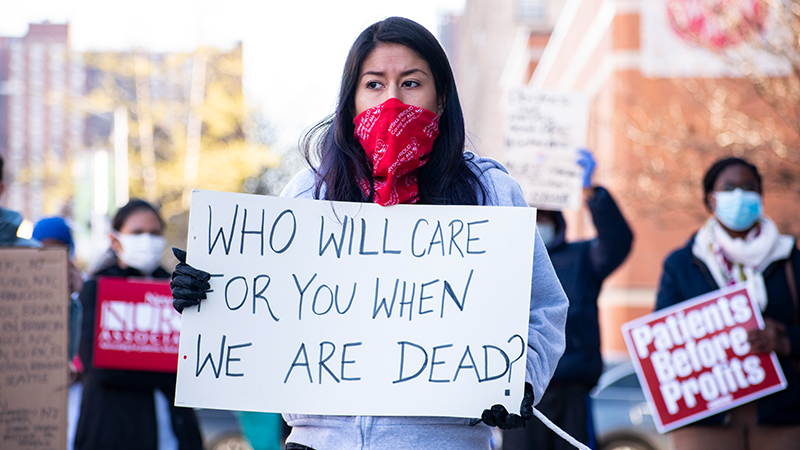
I see you – I hear you
Each day, a multitude of generous acts, acts of love, care and solidarity, go largely unseen, invisible to most of us. We remain unaware of the microscopic everyday forms of caring organisation – the countless neighbours, family members, friends, work colleagues, and strangers arranging ways to support each other. In my own home, it is the work of caring for those within our place of refuge, whilst also trying to care for as many other people as possible, which has been the crucial feature of this crisis. Our own network, or concentric circles, of caring connections have been at the heart of every moment – helping us to navigate the difficulties of this time and to share the opportunities and potentials which the crisis has presented.
During ‘iso’ we have faced a range of difficulties. But when we are able to create more time to care for each other; to slow-down, appreciate the importance of empathy and affection, and construct some respite from the daily hardships of capitalism, we may hear the voices of those who have been in isolation for many years. Those like Mostafa Azimitabar, who was imprisoned on Manus Island for six-and-a-half years and has been detained in a hotel room in Melbourne since December, for twenty-three hours a day, with no end to his isolation in sight. During the height of the crisis, what did Moz have to say to those who would listen?
As many of those in positions of power express a clear willingness to sacrifice us for the benefit of a privileged few, to let us die without a care, how do we measure our worth? The importance of our care work is indicated by other people when they acknowledge its value. Many people are using the COVID-19 crisis to think more deeply about what gives our lives and our actions meaning. We are struggling with what is demanded of us and profoundly considering our own needs and desires. On a recent episode of Four Corners about COVID-19, one of the medical personnel being interviewed talked about their dread of having to “ration care” – being forced to decide who would receive treatment and who wouldn’t. Yet this is something that occurs every day. What this crisis has helped to expose is along which lines this rationing occurs. As the Governor of New York asked recently – “How much is a human life worth? That’s the real discussion that no one is admitting openly or freely.” Of course, the usual answer to this question is – it depends on whose life it is.
You are not alone
A number of commentators have described social isolation/physical distancing as an act of love – a demonstration of people’s care for others – a civic minded stance for the common good. During the crisis, most people have engaged in a collective commitment to do the best they can to look after each other. We have demonstrated that we’re willing and able to extend our care over a long period of time and to a large number of people. There has been a growing recognition of our mutual dependence and the fact that we’re prepared to sacrifice our own desires in order to keep one another healthy. Many people took the initiative to stop doing a range of things, most importantly not going to work or shopping, or sending their kids to school, before government restrictions were announced. This involved shared decision making to reorganise our own behaviour, in order to be more careful, regardless of what we were told to do.
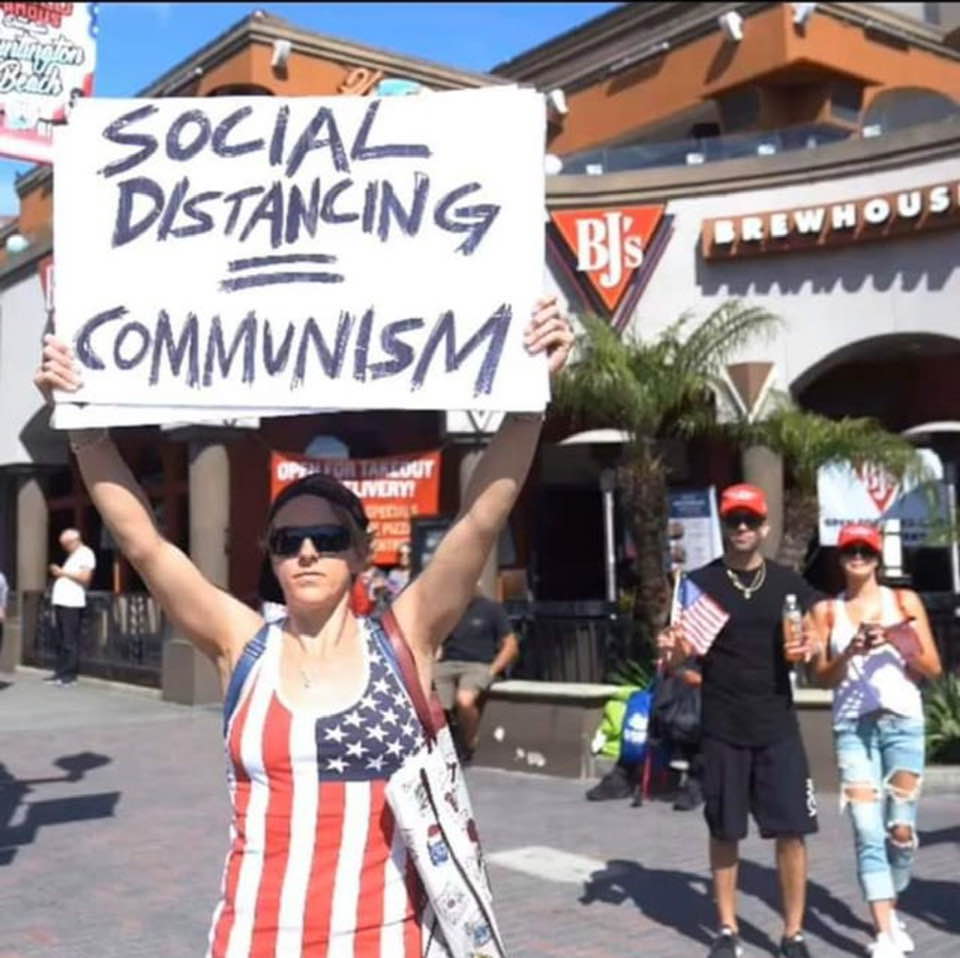
Research in the United States has shown that it is the poor and low paid who are most likely to suffer from quarantine/isolation measures, but they are also the people who tend to support physical/social distancing actions. Those who make less money are more likely to remain physically ‘on the job’ as ‘essential’ workers and are also more likely to have been hit financially by ‘lockdowns’. Yet, they are also generally more willing to make sacrifices for the health of others than those who are better off. This is probably because low-income workers often have jobs that put them at higher risk of getting sick, as they work closely with many other people. The poor also pay a heavier price for being sick and therefore value their own health and the health of others more. As well, many workers don’t want to go back to work, especially when welfare payments are currently more generous than the wage they were receiving when they were ‘on the job’, and they don’t have to risk their health by clocking-on. The poor are also more likely to understand that fighting a ‘war’ against the virus, through sacrificing people to restart the economy, will see the poor and vulnerable suffer the most; that the pressure to return to work – to sacrifice workers to get the economy (profits) going again – is a form of capitalist violence.
Those who care about/for others are also more likely to be suffering from mental health issues. In my recent post on Grief, Love and Rage, I discussed how we are having to deal with long-term and multiple forms of grief – ecological grief, democracy grief, economic grief, employment grief and the end of so-called ‘normality’. Over the past months, we have had to be physically distant while suffering from collective pain. Early on in the crisis, Tim Costello asked; “How do we prepare for the sadness that will be thrust upon us? We must prepare to rediscover the art of lament. Lament is one of those words that seems to have lost its meaning. Lament is not a label to put on a person or a situation – it’s the communal sharing of this grief, an act of solidarity that ensures no one needs to grieve alone, despite our physical distance. If we are going to find a way to lament through the coming months, we need to start now by actively participating in our shared sense of exile . . . even in quarantine we need to find meaning in our lives, to know we are seen, that our pain is validated by others and to know we are loved.”
Your struggle is our struggle
The COVID-19 crisis has highlighted a widespread desire to be social and the recognition that we need to be social if we are to survive. Many people have experienced the feeling of ‘alienation and solidarity at once’ and our interconnections with ‘a society of strangers, all of whom depend on one another to survive’. While ‘iso’ has had deadly and devastating impacts on many people, it has also meant that some people are less isolated as family, friends, neighbours and strangers reach-out to care for each other. While there are those who are unable, or unwilling, to care for others, around us much of the community has sprung into solidarity activity. Across the country mutual aid groups have been quickly established. In other parts of the world mutual aid networks have gone viral – ‘COVID-19 Mutual Aid UK’ for example has over 3,000 groups registered on a central site, and these are just the larger area coordination groups, most of which have split down to a ward and then street level.
Over the first few weeks of isolation, I tried to take note of the mutual aid/care networks which were emerging. However, it soon became clear that there was so much love, care and solidarity being organised, and in so many different ways, that it was better to concentrate on joining in. Still, some examples that have grabbed my attention give some sense of the commonality of caring reactions. A few examples of the caring activity in my own community, that I have some knowledge of, helps to illustrate the depth and breadth of these responses.
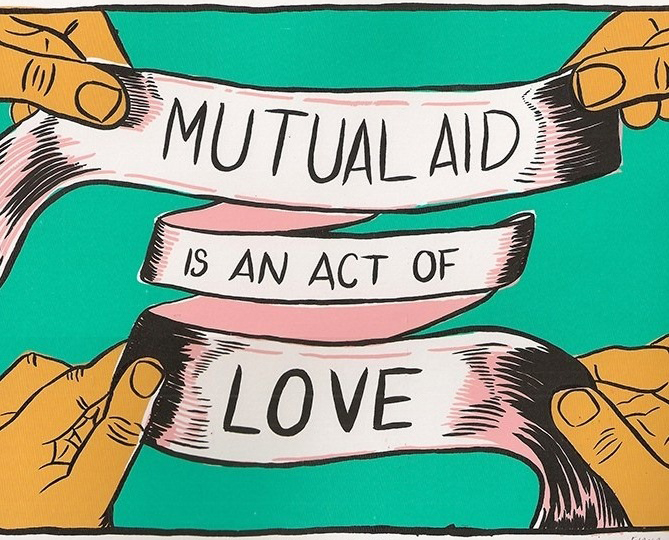
Here in the Illawarra, the local Gong Mutual Aid Gang Facebook page has played an important part in creating a framework for people to self-organise care, to circulate advice and information, to put people in contact with each other, to organise the distribution of supplies, providing an outlet for those producing and sharing food and other resources, including home-grown and home-made goods. As explained on the group’s page – “In this group we can share practical resources, information, make plans, build networks of care and organisation. We can help each other organise to meet our needs, to practice care and safety, and to navigate the impacts of the COVID-19 crisis on our well-being, mental health, our work, employment and housing security. We aim to prioritise those most vulnerable at this time.”
“Mutual aid is the re-purposing and provisioning of resources like care, skills, food, other things and so on for everyone’s common benefit. Recently, mutual aid has played a significant part in getting communities through the bushfire crisis. In the present crisis of COVID-19, we are again seeing its importance. The power of mutual aid comes from all our existing networks and deepening and expanding them. It can help us through crisis, and beyond.” It is “about all of us getting together and practically just trying to meet each other’s needs and solve immediate problems together, in a very grassroots, bottom-up way, instead of a top-down way.”
An important initiative of the group is the Illawarra Mutual Aid Fund which has been established for when money is needed. You can find out more about the fund and how to receive assistance here and how to donate to the fund here.
The concept of mutual aid centres around the idea of a group of people mutually supporting each other, not of some ‘doing good works’ for others. It’s the idea that everyone has something to contribute and we flourish when we support each other. The popularisation of mutual aid, of caring for each other, can both promote and demonstrate that alternatives exist, that they can be reliable, and that they can transform our lives and the world. Mutual aid practices are always widespread, but during and after crises and disasters they tend to expand and flourish, as more people rely on decommodified reciprocal caring relationships. Although many mutual aid initiatives are conducted by ‘formal’ mutual aid groups, many more activities are undertaken by ‘informal’ groups and most mutual aid remains invisible. Yet it is a flourishing global movement, a complex network of caring relationships which we rely on to survive and prosper.
Kindness Epidemic
In the early ‘iso days’, I also joined the ‘Kindness Pandemic’ established by Dr Catherine Barrett to support anyone whose life was impacted by COVID-19. The group grew to 500,000+ members in two weeks. The Kindness Pandemic is “underpinned by principles of intersectional kindness, or how we look out for people who were marginalised before COVID-19 and those who have become marginalised or experiencing new hardships because of COVID-19.” Among a range of initiatives the group launched a ‘Love Stories’ campaign. Young people were invited to share a story about an older person they love and why they love the older person – the older person was then invited to respond. The campaign aimed to help reduce the anxiety, isolation and loneliness that older people may be experiencing, as well as engaging young people and forging inter-generational bonds. As the group explained “this campaign aims to enrich and bring greater meaning to our lives.” Responding to the massive and overwhelming support for their initiative the Kindness Pandemic group was soon asking involved communities to establish localised pages to promote acts of kindness in their own backyard. This resulted in the Illawarra Kindness Pandemic, which over a thousand people joined to help promote ‘random acts of kindness in the Illawarra’.
A wonderful example of local care has been the organisation of food for those in need. In our suburb, Fairy Meadow, two eateries have been providing free meals for those unable to pay – unemployed, international students & people in need. As well, the servo on the corner of our street has been a distribution point for free food supplies going to hundreds of international students. Nearby, more free meals have been made available at Wollongong University by a range of groups. In other parts of the city food has been donated to neighbourhood centres for distribution and in the city centre ‘Good Will Only’ is feeding 800 people a week via pay-what-you-want, with no obligation to pay. These vegan meals are being delivered to the Wollongong Homeless Hub, Bellambi Neighbourhood Centre and Age Matters. Another local initiative has seen the provision of hundreds of ‘pay-it-forward’ meals for health care workers.
To the Ruby Princess – ‘with love from Wollongong’
Support for international students, stuck here without government assistance, is an example of how local caring networks can reach beyond the places where they’re based. The most famous example of local virus crisis mutual aid began when the Ruby Princess cruise ship docked at Port Kembla. At least 850 passengers and crew from the ship have contracted COVID-19 and 26 of them are dead. The scandal over the passengers disembarking in Sydney has led to a homicide investigation, a coronial inquiry and a NSW Government Special Commission of Inquiry. While some people, many of whom should have known better, were calling to ‘stop the boat’ landing anywhere in Australia, when the ship arrived in Wollongong it was met by an outpouring of concern for the crew. As the NSW and Federal authorities surrounded the ship with police and heavily armed troops, the local union movement and the International Transport Federation were soon on the scene to support the people on-board. As criminally negligent state and money-making interests set about creating a deeper disaster, the local community rapidly swung into action to make contact with the crew and offer them assistance, despite attempts to stop this happening.
Within days of arriving, solidarity was flooding-in. Attention was also turned on the authorities’ mistreatment of the crew, the secretive and dangerous role of for-profit ‘health provider’ Aspen Care and their close connections to the Federal Government were exposed, and pressure was exerted through a concerted campaign to have the crew receive adequate support. At the same time, the local Mission to Seafarers organised community donations of food and supplies. This initiative soon resulted in 1200 care packages from the local community being delivered to the crew. In response the ship’s crew members established a Go Fund Me page to donate money back to the local community, raising thousands of dollars for local emergency housing.
‘1200 care packages delivered to Ruby Princess, with love from Wollongong’ (Illawarra Mercury)
‘Ruby Princess crew says thank you to Wollongong with gift of their own’ (Illawarra Mercury)
As a crew member explained to the Illawarra Mercury – “Since our arrival at Port Kembla, we, crew members, aboard the Ruby Princess have been shown great compassion, love and support by The Mission to Seafarers and Wollongong community. Their thoughtfulness and generosity have lifted our spirits in this tough time as we all look forward to seeing home and reuniting with loved ones in the near future. That is why we decided to start a Go Fund Me for Wollongong Emergency Family Housing. Some around the world are restricted to their homes, some are waiting to return home and some have no home at all. We would love to help a family feel safe and sheltered in a place to call home.”
With the Australian Border Force attempting to make the Ruby Princess head back out to sea, regardless of how many were infected or sick, a growing number of people and organisations campaigned for every crew member to be tested, for those who were sick to get proper medical care, and for any crew member who wished to disembark to be safely repatriated. This powerful solidarity resulted in all of the crew being tested, all of those who were sick leaving the ship to receive decent health care, and enabled hundreds of crew members to fly home. When the Ruby Princess sailed out of Port Kembla, many locals lined the shore-line, the ship was given a ceremonial water cannon salute, a maritime symbol of respect, honour and gratitude, and on the ship’s stern a massive banner declared
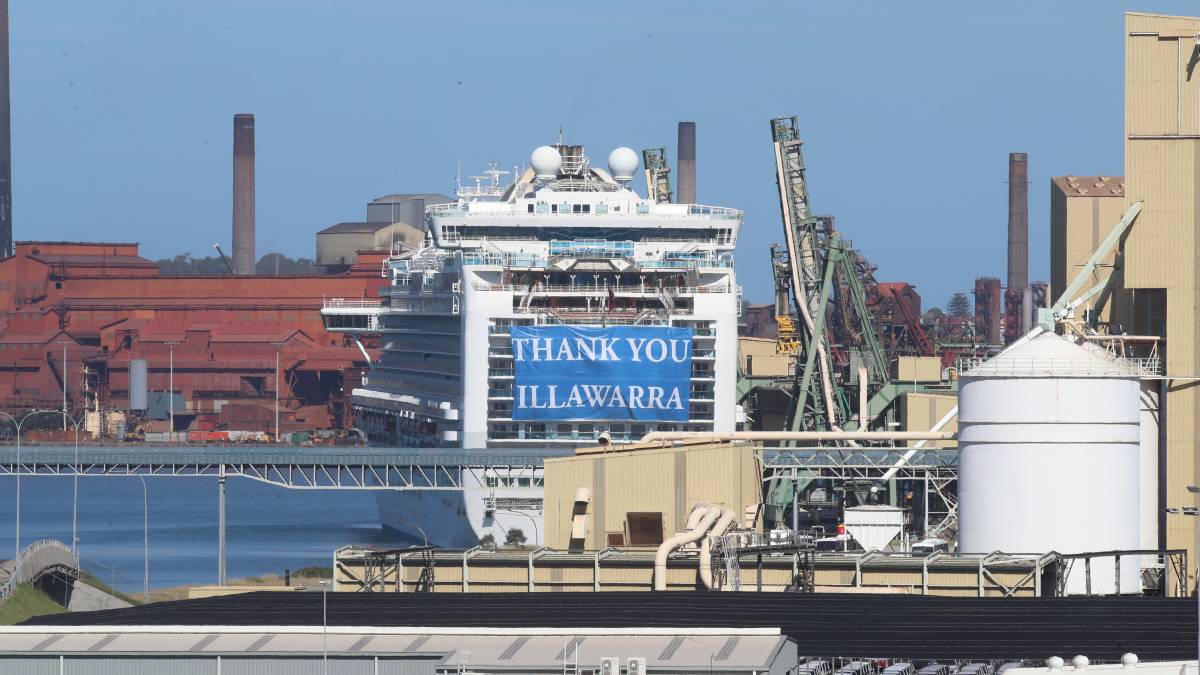
The story of the Ruby Princess’s time in Wollongong is now part of this city’s proud history of love, care and global solidarity.
Around the world we have seen a multitude of similar responses. Millions of people have volunteered to undertake essential services, offered crisis counselling, emotional support, doing people’s shopping, and running errands. They have self-organised aid packages and survival packs for the most vulnerable. There have been countless offers of free food and accommodation for healthcare workers and others in need. Volunteer drivers have created ‘community fleets’ to transport health care, essential workers, and others providing care and support. Free supplies of home-made masks, wash-stands, hand sanitiser, and much more, have been distributed on a massive scale. Computer programmers have organised hackathons to design face shields that can be produced with a 3D printer. Doctors, technicians and others have designed cheap ventilators. Open source software and technologies have been produced to address a range of virus impacts and issues, as have information sheets, handbooks, videos, websites and blogs. Morale boosting events have flourished – such as balcony music and singing, protests, pot-banging expressions of support for health services and heath care workers.
It is impossible to know how collective experiences of working together cooperatively in order to produce free stuff that we share with each other, choosing what we work on, how we work, and why we work, of ‘finding meaning, purpose and satisfaction by working together to enhance the lives of all’, will change us over the long-term. I have been struck by the number of people refusing to return to ‘normal’ – instead seeking to transform what they do with the time of their lives – seeking to live as if their existence matters and their actions count. We know that major changes are coming. We have seen that we’re capable of radically transforming society and changing things for the better. But can we slow down, create time for what is most important, permanently transform our lifestyles and work patterns, prioritise health, safety and the sharing of wealth and resources?

Time to really care
During the virus crisis, a lot of people have commented on the alteration of time and how the ways in which it is measured and experienced have become abnormal. For some the present is experienced as a portal between the past we have lost and an uncertain future, where ‘everything that is solid melts into air’. As we grapple with what we do with our lives – how the social construction of months, days, hours and minutes and the way we experience their passing is connected to how we value and spend them – the crisis poses more starkly than usual the value and meaning of how we spend our time; what we are devoting our lives to. Many people’s desires for a better life are expressed in a recognition that waged work is undermining social relationships, in concerns about the ‘quality of life’, and struggles over ‘family, leisure and work time’. The uneven distribution of paid work means that while large numbers of people are unemployed or ‘underemployed’ and casualisation is increasing, a significant proportion of waged workers want less work, even if this involves a loss of income. Dismantling destructive forms of labour and winning shorter work hours could mean that technological advancements go towards creating richer lives while reducing ecological impacts, giving us more time for what’s most valuable – our relationships, environments, and communities.
Recent surveys have indicated that people’s sense of solidarity is increasing, their awareness of interconnectedness and their support for each other, that the coronavirus experience has changed what we believe we owe ourselves and each other. This crisis has also exposed a widespread lack of care. It has become clearer that capitalism is a violent social relation, a death machine which treats most of us as expendable. Those who benefit most from this social relation have inflicted numerous horrors, clearly demonstrating that we are not all in this together – that only some of us are trying to avoid mass death. So, we will have to fight for a redistribution of time, wealth, resources and power – for health care, aged care, child care, disability care, and earth care.
In my previous post Burning Dilemmas I spoke of how the scale and longevity of the bushfire crisis fostered “a grim, creeping dread. A fear that it won’t be over soon, or ever.” And how “most of us still seek to maintain as much ‘normalcy’ as possible, despite the growing dissonance between heightened emergencies and the mundane tasks of every-day life; even though attempting this ‘new normal’ is absurd and distressing.” We now have to face growing environmental and extinction crises, the rise of authoritarianism/fascism, economic crisis, mass unemployment, increased poverty, as well as the COVID-19 pandemic. Yet, the desire for a return to ‘normal’ remains – even though it’s impossible.
Not being able to see friends or loved ones in person, to touch and share space, to grieve and celebrate, is a pain we’ve now become familiar with. A deep-seated craving for love is nurturing intensifying struggles around the importance of caring – because love and solidarity are the basis on which we struggle, without which we cannot build a better world. The creation of alternative futures relies on collective care – in tending to our social connections – our relationships with friends, family, neighbours, colleagues, communities, and all of those struggling for a more just, equitable and sustainable world.
The coronavirus crisis has given people across the globe time to think about the state of the world and many of us have become angrier with those in power. The world is changing fast and we’re not happy about the way things are heading. So, an intensification of struggles and growing outrage over what we care about is likely. We can expect to see more people demanding governments and employers address these concerns. We will also see more people  taking action for themselves. Yet, much of our crucial and powerful caring activity will remain invisible. Late last year, I argued that more anger was probable, as well as wide-ranging debates about the uses of this anger, as a surge of enraged movements of resistance confronted neoliberalism, authoritarianism, and fascism. However, this rising anger doesn’t mean that our projects aren’t ones of care, of love, and joy. We may be motivated by anger, but it is love for each other, for the world, for life, which produces living alternatives to suffering, grief, and despair; “that sustains and nurtures the will to act, and to carry on when our bodies, communities and families are under constant siege.”
taking action for themselves. Yet, much of our crucial and powerful caring activity will remain invisible. Late last year, I argued that more anger was probable, as well as wide-ranging debates about the uses of this anger, as a surge of enraged movements of resistance confronted neoliberalism, authoritarianism, and fascism. However, this rising anger doesn’t mean that our projects aren’t ones of care, of love, and joy. We may be motivated by anger, but it is love for each other, for the world, for life, which produces living alternatives to suffering, grief, and despair; “that sustains and nurtures the will to act, and to carry on when our bodies, communities and families are under constant siege.”
We are heading into a period of economic and social disruption, radical upheaval and change. Rising unemployment, poverty and intensifying austerity crises will require that we organise more care, mutual aid, and longer lasting networks of support for each other. The climate, environmental and extinction crises have already popularised a ‘just transition’ to a more caring society and the bushfire crisis demonstrated the power and potentials of caring communities. Efforts to replace the punitive ‘welfare’ system with assistance that guarantees the poor a decent life and the demolition of dead end jobs requires recognition of the caring responsibilities that we all have. As we’re currently seeing in the United States, when angry poor people get together they can be incredibly powerful. The current insurrection in American cities is happening because black lives matter and when those in power don’t care, we must show them, and ourselves, that we do. It’s time to change how we organise our lives, it’s time to care.
Nick Southall
Burning Dilemmas: Who cares? – how we respond to climate disasters

The bushfire crisis has ignited important questions about everything – how to survive climate change – the impacts of social inequality and the negligent madness of the elite – the legitimacy of the ruling order and how we can replace it. Some look to the usual suspects seeking ‘strong leadership’, craving order and security in the face of destruction, fear, and chaos. Meanwhile, the most important story of the fires is written by the people who live in the affected areas and those who’ve rallied to support them.
In 2011, I wrote about the Queensland floods and responded to what I saw as the limitations of Naomi Klein’s analysis of ‘disaster capitalism’, coining the term disaster communism to describe the alternative social relations which arise during and after devastating events. Disaster capitalism is an extreme, or more fascistic, form of capitalism which takes advantage of disasters to ‘make a killing out of catastrophe’. Whereas, disaster communism is the altruism, resourcefulness, generosity, joy, and love that arise amid disaster’s grief and disruption, revealing widespread yearnings for community and purposefulness. Clearly communism is a problematic word to deploy, since many think of it as a party or state and consider all communism a disaster. Whereas, unlike previous or existing ‘communist states’ and ‘communist parties’, I see disaster communism as a continuation of the genuine communist heritage which opposes authoritarianism, repression, war and terror, and struggles for freedom, democracy, peace and love.
As I have written elsewhere, disaster communism includes network forms of organising which replace the usual state forms and are shown not just to be more inclusive and democratic, but more efficient and more productive. Disasters expose the existing social solidarities, the ‘moral’ and ‘gift’ economies of community service, fellowship, the sharing of work, money, goods, emotional and psychological support provided by the on-going organisation of non-capitalist exchanges. A range of counter-disaster activities produce new relationships, networks, shared experiences, understandings, and goals, where the lived experience of alternative society transforms norms, values and beliefs, from those of self-interest into those of human interest. Skills or attributes that are often under-valued; healing, caring, flexibility, self-sufficiency, counseling, local knowledge and community connections are suddenly understood as crucial. As people come closer to each other they are better able to share resources, knowledges, ways of doing and experiences, enriching lives and communities, opening-up new horizons for creativity, and further deepening interactions.
The concept of disaster communism has been taken-up by other people around the world, such as the authors who write under the collective name Out of the Woods. They responded with a three-part series of articles and identified two different meanings of disaster communism – “The first meaning is collective, self-organised responses to disaster situations. The second concerns the prospects for an ecological society based on human needs in the face of climate chaos.” They call the first sense ‘disaster communities’, and the second ‘disaster communisation’. For Out of the Woods “disaster communities are self-organised, non-market, non-statist social reproduction under adverse conditions. However, they suffer some shortcomings. First and foremost, they are typically short-lived, even if the experience changes the participants for life.” Whereas, disaster communisation involves ‘a qualitative shift within the dynamic of class struggle’ . . . “when the self-organised social reproduction of disaster communities [comes] into conflict with existing property relations, the state, and so on, and overcomes these limits.”
I prefer not to divide disaster communism in this way, as it downplays the extent and continuity of capitalist disasters and the enduring existence of communist alternatives. Capitalism is a continuously disastrous system and ‘disaster communism’ can be both large and small scale, with communist practices organised to deal with individual, community, and more widespread disasters on a daily basis. Today, individual and collective catastrophes are proliferating, ‘disaster communities’ are widespread, and everyday communist practices are essential to many people’s survival. Importantly, communist revolution is ongoing, not just a future moment or event. Communism is and always will be unfinished and emergent and can only be realised in multiple, ongoing and incomplete ways, as people struggle to create and recreate it every day.
Recently, Ashley Dawson, in his book Extreme Cities, includes a chapter on disaster communism and offers a similar critique of ‘disaster communities’ as Out of the Woods, arguing that “Disaster communism – on a purely local scale – does not actually constitute an inherent threat to the capitalist social order.” Alarmingly, Dawson goes on to advocate a form of “war communism” with “warlike state management of all industries” and “centralised decisions on who can consume what goods in what amounts”. Here he demonstrates, once again, how the term ‘communism’ can be deployed to suggest very different things, forgetting or ignoring the history and horrors of the 20th century.
Community Spirit, Self-organisation, Solidarity
Late last year, I wrote about the grief, love & rage sparked by the bushfire crisis, arguing that the response of concerned people, dedicated volunteers, community associations, and social networks offers the most reliable and resilient support to those impacted. Since then, there’s been growing recognition and appreciation of the ‘community spirit’, or solidarity, which has brought people together to help care for each other. Many thousands of people individually and collectively confronted the fire disaster, working alone and together to protect homes, salvage communities, minimise injury and save lives. We have been inundated with stories of heroic fire-fighters, neighbours protecting each other, strangers coming to the rescue, providing relief, and aiding recovery.
Since the fires began, an invaluable knowledge base has been built-up by volunteers using online networks and decentralised communications channels. For example, when the ‘Fires Near Me’ app became unreliable, local social media groups sprang up, with people sharing information about the path of the fires. Networks of legal aids, medics, translators, skilled tradespeople, counselors, community groups and volunteers have also leapt into action. Droves of independent relief groups, organised almost entirely through word of mouth and social media, have seen people open their wallets and their hearts, as countless benefit gigs, fund-raisers, and campaigns have organised money, resources, accommodation, support, advice and information, sharing grief, anger and action.
At the same time, debates have ensued about whether being publicly ‘political’ and being focused on relief work is compatible, and whether political protests should be held during such a crisis. Yet many people have viewed their response as part of something bigger. Often making the links between climate change, political processes, economic and social inequality, and the impacts of the fires.
‘Tell the Prime Minister to go and get fucked’
During the fire crisis, these concerns have had an incendiary impact across society, including much of the mainstream media. In early January, as the fire’s devastation turned much of the south east into a funeral pyre, exhausted and traumatised fire-fighters exploded onto our TV screens, saying loud and clear what hundreds of thousands of people were thinking.
As this message rang-out across the world, a rumour that the RFS volunteer in the video, Paul Parker, was being removed from his position saw tens of thousands sign an online petition in support of him in just a few hours. Money has also poured into Paul’s local hotel to ensure he won’t have to pay for a beer for a very long time. Sadly, it turns out Paul is a One Nation supporter. Whereas, his colleague, Robynne Murphy, who also features in the now infamous TV news report calling for the Prime Minister to “Stand down now!” is a socialist and a former Port Kembla steelworker. She has joined calls for concerted action on the climate crisis; including a focus on community input, an end to coal mining, transformation of the steel industry, a switch to renewable energy, and “massive mobilisations around the country” to demand change.
A week after Robynne and Paul’s outcry, thousands took to the streets to help amplify the growing fury over Scott Morrison’s negligent and dismissive reaction to the bushfires, his family holiday in Hawaii during the disaster, and the weak and uncaring government responses. Soon after returning from overseas, Morrison was forced to abandon a ‘meet-and-greet’ in the fire-ravaged town of Cobargo after he was confronted by angry residents. This tight-knit community had soon established their own independent relief centre, not administered by the government or the Red Cross, but by locals. “It is fuelled entirely by donated supplies, administered by community members organised into unofficial working groups to do things like manage first aid, sewerage, food and water for hundreds of evacuees. Everything from nappies to hay for horses was donated, trucked in, distributed and organised by ordinary people doing what needed to be done to sustain their communities.” As Alfredo La Caprara, one of the folks working in the Cobargo Relief Centre, explained to a journalist: “This is Cobargo pulling together. There’s no official titles or bureaucracy. It’s just a community looking after its own.” (From – all we’ve got is each other, and that is plenty, a zine about mutual aid).
In Balmoral, another nearby community devastated by the fires, Brendon O’Connor, the local RFS captain described the situation soon after – “We’ve not seen anybody – nobody has been to our station to ask how our welfare is or anything. We’re basically running autonomous at this point. If it wasn’t for our residents and the community bringing food into us, to feed not only our firefighters but our community, it’d be pretty hard for us to get through.” In Balmoral locals have repeatedly made clear that they feel they’ve been abandoned by the federal and NSW state governments before, during, and after the fire.
Many community run mutual aid projects are seen as a form of political participation, where people take responsibility to care for one another and attempt to change political conditions, not just through symbolic acts, or by putting pressure on governments, but by actually building new social relations that are more survivable. For some this poses the question

Yet, local, grassroots, informal, and decentralised organisational formations have demonstrated their capacity to rapidly and effectively react. Being loosely organised may involve some obstacles and inefficiencies, but can also facilitate rapid and flexible responses. These adaptable forms of organising can help to weave complex networks that help people to help themselves and others and to deal with or bypass inefficient, negligent, incompetent, corrupt, or paralysed forms of government. Such response, relief, and recovery practices demonstrate that the absence of powerful organisations does not mean the absence of powerful organisation.
Those volunteering their time and energy have proven themselves far more capable than governments, both of responding to the dangers and of seizing the positive opportunities created by the fires. Often, a different set of values is being elaborated, embodied and put into practice via people’s ability to design and implement their own relief, repair, and recovery projects, and to provide care (personal, medical, psychological, etc.). Over and over you hear those impacted exclaiming that ‘possessions are not important’; life is important, we are important, our relationships and  communities are important. Yet, despite the wide range of successful community initiatives, the response needed is vast and beyond the capacities available to all of those who need help. Therefore, along with facilitating and coordinating the circulation of community assistance, resources, skills, and knowledges, grass roots organising has directed its efforts towards gaining access to state ‘recovery and reconstruction aid’.
communities are important. Yet, despite the wide range of successful community initiatives, the response needed is vast and beyond the capacities available to all of those who need help. Therefore, along with facilitating and coordinating the circulation of community assistance, resources, skills, and knowledges, grass roots organising has directed its efforts towards gaining access to state ‘recovery and reconstruction aid’.
States of Disaster
Although there’s rising public distrust of government institutions, some continue to decry the ‘anarchy’ of self-organised measures and are keen to see the centralisation and coordination of a strong state – ignoring the bureaucracy, incompetence, inefficiencies, corruption and dangers of many state reactions. Calls for more state intervention tend to see hope attached to government responses, even though few really believe that state institutions can adequately address people’s needs.
Amazingly, during the worst of the fires, the Government announced that no extra support was needed for fire-fighters and affected communities. This was despite the desperate necessity for a whole range of assistance. The lack of state preparation, the ignoring of expert advice, large scale cuts to essential, fire and emergency services, disaster relief, welfare agencies, aid organisat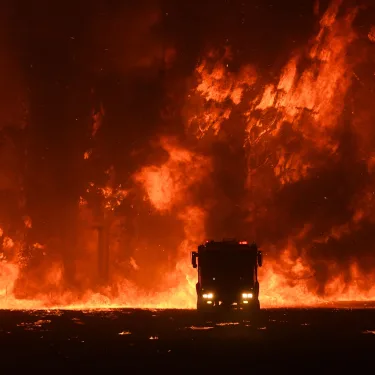 ions, national park staff, environmental protection, lack of basic equipment, such as masks for firefighters, and complacency during the fires, has been the focus of much criticism. While the level of incompetence was indicated by some noteworthy failures even in the heart of Australia’s state bureaucracy – e.g. for 48 hours, smoke in Canberra shut down the government’s Emergency Management Agency, the ACT Government’s Emergency Services Agency suffered a website outage during a rapidly escalating bushfire, and the military started a fire which ACT Chief Minister Andrew Barr called the most serious bushfire threat to Canberra since 2003.
ions, national park staff, environmental protection, lack of basic equipment, such as masks for firefighters, and complacency during the fires, has been the focus of much criticism. While the level of incompetence was indicated by some noteworthy failures even in the heart of Australia’s state bureaucracy – e.g. for 48 hours, smoke in Canberra shut down the government’s Emergency Management Agency, the ACT Government’s Emergency Services Agency suffered a website outage during a rapidly escalating bushfire, and the military started a fire which ACT Chief Minister Andrew Barr called the most serious bushfire threat to Canberra since 2003.
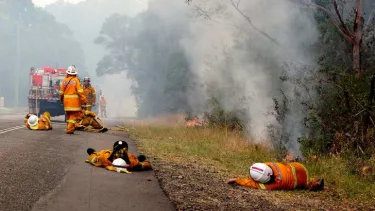
In the wake of the fires, there have been widespread outcries about the slow, complicated and inadequate systems of disaster aid and the restoration of essential services. Many people who’ve applied for ‘recovery assistance’ haven’t received any, or are finding it impossible to navigate the bureaucratic labyrinths of governments, banks, and insurance companies. The stupidity and cruelty of Centrelink was clear from the early days of the fires and the anger over inadequate support for those in need has continued to grow, as the degradation of state and business processes retraumatises impacted people and communities. Anger has also been turned on NGO relief agencies. While donations have poured in, they’ve often been poorly distributed, and many agencies have been forced to defend how and when they’re spending relief money.
Concerns over the organisation and use of disaster relief are widespread. International disaster relief is often part of state ‘foreign aid’ and despite massive cuts to this ‘aid’ the Australian military is sometimes deployed overseas in the wake of catastrophe. However, the provision of ‘disaster aid’ often becomes another disaster. As detailed by researchers, such as Naomi Klein and Anthony Lowenstein, ‘disaster capitalism’ builds on the long-running neo-colonial transfer of resources and wealth from poor people to the rich and focuses on the interests of big business and transnational corporations. While camouflaged as humanitarian operations, these disaster interventions are used to help maintain ‘order’, protecting and extending exploitative capitalist social relations and breaking resistance to capitalist state policies and practices. ‘Disaster aid’ is also used for military purposes and to promote ‘national security’ objectives. It is largely done in cooperation with the private sector, with much of Australia’s overseas aid tied to investments in oil, gas, and mining. As well, corporations are cashing in on what remains of the ‘foreign aid’ budget, securing billions of dollars to do what the Government used to do.
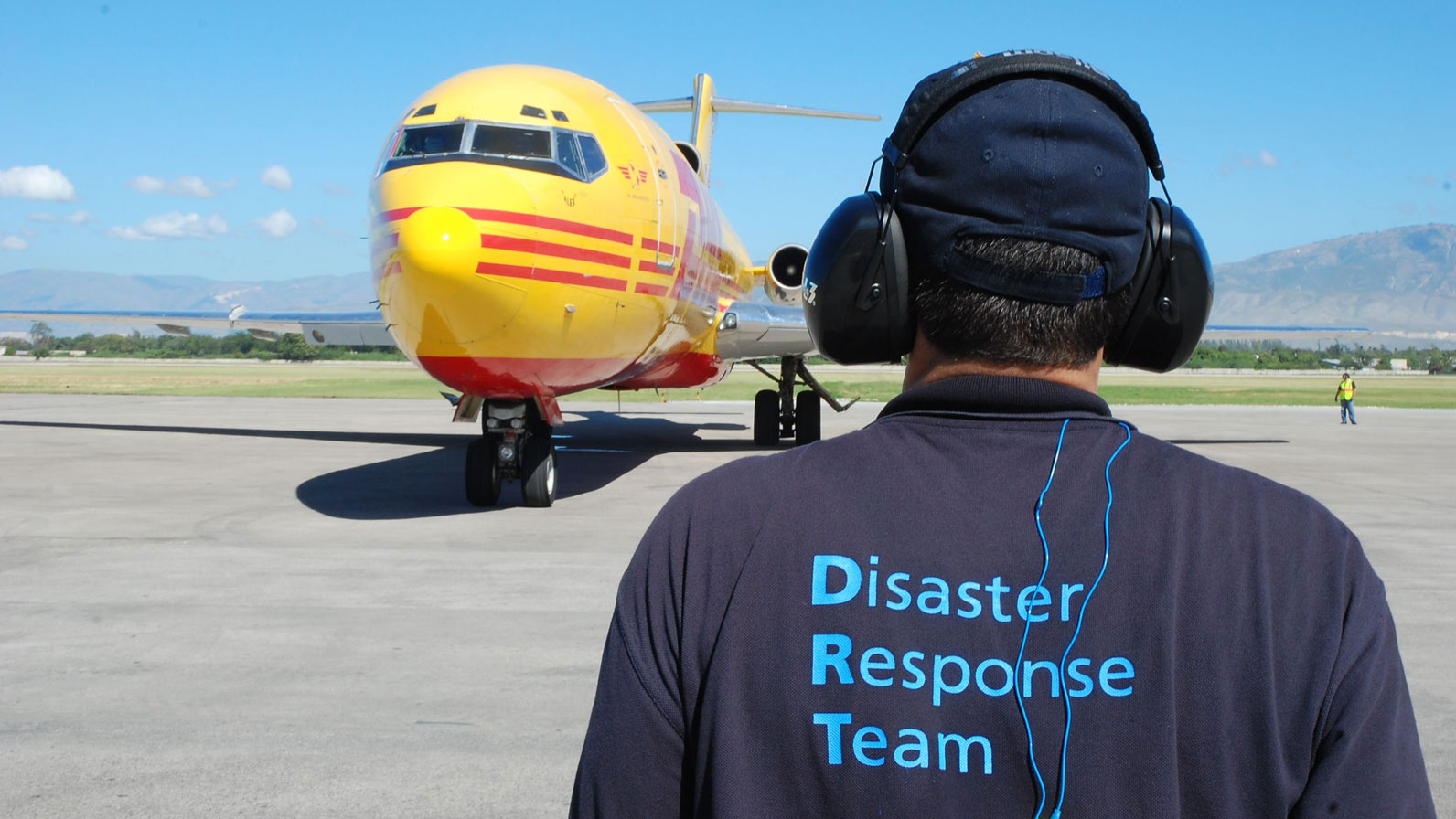
There are also widespread concerns about communities filling the gaps left by government negligence or cutbacks. Some argue that because self-organised disaster communities are more effective than state agencies and market forces at responding to disasters, governments can “sit back and let people suffer, then reassert itself when the community dissipates as normality returns. This is the state’s interest in ‘resilience’, exposing people to disaster, abandoning them to survive by their own efforts, and then moving in with the ‘disaster capitalism’ of reconstruction and gentrification once the moment of disaster has passed.” This is a reasonable concern, however governments tend to respond in more complex and contradictory ways.
State institutions still tend to have the most money, personnel and resources to react to major disasters and during and after disasters, some government intervention can be useful. There are a variety of capitalist state forms, some of which are worse than others. For example, state funding for fire and emergency services, welfare and health support, etc. can be helpful. Yet governments seek to contain, restrain and exploit people. Grassroots initiatives can be considered both hindrances and assets to different state institutions, as they have various interests in interacting with popular activity. Many state disaster planners are aware of the limitations and mistakes of traditional hierarchical organisations and seek to combine grassroots efforts with those of government agencies. This approach aims to manage the complexity of communities, create resource and information sharing networks and coordinate relief efforts, often dominating the way people relate to and work with each other, and without genuinely shifting power from state agencies into the hands of communities.
Contemporary governments are grappling with increased management of eco-systems, looking for ways to address the climate crisis while continuing to support ‘economic growth’. State crisis management ‘attempts to combine mechanisms that individualise, isolate and create competition, with controllable forms of cooperation and community’, aiming to socialise the costs of disasters while providing ‘business growth opportunities’ for the private sector. Yet, despite mounting evidence that governments oppose the radical action required for climate justice, and will continue to defend capitalism to the death, calls for a stronger and more interventionist capitalist state remain the common focus of much campaigning.
While the ability of people to powerfully self-organise helps to shape, transform and limit the impact of state power, calls for government ‘leadership’ and demands for powerful state reactions during the fire crisis have helped to shift the focus in a direction the government likes – towards a more authoritarian state. For example, Jeff Sparrow explains how right-wing forces have highlighted the limited amount of arson, transforming “an ecological crisis into a law and order problem, paving the way for new legislation and fresh penalties”. While in 2019, politicians spent more time discussing how best to punish environmental protesters than they did addressing the climate crisis. With Peter Dutton, for instance, calling for activists to be shamed, jailed and cut off welfare, declaring; “These people are anarchists and fringe-dwellers and they should face the full force of the law.” Similarly, in Queensland, the ALP premier Annastacia Palaszczuk rushed through draconian laws to jail Extinction Rebellion supporters.
‘Force May be Used’
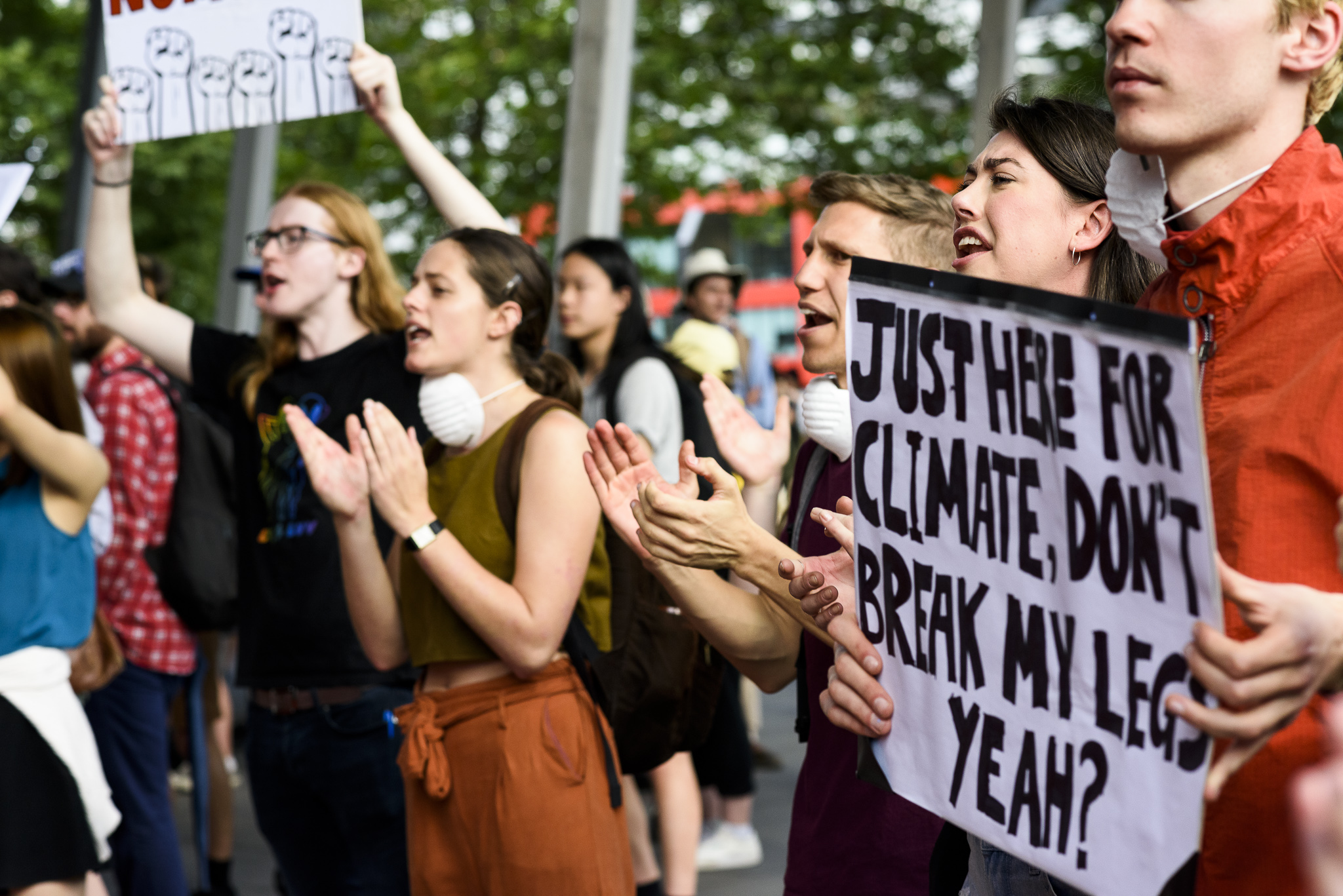
IMARC blockade in Melbourne.
In late October, during the early weeks of the bushfire crisis, we saw a powerful state response to defend the International Mining and Resources Conference (IMARC) from climate protesters. As people blockaded the Melbourne event, police horses were dangerously ridden through the crowd, rendering at least one person seriously injured. Dozens more were assaulted by police, including some who were choked and several who were beaten with batons. Alarming amounts of pepper spray was also used to hurt many others. The police violence was clearly premeditated and political. Snatch squads arrested people considered to be protest organisers, targeted those with megaphones, and the police tried to stop media coverage of their violence. Regardless, the corporate media suggested it was protesters who were violent, despite all of the images confirming the police as the aggressors.
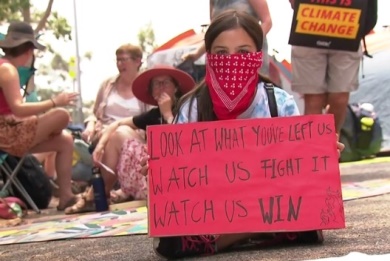

A few weeks later, demonstrators set up tents outside Kirribilli House and demanded that the Prime Minister return from his holiday to take action on the fires and the climate crisis. The tent occupation in a cul-de-sac was peaceful and wasn’t blocking traffic. A 13-year-old school student, Izzy Raj-Seppings, was sitting quietly among the protestors, who were singing Christmas carols, performing spoken word and dancing, as the riot squad marched through the smoke haze towards them, and began arresting people. When the cops approached Izzy they made their intentions clear, if she refused to leave the area they would be arresting her, and if she didn’t comply – “force may be used”.
Gladly, at the end of a year when young people led a radical transformation of the climate justice movement, the police treatment of Izzy was widely condemned, she received extensive support, and her refusal to be intimidated was broadly hailed as an inspiration, even from the mainstream media. However, it’s important to note that although ‘force may be used’ is true in specific circumstances, in general this is a lie – force is being used. The rule of capital is an unending war, a social relation of constant violence, while the appearance of peace is dependent on the continual threat of more violence. This is why governments regularly deploy the weapons at their disposal and why they let us know that more violence can be unleashed whenever they want.
‘Send in the Army’ – It’s War!
Naomi Klein has previously talked about how wildfires act like an ‘invading army’ and it didn’t take long before the language and metaphors used to describe the local fire crisis were similarly those of war.
“But this wasn’t just a fire, it wasn’t just a bushfire….it was a war zone. We feel like refugees in our own country.” (Illawarra Mercury, 10 / 1/ 20)
“It was like an atom bomb. Plants and animals here have been vapourised.” (Illawarra Mercury 7 / 1 / 20)
“This is our bushfire Gallipoli.” (David Bowman, Professor of environmental change biology)
The largest peacetime evacuations in Australia’s history were seen by some as an echo of the Gallipoli retreat, when thousands had to be rescued from beaches by Australian armed forces. Even though most people on the South Coast were rescued by each other, rather than the military, including by a ‘people’s armada’ of small boats and tinnies. Other commentators deployed jingoistic and reactionary war-time politics to stir people into action – illustrated by these posters from the Climate-Action Canberra Facebook page.
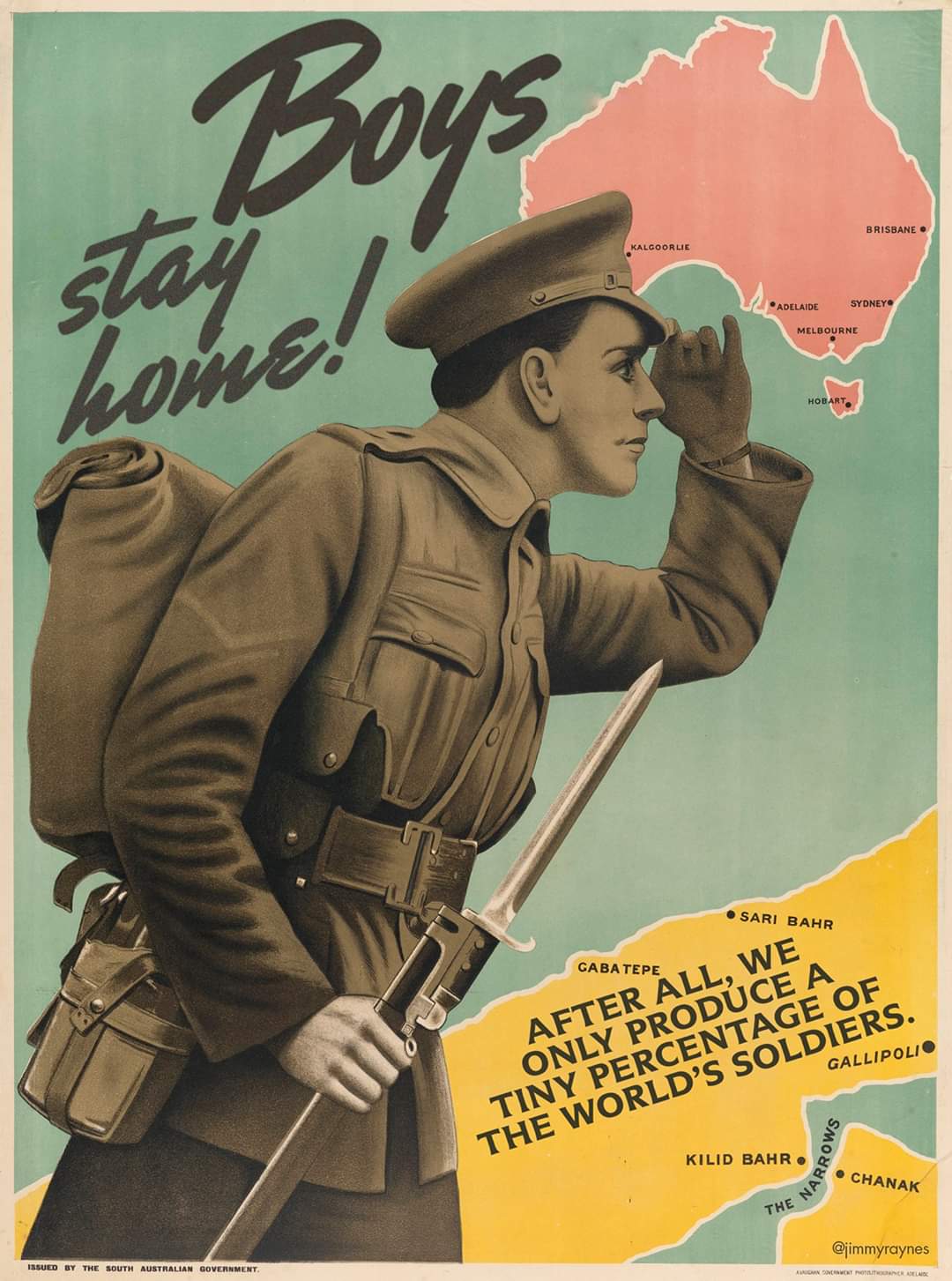
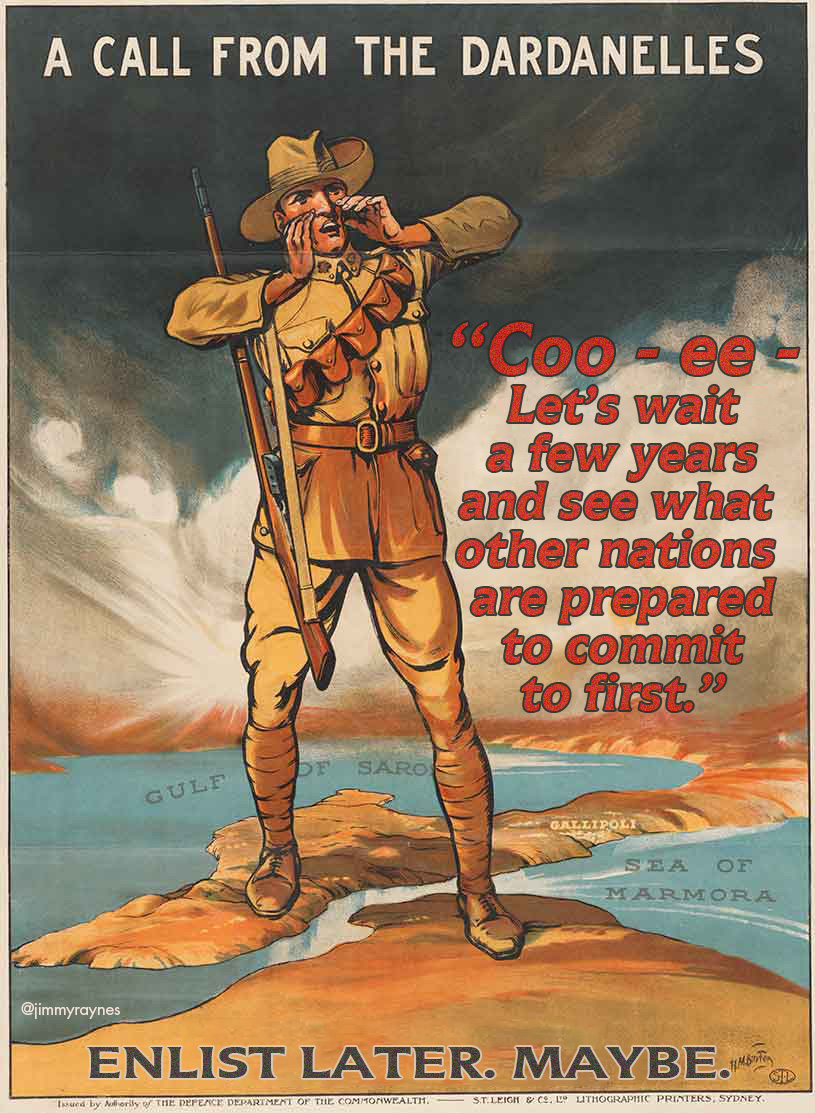
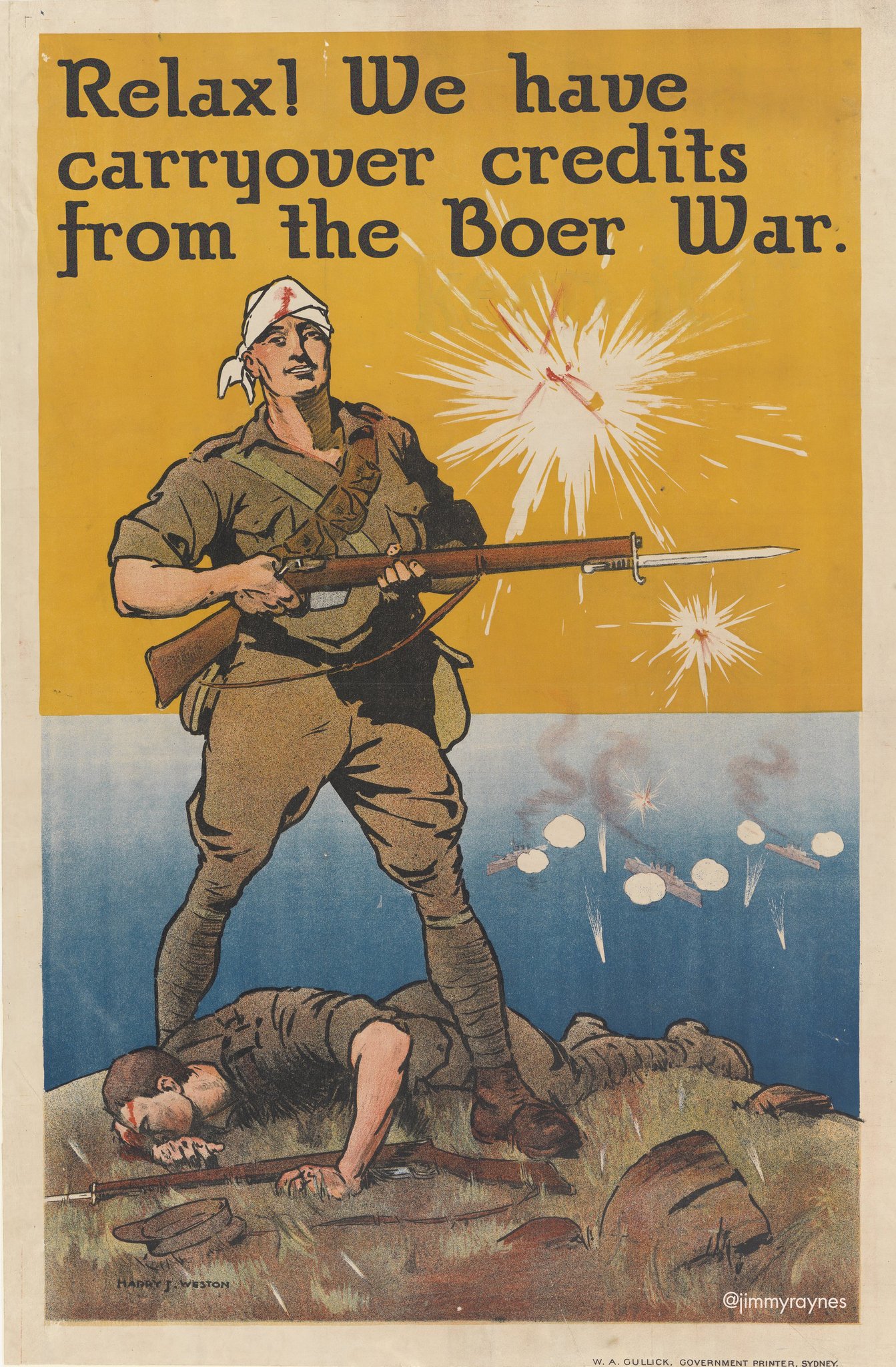
At the same time, Federal ALP MP, Mike Kelly, called for a ‘war-like national mobilisation effort’ to deal with the threat of climate change, suggesting the federal government establish a civil defence corps (CDC) that could operate as a national disaster response reserve. Kelly, a former soldier and currently the shadow Assistant Minister for Defence Industry and Support, argued the CDC should be modelled on the Australian defence force reserves and if the CDC was unable to attract sufficient personnel, the government should establish a compulsory national service scheme. “This would require all high school graduates to be absorbed into the CDC on leaving school for perhaps a one-year period, after which they would be required to render service as required,” he said.
Joining the call to arms, Australian Council of Trade Unions (ACTU) Secretary Sally McManus also demanded – “A war time mobilisation to overcome this national disaster and to fight to stop and defend against the ones that may come.” South Coast Labour Council (SCLC) Secretary, Arthur Rorris, agreed and declared – “this is the greatest threat to our National Security since World War II” – arguing that; “In World War II in the battle against Nazi Germany and international fascism we relied heavily on our steel industry and particularly the Port Kembla Steelworks on the South Coast to make the ‘bullets and the bombs’ for the war effort. Today we again rely on our Steel Industry to fight the battle, only the ‘bullets and the bombs’ we desperately need are the massive turbines, solar arrays and other renewable energy systems which are all steel based.”
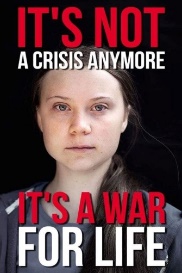
From ‘Stop Adani’ Facebook page.
At the same time, some of those promoting the expansion of military industries also began comparing the impacts of climate change in Australia to a foreign invasion, denouncing ‘appeasement towards the planet’s third superpower’, and calling for increased military spending to fight the ‘climate war’.
While a surprising number of people on the ‘left’ echoed calls to ‘send in the army’ and ‘fight a war’, retired major general Peter Dunn, who has been in military combat operations and now lives in the fire devastated area of Lake Conjola, explained that what his community faced on New Year’s Eve and in the weeks following was completely different to warfare and when it became obvious the community was on its own, they organised themselves, supported each other, and established a community-led relief centre which has been operating ever since.
Of course, when much of the landscape looks like a ‘scorched earth’ battlefield, with ‘water bombers’ flying overhead, the shock, awe, level of destruction and the amount of trauma involved can make us feel like we’re living in a war zone. And when we think of the armed forces personnel and resources, all cashed-up and with nothing to do, calls to ‘send in the army’ are understandable. Yet the amplification of war cries helps to conjure up the ideological armoury of colonial, corporate, and fascistic violence.
Importantly, associating world war with social and national unity against a common enemy neglects the ‘war efforts’ that don’t fit this romanticised narrative. Glorifying such conflicts ignores the war crimes of the victors and the dominant tendency of warfare towards brutality and dictatorship. Calls for war-like mobilisations also disregard the fascistic tendencies of today’s states and their militaries. In World War One, more than twenty million people died to defend the power and privileges of the ruling class. While the sanitised version of World War Two rests on illusions of a noble victory against fascism, where we forget about the fascistic practices of the victorious allies, the firestorms unleashed on the civilian populations of Dresden, Tokyo, Hiroshima and Nagasaki, and the environmentally destructive ‘Atomic Age’ and ‘Cold War’ forms of development ushered in by the war’s destructive impetus, which has helped to bring us to our current precipice. Let’s stop and think about why many of today’s calls to action are reminiscent of previous appeals to send our young people into the flames, and why veteran firefighters have described how RFS volunteers feel like “cannon fodder”.
For people seeking safety and security – the Government has attempted to weaponise vulnerability, fear, and uncertainty. When they eventually took concerted action following the New Year fire surge and the spreading anger against them, it was predominantly a military response – seeking to demonstrate concern, strength, and menace. This belated reaction was the largest military operation in Australia since World War Two. A few weeks later, Scott Morrison was at the National Press Club announcing he would be examining how to allow the Government to more easily declare a state of emergency and deploy the military. Now we have a Royal Commission on the fires, led by a retired air chief marshal, looking at what ways the armed forces should be used to respond to disaster emergencies.
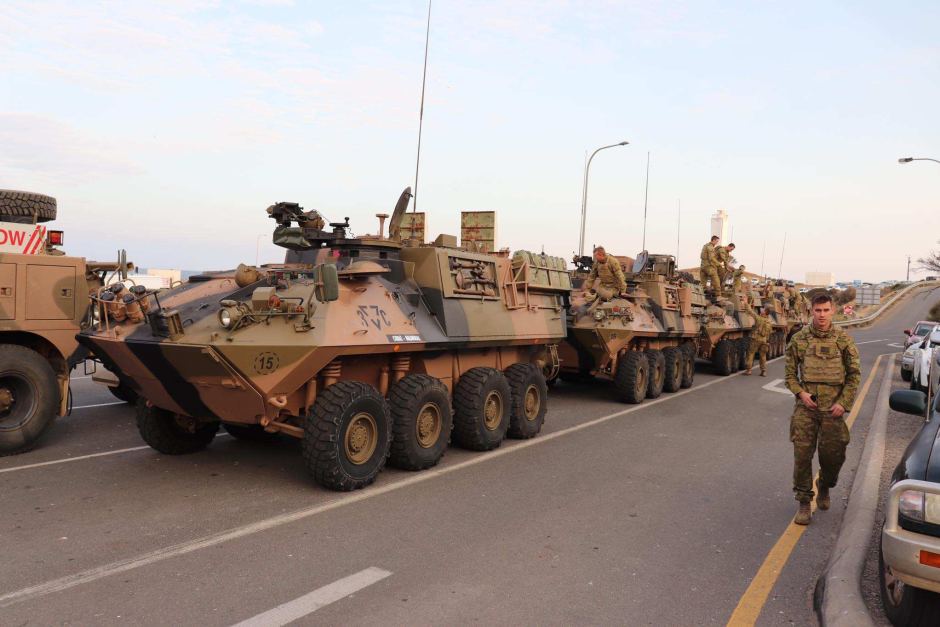
Armoured personnel carriers on the way to Kangaroo Island.
Eco-fascism & Climate Barbarism
As we face the dangers and anxieties of climate, environmental, and extinction crises, these concerns are added to the other insecurities of contemporary capitalist society. Among them, worries about how the forces of capitalist states are being deployed. As Naomi Klein has argued, the ruling class is implementing measures of climate change adaptation on their terms – building border walls, unleashing white supremacist ideology, and creating the intellectual rationale for allowing millions of people to die. As the rising influence of the far-right seeks to mobilise grief, despair, trauma and anger, turning people against each other and the environment, millions of people are already dying to protect the interests of the ruling class and the system which keeps them rich and powerful.
Authoritarianism is embedded into contemporary government and the Australian economy is tied to expanding militarism. As governments cut social aid and welfare support, they increase spending on police, military, and security forces, while introducing more repressive laws governing protests, strikes, behaviour, speech, movement, use of public space, and other civil rights. So, it’s no coincidence that state emergency planning is often in the hands of the most fascistic/militaristic sections of the government, or that someone like Peter Dutton is the senior minister responsible for Emergency Management Australia (EMA), helping to explain the lack of a humanitarian response. As evidenced by the bushfire crisis, EMA is not really a ‘disaster preparedness agency’, instead its chief concerns are ‘law and order’, the protection of private property, and national security. Those calling for a strong leader, or military intervention, should be aware that the ‘climate war’ is becoming very profitable for military, security, aid, relief, and other ‘disaster capitalism’ enterprises. The chief architects of contemporary disaster management are among the most vicious defenders of the capitalist system – who have long prepared for battles to defend capital and its state forms during crises – planning for ‘continuity of government’ via dismantling existing forms and replacing them with fascistic ‘emergency measures’. So, we should be aware that so-called ‘Civil Defence’ can easily become a military/police/security operation, with authoritarian ‘disaster management’ potentially rolled-out indefinitely.
The ability of people to resist disaster capitalism and to construct communist alternatives is due to the history of struggles prior to disasters and the ways in which disasters cause a breakdown in both the administrative capacities and the authority of governments. In disasters the hierarchies and institutions, the social structures, tend to fall apart and the rise of disaster communism can become very threatening to elites, which is one reason they often react to disasters with military/police power. Large scale mobilisations are required to help defend the environment and living things and although the military can potentially do some of this, their dominant tendency is the defence of colonialism, capitalism, and the ruling class. Helpful resources and efforts, as well as the way we think about and articulate them, must be demilitarised.
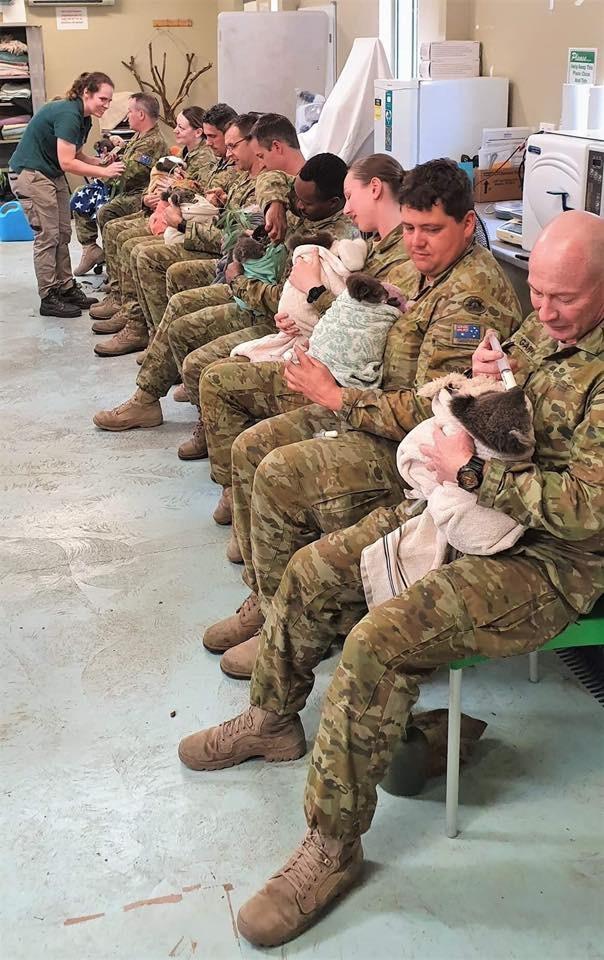
We’re not ‘all in this together’
Social inequality means that when facing the climate crisis we are not ‘all in this together’. Disasters, like the fires, exacerbate existing and long-term vulnerabilities, poverty, precarity, access to power and resources. The poor and marginalised bear the brunt and struggle to survive/adapt/take action. If the climate crisis is a war, it is part of class war, colonial war, and the war against nature. To end such a war we must end class and colonialism and make peace with the earth. So, it’s crucial to challenge the thinking and practices which reproduce violence and destruction. Rather than enlisting an army to conquer the earth, we need to nurture ecosystems of care, protecting ourselves and other living things with democratic defence systems which are self-organised and non-hierarchical; which build solidarity, link egalitarian social movements, and prepare for future disasters.
Governments are signalling a new stage of climate change politics – a sinister shift to so-called ‘practical measures of adaptation’. This is doomsday prepping writ large, expanding on survival and disaster-preparedness strategies from a right-wing perspective, influenced by fascistic ideas of defending ‘your turf’ from disaster victims, with ‘masses of desperate people at your door’ who are ‘trying to take what you have’, amidst a ‘breakdown in law and order’. And we can see how envisaging the popular dystopias of capitalist culture, prepping for Armageddon, or dreaming of a world better off without humanity, can become self-fulfilling prophecies. These types of preparations already involve the construction of bunkers, gated communities, travel restrictions, border fences, roundups, deportations, detention camps, and the hoarding of supplies.
During the fire crisis, we have seen how attention can be turned away from acknowledging people’s care and generosity, or from state and corporate environmental crimes, in order to focus on ‘arsonists’, small scale ‘scammers’, and ‘looters’, and how concern for wildlife and eco-systems can be diverted into the need to protect property and businesses from the ‘hazards’ of bushland, eco-systems and habitats. Here the need to ‘adapt’ is used to justify reducing national parks, increased forestry and land clearing, building more dams, expanding fossil fuel and other destructive projects, the construction of warlike defences, and continuation of the ‘war on nature’.
As Mark Gawne and I outlined previously, communal opposition to these adaptations from above – adaptation from below or solidarity adaptation – involves the organisation of resources and relationships which meet the existing material needs of those on the frontlines of the climate crisis, those living through or displaced by drought, sea level rises, floods, fires and so on. As well as the organisation of resources for the extension of collective control and decision making in the hands of those affected. These forms of adaptation require appreciation of the other worlds that already exist and a growing commitment to struggle for radical alternatives.
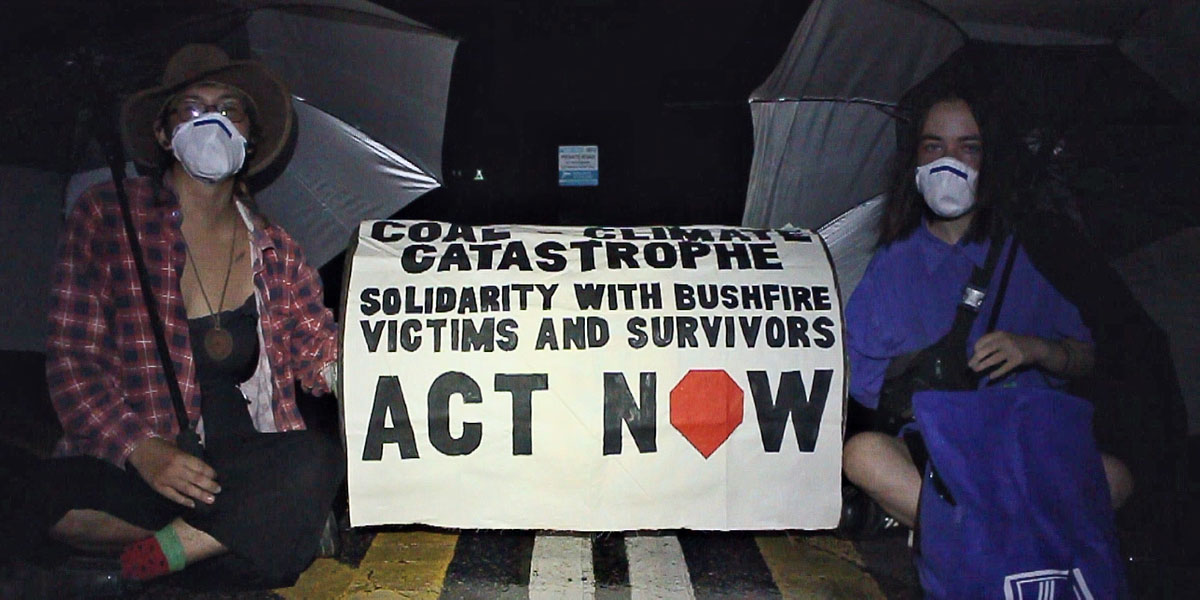
Caring for Country and Nurturing Loving Relationships
Today, humanity’s survival hinges on the preservation and extension of loving relationships that nurture the biosphere, people, flora, fauna, land, water, air, life. One of the most positive things emerging from the fire crisis is the growing embrace of Indigenous cultural burning. Aboriginal land management practices need to be front and centre of the way we deal with the risks associated with climate crisis, environmental destruction and the regularity and intensification of fires. As Lauren Tynan, a Director of Koori Country Firesticks, outlined at the Wollongong bushfire climate protest in early January, cultural burning is a tried and tested methodology that uses a whole of system approach. “This way of burning is more than land management and hazard reduction- it’s living together as mob, with our children and allowing them to learn from fire themselves, allowing them to have a relationship with Country that is healing and revitalising.” And “Climate action is also about relationships, communities and families. Decolonising ecology means restoring Indigenous stewardship to stolen lands [and] colonial governments must cede control over land management and make space for Indigenous people to bring ceremony and healing to their lands and bodies.”
Illawarra Local Aboriginal Land Council Chairman, Jade Kennedy, explains that Country is “intimate, interconnected relationships” involving various roles, obligations and connectedness based on respect, responsibility, and reciprocity. Caring for Country involves learning how to work with and for Country so that we can nurture and sustain life. Relationships of care are crucial to the creation of healthier environments, focused equally on humans and the nonhuman world in a dynamic of interdependence and love, devoting more time, energy, and resources to what’s most valuable – our relationships, environments, and communities. Although Indigenous people only have custodianship of around a quarter of the world’s land, they currently protect eighty per cent of the world’s biodiversity. For over two hundred years Aboriginal peoples have fought the destructive path of colonialism and capitalism. They have been on the frontline of resistance and their care for Country stretches back tens of thousands of years. We must listen and learn.
Communing with Nature
The fire crisis has unleashed on a massive scale something which occurs every day – people offering others a helping hand. These acts of care make a lie out of the idea that people are selfish, self-absorbed, and apathetic. Instead people are often generous, loving, and communally minded. When disasters hit, people responding in caring ways reach out and get to know each, take action, re-configure spaces and relationships, and develop more egalitarian social processes. During the bushfire crisis, many have learned that the best way to cope with grief, trauma, and feelings of helplessness is by helping and being part of a communal recovery. Resiliency is a product of social connectedness, community cooperation, and collaboration. What tens of thousands of traumatised people need now is more care, compassion, safety, comfort, and support.
Having no answers to prevent a rising tide of anger, political ‘fossil fools’ continue to scurry for cover from enflamed communities who want to know why they haven’t acted. But, of course, they have acted – they have acted for the rich, for the corporations, and for themselves. Fantasies of a benign state are incredibly dangerous when so many state forms are becoming more repressive. In the face of disaster, many people see that they cannot rely on corporations, governments and bureaucrats, and in response they turn to each other for support. And these are the alternative social relations that we can rely on, in the face of future disasters, by nurturing communal reliance rather than state-reliance or corporate reliance.
Here on the South Coast, we are now positioned as an important location in the global climate, environmental, and extinction crises – due to the impact of the fires and our responses, the struggles over the future of coal mining, the growth and radicalisation of the climate justice movement, and the development of alternative ways of living and creating. In response to the dangers of annihilation and the adaptations of disaster capitalism, we can construct our own futures and assist revolutionary global transformations, while hoping that time is on our side. We have the power to create radical social change – but we need to organise the best ways to use it – so that we can be the hope we’re looking for.
Nick Southall
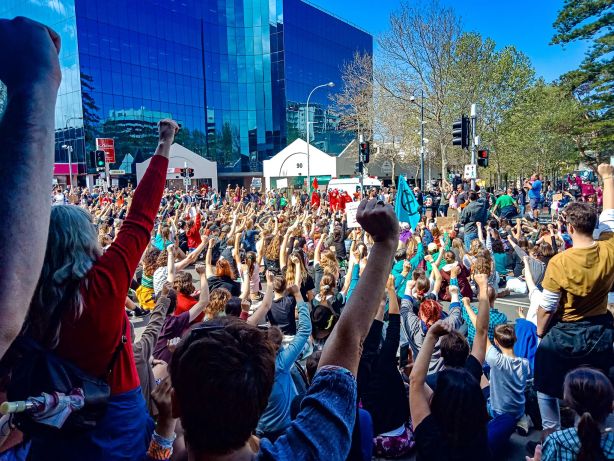
Grief, Love & Rage: A Christmas on Fire
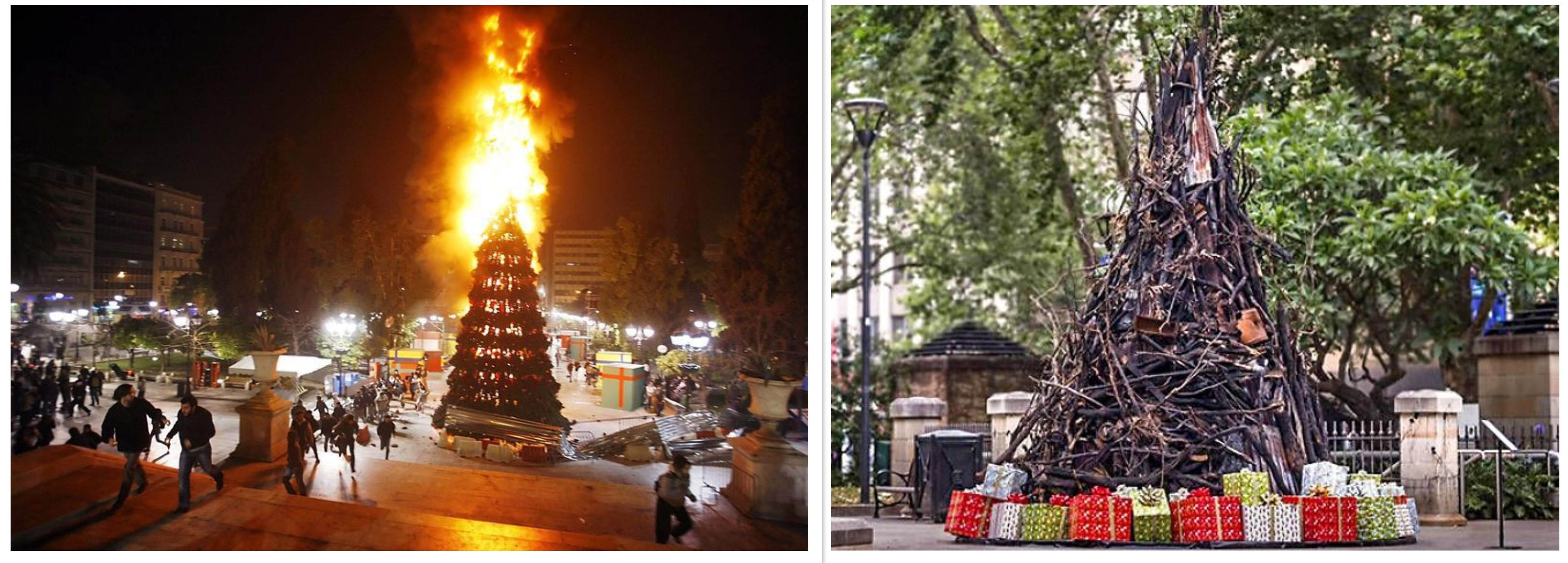
After a busy year, and having gone without a proper summer break for a very long-time, this December I looked forward to a relaxing holiday. In my face mask, during a state of emergency, surrounded by unprecedented bushfires, mourning the dead, I’ve had time to ponder the recent failed U.N. Climate Change Conference held in Madrid after it was moved from Chile, because that country, one of many, was ablaze with popular insurrection. Christmas 2019 is on fire.
I usually like Christmas, but this year I’ve been struck by the number of people ‘giving it up’ or significantly downsizing their celebrations. In the lead-up to the festive season, friends have posted George Monbiot’s article from seven years ago – The Gift of Death – about how Christmas has become the pinnacle event of pathological consumption and a normalised destructive madness. Those posting the article often highlighted the last sentence of George’s piece – “Bake them a cake, write them a poem, give them a kiss, tell them a joke, but for god’s sake stop trashing the planet to tell someone you care. All it shows is that you don’t.” Other recent Facebook posts have promoted the practice of gifting time instead of stuff. Meanwhile, my thoughts are concentrated on the large scale waste of time and the mass destruction of life.
The death of capitalism
As I’ve stated before; “I do not wish to dwell over the grave of capitalism, the yawning abyss into which it’s drawn out death seeks to drag us. This is not because I am unconcerned about, or underestimate, the threat to life that capital poses and it’s not because capital’s obituary has been written many times before. I am very keen to help fill capital’s grave and bury it forever. But I refrain from becoming fixated on its tomb and refuse to become transfixed on the nightmare scenarios of the system’s death throes. Instead I wish to highlight and concentrate on the other side of our spilt time; the future that is already living.” However, this is hard to do when you can constantly see, hear, taste and smell the collapse of capitalist society; when you’re breathing-in the ashes of trees, plants, animals, and eco-systems; when you’re constantly confronted by the death of things that you love.
Walter Benjamin explains that “the tradition of the oppressed teaches us that the state of emergency in which we live is not the exception but the rule.” Crisis and disaster are constant features of capitalist society and as the climate crisis intensifies, recent debates within the environmental movement have often critiqued the privileged for neglecting the long-term suffering of others. While this argument can be divisive and overstated, a recent article by Charlotte Wood spoke of how local people’s moods have changed in the face of the recent bushfires, “from disbelief to hypervigilant fear to a kind of WTF petulance. It’s still happening?” Then; “After our petulance comes a stoic, patient reasoning. It’s good for us to get this wake-up call. And it’ll be over soon. But that was weeks ago, and the patience has been replaced by a grim, creeping dread. A fear that it won’t be over soon, or ever.”
“The existential horror of what all this really means . . . also brings shame, at how we city dwellers have managed to ignore what people in the regions have endured for years now. Even as we’ve written the letters, donated the money and attended the protests about the towns without water, the massive fish kills, the dust storms, the extinctions. Even if we’ve attended to all this in our minds, there’s nothing like going to sleep with the taste of ash in your throat to give you an actual, physiological understanding of real fear.” Yet, most of us still seek to maintain as much ‘normalcy’ as possible, despite the growing dissonance between heightened emergencies and the mundane tasks of every-day life; even though attempting this ‘new normal’ is absurd and distressing.
For many people, our mounting fears are combined with long-term ecological grief. Eco-awareness has become eco-anxiety or climate depression and those who pay close attention to environmental calamity frequently describe their feelings of sadness, rage and perpetual loss. Many people are also experiencing ‘democracy grief’ – despair over the rise of authoritarianism or fascism – and apparently there’s a growing number of people seeking counseling for ‘politically induced misery’. This spreading wave of gloom has prompted some therapists to rethink how they practice, because they have no clinical distance from the concerns upsetting their patients.
Famously, the stages of grief are meant to be – denial, anger, bargaining, depression and acceptance. As I struggled to write this post, I became aware of how I was cycling through these stages over and over again, often very quickly. For me, this reflects different subjectivities – the impact of death and the power of life producing a complex, dynamic process of continual transformation. This is not an individual process but a social one – involving personal changes and the alterations of the world around me – and as I wheel through different stages of grief, I know I’m not alone. Other people are grieving all around me. So, when inundated with sorrow, deploying denial is supposed to ‘help pace your feelings of grief . . . letting in only as much as you can handle.’ Yet, I can’t deny that I feel overwhelmed.
During the recently completed session of university, I taught a cohort of students in Sydney and Melbourne (via video conferencing). At one point, I asked the combined class, who were mainly aged in their early twenties, how optimistic they were about the future. I’m increasingly concerned about student anxiety and depression and I like to pose difficult questions, which they sometimes find hard to answer. This one was met with an attentive but silent response. So I let the question hang, allowing the uncomfortable quietness to continue. Eventually, one of the Melbourne students called-out – “we’re fucked!” The other students greeted this with a relieved wave of laughter and affirmation. There was no disagreement from any of them.
‘We’re fucked’ is now such a common refrain that I hear it almost every day – when I’m online, or out with friends, when I chat to strangers, when I’m home with my family – and I’ve begun to accept it. Yet the acceptance of eco-grief, democracy grief, or ‘politically induced misery’ doesn’t help me move on from them. Instead this acceptance feels like a part of me has died. While I accept that things will never be the same again, I remain alert to the dangers of resignation and continue to promote a range of optimistic alternatives; despite my own sadness, in the face of incredulous and emphatic dismissals of hope, the withering looks, and stunned silences.
We are all very anxious
We Are Plan C argue that anxiety is the dominant affect of contemporary society – “Today’s public secret is that everyone is anxious . . . All forms of intensity, self-expression, emotional connection, immediacy, and enjoyment are now laced with anxiety. It has become the linchpin of subordination.” Anxiety and stress tend to be “understood as individual psychological problems, often blamed on faulty thought patterns or poor adaptation. Indeed, the dominant public narrative suggests that we need more stress, so as to keep us ‘safe’ (through securitisation) and ‘competitive’ (through performance management).” They conclude that; “People are paralysed by unnameable emotions, and a general sense of feeling like shit. These emotions need to be transformed into a sense of injustice, a type of anger which is less resentful and more focused, a move towards self-expression, and a reactivation of resistance.”
A few weeks ago, a friend of mine mentioned how common it was to hear or read the term ‘existential’ in relation to the climate crisis. We briefly discussed how this is because we’re seeing so many things ceasing to exist, or rapidly facing the same fate. We also talked about existentialism and how existentialists view anxiety in a different way from most psychiatrists and psychologists. Rather than perceiving anxiety to be a problem that should be resolved, they view it as an inevitable part of life that everyone will experience, and which can teach us important lessons about life. Albert Camus argued that the ability to have passion for what could otherwise be considered a meaningless life reflects an appreciation for life itself. If your life becomes about living more fully, then life is understood as meaningful. Existentialism stresses that, despite a range of social constraints, people have freedom to choose and therefor the responsibility to act. It also embraces the destabilisation of dominant systems of meaning and appreciates that these can change dramatically and rapidly. Existentialist angst can help people to reject repression, take action, and create what we lack/more valuable lives. The most progressive existentialists argue that we need to do this collectively.

Earlier in the year, I posted this ‘therapist meme’ on Facebook. From there it was shared almost two and a half thousand times. I have never had anywhere near that level of response to anything I have posted. It seems there’s a widespread desire to move beyond individual therapy and dismantle the system. In the past, I used to see a lot of counselors and some of them were very helpful. Today, I concentrate more on building therapeutic relationships in my ‘solidarity teams’. But, here I find there’s a problem with creating enough time for reflection, faced, as we are, with the need for increasingly rapid action. None-the-less, during the past year, my friends and I have tried to create processes of struggle which are slower, more contemplative and more people-centred; which ‘offer a respite from daily struggle, and perhaps a quieter style of interacting and listening which relieves attentive pressure’, where we can speak with a self-expressive voice, listen, and analyse. This has helped to reinvigorate my capacity to engage in more traditional forms of organising. Yet, the pressure to remain hyper-active is ever-present.
Rage fatigue and anger as an energy
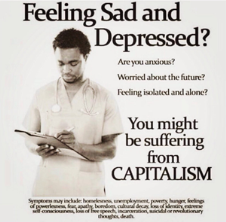
As with many other people, I’m tired of being so sad and angry. They’re becoming too overwhelming to renew each day. Although I’m used to being sad, having previously been diagnosed with persistent mild depression/sadness, I refuse to be miserable, and prefer my rage. According to standard psychology, anger comes from sadness and fear. Here fear includes things like anxiety and worry, and sadness comes from the experience of loss, disappointment, or discouragement. Since fear and sadness are painful and involve vulnerability, people tend to avoid them. ‘Anger is a defensive maneuver, a reaction to feeling wounded.’ However, it’s okay to be sad, there’s a lot to be sad about, and the social pressure to present yourself as happy, when you aren’t, should be resisted. Sharing sadness is a healthy human behaviour and communicating our pain to those who care about us can build stronger social connections.
In contrast to fear and sadness, anger can provide a surge of energy and make us feel more in charge, rather than vulnerable or helpless. Yet, we often fear that the intense emotions associated with anger will overwhelm us and make us lose control, lash out, and/or hurt someone. So we may seek to protect ourselves from the power of our own anger by suppressing it. At the same time, neoliberal society promotes the fake smiles and the countless charades of relentless positivity – where we ‘ignore conflict, deny injustice and oppression, and pretend we’re not angry’. When we’re not supposed to be angry, we tend to internalise it. But regardless of how individualised and isolated we may be, the social power of our anger continues to flare-up and as it becomes a more serious management issue, the system seeks to harness and direct our anger in ways which reproduce its causes.
Let fury have the hour, anger can be power
Do you know that you can use it?
(Clampdown, The Clash, 1979)
So, it can be helpful to think about why we’re angry, what has caused our immediate anger, why we experience long-term anger, what impact our anger has on our relationships, and spend time working through that anger. Failing to acknowledge that anger involves effort or intention, that it’s about losing control, suggests that we have no agency, no power to shape the world as we recreate it. Eco-anxiety and climate rage are not pathologies, they are reasonable and healthy responses to existential threats. Grief and anger indicate a receptivity to what’s taking place; a refusal to numb ourselves to the horrors of our time. Given our genuine sadness, reasonable fears, and real vulnerabilities we have a lot to be angry about. The energy of anger can be clarifying, it can help us to speak the truth, inspire us to change, put us in touch with others who are angry about common concerns, and help us to struggle together for positive change. Greater understanding of our situation can relieve psychological pressures and make it easier to respond with productive anger instead of despair.
Anger can help us to say ‘No!’ to a whole range of shit. But ‘No!’ is not enough. A few years ago, my father said that what he liked most about me was my equanimity; that I was the calmest person he had ever met, and he had never known me to be angry. I found this surprising and once again wondered how well my dad really knew me, since I consider myself to be very angry. But I also thought about how my parents had taught me to express my anger in constructive ways (often by modelling the opposite); ways that seek to control, harness, and direct anger. I’m increasingly angry with mainstream political parties, politicians, corporations, and about the growing violence and destruction wreaked by colonialism, capitalism, fascism, patriarchy, etc. Throughout the year, this type of anger has erupted across the globe, during rebellions in Algeria, Chile, Ecuador, Hong Kong, Iraq, Iran, Lebanon, Sudan, and elsewhere. 2019 has also been a year of increasingly militant and enraged global climate activism. As I write, Australian politicians are having to avoid any public appearances because they’re likely to be confronted by people’s rage over environmental inaction. Yet important questions remain about what this anger can, or will, create.
In recent years, there’s been much discussion about the anger propelling the rise of the ‘alt-right’ and I’ve been thinking about some of the different ways contemporary anger manifests politically and how politicised anger reflects feelings of powerlessness, power struggles, and different forms of power (the power to do things and the power over people). Contemporary anger indicates the exhaustion of people’s caring capacities, as well as the fact that they continue to care. Generally what people want is more power over their lives. Unless our movements can better organise the collective strength to achieve positive social change, we will mostly operate within the systemic hierarchies built on exerting power over those who have less of it, trapped in a ruthless spiral of economic, political, and social competition, ‘alone in our own suffering and fighting among each other’s suffering’.
The expression of anger is not always the most appropriate or effective action, but it can be. It can be a source of strength, fearlessness, and solidarity. It is an energy that has inspired great movements for freedom and social justice. It can drive positive individual and social change. Given the state of the world, we’re likely to see much more anger as well as wide-ranging debates about the uses of this anger, as a surge of enraged movements of resistance confront neoliberalism, authoritarianism, and fascism. But this doesn’t mean that our projects aren’t ones of care, of love, and joy. We are motivated by anger, but it is love for each other, for the world, for life, which produces living alternatives to suffering, grief, and despair.
Ferocious love
Humanity’s survival hinges on the preservation and extension of loving relationships that nurture the biosphere, people, flora, fauna, land, water, air, life. I began this year with an exploration of love – writing and then presenting a paper at a conference on ‘Love as Politics’ in Tokyo. Here I outlined how, following many years of involvement in progressive social movements and political projects, I tended to find people concentrated on the horrors of capitalism, their opposition to existing society, and macro forms of political organising. What was often neglected were interpersonal relations and more caring ways of collectively organising the present. Over time, it became apparent that what I wanted more of in my personal relationships – love – was the same thing I wanted more of in politics. So, I have attempted to escape from my own sadness and what has been termed ‘sad militancy’ – being overly rigid and ruthlessly critical of people in their efforts to organise better ways of living, the striving for an unobtainable purity or perfection, setting goals that cannot be achieved, where the outcome is always out of reach, always projected into the future, so we continuously feel defeated.
‘Struggles are the best teachers’ and ‘friendship is the richest lesson’
To create and maintain caring relationships requires time and space dedicated to working with and on each other and our situations. This might entail supporting each other to deal with anxiety, despair, fear, grief, or anger. What Naomi Klein calls ‘ferocious love’ comes from and feeds back into the web of relationships and affections in which we’re immersed. As Sara Motta explains – our rage is a legitimate response to systemic violence; “But new worlds cannot be built on rage alone . . . we need to rethink the ways in which our emotions, practices and knowledges are limited by the violence of the dehumanising system we are in. We need to think about rebuilding the wisdoms and power that can emerge from connection, solidarity and care and which support us to become free. To rebuild other worlds – to decolonise our lives, bodies and spirits – we need to recreate, recognise and centre in our politics ways of coexisting and supporting each other, and recognising each other as people with complex emotional strategies of survival and flourishing, and with deep wisdoms which come from our experiences of multiple traumas.” Here – “Love . . . is the key ingredient that helps us to resist . . . that sustains and nurtures the will to act, and to carry on when our bodies, communities and families are under constant siege.”
Within loving relationships anger can erupt when dealing with important matters, or what may appear to be trivial things. Sometimes, we’re disappointed with those we love and need to communicate this disappointment. At other times, we might be angry about something else, perhaps something we’re unclear about, and are expressing our anger to someone we believe cares. Loving relationships should be able to accommodate anger and we shouldn’t be surprised when this is conveyed in ways reserved for those we love/who love us; when we speak to each other in ways we wouldn’t speak to anyone else; more openly and sincerely expressing our anger than we might do with other people. These expressions of anger can be forms of love. Of course, I’m not talking here of patriarchal culture or twisted ideas of romance which posit abuse and violence as acceptable demonstrations of affection.
Anger can help us to protect ourselves. It can be channeled into creative and nurturing acts, as manifestations of love. But love can be both positive and constructive or negative and destructive and what people love and how they love has a multitude of potentials. Building caring relationships involves the capacity to block, dissolve and sever those connections which are harmful. We can’t always have ‘good relationships’ with everyone. Friendships can become coercive, manipulative, and exploitative. Challenging and refusing oppressive relationships can help to create more love. In the face of violence and abuse it’s perfectly legitimate to get angry, to be defiant, and to fight-back with individual and collective rage; rage that isn’t filled with hate, although we hate oppression; rage that isn’t just about our pain and suffering, but is also an expression and a celebration of our power to resist and our capacity to keep on loving.
What we care about and our ability to be compassionate are under attack. We can feel our vulnerability growing and we’re worried about the future. Sustained distressed uncertainty is grinding us down and as we prepare for the ‘silly season’ a clear 2020 vision is impossible through the fires, smoke and ash. Our time is split “between a present that is already dead and a future that is already living”. So, this Christmas, rather than gifting each other the system’s shit, let’s offer our presence, provide comfort, and share some special moments. It’s time to express our fears and our grief and to be really fucking angry. It’s time to take care of each other and to better organise the collective power of our love. While much has already been lost, and more is being destroyed, communal practices of sharing and caring can repair damaged habitats, eco-systems, psyches, relationships, and communities. As the fires spread, it’s the response of concerned people, dedicated volunteers, community associations, and social networks that offers the most reliable and resilient support. A new year is coming. A new world is coming. Governments and their corporate bosses are not going to save us. It’s up to us. With love and rage we can rise from the ashes and nurture better futures together.
Nick Southall

Right to Work March – Wollongong to Sydney
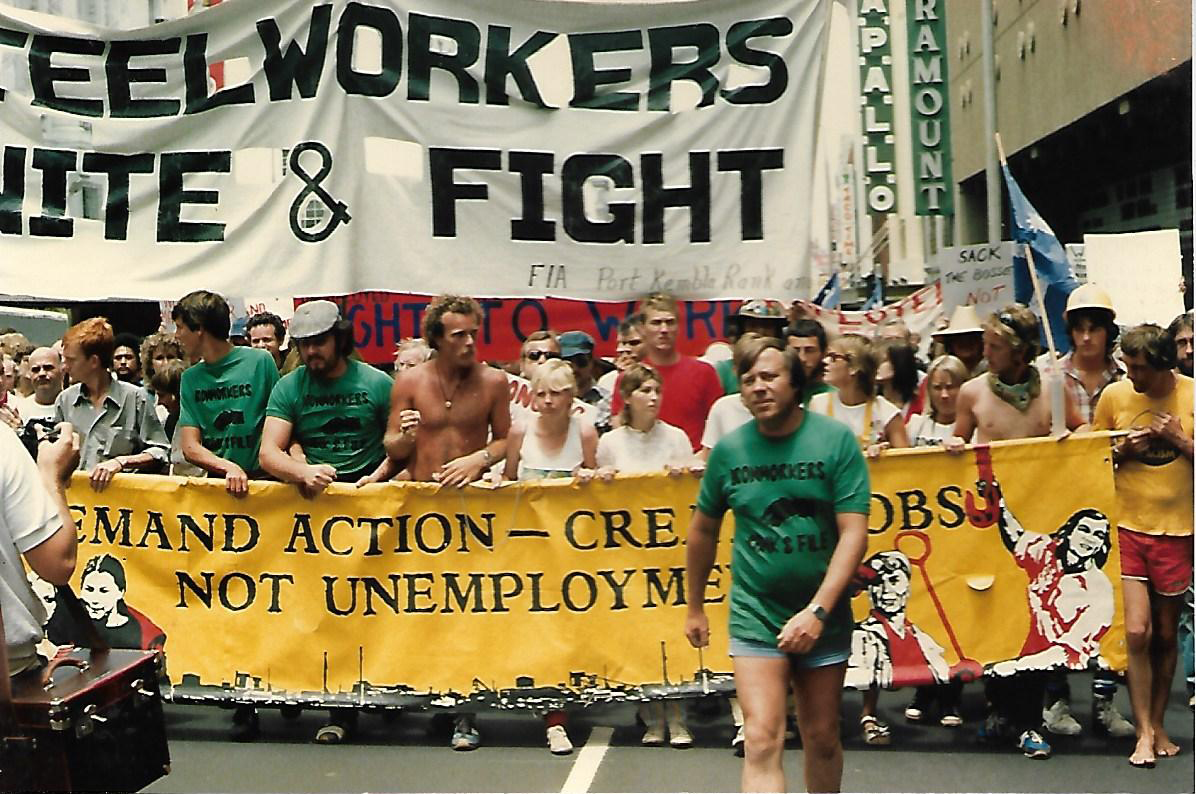
1982 was the height of militant class struggle in Wollongong against mass sackings and rising unemployment. During October of that year, a series of general work stoppages and mass meetings brought together coal miners and steel workers in collective action. At the same time, thirty-one Kemira miners occupied the pit in a stay-in strike to protest their looming retrenchment, staying underground for sixteen days. While the Kemira occupation continued, a series of large demonstrations filled the city’s streets, and workers packed the Wollongong Showground to vote overwhelmingly for strikes in the steelworks and the mines. A meeting of over 20,000 workers passed a resolution to demonstrate at Parliament House in Canberra, leading to the infamous storming of Federal Parliament. Soon after, thousands of steel workers held another mass meeting at the Showground, to discuss the continuing struggle over jobs. Here Peter Cockcroft, formerly the local Communist Party organiser and now Federated Ironworkers Association (FIA) delegate, moved a motion to organise a march from Wollongong to Sydney to protest government inaction. The motion was passed by acclimation and an organising committee was quickly established.
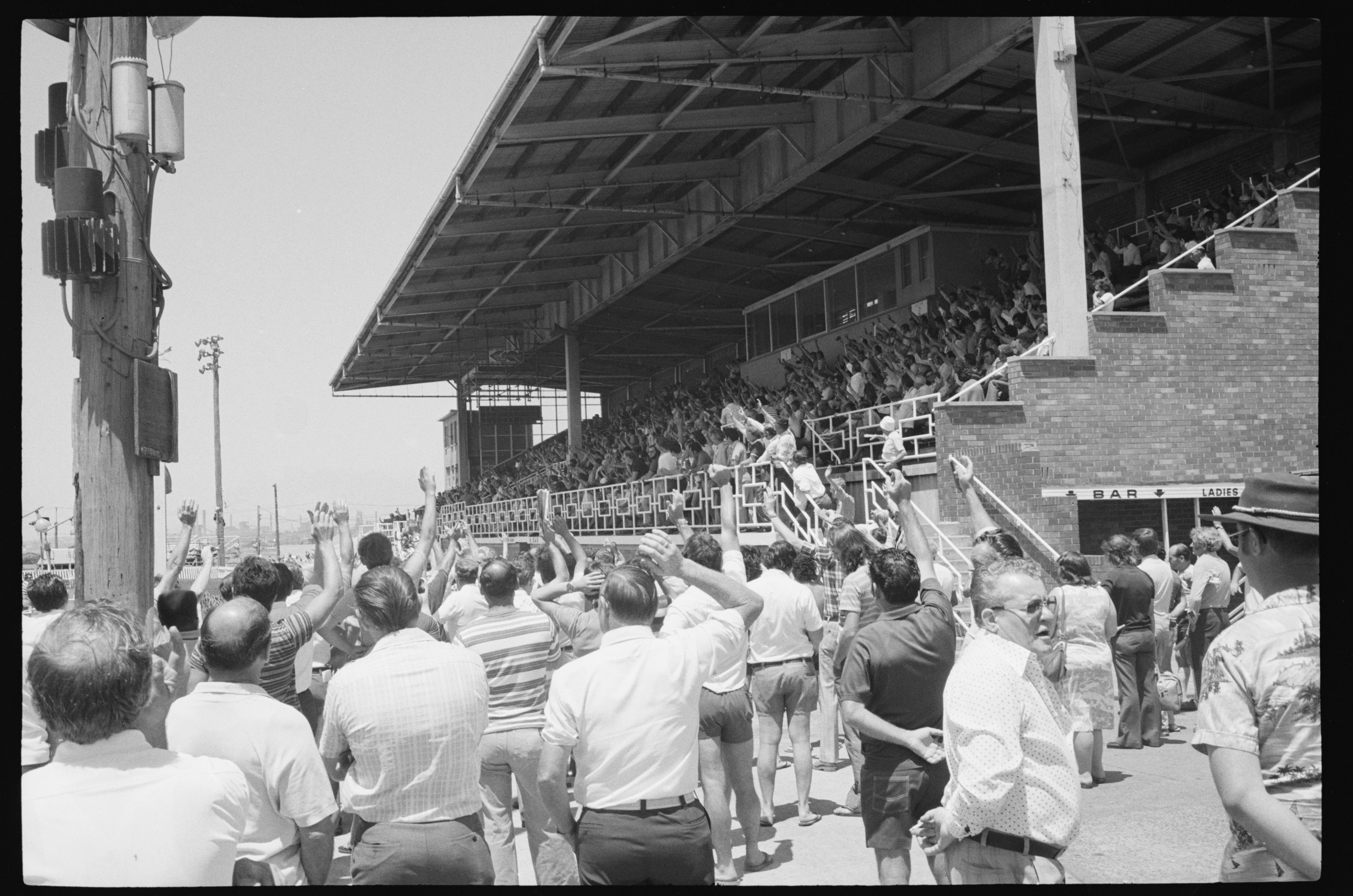
Workers vote at showground mass meeting.
The ‘Right to Work March Committee’ was predominantly made-up of the steel and mining union representatives. The Committee decided that the ‘Right to Work March’ would depart on November 30 and complete the ninety-kilometre trek over four days. This would require a major logistical effort. A route would have to be determined, places to eat and sleep would have to be arranged, provisions, support people and vehicles needed to be organised. Preparations also began for a mass reception rally and march in Sydney with the assistance of unions and supporters from the big smoke. A colourful Redback Graphix poster was rapidly produced to help promote the march and hundreds of them were soon pasted-up and distributed across the city.
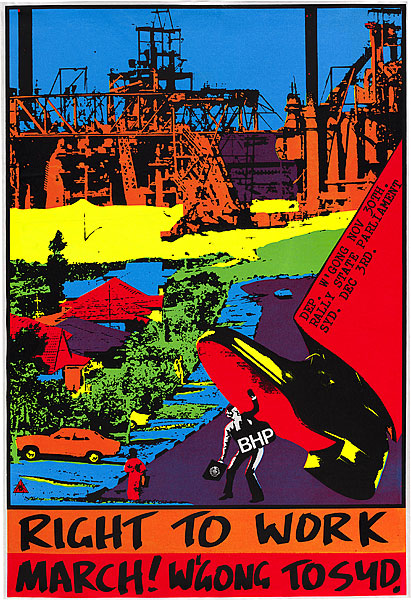
As arrangements for the march gained pace, members of local graffiti group Young and Pissed Off (YAPO) commissioned Gregor Cullen, from Redback Graphix, to produce a banner for the front of the march. The large mainly yellow and black banner would declare ‘Demand action – Create Jobs not Unemployment’. Gregor agreed to do the work for cost price. So, a local political activist was approached for a donation from his marijuana crop, in order to raise the required funds. The money was soon available and the materials were purchased. However, these were stolen from the Redback studios. Since the materials had to be repurchased, the banner’s production was delayed. This meant it wasn’t available for the beginning of the march. Instead it arrived on the morning of the final leg, leading the march from Mascot to State Parliament.
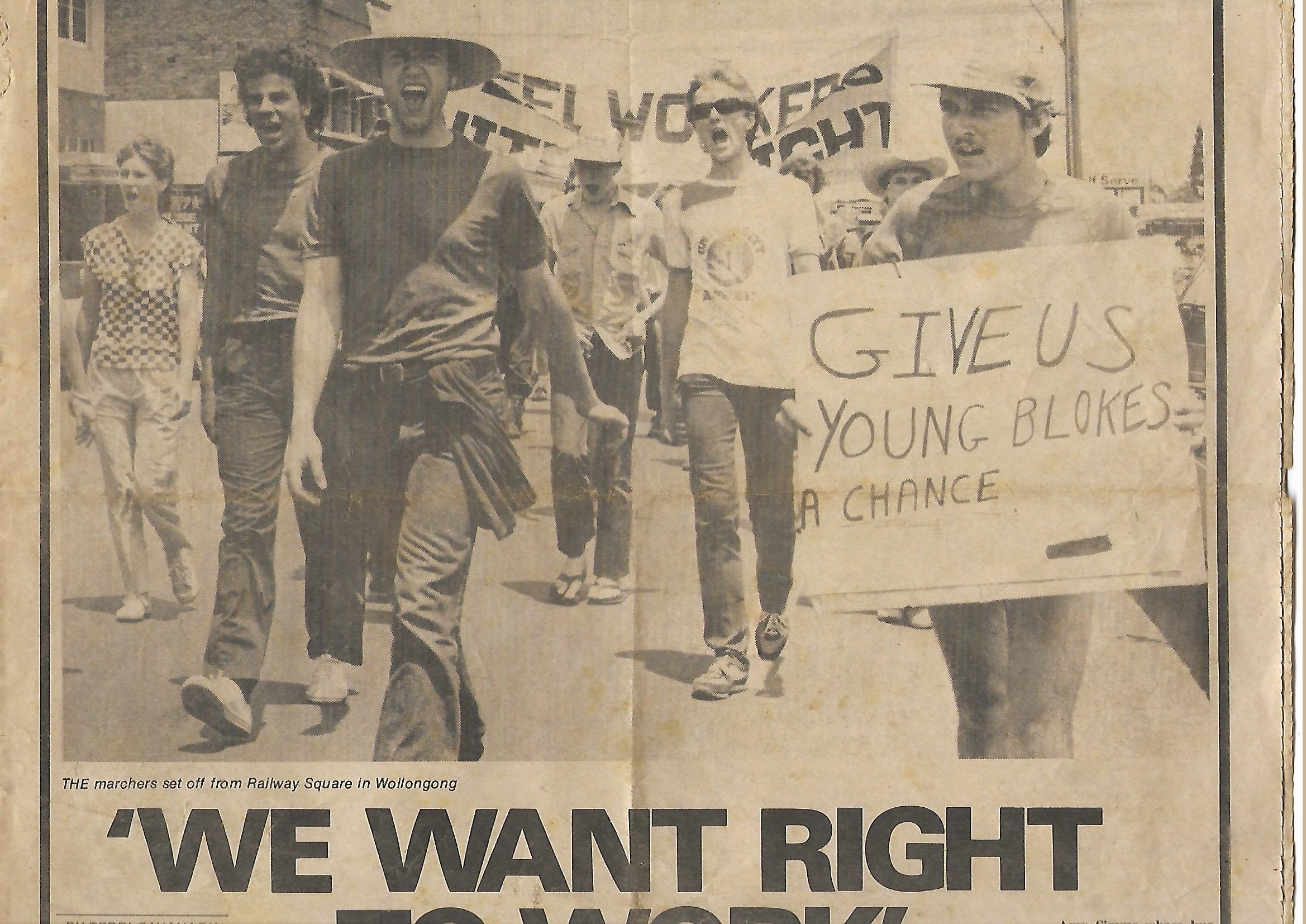
On November 30, a group of about forty marchers set off from the Trade Union centre in Lowden Square. They were mainly young and mostly unemployed, including young unemployed steelworkers who had lost their jobs in the mass sackings (due to the ‘last on, first off’ rule), members of YAPO, the local Unemployed People’s Movement (UPM), the Sydney Unemployed People’s Union, union delegates and organisers, and other employed and unemployed workers. Before we departed Railway Square, just after noon, we were addressed by the Secretary of the South Coast Labour Council (SCLC), Merv Nixon, who said he was proud to stand before us. The marchers were upholding a long tradition of the South Coast working class of bringing their concerns onto the streets, he said, and we carried with us the full support of the fifty-nine unions affiliated to the SCLC. Officials from a number of unions attended the send-off, but local workers had been asked to wait until the march arrived in Sydney before coming out in support. However, a contingent of retired miners and another from the Miners Women’s Auxiliary joined in the march for the first leg through Wollongong.
We left Lowden Square brandishing the Right to Work march posters and home-made placards, marching under a banner which read ‘Steelworkers Unite & Fight’, chanting ‘We want jobs!’ and ‘Sack Fraser not workers’. As we marched through the city and then through the northern suburbs of Wollongong, drivers beeped their horns and called-out in support. At various points people came out of shops, their homes, or gardens to clap and wave as we went past. Some people brought out food or drink for us. At Thirroul, the march received a welcome of steamers from well-wishers, who had waited since the morning for the march to arrive. Around 4pm, we reached Coledale Beach where we would be camping that night, eighteen kilometres down the road from where we began. We sank onto the grass for a rest, a BBQ dinner was prepared, some people braved the surf, while a few began contemplating the mountain range which would have to be crossed the next day.
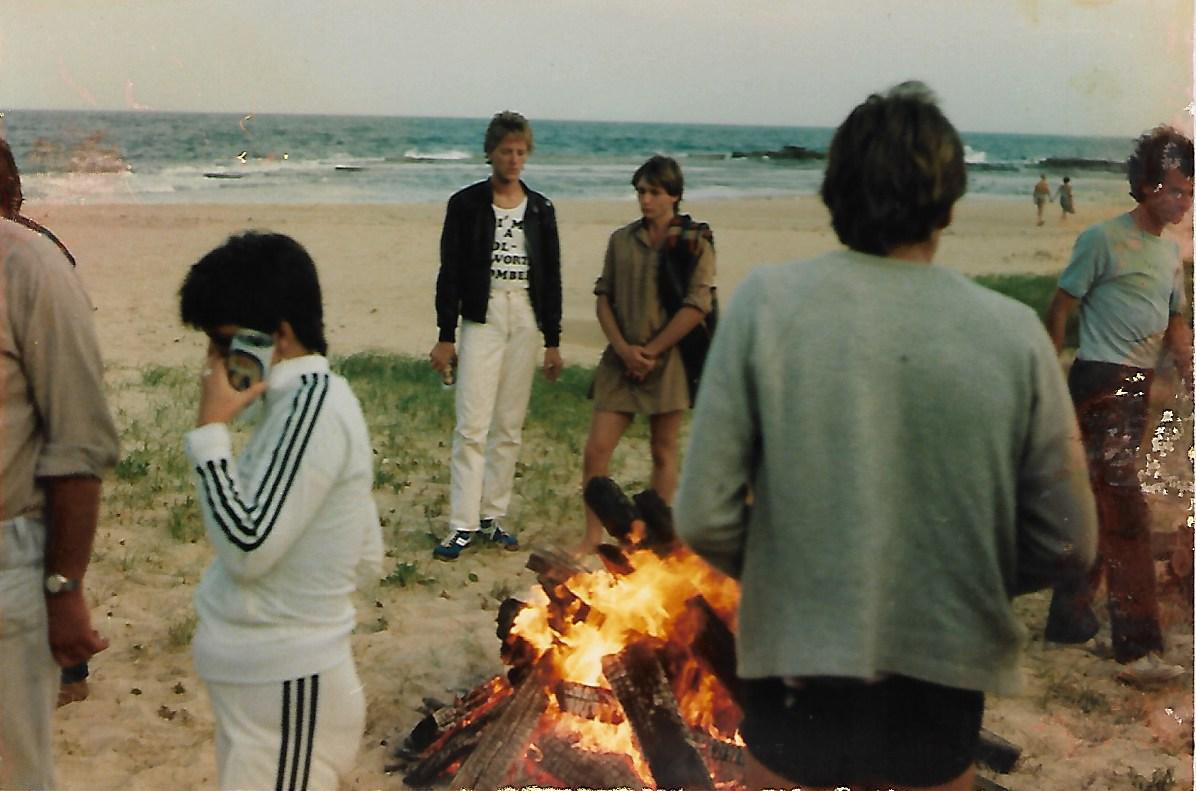
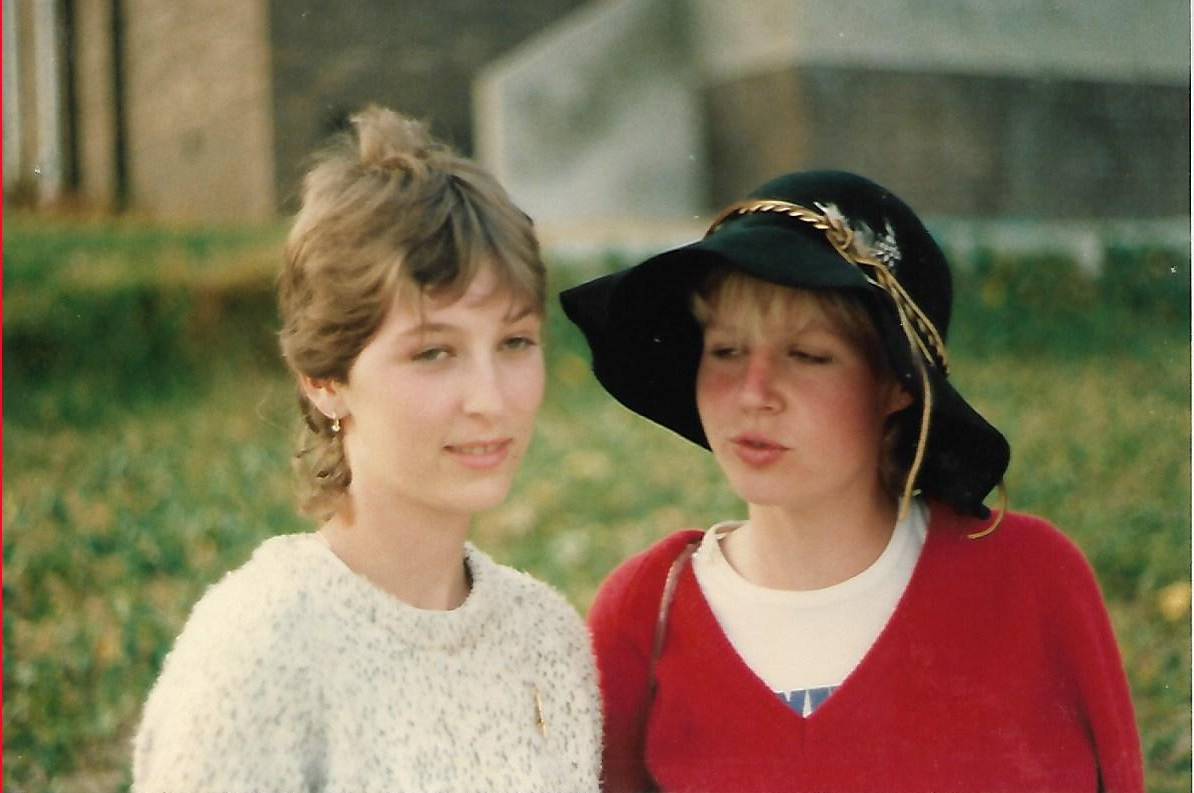
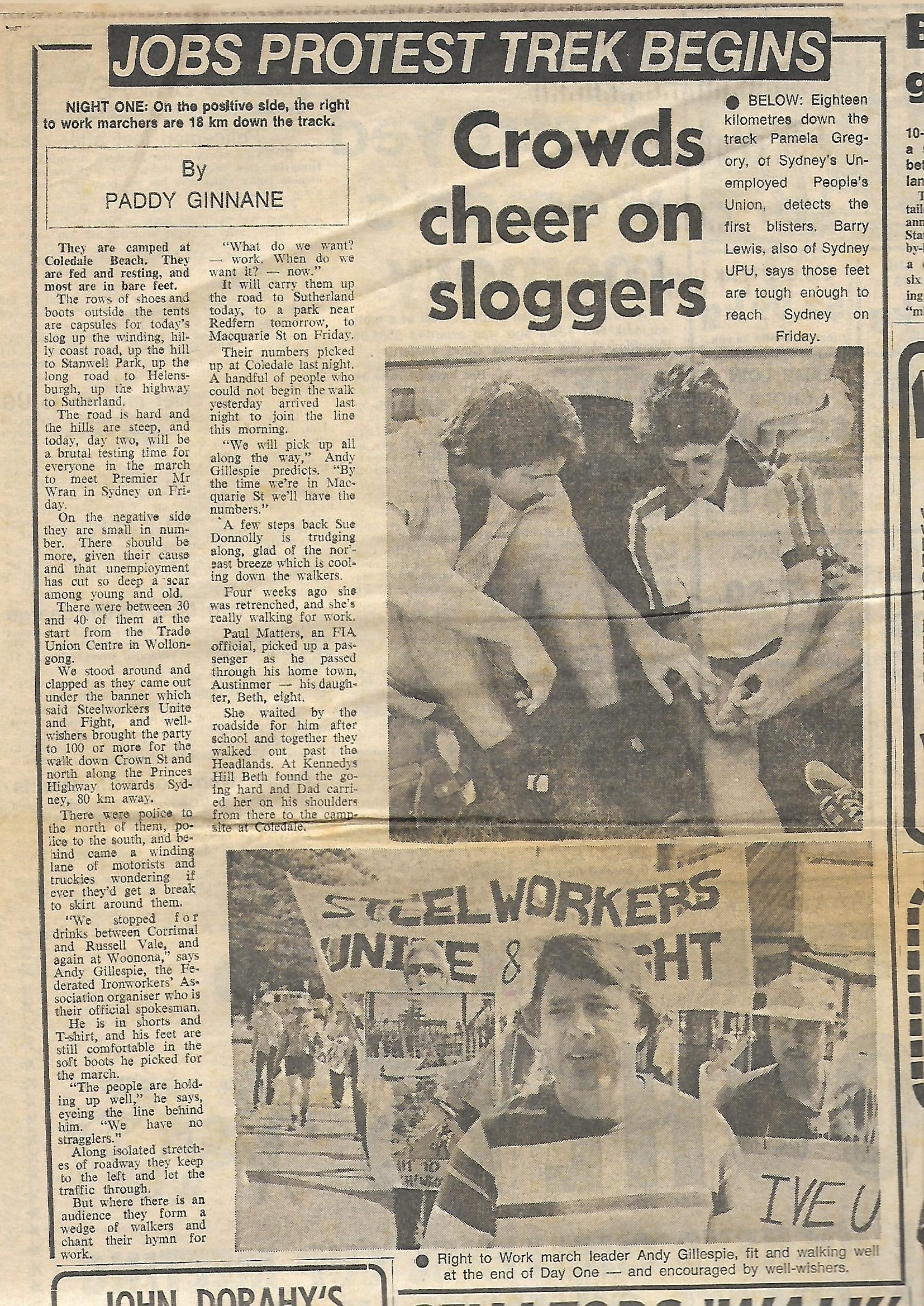
The second day was the longest and hardest slog, over forty kilometres – up the winding, hilly coast road, up the steep incline of Bald Hill to Stanwell Tops, further up the long road to Helensburgh, and then along the highway to Gymea. At breakfast the state organiser for the Australian Workers Union, Digby Young, brought greetings from workers on State Rail’s Illawarra electrification project. Young told us the workers on the project had met the day before and decided to stop work in support of the march. Half an hour after leaving Coledale, at Scarborough, one of the marchers, Kevin Cafferty, was given a pleasant surprise when a woman raced across the street and thrust a cheque for $100 into his hand.
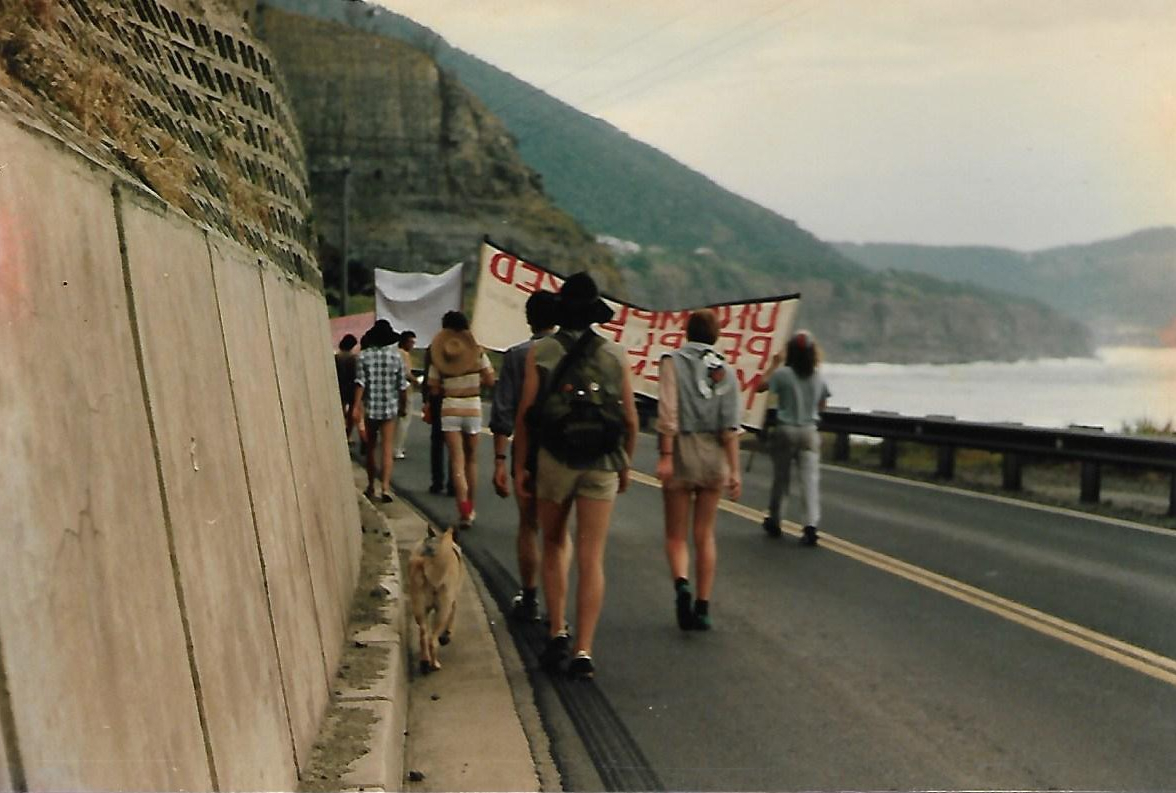
It was a hot sunny day and we had to stop for regular drink breaks. At Stanwell Tops, we were met by a delegation of local retired miners. They brought us a bagful of Aeroguard, as the bush flies were heavy in the air and every marcher had a blanket of them on their back. At the Helensburgh Workers Club, we were given a warm welcome and the dress rules were waived to allow our sweating, T-shirted, group into the dining area for a free lunch and a few drinks. Here pensioners made donations to the march fund and the president of the Helensburgh Retired Miners, Jim Duffy, told the marchers: “Your cause is my cause” as he spoke about the unemployment and hunger marches in the 1930s and how “the spirit has never died . . . The system’s got to be changed altogether,”
The thirty kilometre walk from Helensburgh to Sutherland was the most arduous section of the whole route. This was the first time I can recall going through my pain barrier and that day it happened a few times. Andy Gillespie, an FIA organiser and key motivator for the marchers, spent several hours convincing us that our destination was ‘just around the corner’. While this was annoying, it did help to keep us going. For much of the day we were filmed by Tom Zubricki’s camera crew, who were making a movie about the Kemira Stay-in Strike. At Waterfall, the march was greeted by Water Board workers, who pledged their support. All along the highway, through Heathcote and Engadine, cars tooted and trucks issued their unmistakable, long blare to the marchers. Again, people called out support from their homes and gardens as we passed by.
Finally, at Gymea the march received a rousing welcome from a crowd of people waiting to cheer our arrival. A campsite had already been established at a sports oval (Miranda Park) just down the road from the Sutherland District Trade Union Club and among those greeting us were practitioners from the Workers Health Centre, who tended to the sores on our feet and gave us foot massages. Meanwhile, one of the commercial Sydney TV stations had set-up a mobile transmitter to cover our story for that night’s news. After regaining enough strength to walk-up to the Club, we found our muscles had tightened-up and it took us ages to shuffle the short distance to get there. We were all in pain and laughing away at how silly we looked. At the Worker’s Club we were given a dinner and a reception where speakers from the local trade union movement congratulated us, and plans were laid out for the Sydney section of the march. We returned to our campsite worn out, blistered and sore, but with a renewed sense of pride and determination.
On the third day, we marched from Gymea through Sans Souci, where we were given a warm welcome and morning tea, served by the local Watkins family, then through Dolls Point, Kingsford and on to Mascot. Along the way workers on job sites cheered us, waved and wished us good luck. We camped overnight at Mascot Park and had a meeting to discuss the last leg into central Sydney and what was planned for the city. We already knew that thousands of Sydney workers had voted to stop work for the day in support of the march and rally, so we were very excited, despite being exhausted.
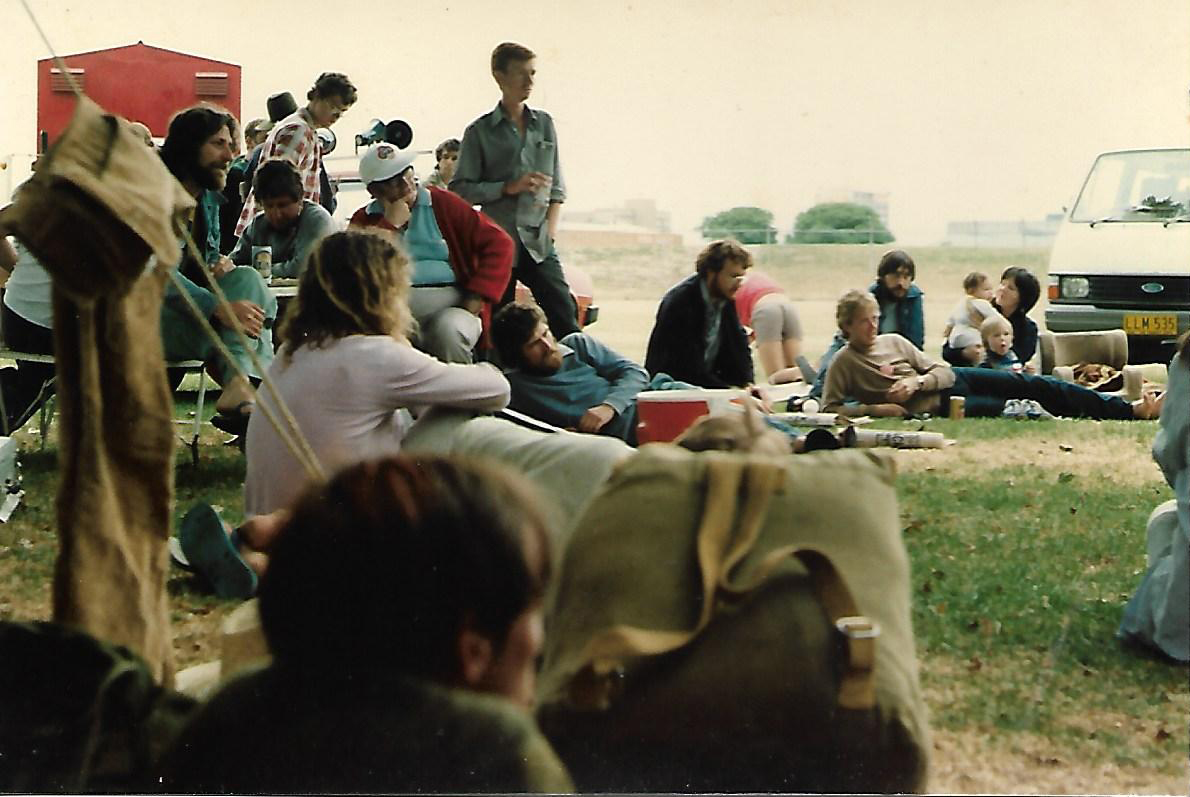
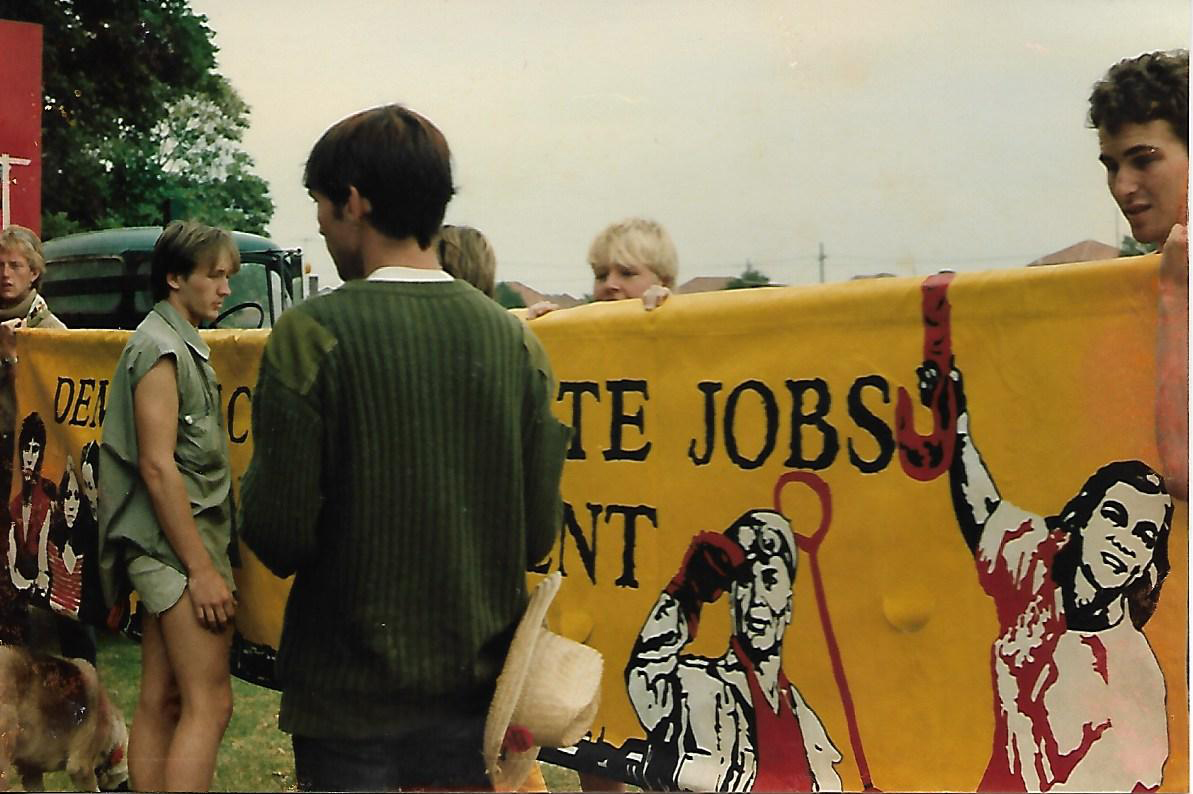
Preparing to enter central Sydney the next day, we finally got to unfurl the ‘Demand Action – Create Jobs not Unemployment’ banner. The plan was to march to Belmore Park for a rally before making our way through the city to State Parliament. More people from the Gong had joined us at Mascot and the march was one hundred and fifty strong when it reached the Metal Workers Union (AMWSU) offices near Central Station, an hour before the rally was scheduled to begin. Meanwhile, busloads of workers from Wollongong and Newcastle, including members of twenty-seven unions supporting the demonstration, were arriving to greet us.
When we arrived at Belmore Park, the crowd was a few thousand people and we again received a rousing welcome. As speakers addressed the crowd, including Pat Geraghty from the Seamans union, Bob Parkinson from the AMWSU and Yusuf Yusuf, a Port Kembla steelworker and one of the Right to Work marchers, many more people joined the gathering.
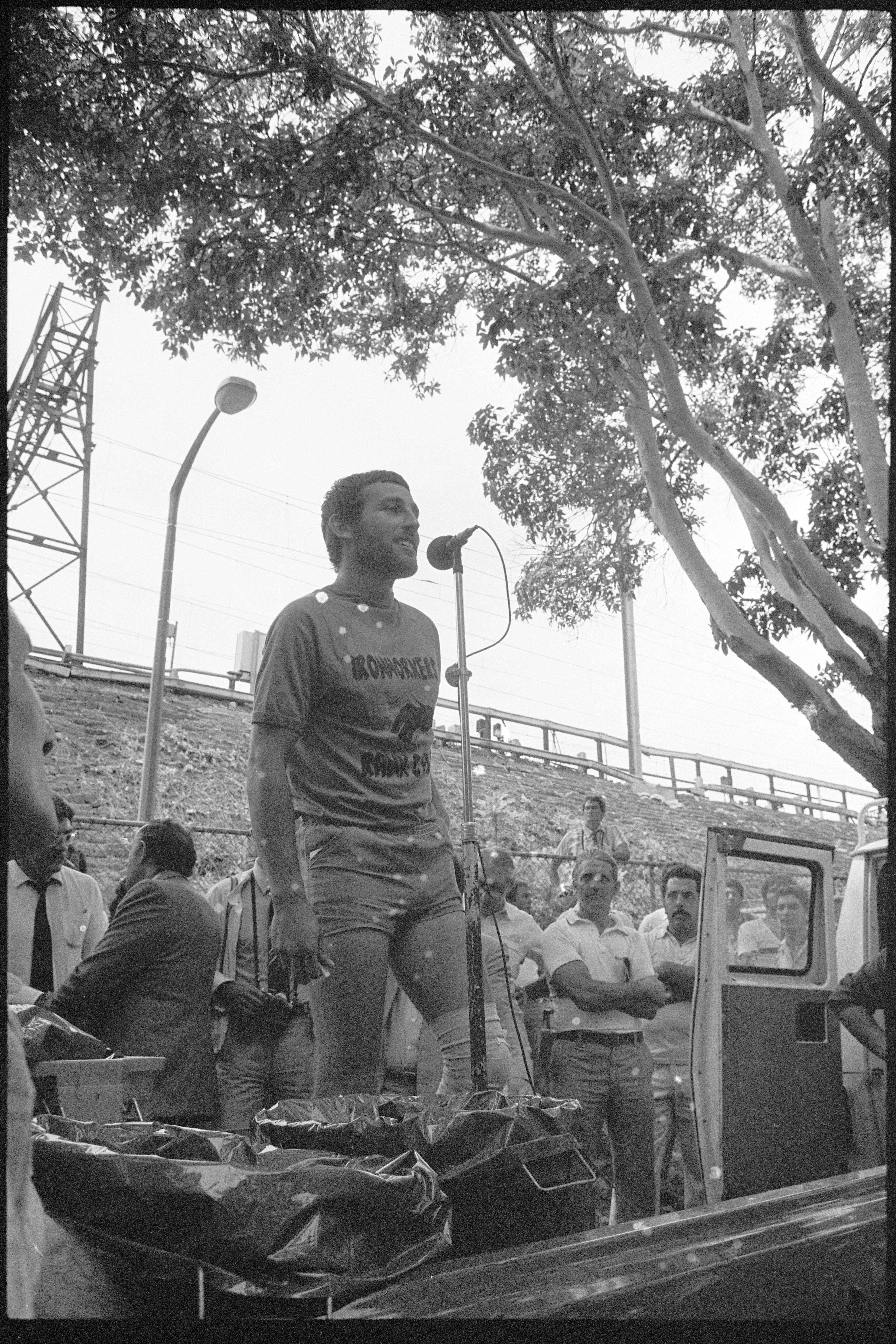
The ranks of the march swelled again as we headed up George Street, turning into Hunter Street past the BHP offices, to Parliament House. With the, by now, almost lame Wollongong marchers at the front of the procession it took two hours to make its way through central Sydney, bringing the city to a standstill. When the first marchers arrived at Parliament, others were still in George Street, four city blocks away. Workers from 25 construction sites had walked off the job to join the march, others left metal and engineering shops, and mail workers stopped work. Workers at Cockatoo and Garden Island dockyards and a range of other work sites also marched to the Parliament House rally. After a week on the road – the Right to Work march had culminated in a demonstration of over 20,000 people.
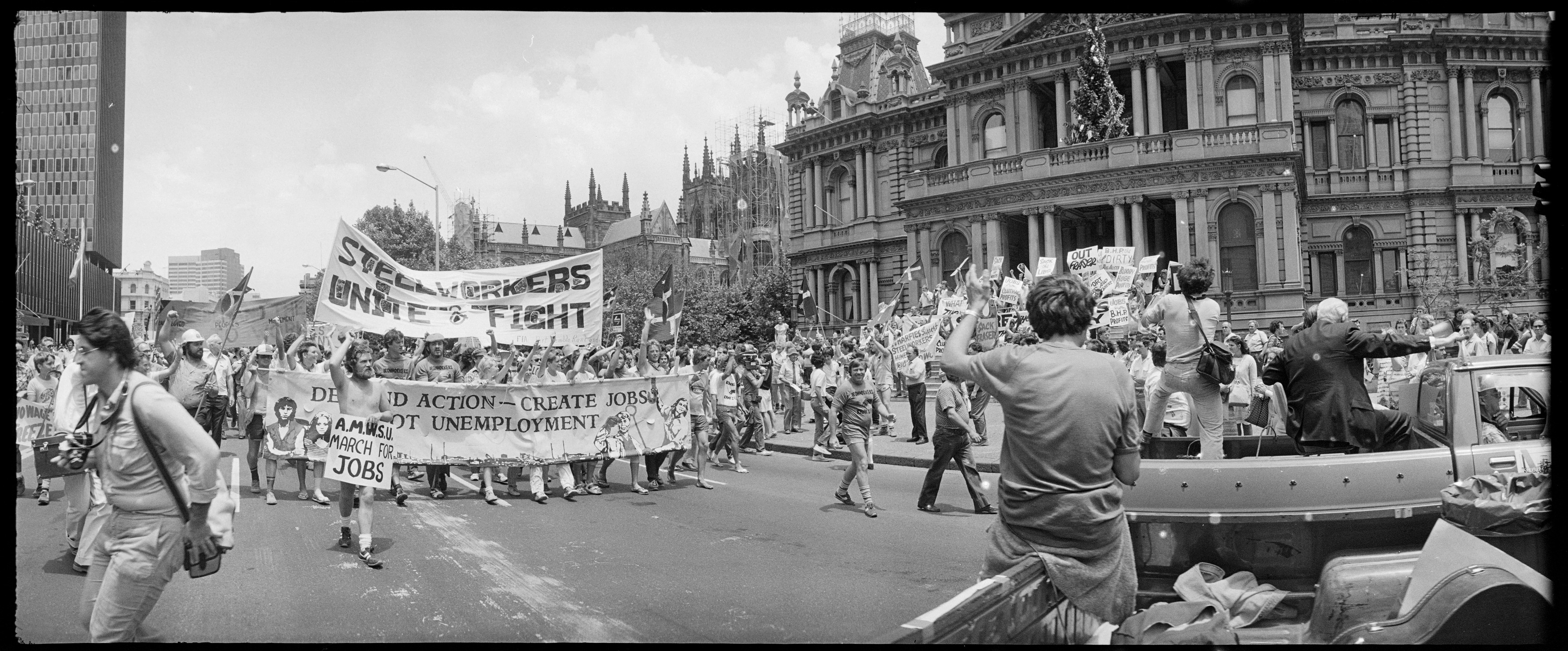
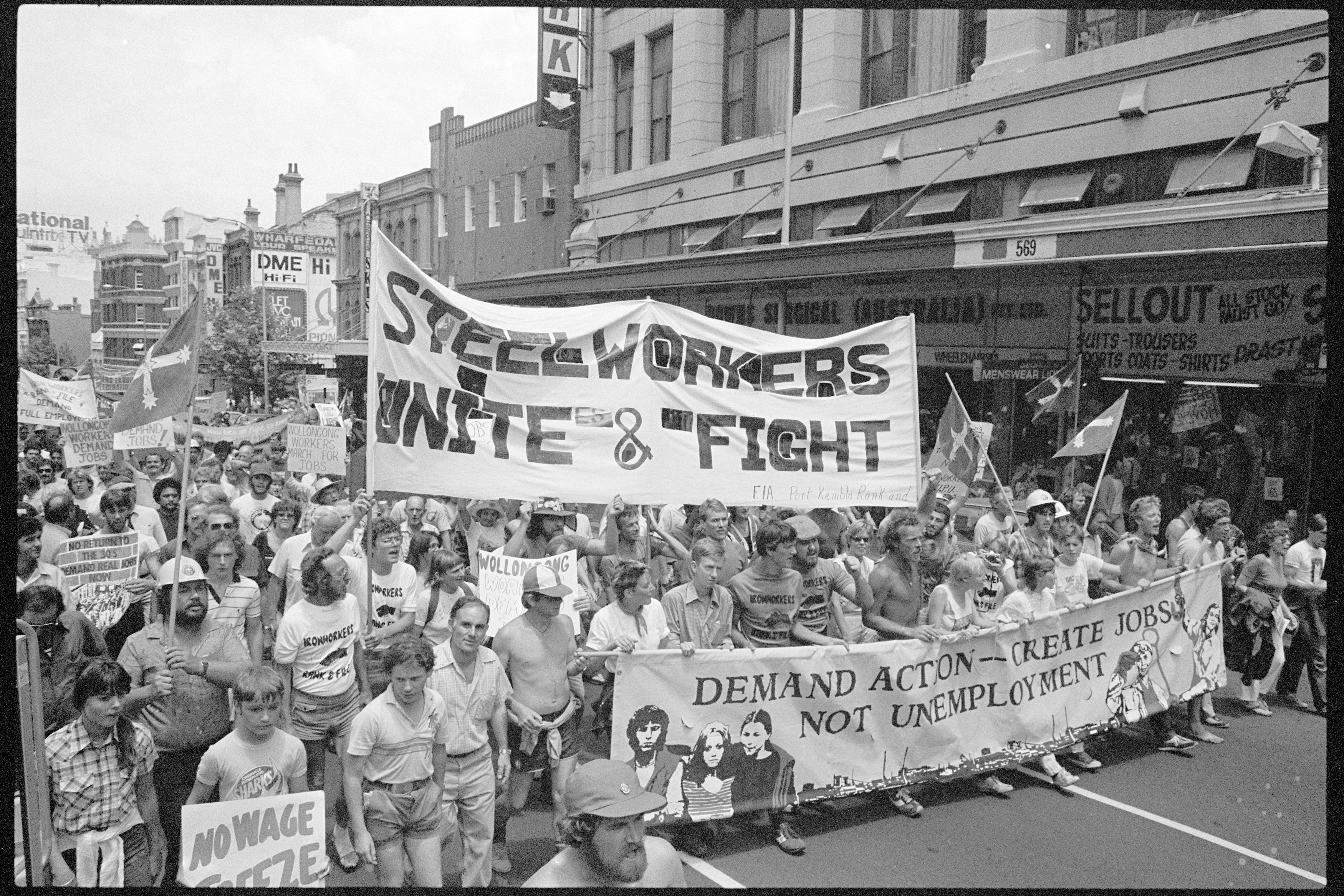
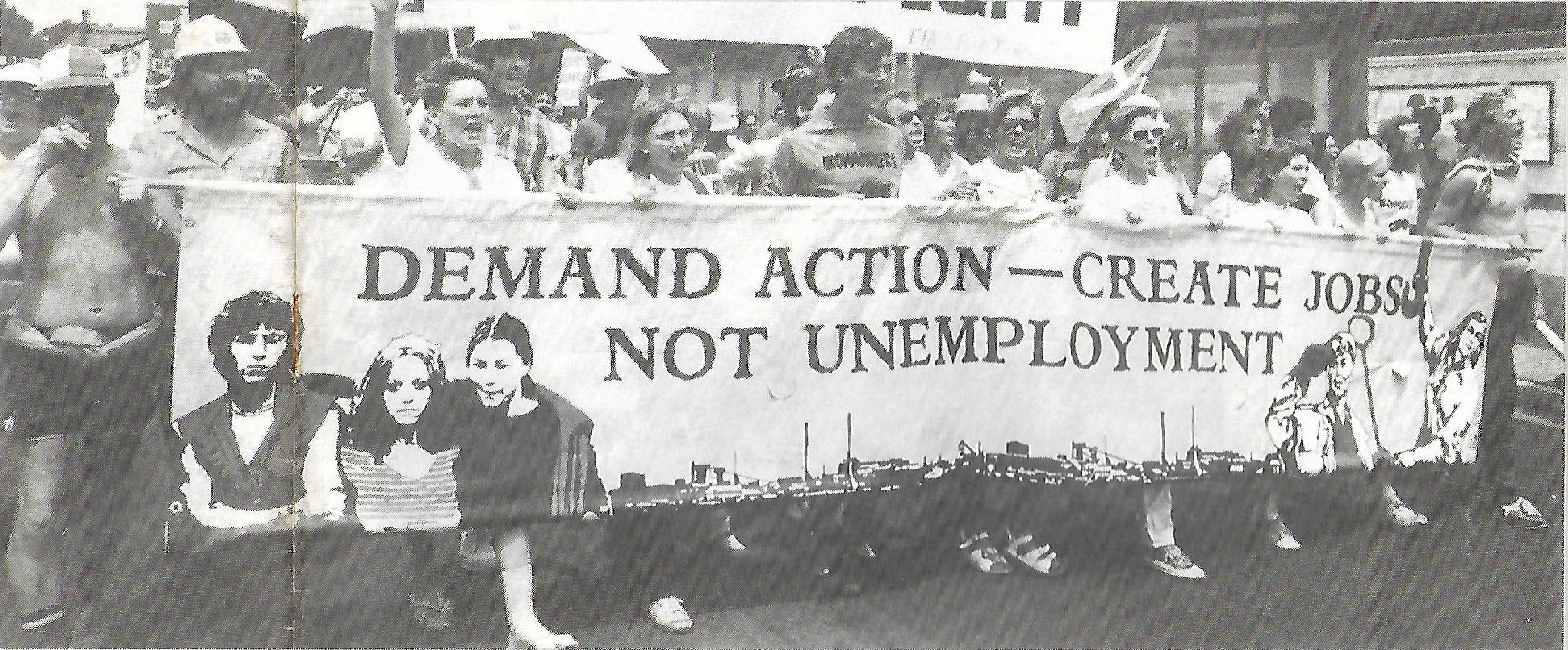
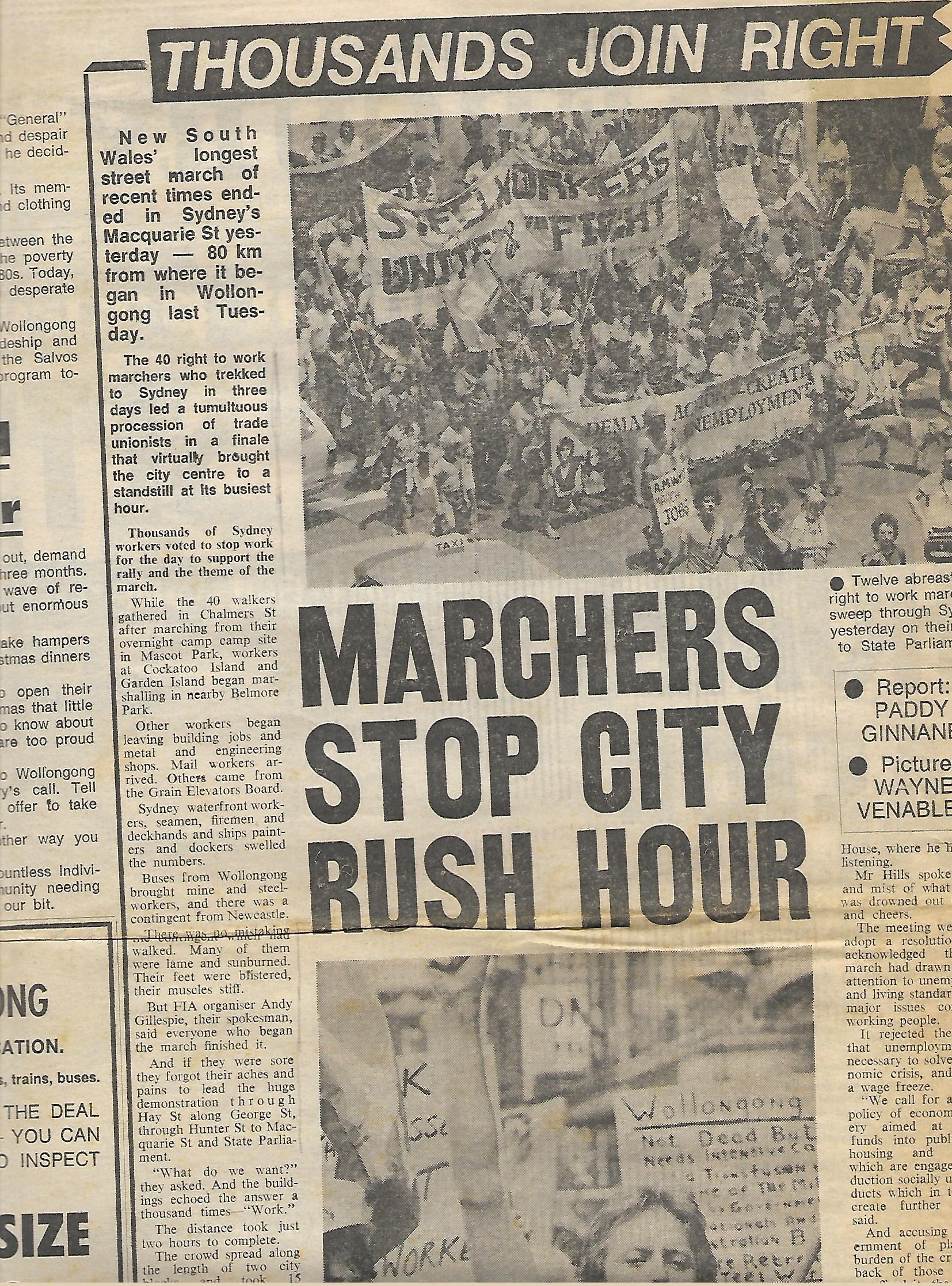
As the Sydney Morning Herald reported the following day: “The marcher’s hostility was directed mainly against the Federal Government and its policies but some larger corporations (such as BHP) also were abused and the State Government received angry, if muted, comment.” Yet, as the Illawarra Mercury explained in the final march day’s edition: “There is no likelihood of any repetition in Sydney today of the storming of Parliament House in Canberra during the South Coast mineworkers’ protest. The State Government has been far more realistic than the Fraser Government in its approach to the marchers. It knows they are coming and it has made it known in advance that it will greet them. There will be no locked doors in Macquarie Street today.” And so it was, with the NSW Labor Government Minister for Industrial Relations, Mr Hills, welcoming the marchers to Parliament House. As the media reported the next day, he “spoke briefly to the rally and said his Government supported the union movement. But he was met by constant heckling and abuse” with “most of what he said drowned out by jeers”.
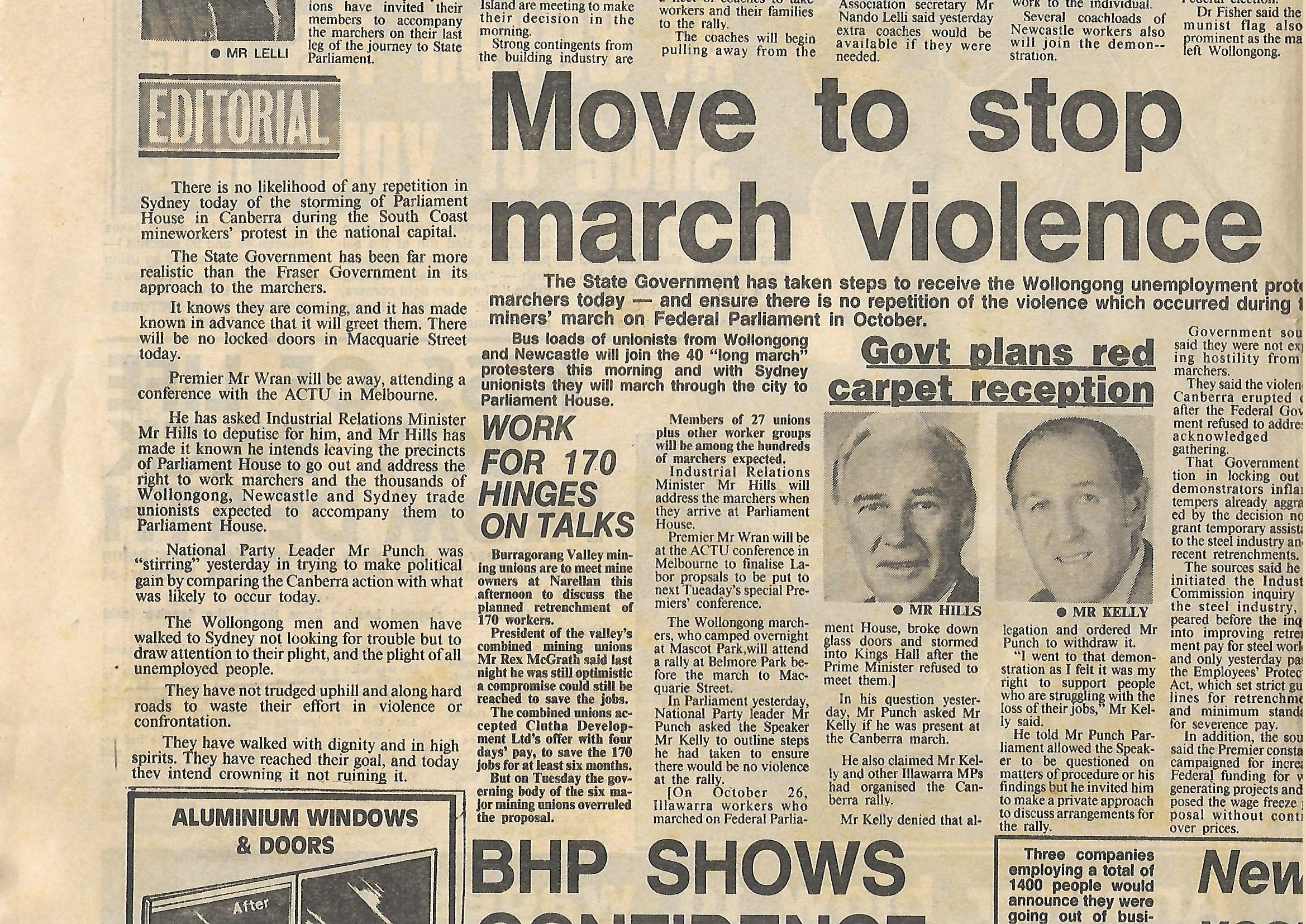
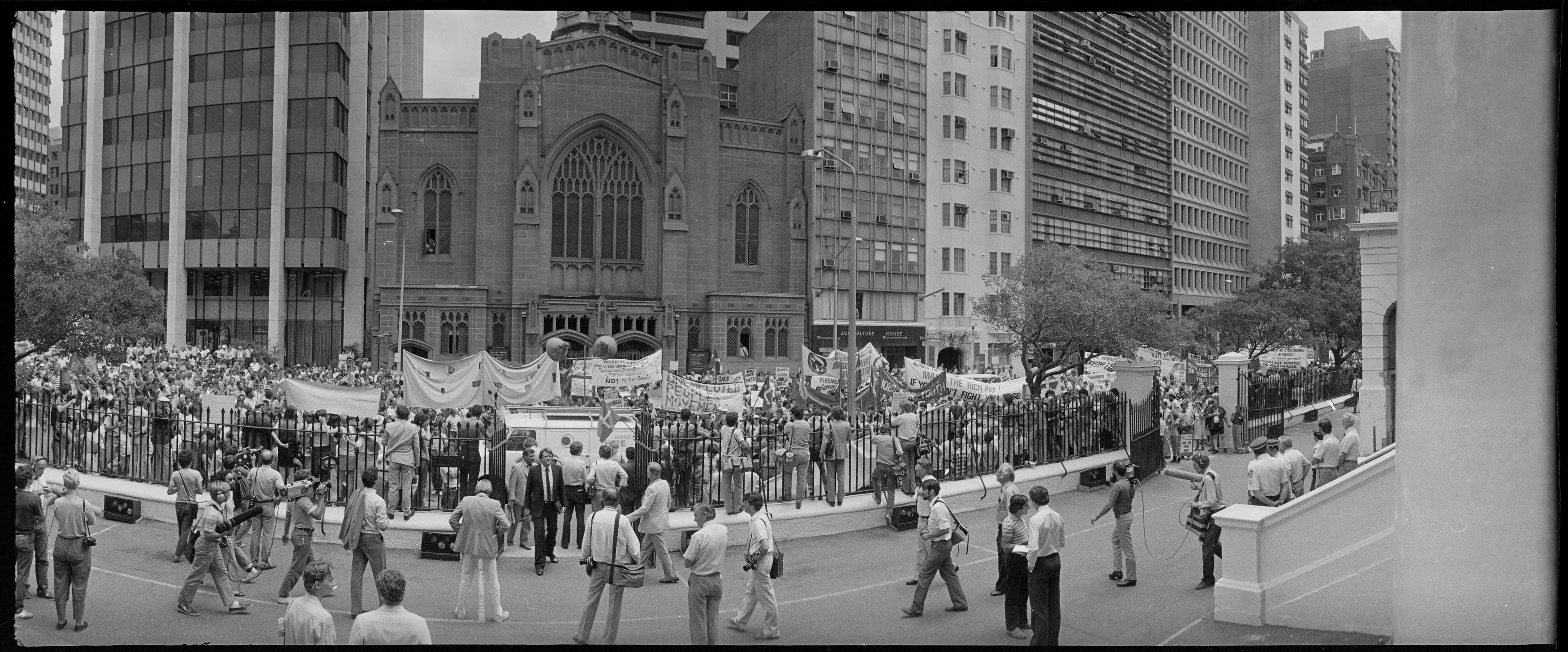
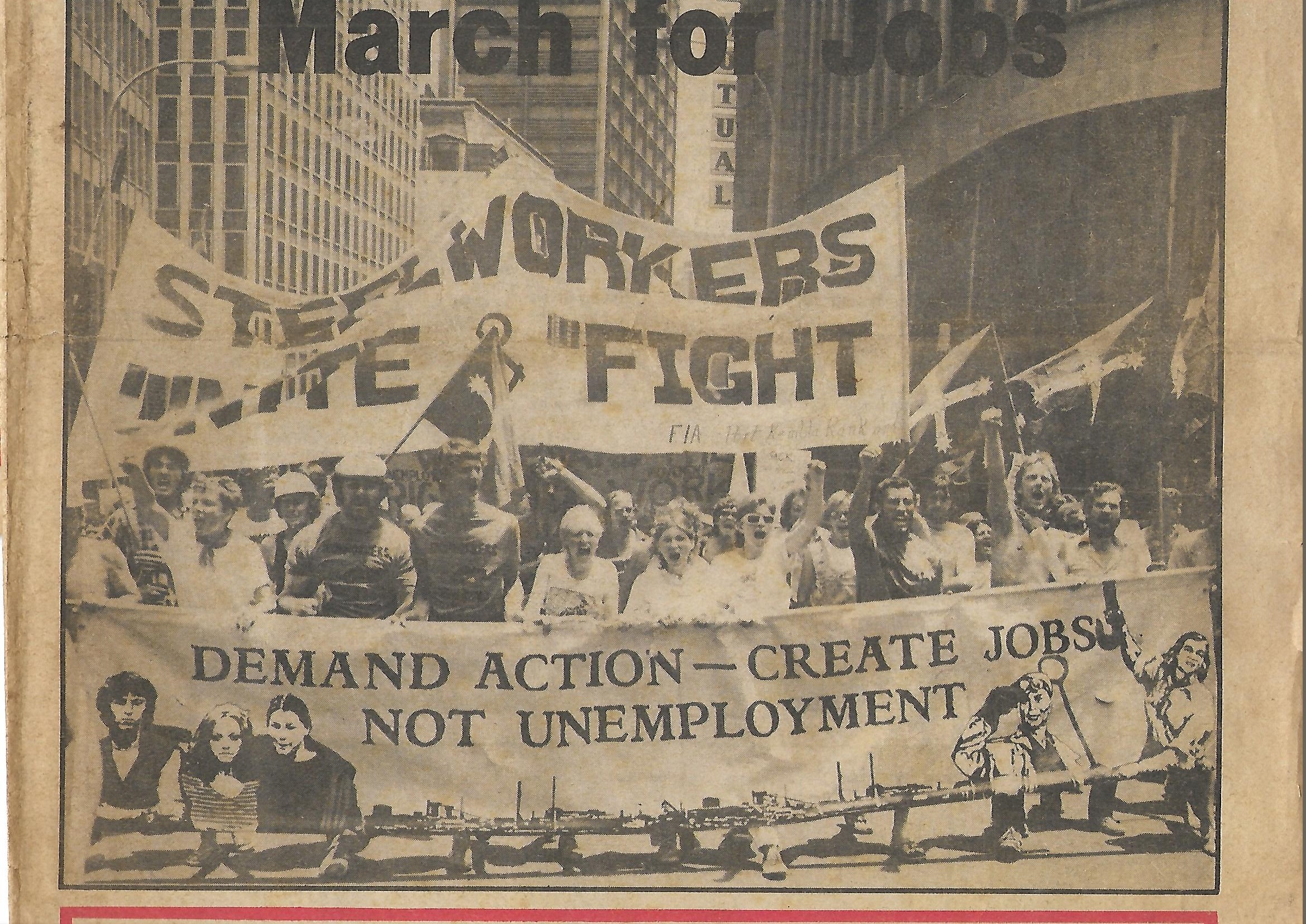
A range of speakers addressed the crowd outside Parliament from the back of a ute. Nando Lelli, secretary of the FIA South Coast branch, declared the march a “tremendous success” because it projected the most important issue of the time – unemployment – and was politically successful. “We believe that not only have we the right to work, but the right to struggle for that right”, he said. AMWSU South Coast organiser Ken Williams, who played an active role in the march organising committee, explained how heartened he was by the response from bystanders as the marchers passed through different suburbs. Jim Roach, a Miner’s Federation delegate and one of the mineworkers who had occupied the Kemira pit during the ‘stay-in strike’ generously exclaimed; “Sixteen days underground was easy compared with what they did.”
The best received speech was made by Kae Barnes, a recently retrenched Wollongong worker and wife of one of the sacked Kemira miners. Kae marched all the way from Wollongong and with both of her feet in bandages she made an impassioned plea for solidarity and action against unemployment. As she explained; “The reason we did this was to publicise the critical unemployment in our area. It was one of the most gruelling things I have undertaken, but if this is what we have to do I would do it again.”
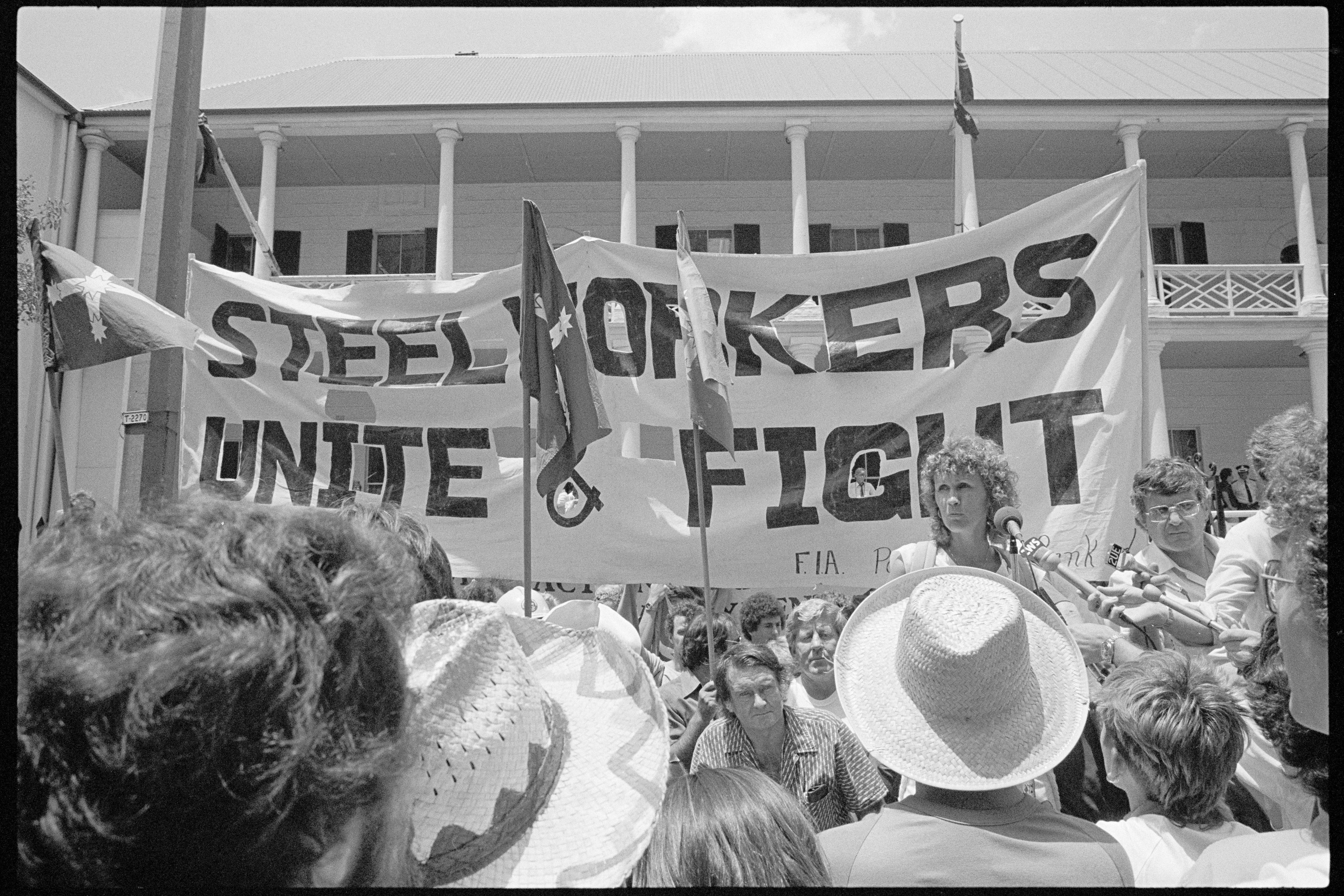
Then Joe Owens from the Builders Labourers Federation (BLF) moved a resolution rejecting the Federal Government’s policies and the current wage freeze. The motion also called on the Government to inject more money into education, public health and unemployment benefits. The rally also expressed widespread discontent with the Wran Government’s handling of unemployment and its constant cutbacks in public services and social services.
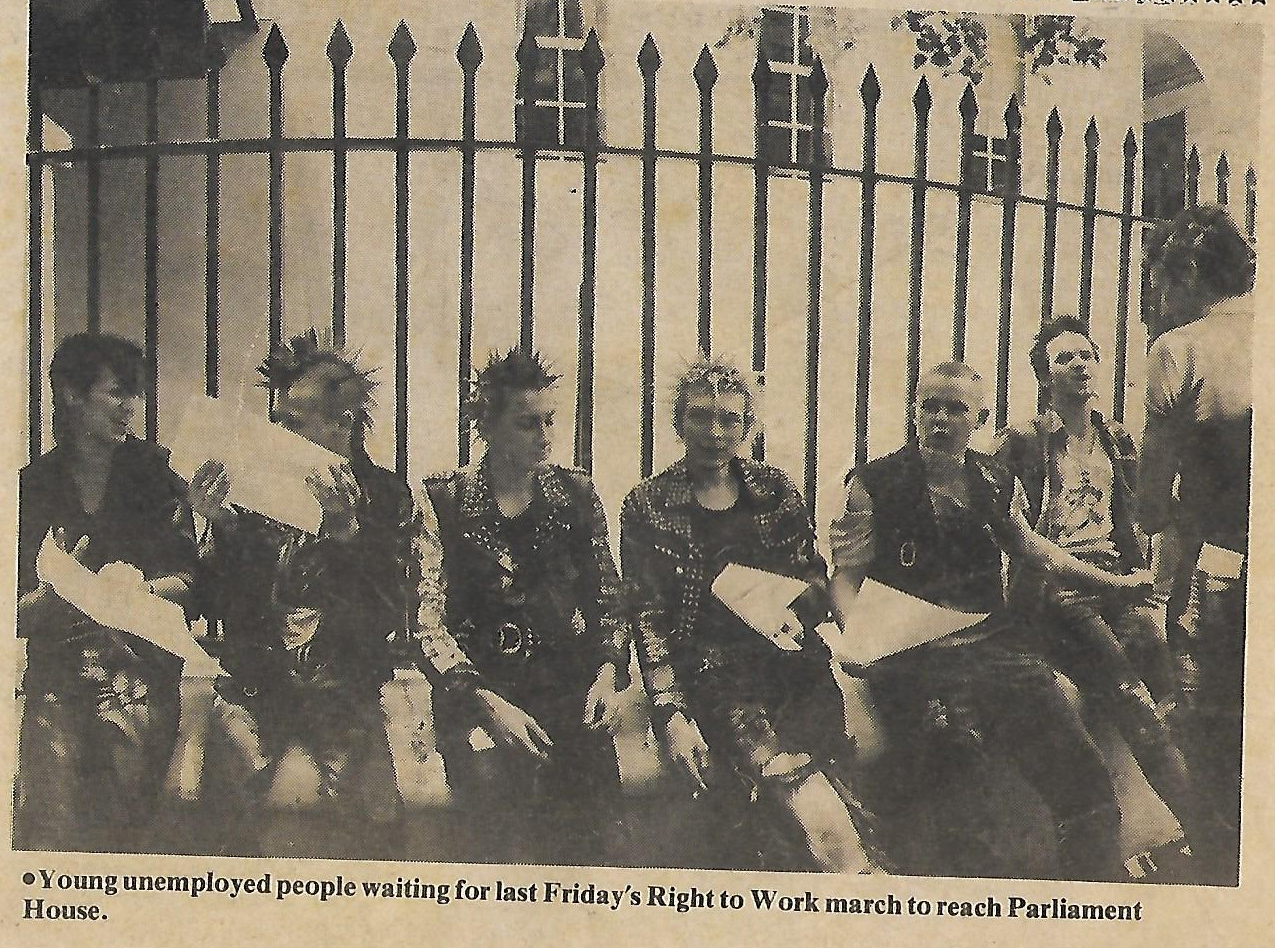
Some of the Wollongong marchers had composed a song as they made their way to Sydney. They sang it twice for the Sydney crowds, once at Belmore Park and again outside Parliament. Singers Cathy Carey, Lynda Voltz, Roslyn Smidt, Andrew Whiley, Yusuf Yusuf and others gave it a hearty rendition to the tune of ‘Click go the Shears’. The first verse went:
Down in the Gong we’re all on the dole,
Looking for a job’s like climbing a greasy pole,
The bosses in Mercedes they tell us times are slack,
But they keep making profits and we just get the sack!
Sadly, despite the tremendous fightback by the people of Wollongong and elsewhere, this remains true for many workers. None-the-less, the struggles of this period, including the Right to Work march, changed many people’s lives for the better. The determination, camaraderie, and solidarity of the time is indicated by the fact that everyone who began the Right to Work march finished it. We marched the whole way on the streets and while we kept our minds and bodies going, the cops escorting us went through about six cars due to burnt out clutches. All along the way people joined-in, including those who couldn’t be there from the start, or who were inspired to take part as momentum grew and news spread. Most of those who participated would continue to campaign against unemployment and for decent work during the years ahead. In 2010, the South Coast Labour Council held a special awards ceremony at their annual dinner to honour the Right to Work marchers, presenting some of us with a memento and giving thanks for the contribution we made to the worker’s movement during a crucial period of struggle. Despite the challenges of a very different world today, those struggles continue.
Nick Southall
For those interested in my considerations of the ‘right to work’ as a demand, you can find them included in –
This history and analysis of the Wollongong Out of Workers’ Union from 1983-1989.
Or my complete Honours Thesis – ‘Working for the class: The praxis of the Wollongong Out of Workers’ Union’.
Strike, Blockade, Shut it Down! Reflections on the Wollongong Global Climate Strike
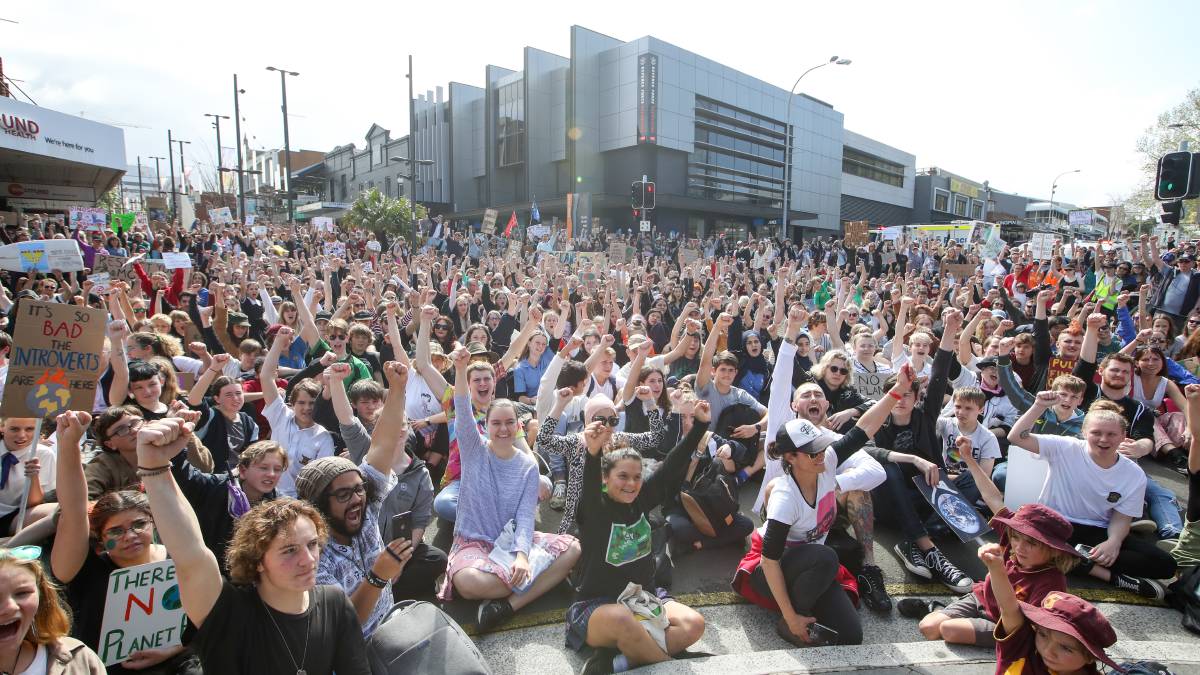
By Mark Gawne & Nick Southall (with contributions from Sharon Pusell & Rascal Rowe)
The Wollongong Global Climate Strike on September 20 was the largest protest in the city since the 2003 anti-war demonstration. The Climate Strike fits into a recent series of protests in the region, specifically coming off the back of the earlier school climate strike in March, and the climate action demonstration in May, with some other smaller protests taking place over the year as well. Of these actions, the Wollongong Global Climate Strike was by far the largest and drew together a vast array of groups and individuals. It was organised by open meetings composed of people from several organisations and groups, as well as individuals, all working together. The largest meeting had over 50 people participate, and there was a consistent number of at least 25-30 people attend each meeting. The Strike itself expresses the latest moment in a process of radicalisation in the region’s climate movement and provides a basis for ongoing struggle in and around Wollongong, most clearly demonstrated in the newly formed Illawarra Climate Justice Alliance (ICJA). We offer here some reflections on why the Strike should be understood as an important growth of struggle in the Illawarra, on the ecology of the strike in Wollongong, and the politics of the Strike, as we look forward to the next steps in the movement.
Stirrings of the Strike
In the face of growing environmental, climate and extinction crises, there has been a process of radicalisation in the Illawarra over the past year. This process has arisen from conditions specific to Wollongong, but it is also inseparable from the global context. On the one hand, the Wollongong Global Climate Strike has drawn inspiration and taken its cue from the student led school strikes for climate. Extinction Rebellion both overseas and in Australia has also had some influence on the movement in Wollongong. This reflects one aspect of the global context into which the movement in Wollongong fits. On the other hand, and at the same time, there have recently been several regionally based struggles developing around Wollongong. For example, a campaign has been building against various tourist developments on Mt Keira. The Illawarra Escarpment Alliance (ESCAR), involving a range of organisations and individuals from over 15 environmental organisations and the Illawarra Local Aboriginal Lands Council formed early in 2019 to campaign against destructive development on the escarpment. Early in 2019, Protect Our Water Alliance (POWA) held an open forum on the effects of long wall mining under the water catchment attended by over 200 people, and there have been other events and a growing campaign built by this group. Actions on the university campus and the occupation of GHD’s local office, as part of the stop Adani campaign, have also characterised growing radicalisation in the lead up to the Strike.
Learning to move together: debates, decision-making, democracy
The Climate Strike, and the organising processes that led up to it, have established a firm basis for ongoing collective activity which involves a strong cross section of groups and individuals and has demonstrated the importance of open democratic meetings and decision-making processes. This basis, now realised in the formation of ICJA, grew out of the months of organising the Climate Strike. The student demonstrations were probably most significant in terms of generating the basis for the open organising meetings that built the Strike. After the first school strike in March, high school and university students formed the Youth Environmental Alliance (YEA), in part to maintain a politics of protest and movement building, as one pole in a spectrum of active youth organisations in the Illawarra. YEA was pivotal, both in terms of maintaining a space for the burgeoning militant politics of the movement, as well as in terms of generating the basis for the open organising meetings. It was YEA who organised a large protest on May 25th that led to blockading the main intersection of Wollongong city, and it was from YEA that the call for the first Wollongong Global Climate Strike open organising meeting came.
The first Strike open meeting, held on June 28th at Wollongong city library, was attended by about 40 people, with many more giving apologies due to the city being blocked by a major traffic incident preventing their attendance. While not as well attended as it otherwise would have been, the first meeting captured what was to become the character of all subsequent meetings. There was a wide cross section of individuals, groups and organisations present, including community activists and organisations, high school and university students, workers, Greens members and an ALP councillor. There was a wide array of political perspectives in the room during the first meeting, and this remained the case over the subsequent months. But from the first meeting on, a practice of open and comradely debate was established. For example, there was immediate agreement on organising together to build the Climate Strike in Wollongong. The meeting debated and then decided that the Strike should be organised around five demands – Stop Adani, 100% Renewables, Sustainable Jobs, No New Coal or Gas Projects, and No Mining in the Illawarra Water Catchment. Even on more contentious tactical issues, strong debate led to decisions reflecting and building commonality.
For example, the decision to hold and blockade an intersection during the Climate Strike was one such contentious issue. Contention about this drew from the experience of the climate protest held earlier in May, which decided to hold and blockade the intersection of three major roads of the city, and to do so without notifying the police in the march’s permit request. Overall, this was a successful action. Many left the action energised and more confident and this contributed a great deal to the process of radicalisation mentioned earlier. However, at one point a car attempted to drive (not speedily, but dangerously) through one of the blockades. This created tension and conflict between protestors and the car driver, police and protestors, and between some protestors, as we decided on the fly what to do. After the demonstration, a variety of views on how to address this type of danger were expressed. Criticism from sections of the movement and pressure from the media and conservative forces made an impact on these discussions. So, when organising meetings for the Global Climate Strike turned to the issue of a street blockade, a variety of different views on the safety, effectiveness, and purpose of the blockade were debated. This was the most contentious issue raised at the Strike organising meetings and resulted in two fairly lengthy debates. Both ended with the organising group endorsing a blockade, with no voiced dissent.
Another example was some tension and discussions about the leading position of young people and the fact that the organisation of the Strike could involve everyone. This issue was considered and clarified via open deliberation, where everyone’s perspective could be heard, and the crucial role of young people was acknowledged and respected. While a reasonably strong practice of debate and democratic decision making characterised the organising meetings, apart from some of the discussion around blockading an intersection and open participation, there was a lack of political debate. On one hand, this reflected the interests of the organising group to mainly put aside areas of disagreement, instead concentrating on our commonalities, and focusing on the functional tasks required to organise a large demonstration. On the other hand, it will be important that as the movement develops it generates more space for broader debates concerning the politics of the movement, its composition, different actions, strategies, tactics and experimentation with a variety of approaches to dealing with the climate crisis.
Open meetings were held fortnightly from late July through to the September 20 Strike. Many different things were done to build the strike during this period, including producing posters and going on paste-ups, individual and group leafleting at multiple sites and events, social media posts, working bees, and making videos. Some tactics recently taken-up by Extinction Rebellion in other places inspired formations here, such as the Red Rebels and a die-in on Crown Street mall attended by over 50 people. Banner drops, local-market stalls, postering various outer suburbs and train stations all built toward the Strike. School groups formed and organised contingents, and some trade unions supported the strike. At UOW, students organised in their classes to pledge to attend the strike, while community organisations came out in support, different organising contingents were publicised by the open meetings, speak outs were organised, adverts placed in local newspapers, along with successful efforts to push local media to cover various angles and topics related to the climate crisis and community action.
Another component of the organising meetings was the formation of working groups. These groups were organised as the following: fun, promo, speakers, schools, media, and one to organise smaller decentralised actions earlier on the day of the Strike before the rally and march. The later group resulted in the organisation of a rally at UOW, a chalk-up and speak out in the Mall, and the picketing of coal company South32’s offices. In general, the organising group encouraged and supported individual and decentralised initiative. Having a range of actions helped to encourage diversity in tactics/strategy, the development of autonomous organising and a focus on the interconnections between local and global concerns. Rather than creating conflict and competition between those wishing to do different things, there was a flourishing of diversity and a breadth of activity, fostering empowerment, encouraging solidarity, and accommodating differences.
Climate strikes, social strikes: disrupting business as usual
Strikes usually involve the collective withdrawal of labour in order to disrupt businesses and exercise class power. However, the word strike is also applied to other forms of disruption that don’t involve the withdrawal of labour, e.g. ‘Rent Strikes’ or ‘Debt Strikes’. Strikes can include a range of work stoppages, walkouts, marches, pickets, and blockades. A ‘Social Strike’ is a strike that takes place across the whole society, not just the workplace. From Tunis to Buenos Aires, from London to Khartoum, from Hong Kong to Paris, we have seen that this type of Strike develops various forms of action, helping to promote alternative ways of organising things and different ways of relating to each other and the world around us. Social strikes allow us to find each other and to work around common concerns, bringing us together in collective action and shared territory at the same time as we disrupt capitalist normality. As a strategy, the social strike reflects the fact that capital depends on our leisure time, our domestic activity, and our social spaces, not only to circulate goods and services, but also to create relationships suitable for capitalism to continue to exist. In the space of the social strike, we can make ourselves available for each other, we can disrupt the ordinary flow of things, we can craft our own forms of organisation, and foster structures of care.
As well as the commonly understood global concerns around the environmental, climate and extinction crises – here in the Gong we’re living alongside the infrastructure that’s digging out the coal, that’s pumping the gas, that’s draining the water catchment, causing climate change and destroying Country. This means that an important aspect of a society-wide strike around climate concerns must involve the enactment and demonstration of our collective power. A social strike helps us to investigate and understand our strengths and weaknesses, our concrete conditions and struggles, commonalities and differences, existing resources, bases of support, and helps to expose those opposing us.
Ecology of the Strike
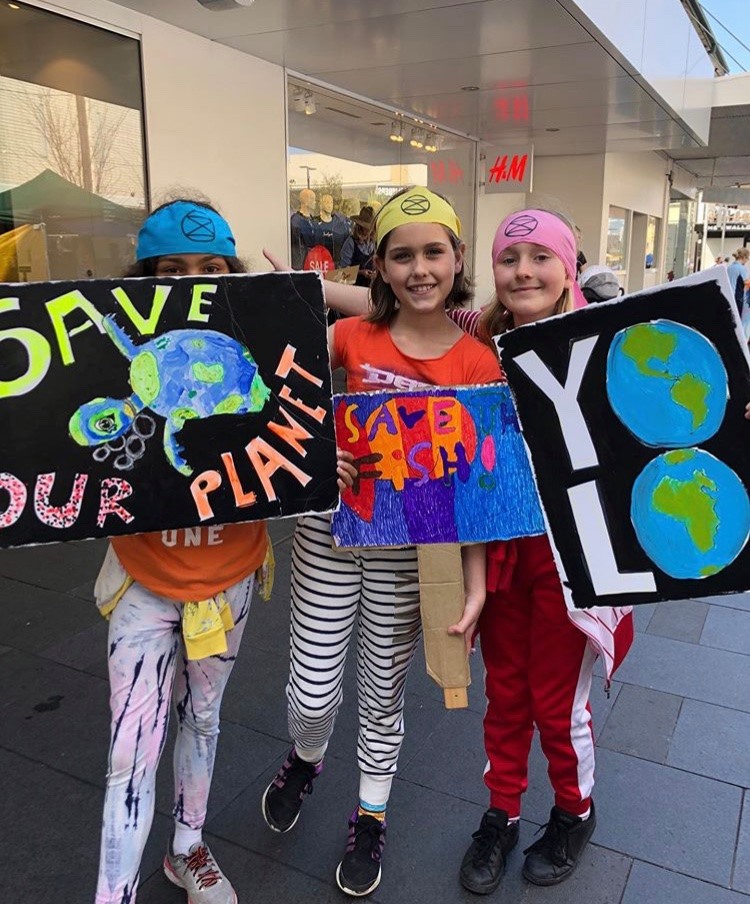
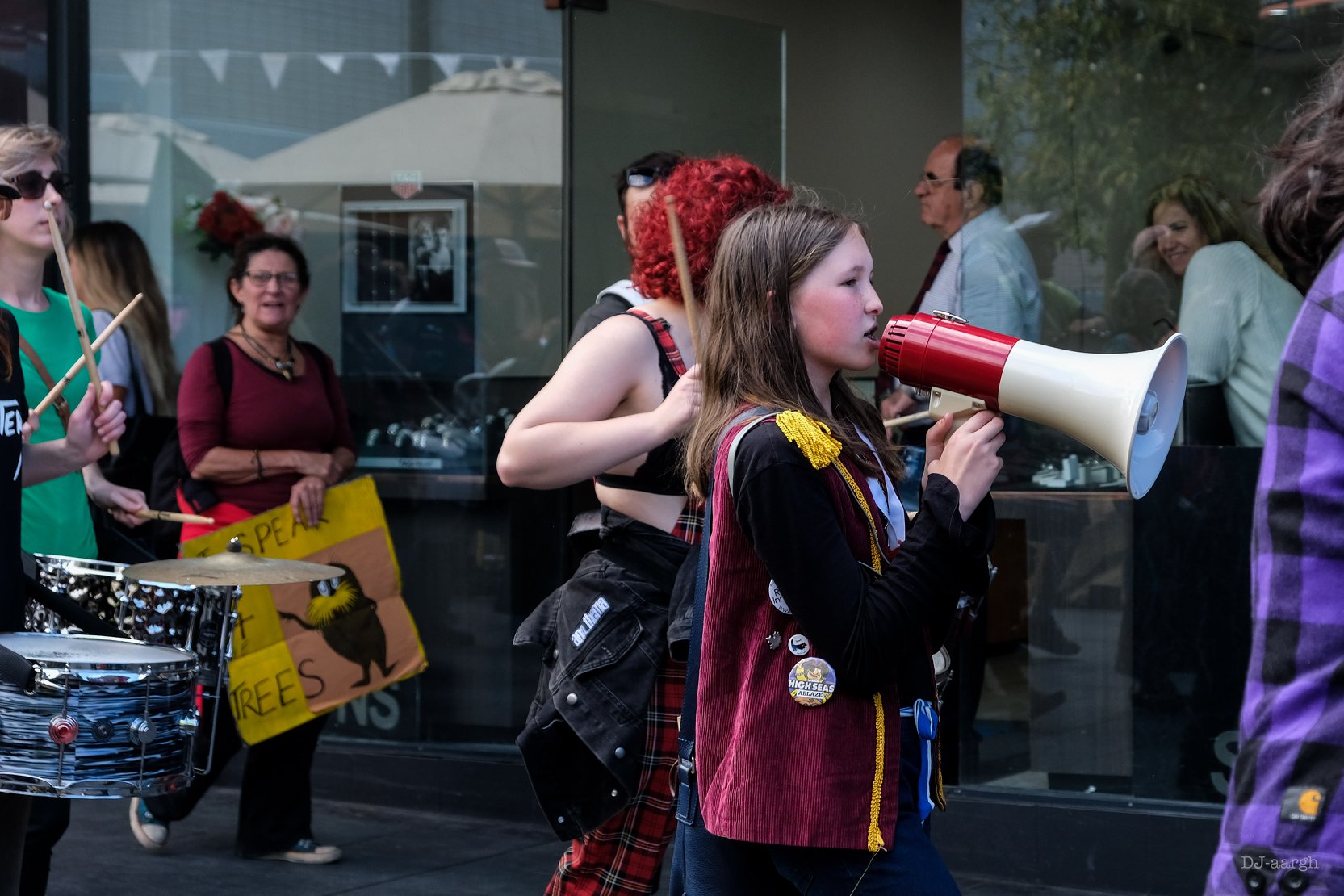
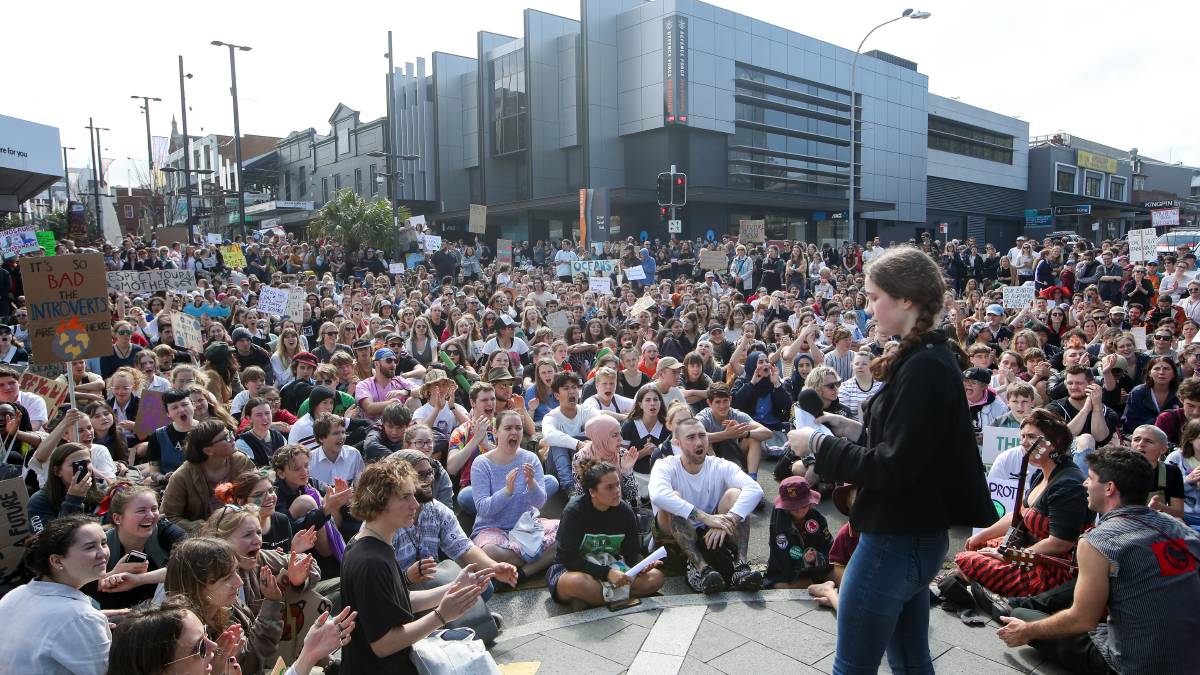
Of the thousands of people who took part in the Wollongong Global Climate strike the majority were young people – school kids, both high school and primary school, as well as groups of friends, uni students, workers, as well as family groups, and so on. The rally and march were a colourful assembly festooned with home-made banners, placards, t-shirts and props, which began and ended with musical performances. The Radical Drum Corps, Rising Tide Street Band and other musicians added to the joyous and defiant celebration of resistance and hope. During the occupation of the Kembla and Crown Street intersection, local ‘hillbilly punk’ group The Lurkers led the strikers in a rousing rendition of ‘We Shall Not be Moved’. The Red Rebels also performed their special brand of silent street theatre throughout the day.
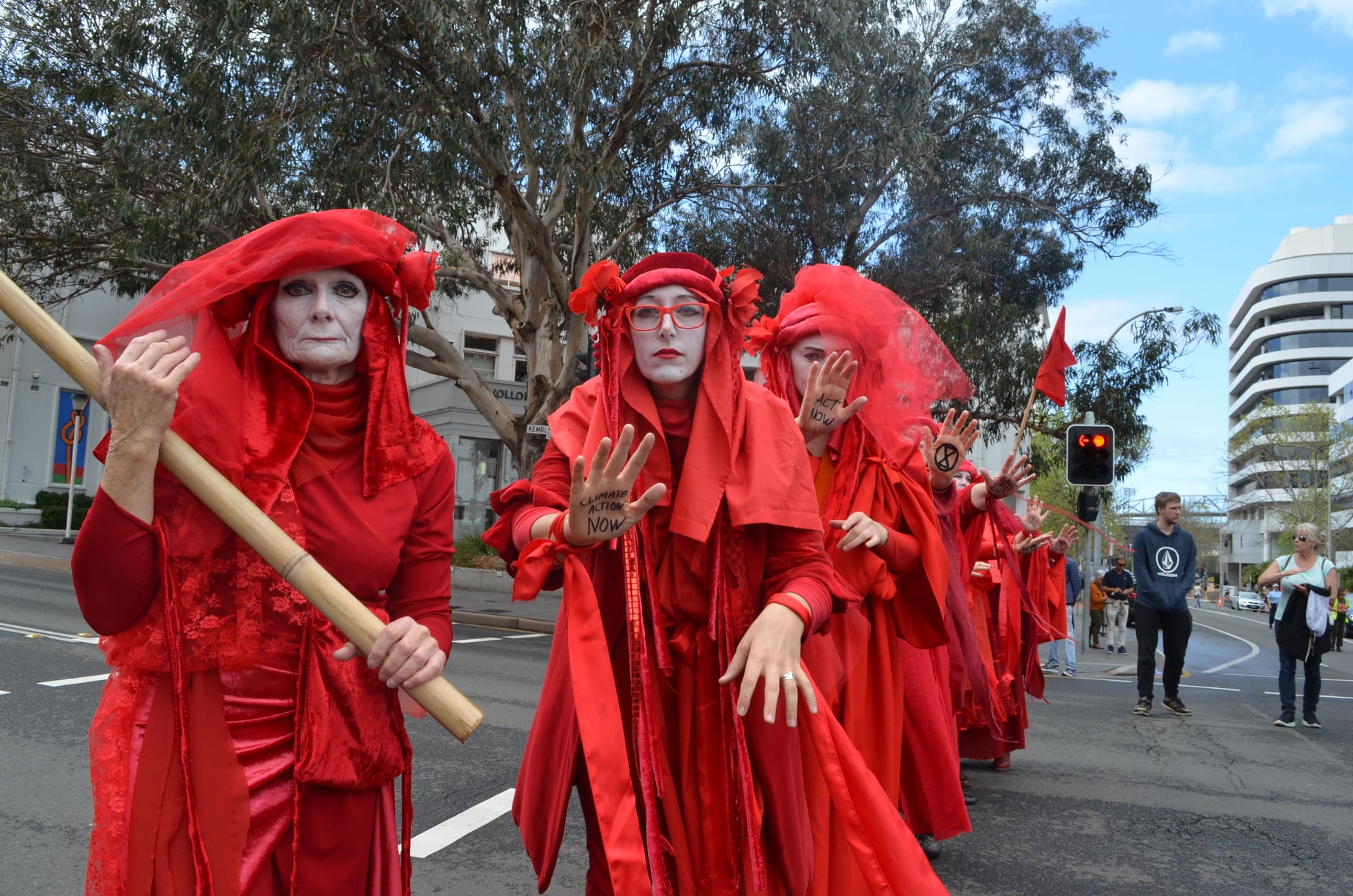
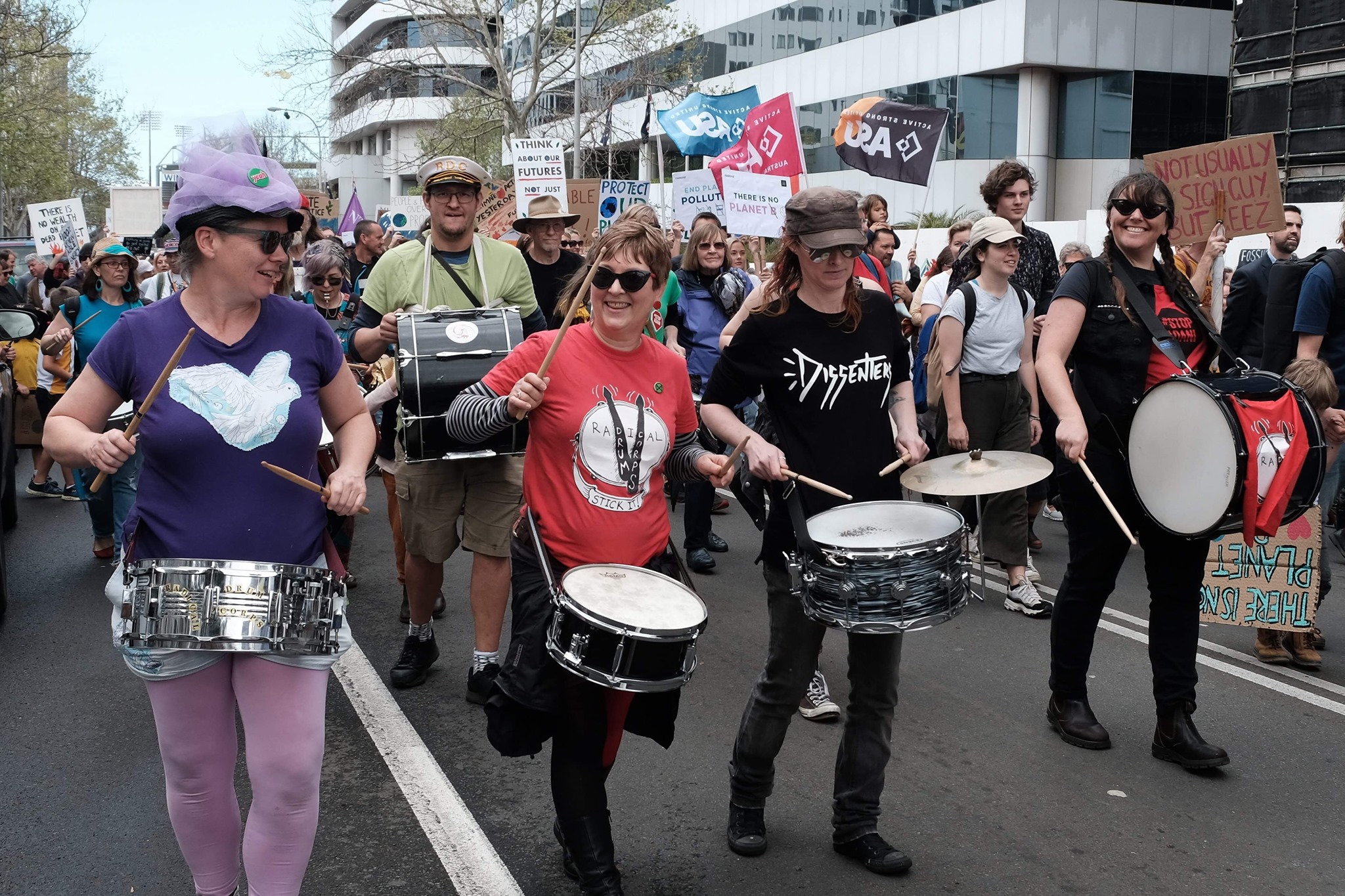
The composition of the Strike reflected decades of local environment activism, including the hugely successful campaign to ‘Stop Coal Seam Gas’, protect the local water catchment, and defend regional eco-systems. It also included a deep ecology framing, evident, for example, in 8 year old Lilly Callaghan’s popular speech, when she declared “I believe the earth is worth more than money!” and called on us to be the strength, reach and resolve of a tree. We also saw this expressed in the many home-made placards voicing the material interdependence of human life and ecology.
Many of those who attended were part of a local sustainability ecosystem; a network of environmentally concerned people, community groups, ecological and counter-culture initiatives. This web of activity includes environmental movements opposing fossil fuel production, and/or seeking to protect the local air, water, land, and sea, as well as a growing network of alternative production, distribution, and exchange experiments. Many social movements are now concerned with the creation of healthier environments, focused equally on humans and the nonhuman world in a dynamic of interdependence and love. They are fighting for progressive political, economic, and community transformations and self-organising the growth of sustainable living experiments, reducing ecological impacts, and devoting more time, energy, and resources to what’s most valuable – our relationships, environments, and communities.
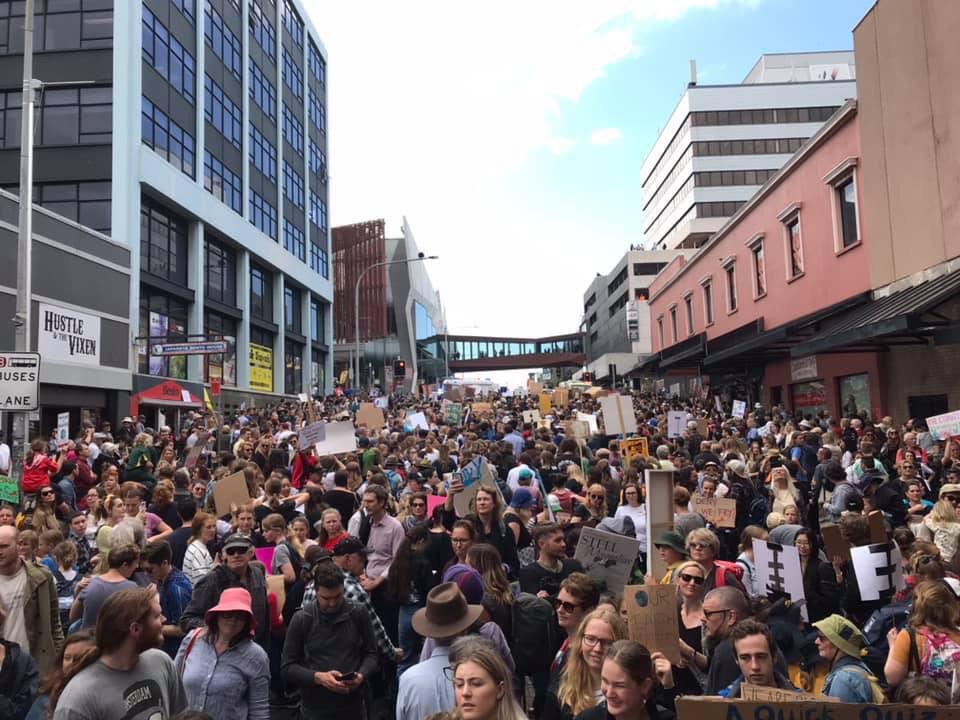
The importance of Aboriginal struggles for self-determination and stewardship in these times of crisis was expressed by many who spoke at the rally. The powerful welcome to country given by Jade Kennedy highlighted that for over two hundred years Aboriginal peoples have fought the destructive path of colonialism and capitalism. Several other speakers spoke about traditional knowledge of Country and the need for non-Aboriginal folks to learn from and centre local knowledge in the fight for a liveable future. Yet, while there’s a growing attention to a decolonial politics, there’s a lack of concrete strategies about what this might mean in practice being articulated within the movement in the Illawarra. This presents us with the challenge to demolish climate apartheid and to implement practical measures of decolonisation. This will involve continuing to build relationships of solidarity and orienting to the everyday, as well as key moments of struggle led by Aboriginal communities. It also involves reflecting on and complicating the emphasis on youth leadership of the climate movement, which should not stop us from learning from Elders, and from hundreds of years of resistance and struggle that Aboriginal and other Indigenous peoples have waged against a system that forces almost everyone to rely on wages, seeks to disconnect us from everything that sustains us, and pits us against each other.
There is also space for a more attentive ear that listens to what Torres Strait and Pacific Islander communities living in the ‘Gong’ are saying and doing, as their ancestral lands are particularly affected by the escalating climate crisis. Even though Indigenous people have custodianship over just 25 per cent of the world’s land, they protect 80 per cent of the world’s biodiversity. Indigenous land management practices both mitigate climate change and protect environments from its impacts. Indigenous people have been on the frontline of resistance to fossil fuel projects and their care for Country stretches back tens of thousands of years.
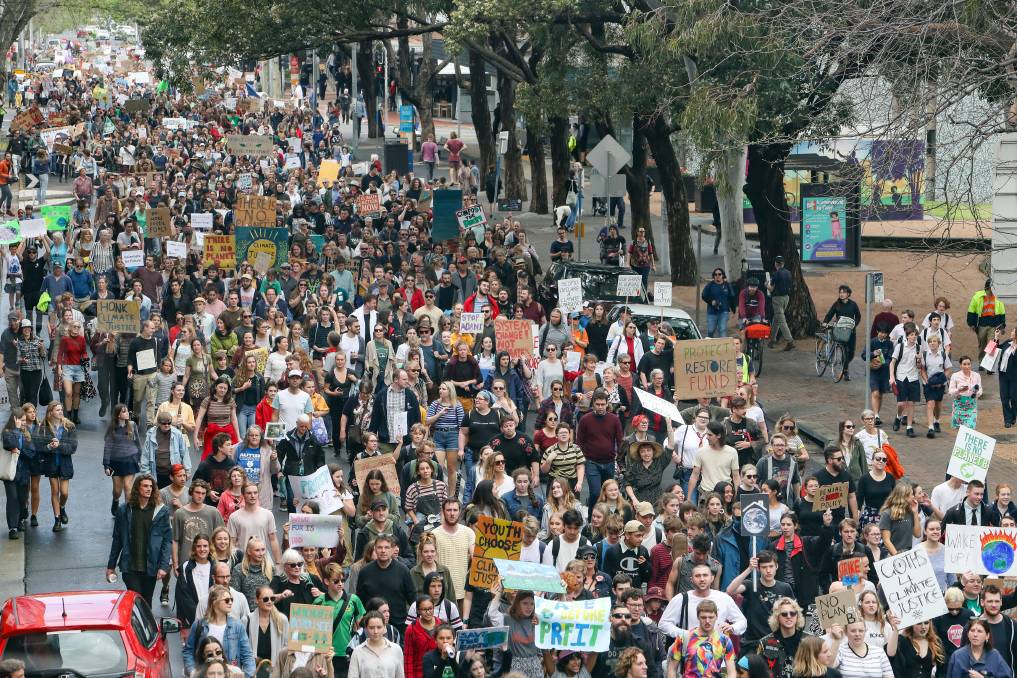
In keeping with Wollongong’s recent history as a place where people from all over the world have come and settled, Wollongong has an active pro-refugee movement and networks which organise protests, campaigns, and coordinate everyday support for newly arrived refugees. Climate-related displacement and migration is set to be one of the greatest challenges of our era. It is widely estimated that, by 2050, between 150 to 300 million people risk being forced to leave their homes as a result of desertification, rising sea levels, and extreme weather conditions. After the Strike, many people have been drawing links between climate change and the forced displacement of people. Another positive development has been the organisation of an ICJA contingent for the latest Wollongong Rally for Refugees.
Many unionists participated in the Strike. However, only a few unions publicly supported it, such as the National Tertiary Education Union (NTEU) and Australian Services Union (ASU) who had visible contingents on the march. The support of the NTEU, in helping to organise the Strike, was especially important. The local NTEU branch was pivotal in providing resources, developing relationships within the Strike and participating in the open organising meetings, providing a good example of how other unions could participate in future. However, the absence of other unions in support of the Strike signals some weaknesses in both the event’s organisation and the local labour movement. None-the-less, although a union presence was generally lacking, it’s important to note that this doesn’t mean workers didn’t take part in the Strike. Workers were participating from a range of industries, but they were doing so in a broadly self-organised way. This raises a few questions concerning the composition of the Strike and where to go from here, in terms of deepening the significance of a social strike, building self-organisation, and also addressing the general lack of union presence in the movement so far.
After the Strike
The Strike was a wonderful achievement and the success of the Wollongong Global Climate Strike open meetings encouraged those involved to maintain and build this organising space. So, during the Strike, leaflets were distributed, and announcements were made encouraging participants to attend the next public organising meeting. The perspectives of those in the organising group and those striking were varied – these included calling for politicians to do ‘something’, a rejection of politics as usual, calls to continue building our own power, etc. and the future direction of local climate action remains largely undecided and varied. The debates about what comes next include a vast array of proposals, viewpoints, strategies, and new forces getting involved.
The inclusion of a demand for ‘No Mining in the Illawarra Water Catchment’ in the Strike’s publicity material, along with the targeting of South32, and criticism of Bluescope’s massive carbon emissions, introduced an important local dimension to the Strike. It also challenged the proposed expansion of the local coal industry and the impact of the steel industry. After decades of defending the jobs, wages and conditions of local miners and steelworkers, progressive movements in the Gong must now face-up to the dangers of a rapid deindustrialisation process dominated by the power of multinational corporations. For example, South32 has been arguing that without the expansion of mining under the water catchment, the steelworks may have to close. At the same time, the Illawarra Local Aboriginal Land Council has opposed the Dendrobium mine expansion, clearly outlining many of the social, economic and cultural heritage issues of coal mining in this region.
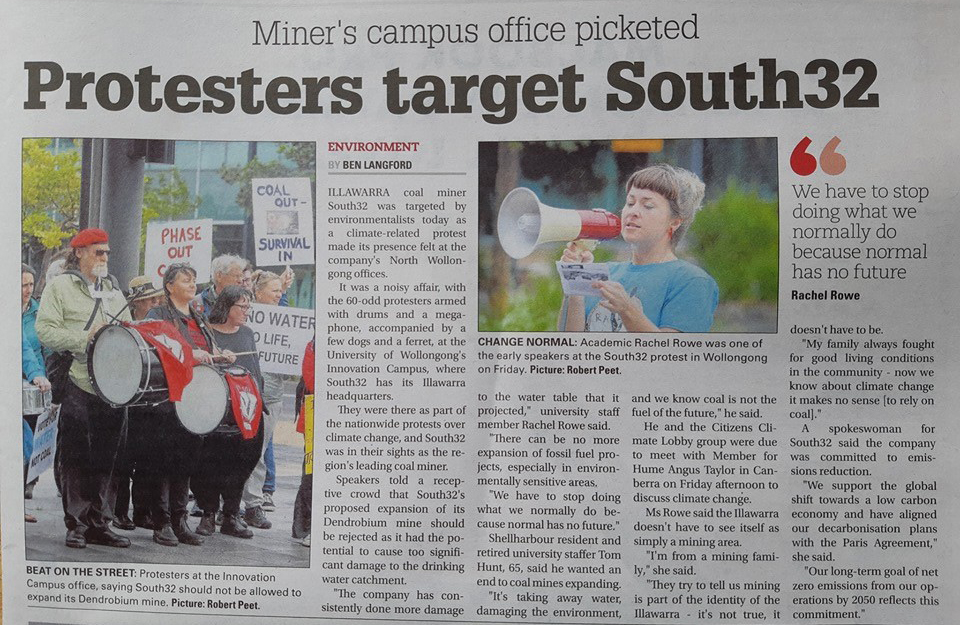
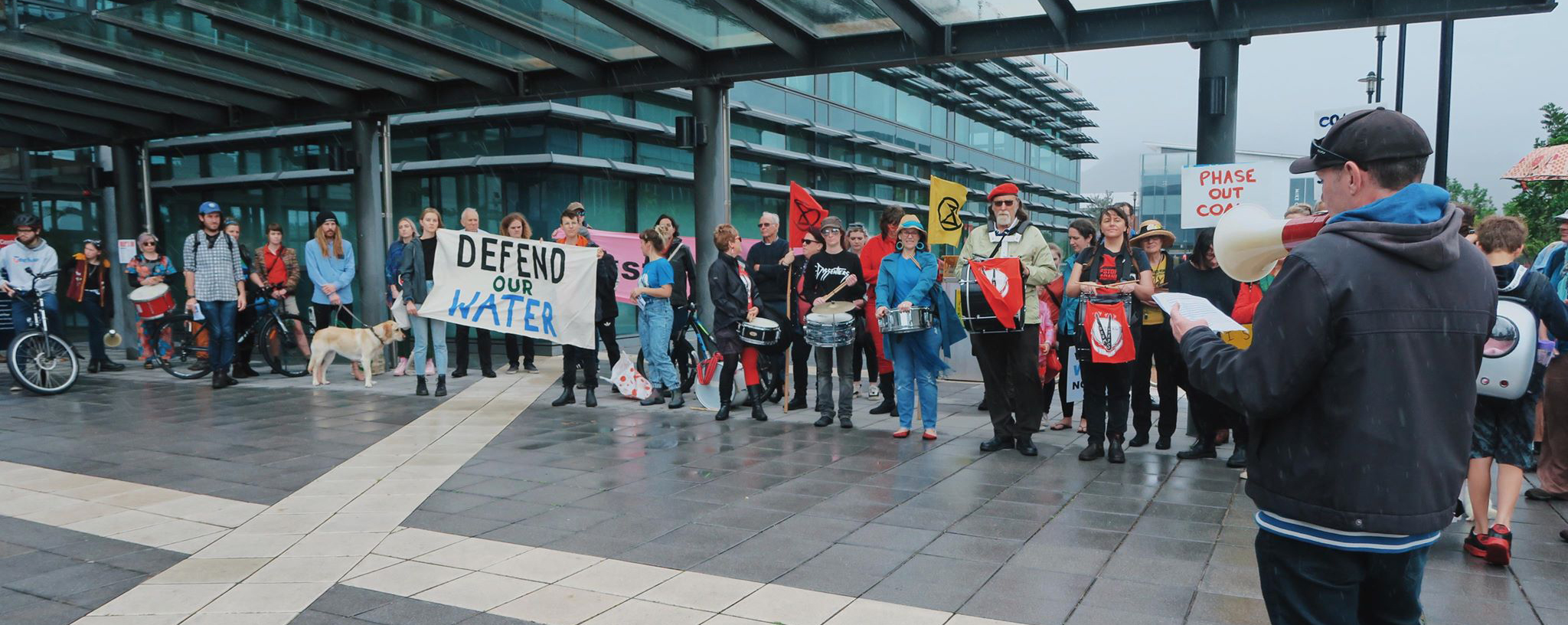
Ten days after the Strike, the South Coast Labour Council (SCLC) launched “a campaign to put their workers at the forefront of climate action.” The unions involved are demanding “that the Morrison Government take immediate action on climate policy to ensure our workers are not denied the opportunity to build the multi-billion-dollar renewable technologies and systems required to transform Australia’s energy landscape,” such as the steelworks building “wind turbines made from the coal mined from the Illawarra.”
So far, the response to the ‘Green Jobs’ launch has been mainly positive. However, there has also been concerns expressed about mining in the water catchment and a defence of the coal industry. So far, those involved in the ‘Green Jobs Plan’ have not allayed these concerns and it seems they may try to avoid the water catchment issue – ‘because it is not about climate change’. There are some key differences in the various media reports regarding the ‘Green Jobs’ push and the local coal industry. For example, the Illawarra Mercury article (link above) reports SCLC Secretary Arthur Rorris saying: “ramping up production of coal mining and steel products was not incompatible with the growing pressure on governments to set carbon emissions targets and become carbon neutral.”
This intervention by local unions/SCLC, directs the climate action agenda away from criticism of the coal and steel industries towards a defence of the local coal industry, coal related jobs, and steel production. Rather than supporting a ‘just transition’ away from coal, it poses “the big question” as “whether Australian workers will have the chance to forge this change in production, or will it fly out overseas like other manufacturing jobs?”
In the past, Wollongong has been hit hard when coal mines have been closed-down and manufacturing jobs have gone offshore in search of cheap labour and more favourable conditions for capital. The deepening of this process is a legitimate concern and the union campaign is a challenging intervention that has to be engaged by the local climate justice movement. Meanwhile, the Australian Workers Union (the main union for those employed at the Port Kembla steelworks) is now supporting the Morrison Government’s emissions reduction targets. According to the Union’s national secretary, Daniel Watson; “The reality is, for the steelmakers of the world . . . they are focused on keeping their high-paid manufacturing job and I don’t think they were ready for the journey to talk about a transition.”
While unions like the AWU and their political allies in the ALP move further to right, in order to defend their fossil fuel and corporate pay masters, we should seek to clarify the current social divisions over climate action. It’s also important to note that Daniel Watson is dishonestly portraying the views of steelworkers, since, in fact, many are concerned about emissions, climate justice, a ‘just transition’, and some of them supported the Wollongong Global Climate Strike. When even a fairly conservative body like the International Panel on Climate Change (IPCC) has made it clear that we must now rapidly and radically transform development, work, the economy, and life in general, it should be clear to those seeking climate justice – there can be no support for coal expansion, coal mining is a dying industry, emissions must be rapidly cut, in the near future the local steel industry may shut down, and we need to focus on a just transition. These concerns have led to the formation of a Just Transition working group by the Illawarra Climate Justice Alliance.
A Just Transition
The perpetual growth of capitalist accumulation is a death machine heading towards extinction and the development of a viable ‘just transition’ requires an understanding of the breadth and depth of the challenges we face. This is not just another issue, where we can roll-out the usual progressive transformative agenda with a green emphasis. In order to defend life, we must completely restructure, retool, and decarbonise production, exchange, and consumption. The environmental, climate, and extinction crises is so immense that it will be a fundamental dimension of struggle for the rest of our lives. Tackling this issue will require sharing ideas, building movements for change, educating ourselves and others, popularising and promoting sustainable alternatives, and building climate justice.
Many of those concerned about the environment have sought to accommodate the capitalist system’s need for perpetual growth by embracing a view of sustainable development which reforms rather than challenges the economic and political status quo. A danger here is that power is left in the hands of the corporations responsible for environmental destruction, while measures that might reduce rates of production and consumption are avoided.
Another way of looking at sustainable development is by considering a production level which can be borne by the earth’s ecosystem over the long-term. What is emphasised here is the sustainability of the ecosystem rather than capitalist development. This version of sustainable development looks at development from the perspective of life on the planet, rather than continual growth. An important related concept is just sustainability. Just sustainability is concerned with addressing the ‘equity deficit’ of environmental sustainability. It stresses the need to ensure a better quality of life for all, now and into the future, in a just and equitable manner, whilst living within the limits of the earth’s ecosystems.
A genuinely just transition will require us to fight for a rapid redistribution of wealth and power, moving away from industries in their death throes, away from damaging and ‘bullshit jobs’, towards socially useful work that sustains life. With the phasing out of coal and other fossil fuels, these sectors and their jobs will disappear completely, whereas industry will have a key role in a just transition. A just transition of industry will need to be embedded in broader efforts to transform society – production, exchange and consumption. This will entail developing new ways of doing, new skills, new types of work, new technologies, converting how and why things are produced. Decarbonising industry will require massive investments of time, energy and wealth. Steel plants have long lifespans, so change needs to start now. This change should be informed by the need to lower demand and to reuse, replace, and recycle. This should include research into potential alternatives to steel, as well as potential alternative forms of steel production. There is no sustainable alternative to a radical transformation of the steel industry.
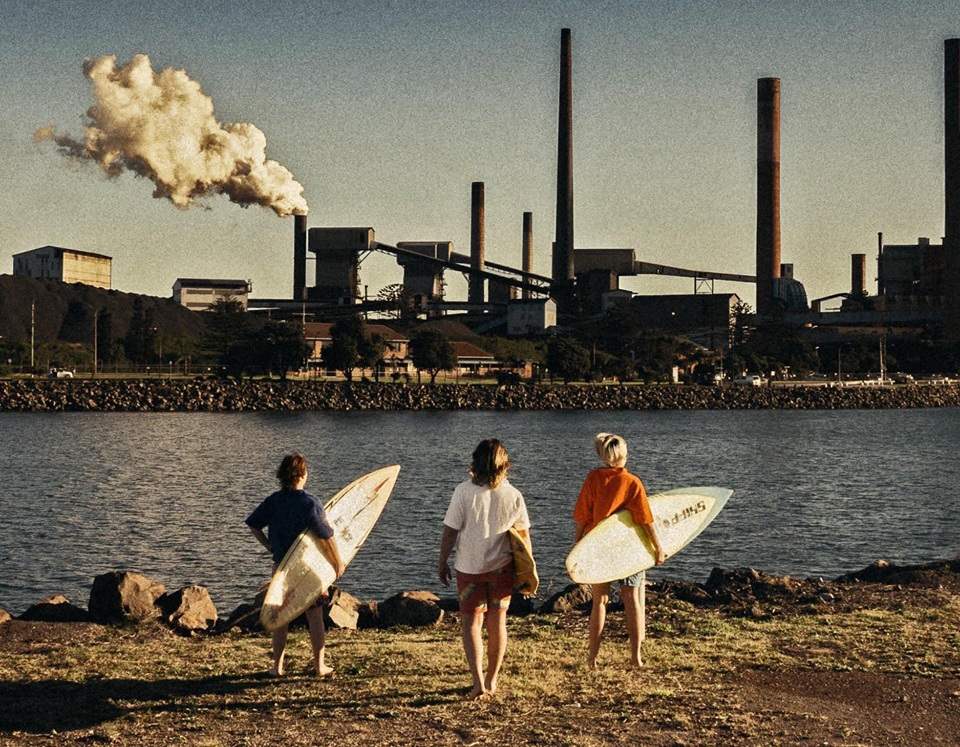
Bluescope’s Port Kembla steelworks is the biggest of its kind in Australia and is a major emitter of CO2. Up to nine percent of global greenhouse gas emissions come from the steel industry. The steel sector is failing to reduce emissions at the rate required to keep global warming below 2°C. In fact, last year emissions from Australian steel production rose by 10 per cent. Bluescope has previously stated it could save one million tons of greenhouse gases a year through power generation from waste gases at Port Kembla via ‘cogeneration’. Currently, the decarbonisation potential of the Port Kembla steel making process is limited due to the integral role of coal in this process, which can only be partially replaced by lower carbon fuel sources. Yet, rather than taking-up this challenge, Bluescope is investing in its North Star plant in the United States. In 2015, Bluescope delivered an ultimatum to local unions, demanding $200 million in cost savings, of which $60 million had to come from workers, or the steelworks would be shut down. The unions were told, ‘it’s up to you to save the plant’ — and if they didn’t, five thousand people’s direct and ten thousand people’s indirect jobs would go and $3 billion would be lost from the region’s economy.
In response, steelworkers, the union movement, the ALP and the Greens demanded that the Federal and State Governments defend the steel industry, by requiring that Australian-made steel be used in all state and federal government infrastructure. Local steelworkers eventually agreed to savage cuts to their jobs, pays, and working conditions, to help BlueScope save $40 million. The New South Wales government also gave Bluescope a $60 million reduction in tax payments and the company saved a further $100 million through what it termed “worker flexibility”. Taken together, these savings provided the $200 million BlueScope were demanding to keep the steelworks open. Shortly after, BlueScope announced a six-month profit of $180 million and the full acquisition of North Star Steel for $1 billion. According to BlueScope’s major shareholder, Perpetual Investments, the decision to keep Port Kembla open was only an “interim measure”, before eventual closure in the next few years.
When asked about their future plans for Port Kembla, Bluescope management said they would be making a decision about the steelwork’s future in a few years, when they have to decide on whether to reline the blast furnace. As has occurred for the past 40 years, the company expects the local community to put pressure on the Government to subsidise their operations. Yet, globally there is over-production of steel and global competition in the steel market is part of a rapacious ‘race to the bottom’. This involves ramping-up pressure on communities, workers, and governments to see who is willing to sacrifice the most in terms of wages, working/ living conditions, and environment. Multinational corporations seek to play one part of the world off against another, dividing workers, and communities in order to maintain their rule. Local fossil fuel corporations and their political lackeys also try to turn us against each other and will blame us for any loss of jobs/incomes. Instead, as we face widespread and growing crises, those seeking to accommodate the wealth and power of corporations should be asked – How low must we bow down to their intensification of exploitation and environmental destruction? How much of our lives and how much of our futures should we sacrifice to maintain their profits? – These concerns must be swept aside by exerting community control over resources, production, and consumption, in order to drive the radical changes required to respond to climate change with a truly just transition.
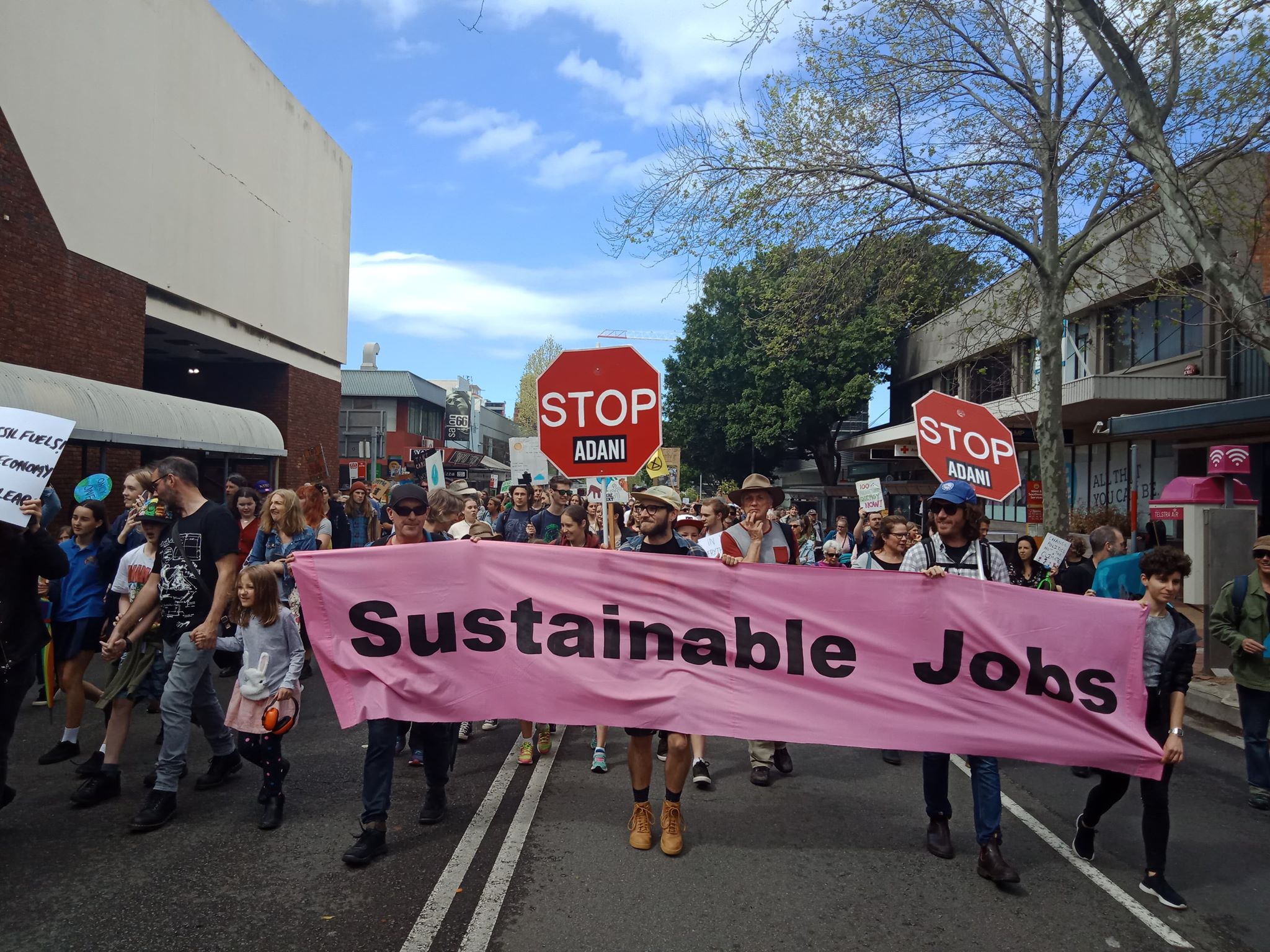
Climate barbarism, disaster communism and solidarity adaptation
In recent years, the mainstream debate concerning the climate crisis has been framed primarily in terms of mitigation and adaption. Mitigation is the idea of preventing climate change in the interests of preserving the existing mode of production and accompanying social relations. Energy sources might be substituted, and green technologies developed to replace non-green ones, but ultimately mitigation rests on the assumption that the climate crisis can be averted based on the existing capitalist and colonial systems. Arguments about mitigation therefore tend to take for granted that the current political, economic and social arrangements can continue largely as normal. While the issue of climate crisis has shifted from one of debate to accepted norm, or in other words to a general acknowledgement that the possibility of complete mitigation has passed, the implications of this shift, and the fundamental transformations that follow from it, are often left unstated.
As Naomi Klein recently argued, the ruling class is not in fact denying the climate crisis, but rather implementing measures of adaptation on their terms. Indeed, as Klein says “they’re building border walls. They are adapting through this unleashing of white supremacist ideology and creating the intellectual rationale for allowing millions of people to die…that’s…climate barbarism.” However, adaptation is not only taking shape as climate barbarism, there is a counter-power within the politics of adaptation currently shaping the possibilities for the future, which sees various forms of solidarity adaptation and adaptation from below opening new political horizons.
Solidarity adaptation, or adaptation from below is a way of naming the tangible ways people develop relationships of support and solidarity to sustain and amplify not only resistance to climate barbarism, but also for creating spaces in which new forms of sociality can thrive. Solidarity adaptation is the organisation of resources and relationships that meet existing material needs of those on the frontlines of the climate crisis, those living through or displaced by drought in communities with no water, those displaced by sea level rises, floods, fires and so on. It is also the organisation of these resources for the extension of collective control and decision making in the hands of those struggling. The challenge of solidarity adaptation is to move from a mechanism of survival to a logic of decolonisation and communisation.
In so-called Australia, current struggles over water, the self-organised collective provisioning of water to towns that have run dry and had water stolen by capital, demonstrate forms of solidarity adaptation that will be fundamental to struggles going forward. Deepening these processes and relations of commonality is one dimension of solidarity adaptation. In response to the daily individual and collective disasters of capitalist society, the desire to help others, to make a difference, to aid recovery and healing, to share and care, to make life more wonderful, and to construct a better world together, already inspires a vast amount of powerful social action. When disasters hit, people responding in caring ways reach out to each other, take direct action, re-configure spaces and relationships, get to know each other, and develop more democratic, loving, and egalitarian social processes. These horizontal network forms of organising, a type of disaster communism which replaces the usual corporate and state forms, are shown not just to be more inclusive and democratic, but more efficient and more productive. Skills or attributes that are often under-valued; healing, caring, flexibility, self-sufficiency, counselling, local knowledge and community connections are suddenly understood as crucial. As people come closer to each other they are better able to share resources, knowledges, ways of doing and experiences, enriching lives and communities, opening-up new horizons for creativity, and further deepening interactions. This is a process of building the foundations that can better weather the coming storms.
Grass roots planning for disasters involves a wide variety of responses, such as moves towards energy democracy, emergency preparedness, the creation of social hubs/meeting places, and transforming urban infrastructures in ways that challenge inequalities and deepen public participation. The more we help each other and meet one another’s needs, the greater our likelihood of survival. We are the most important alternative power source and our community’s resiliency is a product of our social connectedness and organisational abilities. Wollongong’s adaptation to climate, environmental, and extinction crises is already demonstrating how we can overcome isolation, alienation, atomisation, and despair. We are not alone and together we are building a local eco-system of relationships of care – care for each other, for all living things, for the earth.
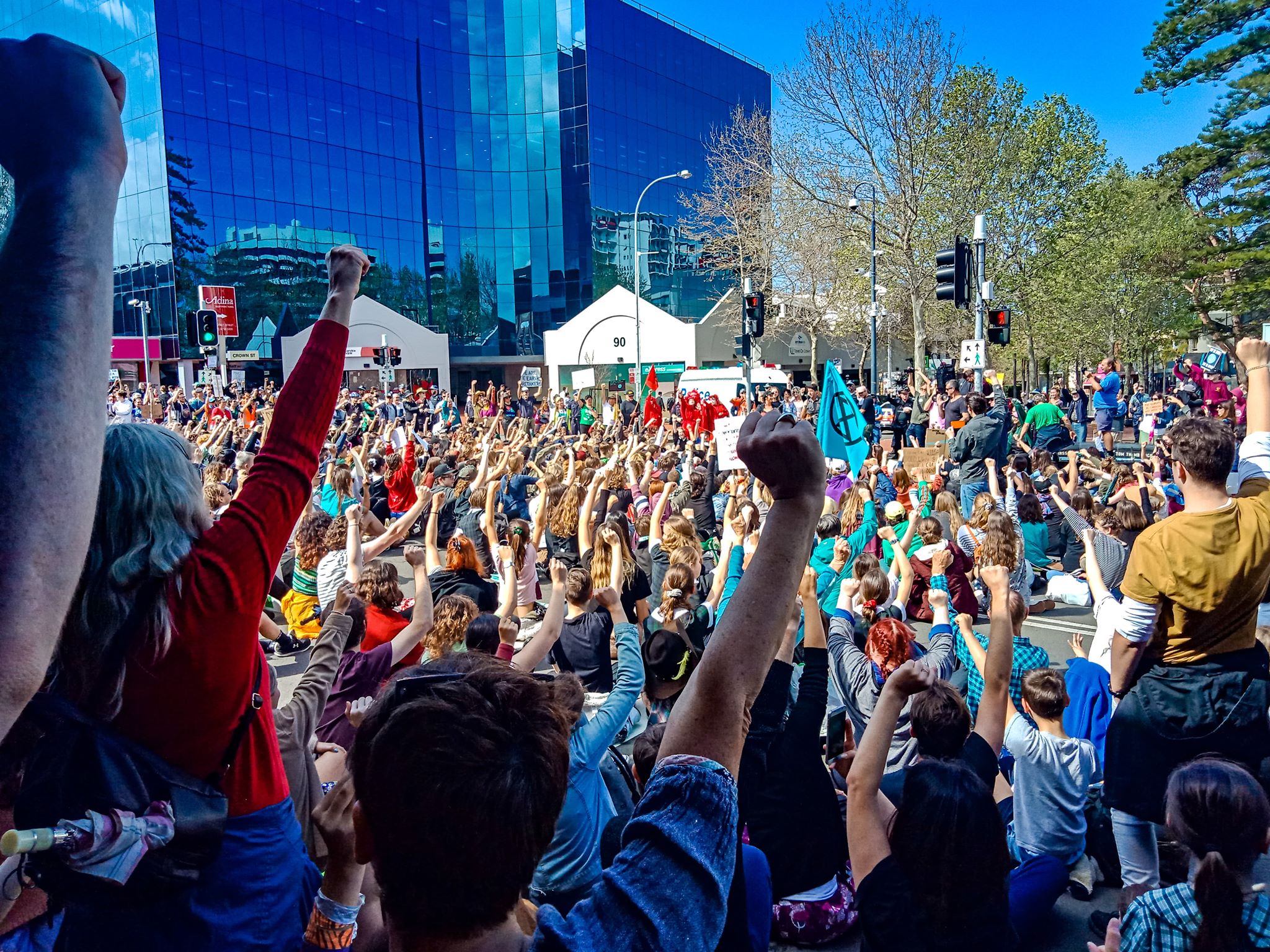
Being the Change: Our Response-ability
During the Wollongong Global Climate Strike, we stopped doing what we usually do; we didn’t go to work, to school, to university, or stay at home. By organising the Strike and by striking we created the freedom to connect, to engage in communal activity, to unleash our imaginations, to figure out for ourselves what to do, how to do it, and organise to get it done. The Climate Strike gave us a glimpse of the utopias that exist within us and our communities every day, but which tend to be under-valued and neglected. Maintaining the Climate Strike, not as an event but as a new way of life, may seem impossible. But taking back our time, our communities, and our relationships – freeing them from of a system heading for destruction – is our real challenge.
We don’t know what technological breakthroughs, large-scale social changes, or ecological feedback loops will shape the next 20 years. But it’s clear that we must prepare for disasters, which to some extent are unavoidable. In the face of environmental, climate, extinction and social crises, we can see more clearly that we’re unable to rely on corporations, governments and bureaucrats, and in response many of us turn to each other for support, building respect, camaraderie, and trust. These are the social relations we can rely on when faced with future crises.
Wollongong is a city with a long radical history of class solidarity and intersectional struggle. The struggles for climate and environmental justice intersect with all other struggles for social and economic justice. Increasingly these struggles must confront the clash between the priorities of political, economic and social elites and those of the vast majority of people. So, we need to build our own power, whilst also holding political institutions, corporations, and governments to account, putting pressure on them by using a range of tactics and strategies. The revolutionary transformation of society we require involves developing our own strength, increasing people’s ability to organise their own lives, as we sweep aside the economic, political, and institutional obstacles standing in our way.
As this post was being finalised, the Illawarra Climate Justice Alliance responded to Greta Thunberg’s announcement of another Global Climate Strike on November 29 by calling a Strike in Wollongong on that date. You can find more details here – https://www.facebook.com/events/414436109105114/
Revolutionary Action
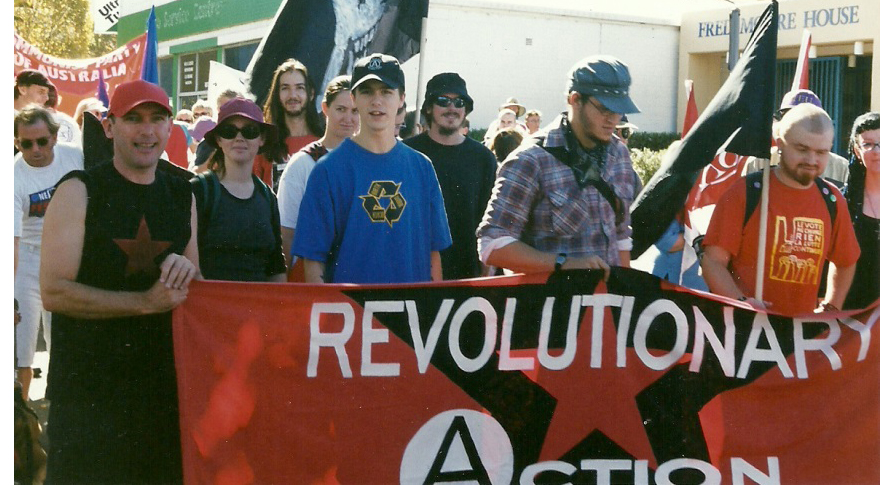
As a founding member of the local political organisation Revolutionary Action (RA), I have created a blog to celebrate the twentieth anniversary of RA’s formation and to present some of the events and texts related to the collective’s history. You can find the RA blog via the link below. Our struggles continue.
Capital and Love
In 2013, I put this article together for the local Love: Art, Ideas, Music, Politics reading group to discuss. I’m posting it now so that it can be included as an accessible source in the forthcoming Love: Art, Ideas, Music, Politics book, to be published next year (2020). More information on the Love book project and other Love group activities can be found here – https://www.facebook.com/love2017.org/
In this article, I will examine some of the ways in which the theories, practices and desires for love are channeled into capitalist production and accumulation, exploring capitalist strategies to suppress, undermine, utilise and exploit the love of the multitude (I use the terms ‘proletariat’ and ‘multitude’ interchangeably, to describe the class that struggles against capital and produces communism. The multitude is brought into existence through collective struggle against capital and for freedom, democracy, peace and love). In some of my other writing I have emphasised the love of the multitude and how it exceeds and escapes capital. I argue that love cannot be measured, valued nor contained by capital and that it is created as a common wealth which composes the proletariat and creates communism.
Love exists only through the affective labour of the multitude and some of my work grapples with the importance and value of affective labour to capital and its significance to the development of communism. In explaining affective labour, Hardt and Negri (2000a: 292 – 293; 2004: 110) have included the “creation and manipulation of affect”; “maternal work”; “service with a smile”; the work of those who care for the earth; producing relationships; and communication and cooperation within the family and the community. They say that affective labour “is best understood by beginning from what feminist analyses of “women’s work” have called “labour in the bodily mode” and that it produces “social networks, forms of community”, as well as feelings “of ease, well-being, satisfaction, excitement, or passion”.
For example, certain lines of feminist inquiry and practice, setting out from an analysis of the gender division of labour, have brought into focus the different forms of affective labour, caring labour, and kin work that have traditionally been defined as women’s work. These studies have clearly demonstrated the ways in which such forms of activity produce social networks and produce society itself. As a result of these efforts, today such value creating practices can and must be recognised as labour (Hardt and Negri: 1994: 8).
Love therefore is a form of affective labour, as it produces the common and subjectivities, “a sense of connectedness or community” (Hardt: 1999: 96) and it can “construct a commonality amongst subjects” and “the commonality of a desire” (Negri: 1999b: 85) and “a new society” (Hardt and Negri: 2004: 352).
Through affective labour, people function both as instruments of capital and live as social beings, affirming themselves and others by actively producing the power of love to satisfy human needs and desires. Affective labour expresses interconnectedness and involves the transaction of goods and services meeting material and emotional needs. Affective labour is undertaken out of empathy, compassion, obligation, affection, affinity and for wages. It reproduces the social relations of capitalism and constructs social relations alternative to those of capital. Much of the multitude’s labour is free of charge, part of an intricate and long-established web of human relationships in which “the production of social relations, human life, social assets and values, is as essential to the survival of most [people] as wage labour” (Donaldson: 2006: 8).
Erich Fromm (1960: 22) relies on the work of Spinoza to explain the difference between active and passive affects. Active affects are products of freedom and agency, whereas passive affects are products of domination and ignorance. For Fromm (1960: 22), love is “the practice of a human power, which can be practiced only in freedom and never as the result of a compulsion. Love is an activity, not a passive affect”. For many (e.g. Dalla Costa: 2008; Finch and Groves: 1983: 3; hooks: 2000a: 183; Ruddick: 1989) love is work, or comes through work. As Sara Ruddick (1989: 49) explains, even the loving relation of mothering is work. This recognition of love as work, as an activity, points to the importance of self-organisation, self-actualisation and self-valorisation. The work of love is crucial to freedom, revolution and the creation of communism. 
The multitude’s acts of love are affective labour, part of the immaterial labour of the multitude. “Love – in the production of affective networks, schemes of cooperation, and social subjectivities – is an economic power” (Hardt and Negri: 2009: 180). Hardt and Negri (2000a: 53) recognise that immaterial labour “occupies an increasingly central position in both the schema of capitalist production and the composition of the multitude”. While continuing to use the term, they realise that immaterial labour is an ambiguous term and that biopolitical labour may be a better way of conceiving of the labour that “creates not only material goods but also relationships and ultimately social life itself” (Hardt and Negri: 2004: 109). For Hardt and Negri, there are both capitalist and communist tendencies to immaterial labour, on the one hand there is the subsumption of life to work for capital and on the other the production of the multitude through networks based on communication, collaboration and affective relationships. Struggles over affective labour intensify the antagonism between labour and capital and the resistance of the multitude to capitalist domination. These struggles increasingly involve attempts by capital to capture the independent networks of co-operation through which the multitude produces communism and love.
When affective labour is waged labour it can be extremely alienating, as what is sold by the wage labourers and commanded by their client and/or boss is the workers’ ability to make human relationships. Capital seeks to control all means of producing social wealth and attempts to exploit all  social cooperation. Capitalism tries to subsume and exploit love and integrate it through commodification and social management while preventing the extension of its communist potentials. Loving relationships have been undermined through the development of property as the basis of human relations and it is important to examine the ways in which the theories, practices and desire for love are channelled into capitalist production and accumulation.
social cooperation. Capitalism tries to subsume and exploit love and integrate it through commodification and social management while preventing the extension of its communist potentials. Loving relationships have been undermined through the development of property as the basis of human relations and it is important to examine the ways in which the theories, practices and desire for love are channelled into capitalist production and accumulation.
Capital has developed sophisticated strategies for suppressing, commodifying, managing and exploiting love. According to Bojesen and Muhr (2008: 79-85), contemporary Human Resource Management “has become subject to a code of love” to ensure emotional commitment from “the passionate self-managing employee”. ‘Care’ for the employee involves encouraging love as a resource that can be subsumed, exploited and consumed by the employer. The company “wants to own you; absorb you, direct you to its needs – all in the name of love”. “Love has become a growing business enterprise” and consultancy firms sell “love packages” teaching companies how to develop a “Loving Life”, “Loving Management” and a “Loving Culture”. Capital increasingly expects an “emphasis and self-reflexivity on social relations, communication and affects” (De Angelis: 2007: 169), policing and directing affective labour to gain a competitive advantage over others.
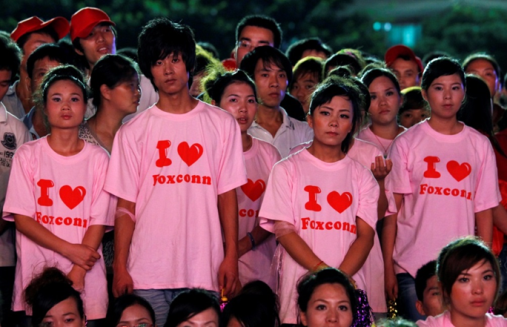
The constitution of affective labour as capital involves the production and management of capitalist subjectivities, the work of self-controlling emotions and feelings, and the use of love as a form of capitalist biopower. The editors of the Australian Institute of Management publication, Love @ Work, propose “serious conversations about love and humanity” to galvanise management and workers by encouraging them “to love their work, love their co-workers and love themselves” (Barker: 2006: viii, 7). In the same publication, management experts discuss: love as “a leadership tool” which can “strengthen the corporate heart, build profits and create social good” (Cairnes: 2006: 19); the importance of workers’ growing “love affair with their jobs”; and how bosses can “seduce their employees to give their hearts and minds to the office” (Fox and Trinca: 2006: 105-106). Fox and Trinca (2006: 116) explain that “organisations co-opt the language of love to bind people to the job and increase productivity”, spruiking “workplace democracy, greater freedom, openness and treating people well”, while disguising the brutal reality of poor working conditions and “more pressure to ratchet up productivity from fewer workers”.
To manage and manipulate relationships capitalist management techniques and instruments aimed at subsuming love intervene in and encroach on the social networks of the multitude. For instance, because social networks are integral to production, the use by workers of social networking tools such as Facebook, Twitter and blogs, is now recognised by many managers as good for business, as an employee’s social network and their affective relationships are potentially valuable to corporations because a person’s social network can be used to sell products and to promote corporate values. Fox and Trinca (2006: 106 and 108) discuss how many, especially young, workers successfully mesh “their nine-to-five activities with their after-work networking and social activities” and “play out elements of their domestic lives” in the workplace, often utilising technology to maintain and develop personal relationships, connections and community. While social networks have a dual potential, as values for capital or values for the multitude, they are often used by capital to police and imprison the multitude’s affective labour, through the creation and management of capitalist subjectivities.

Capital diverts to its advantage love and desires and struggles for love, so as to impose capitalist discipline and decompose the proletariat. Capital carves into the gift economy and utilises peoples’ love for each other to build team work, team solidarity and work morale. Human Resource Management techniques such as Total Quality Management endeavour to totally integrate peoples’ innovative potential and social relationships into capitalist production. Hochschild (2003) shows how companies and institutions manage the feelings and actions of workers, teaching affective labourers to suppress their own feelings and desires and to police the affective labour of others. Capital seeks to control and manage affective labour, throughout the social factory, attempting to elicit love for capital, turning peoples’ capacity for love into an instrument of accumulation, a resource and a power for capital.
Capitalism’s commodification of love is powerful and effective. Within capitalist social relations people are commodities and are encouraged to consider and treat each other as such. “When greedy consumption is the order of the day, dehumanisation becomes acceptable. Then, treating people like objects is not only acceptable but is required behaviour. It’s the culture of exchange, the tyranny of marketplace values” (hooks: 2000a: 115). The use by the mass media and consumer culture of love to sell commodities, has made it appear hollow, as people are encouraged to find emotional satisfaction in private experiences linked to consumption. Capitalism strips love of its best aspects and repackages it as a set of product choices. Advertising “turns lovers into things and things into lovers” not only promising that if you “buy this you will be loved” but “buy this and it will love you” (Kilbourne: 1999: 27, 81). As capitalist culture tries to divide and separate the multitude, it represents love as centred on ownership and control, teaching people to treat each other as possessions, commodities and competitors. In this way, capitalism tries to retard and detach loving social connections, to limit people’s desires to those that serve capital. 
As capitalism works to subsume every part of people’s lives, love has clearly become an important target. In his book, Lovemarks, Kevin Roberts (2004: 36), the CEO of leading global advertising company Saatchi and Saatchi, argues that “[t]he social fabric is spread more thinly than ever. People are looking for new, emotional connections. They are looking for what they can love”. He (Roberts: 2004: 74) understands that “[l]ove is about action” and this means the corporations he works for require “meaningful” relationships that they foster by embracing consumers and communities and by “inspiring love”. This corporate strategy hopes to cultivate a close emotional connection between consumers and brands. Roberts and the companies that employ him believe that if consumers can be convinced that corporations are interested in love, and that corporations care about them, they will reciprocate and love corporations and their products. 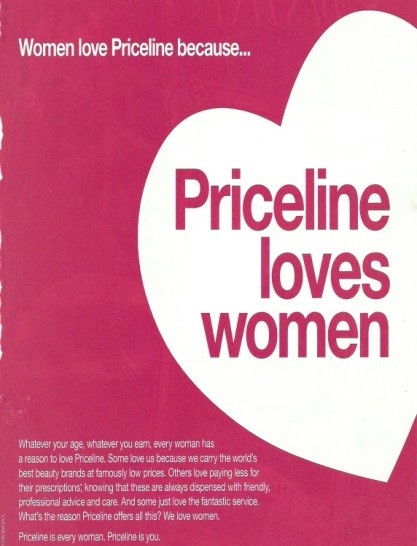
Advertising is often considered as motivational, getting us to work harder to be able to afford the commodities and lifestyles advertised. Many people’s lives are dominated by consumption, debt and working harder to buy more, leading to rapidly rising levels of stress, anxiety and depression. None-the-less, sociological surveys consistently show that, rather than commodities, what people value most are their social relationships with family, friends, lovers and peers. Attempting to subsume love, capital endeavours to capture people’s imaginations and to exploit their desires. As capitalism fosters lovelessness, it offers to satisfy the desire for love with commodities and alienated relationships, producing capitalist subjectivities for capitalist commodities and capitalist commodities for capitalist subjectivities. Discussing the use in advertising of “the general fear of not being loved”, Erich Fromm (1973) explains how commodities are marketed as a way of gaining love; how, by the purchase of some product, consumers will be able to be loved; that love is dependent on a commodity; and that it is “not human power, human effort, not being” but commodities, that create love. When love becomes a commodity or the promise of a commodity, the desire for love is channelled into consumerism. The threat of love to capital is diffused and the meaning of love is reduced to crass commercialism. On one hand, people are swamped by images of perfect couples and fed the idea that someone will come to save them with love and make everything all right. On the other, they are constantly reminded that relationships have a use-by-date. Capitalism uses built in obsolescence, a short limit on the life of commodities, to boost consumption and profits. In the same way, people’s relationships are marketed, and often perceived, as another accessory with a short-term use value, based on self-gratification, performance and competition. 

bell hooks (2000a: xxvii) argues that “lovelessness is more common than love” and explores lovelessness as both a consequence and a cause of family breakdown and dysfunction, abuse, addiction, loneliness, isolation, rampant greed, consumerism and narcissism. She explains that “[k]eeping people in a constant state of lack, in perpetual desire, strengthens the marketplace economy. Lovelessness is a boon to consumerism” (hooks: 2000a: 47). hooks agrees with Fromm (1960: 83) that in capitalist society love is relatively rare, “that its place is taken by a number of forms of pseudo-love which are in reality so many forms of the disintegration of love”. However, while it is clear that the commodification of labour and the suppression of freely associated labour corrupts love and suppresses the desires of the multitude for more than material possessions, work for capital and alienated relationships, the multitude is much more than the common experience of capitalist subjectivities. Capitalism poisons lives with a concentration on ownership, consumption and competition, undermining loving relationships. But, alongside the system’s violence and destruction, exploitation and oppression, there are continuing struggles over who has power over social relations, social cooperation and labour, over whether love is destroyed, suppressed or harnessed to strengthen the power of capital or used to build and extend proletarian power.

In his essay, For Love or Money, Michael Hardt (2011) considers some of Marx’s views on love in relation to money and property. In his Economic and Political Manuscripts, Marx argues that money corrupts social relations by displacing being with having. Money “distracts us from our being in society and the world but also and more importantly . . . causes us to neglect the development of our senses and our powers to create social bonds.” Posing love on the same level as money, Marx explores how the exchange of money distorts our relationships to each other and the world, where-as “love can be exchanged only for love” in both intimate human relations and in organising society (Hardt: 2011: 679). However, Hardt criticises Marx’s comparison of love and money as it “diminishes the power of love . . . insofar as it leads Marx to consider love only in terms of exchange.” “Considering love only in terms of exchange undermines an understanding of love as a power that generates social bonds. What is most important about love . . . is not what it can be traded for, but what it can do and how it can transform us.” 
Hardt (2011: 681) prefers Marx’s comparison of love and property, where “Love . . . is not merely set free by the abolition of private property. It must be created anew, and this new love must fill the social role that property does now. It must have the power . . . to generate social bonds and organise social relationships.” As Hardt explains, “Communism can thus be conceived as the creation of a new love . . . by increasing our power to create and maintain relations with each other and the world.” While I agree with Hardt regarding Marx’s comparison of love and property, their emphasis of ‘new love’ seems to suggest that communism/love does not yet exist. This neglects previous and contemporary manifestations of communism/love, overestimating the power of capital and underestimating the continuity of proletarian power.
Hardt, Negri and Marx put forward contradictory views in relation to love and its subsumption by capital. Yet, at times they recognise that the proletariat’s love exceeds and escapes capitalist capture. In discussing the Paris Commune, Marx (1977a: 241) explains that capital is incapable of destroying the “international bond” of the proletariat and that “its martyrs are enshrined in the great heart of the working class”. Clashes around affective labour show that while capitalist subsumption can capture some of the value created by love, this is contested, for love is outside capital and cannot be completely subsumed. The dynamism of proletarian power is inseparable from the power of the mind and body to affect and be affected, to love and be loved. Capital cannot capture this capacity to love and be loved because it is a product of communist social relations, re/produced and manifested outside capital.
The multitude produces affective relationships which capital attempts to subsume. Since love is an unrecuperable autonomous excess that continually threatens capital, capitalism is forced by this proletarian power to advance strategies to subsume love and decompose the loving movements of the multitude. Capital tries to use love to reproduce capital but the multitude’s love always exceeds capital and produces communism, obstructing capitalist accumulation. The love of the multitude re/produces alternative qualities of labour, labours of love, that capital is unable to subsume. As Emma Goldman (1911) pointed out when discussing free love, “all the millions in the world have failed to buy love . . . all the power on earth has been unable to subdue love . . . [and all the] armies could not conquer love”. However, capitalist accumulation can exploit love and destroy love. A constant antagonism exists between capitalist valorisation and proletarian self-valorisation arising from the multitude’s needs and desires for caring and nurturing and the system’s strategies to destroy, suppress, capture, control and exploit these needs and desires. Capital relies on the sociality of labour, on loving relations, while it simultaneously uses violence and repression to impose commodification and exploitation, trying to protect itself from communism.
Love is a communist power and capitalism is faced with the problem of suppressing and subsuming it, while managing and relying on it. Although capital recognises the importance of the value produced outside of the wage relation, and how profitable its capture can be, the caring practices of the wage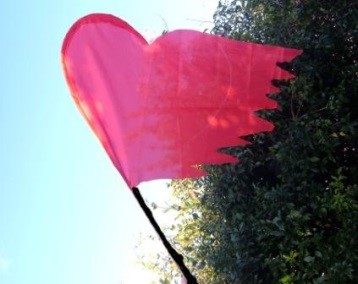 d and unwaged remain undervalued. This is because love is beyond capitalist measure and affective labour cannot be adequately valued by capital. The strategies and techniques used by capital to capture love cannot negate the positive effects of the multitude’s labour nor can capital erase the revolutionary potential of the power of love. Capital relies on the limitation and channelling of the affective labour of the multitude, but it cannot completely control or smother love. The multitude is so powerful that capital depends on harnessing its love and the stifling of this love deepens systemic crisis.
d and unwaged remain undervalued. This is because love is beyond capitalist measure and affective labour cannot be adequately valued by capital. The strategies and techniques used by capital to capture love cannot negate the positive effects of the multitude’s labour nor can capital erase the revolutionary potential of the power of love. Capital relies on the limitation and channelling of the affective labour of the multitude, but it cannot completely control or smother love. The multitude is so powerful that capital depends on harnessing its love and the stifling of this love deepens systemic crisis.
Continual efforts by capital to break the collaboration, solidarity and cooperation of the multitude are integral to the counter-revolution against the common, loving subjectivities and the mobilisation of self-valorised labour. Businesses and governments undermine the basis of love and utilise it for the purpose of gaining profit through exploitation. The imposition of capitalist value through violence and the ruthless economy of sweatshops, digital assembly lines, relocations, short-term contracts and managed anxiety, erode and block social connections and relationships. At the same time, the reliance of capital on the love of the multitude, for its own re/production, mystifies and disguises subordination, exploitation and the creation of ‘pseudo-love’.

Many of the transformations in work practices, including intensification, casualisation, precarity, flexibility, nomadism and speed-ups, have detrimentally affected the capacity of the multitude to engage in affective labour for capital and the multitude. People who become physically and emotionally distanced from each other, often don’t have the time, money, resources and social support to sustain strong connections and loving relationships. Instead lovelessness, competition, isolation, estrangement, stress, individual and social breakdowns erode the basis of love and impede the work of love. Capital consumes affective labour, driving social activity through alienation, commodification, acquisition, consumption and self-indulgence. It promotes a selfish culture in which things matter more than people and where the passion to connect is replaced by the passion to possess. In the process, as the demand for affective labour increases, capital actually undermines the ability of people to re/produce this labour.
Social re/production increasingly comes up against the destructive praxes of capitalism. Capitalism is anti-love, constantly and violently erecting barriers and obstacles to love. Capital erodes the social fabric of love which it requires for social re/production and cooperation, violently destroying social relationships by incessantly producing poverty, hunger, war, the destruction of people, communities and the environment. This systemic assault atomises the social networks of the multitude and separates relationships, families and friendships along the lines of gender, ethnicity, age, sexuality, religion, nationality and culture. As Shiva (1992: 8-9) has noted
Integration as understood by global capitalist patriarchy is leading to disintegration because it is generating economic, social and cultural insecurities faster than people can identify the roots of these insecurities. Feeling the besieged ‘other’ in the global playing field of the market, and not being able to identify that field, members of diverse communities turn against each other, identifying their neighbours as the ‘other’ that poses a threat to their well-being and survival.
Capitalist labour often involves violence to the psyche as well as to the body and for many millions this work is little more than a life sentence or a living death. Still, researchers like Hochschild (2003) show how people resist, subvert, refuse and rebel against attempts to limit and manage their love and to fuse them with capital. She explains that when capital uses and sells acts of love, these acts are in fact often pretence; not genuine loving and caring ‘from the heart’, but acting. In order to reclaim the managed heart, people produce inventive and often invisible ways to avoid, resist and subvert efforts to capture and control them. Instead they find ways of self-organising and mobilising their love against capital and its state forms. Capital continues to try to pull affective labour into its domain but the proletariat powerfully resists by deploying various forms of work refusal and self-valorisation as loving defences against capitalist exploitation and accumulation. These human strikes, where the multitude withdraws affective labour from capital, entail both an individual and a collective rupture with capital. They build relations of commonality and praxes that construct communism through the self-organisation of love.
Nick Southall
Sources
Barker, C., 2006, ‘Preface’, in Barker, C. and Payne, A. (eds.), Love @ Work: How Loyalty, Humanity, Spirituality, Inspiration, Communication and Intimacy Affect Business and the Workplace, Wrightbooks, Queensland, pp. vii-ix.
Bojesen, A., and Muhr, S., 2008, ‘In the Name of Love: Let’s Remember Desire’, ephemera, Volume 8, Number 1, pp.79-93.
Cairnes, M., 2006, ‘Returning Love to the Corporate Heart’, in Barker, C. and Payne, A. (eds.), 2006, Love @ Work: How Loyalty, Humanity, Spirituality, Inspiration, Communication and Intimacy Affect Business and the Workplace, Wrightbooks, Queensland, pp.15-44.
Dalla Costa, M., 2008, The Work of Love: Unpaid Housework, Poverty and Sexual Violence at the Dawn of the 21st Century, Autonomedia, New York.
De Angelis. M., 2007, The Beginning of History: Value Struggles and Global Capital, Pluto Press, London.
Donaldson, M., 2006, ‘The Working Class’, Class: History, Formations and Conceptualisations Workshop, University of Wollongong, Wollongong.
Finch, J. and Groves, D. (eds.), 1983, A Labour of Love: Women, Work and Caring, Routledge and Kegan Paul, London.
Fox, C. and Trinca, H., 2006, ‘Still Better Than Sex: Loving Our Work More Than Ever’, in Barker, C. and Payne, A. (eds.), Love @ Work: How Loyalty, Humanity, Spirituality, Inspiration, Communication and Intimacy Affect Business and the Workplace, Wrightbooks, Queensland, pp. 103–120.
Fromm, E., 1960, The Art of Loving, Allen and Unwin, London.
Fromm, E., 1973, ‘You and the Commercial’, CBS News, April 26.
Goldman, E., 1911, Marriage and Love, Mother Earth Publishing, New York.
Hardt, M., 1999, ‘Affective Labour’, Boundary 2, Volume 26, Number 2, pp. 89-100.
Hardt, M. and Negri, A., 1994, Labor of Dionysus: A Critique of the State-Form, University of Minnesota Press, Minneapolis.
Hardt, M. and Negri, A., 2000a, Empire, Harvard University Press, Cambridge.
Hardt, M. and Negri, A., 2004, Multitude: War and Democracy in the Age of Empire, Penguin Press, New York.
Hardt, M. and Negri, A., 2009, Commonwealth, Harvard University Press, Massachusetts.
Hardt, M., 2011, ‘For Love or Money’, Cultural Anthropology, Volume 26, Issue 4, pp. 676 – 682.
Hochschild, A., 2003, The Managed Heart: Commercialisation of Human Feeling, University of California Press, Berkeley.
hooks, b., 2000a, All About Love: New Visions, HarperCollins, New York.
Kilbourne, J., 1999, Can’t Buy My Love: How Advertising Changes the Way We Think and Feel, Simon and Schuster, New York.
Marx, K., 1977a, ‘The Civil War in France’, in Karl Marx and Fredrick Engels Selected Works, Volume Two, Progress Publishers, Moscow, pp. 172-244.
Negri, A., 1999b, ‘Value and Effect’, Boundary 2, Volume 26, Number 2, pp. 77-88.
Roberts, K., 2004, Lovemarks: the Future Beyond Brands, Murdoch Books, Sydney.
Ruddick, S., 1989, Maternal Thinking: Toward a Politics of Peace, Beacon Press, Boston.
Shiva, V., 1992, ‘Women, Ecology and Health: Rebuilding Connections’, Development Dialogue, Available URL: http://www.dhf.uu.se/pdffiler/92_1_2/92_1-2_2.pdf ,
Gong Commune ‘Firestarter’ Talk
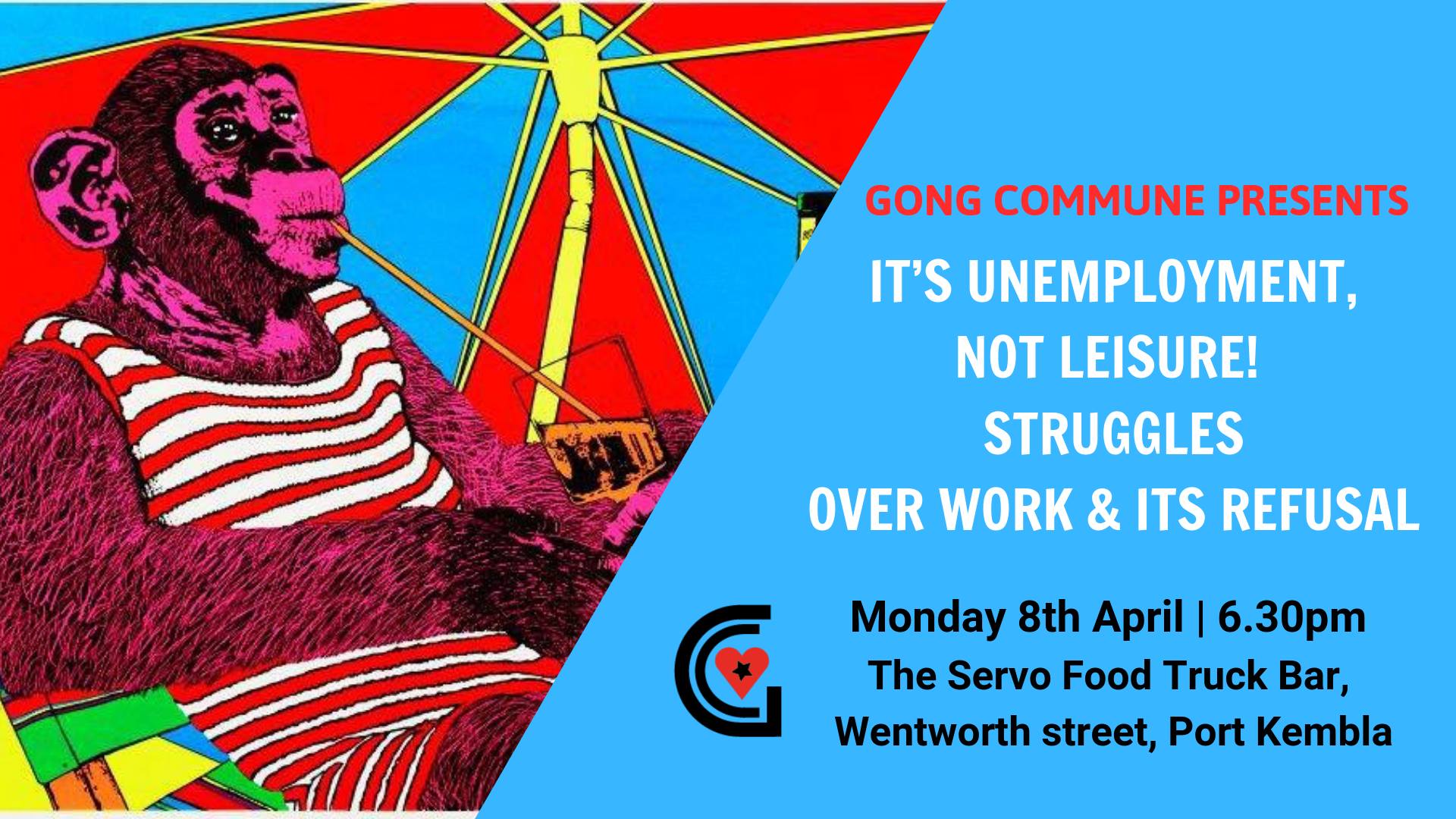
On Monday, April 8, 2019, the second monthly event of the Gong Commune was an open discussion about the many challenges of work and unemployment and what we can do to address them. As part of the discussion of unemployed workers struggles, anti-poverty campaigns, over-work, under-employment, casual, flexible, and gig work, the refusal and radical transformation of work, I gave a five minute ‘fire starter’ response to the question – What are the major issues related to work in Wollongong and more broadly?
It is often unclear when we’re at work and when we’re not at work, when we’re working and when we’re not working. The lack of clear demarcation lines between ‘workplaces’ and ‘non-workplaces’, between ‘work times’ and ‘non-work times’, and between ‘workers’ and ‘non-workers’ throws into question many assumptions about work and which issues are related to it. In Wollongong, traditional workplaces, which used to offer employment security, are now precarious. At the steelworks workers have made huge sacrifices, including wage cuts, the erosion of working conditions, and limits on industrial action in a bid to save their jobs. Yet company threats to shut the place down continue, even though they’re making huge profits. At the same time, struggles over jobs and conditions in the local coal industry often pivot around that industry’s future. Meanwhile the education, hospitality and service sectors have become the major employers – with work more focused on people’s health, learning, and personal needs. Here worker’s ability to actually serve, teach or care is constantly being ground down. This situation has sparked important local campaigns against exploitation of students and migrants in hospitality, for better nurse and midwife ratios, and successful strike action at the university. At the same time, the city has a growing security and military industrial complex involving the local education and manufacturing industries – with increasing money going to policing and war. As part of the rise of authoritarianism, anti-union and anti-strike laws curtail our ability to take collective action over work & welfare issues and our lives, our work and activities, are increasingly monitored, micro-managed, regulated, and manipulated.
Unemployment in Wollongong is higher than the national average. Yet, if you work 3 hours per week you’re considered employed and not counted as unemployed. And if you receive unemployment benefits you’re expected to be ‘Job Active’ and must pass the government’s ‘Activities Test’. It’s hard work being unemployed and this work is worth more than a billion dollars a year for the job agencies imposing strict activity compliance & punishments. Social control of the jobless is both incredibly profitable and very important for those scared of the collectively organised power of angry poor people. The major political parties deliberately punish the poor by cutting their incomes – forcing them into deeper poverty. At the same time, Work for the Dole schemes establish a “reserve army” of vulnerable workers, forced to work for no pay and lacking basic rights. These forms of discipline compel the jobless to serve as a both a danger and a warning to those in waged work, helping to maintain a climate of fear which stifles workers’ struggles.
Job agencies are part of a network of labour companies organising casualisation, contracting and self-employment, attacking wages and conditions, and helping to undermine workers abilities to collectively organise. The imposition of widespread overwork and employment vulnerability creates financial, psychological, physical and other problems. More people are joining the ranks of the working poor, while many of those in waged work are working longer hours and for more years of their lives, as part of an increasingly flexible, mobile and casual workforce. To endure such conditions thousands of Wollongong workers also spend hours commuting to and from Sydney.
The working poor includes both employed and unemployed workers on poverty level incomes. There has been no real rise in wages for five years and it is now 25 years since Newstart was increased. The bosses and the governments that serve them are constantly trying to drive down the cost of our labour – making sure we receive less money and less support for the time we spend working – whether we’re employed or unemployed. Employed and unemployed workers are victims of wage theft and time theft – with the quality of our lives and the time of our lives being stolen by the bosses. Workers’ desires for a better life are expressed in their recognition that waged work is undermining social relationships, in concerns about the ‘quality of life’, and struggles over ‘leisure, family and work time’. The uneven distribution of paid work means that while large numbers of people are ‘underemployed’ a significant proportion of waged workers want less waged work, even if this involves a loss of income. Another issue that employed and unemployed workers have in common is resistance to and refusal of crap jobs, shit work and pointless work. Some people are lucky enough to have good jobs doing what they enjoy. But many of us find our paid jobs less and less fulfilling. Working for a boss or a bureaucracy, competing with others in a ruthless struggle to ‘get ahead’, undermines our ability to do what we really care about, leaving too little time or energy for what is most important – our own work – where we decide what is valuable and worth doing.
Wollongong is full of talented artists, musicians, poets and writers, people caring for friends, family members, their neighbours, communities, and environments, for little, if any, financial reward. They are involved in cultural activities, social movements, social justice campaigns, community groups, civic and leisure activities. Importantly, those who want to build a different world, now and in the future, are already constructing new worlds here in the Gong, with alternative forms of production, distribution and consumption. None-the-less, there’s a desperate need for more solidarity and the self-organisation of unemployed people, precarious workers, and all workers, to increase our social power, to ensure we’re not a threat to other workers, and to support each other in altering the social relations in our communities and ‘workplaces’, so our personal and mutual needs can be addressed.
